-
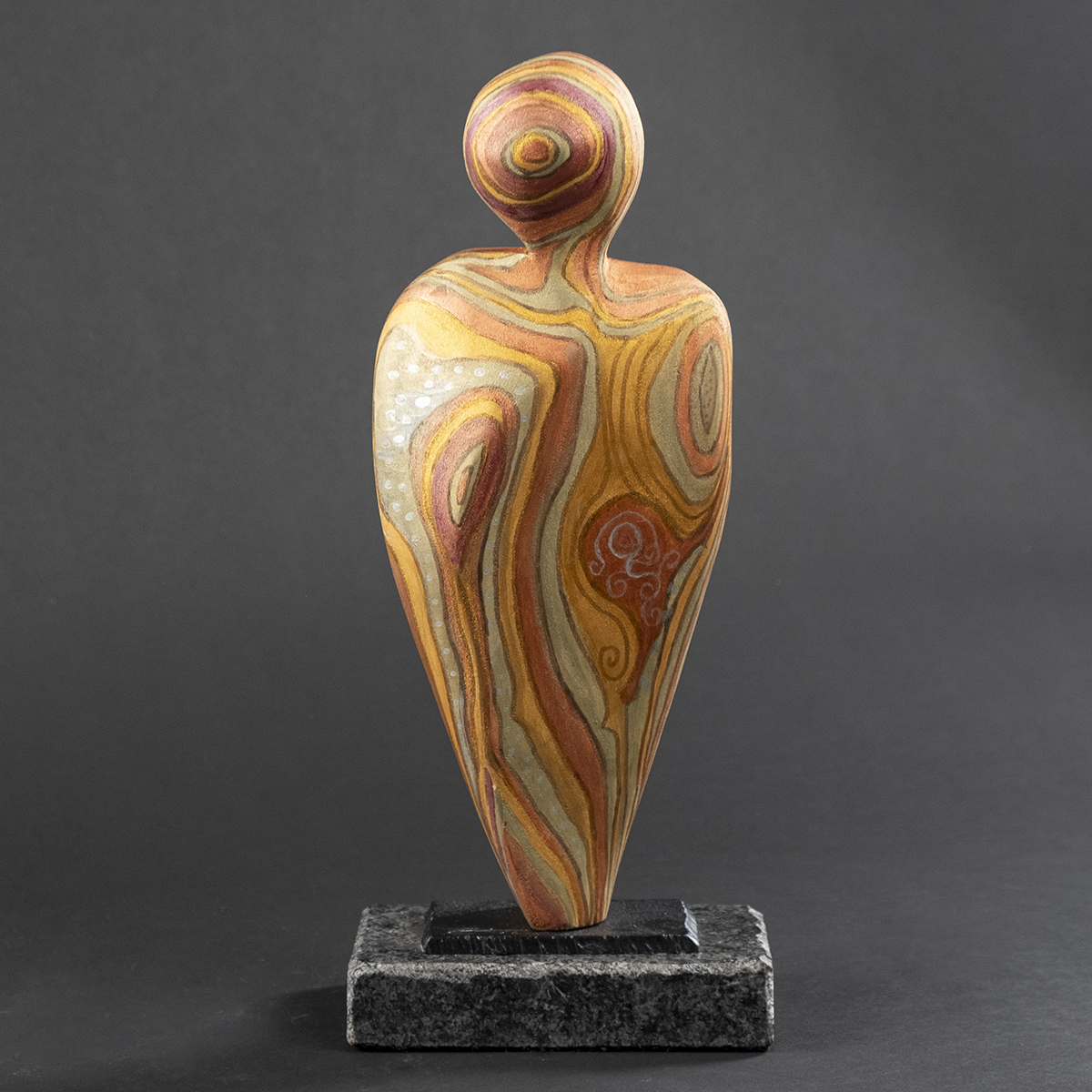 Dawn Awakens the Star PeopleWood, Paint, Steel, Granite Base
Dawn Awakens the Star PeopleWood, Paint, Steel, Granite Base- 14.5"h
- 6"w
- 5"d
$1,200 -
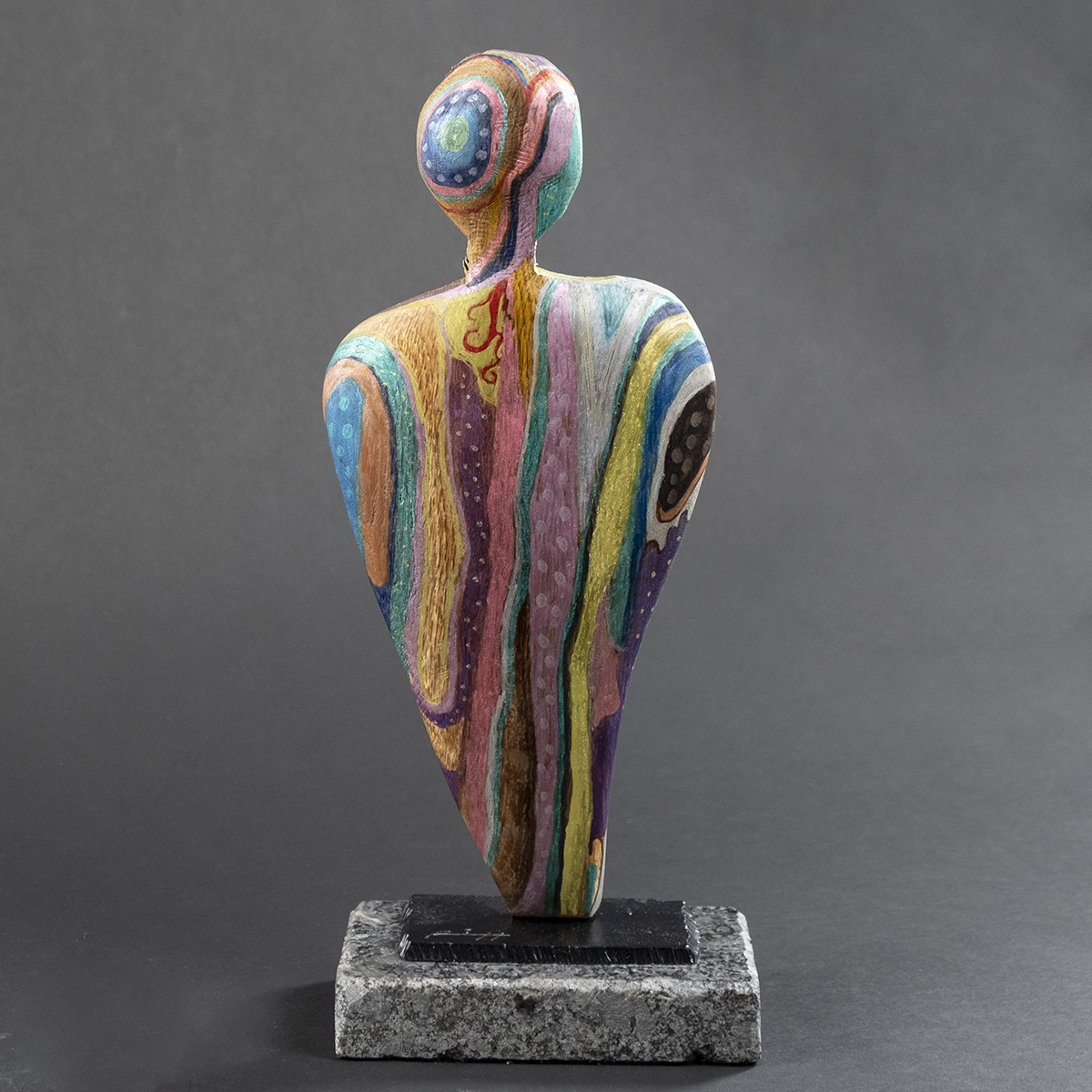 Star Person Looking Through the BluePainted Wood, Granite Base, Metal
Star Person Looking Through the BluePainted Wood, Granite Base, Metal- 14.5"h
- 6"w
- 4"d
$1,200 -
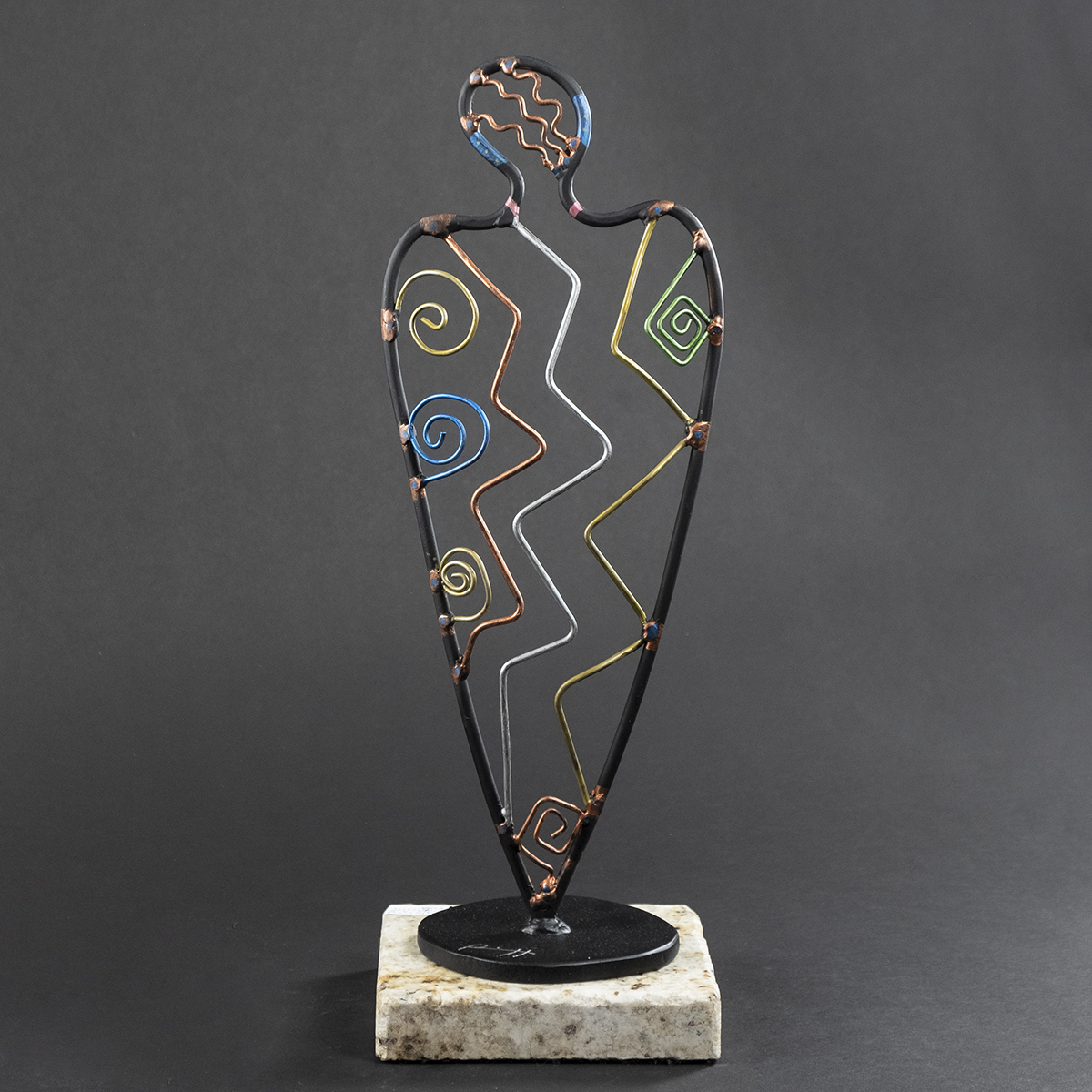 Pretty Woman in Her New OutfitPainted Metal, Granite Base
Pretty Woman in Her New OutfitPainted Metal, Granite Base- 17.5"h
- 5.5"w
- 6"d
$2,000 -
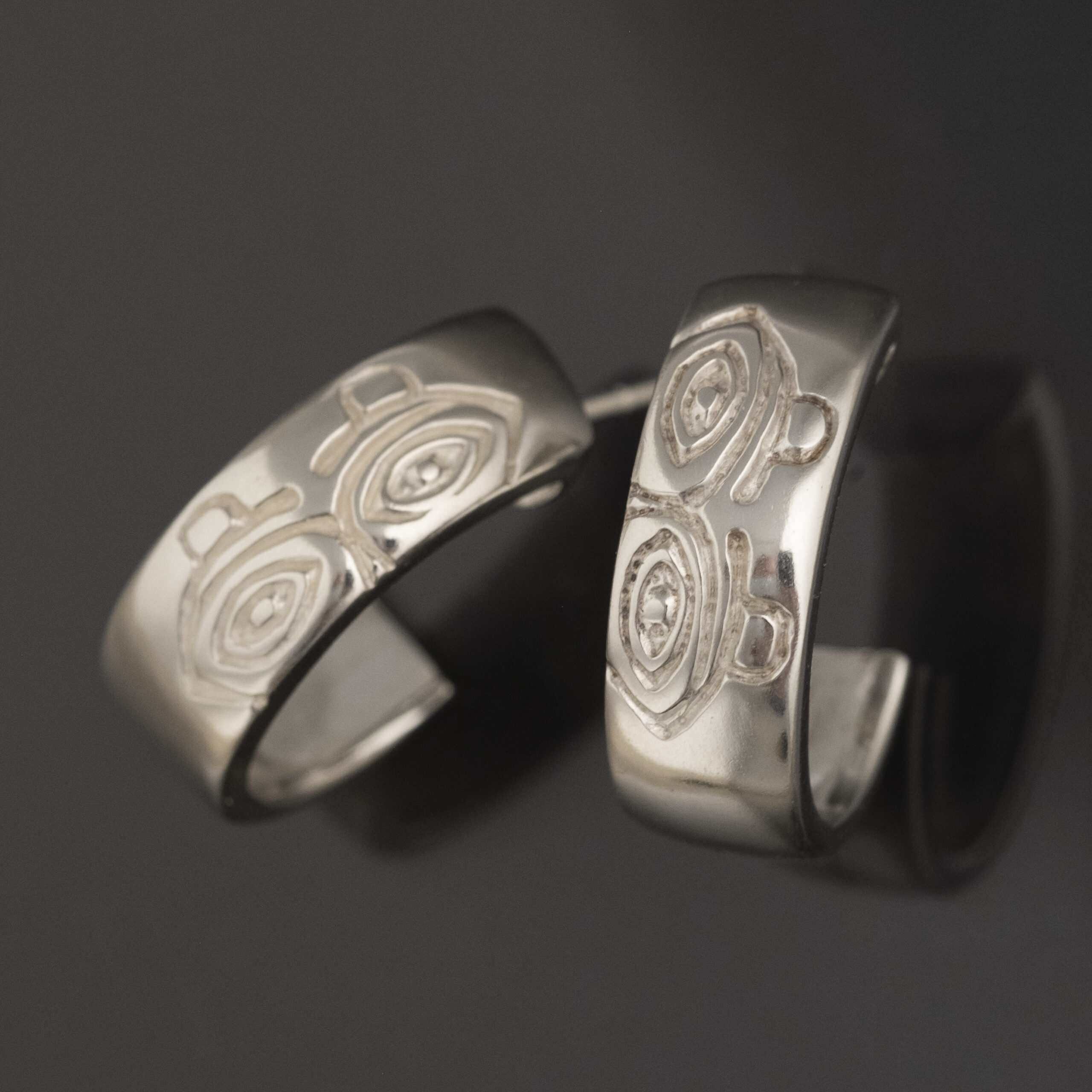 She Who Watches Hoop EarringsSterling Silver$200
She Who Watches Hoop EarringsSterling Silver$200 -
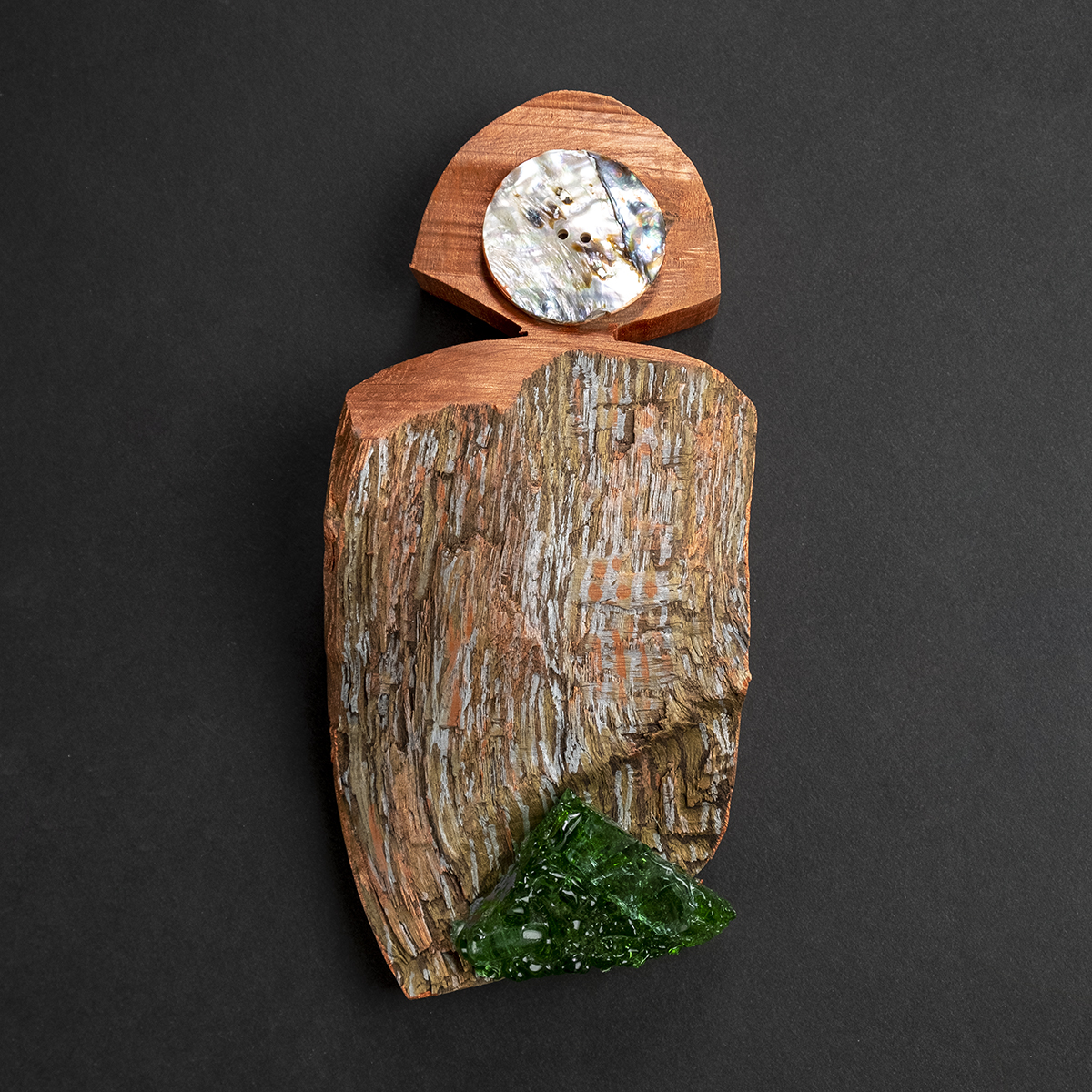 Star Person Feeling the Rawness of NatureWood, Paint, Abalone Shell, Glass
Star Person Feeling the Rawness of NatureWood, Paint, Abalone Shell, Glass- 8.75"h
- 4.25"w
- 2.75"d
$1,200 -
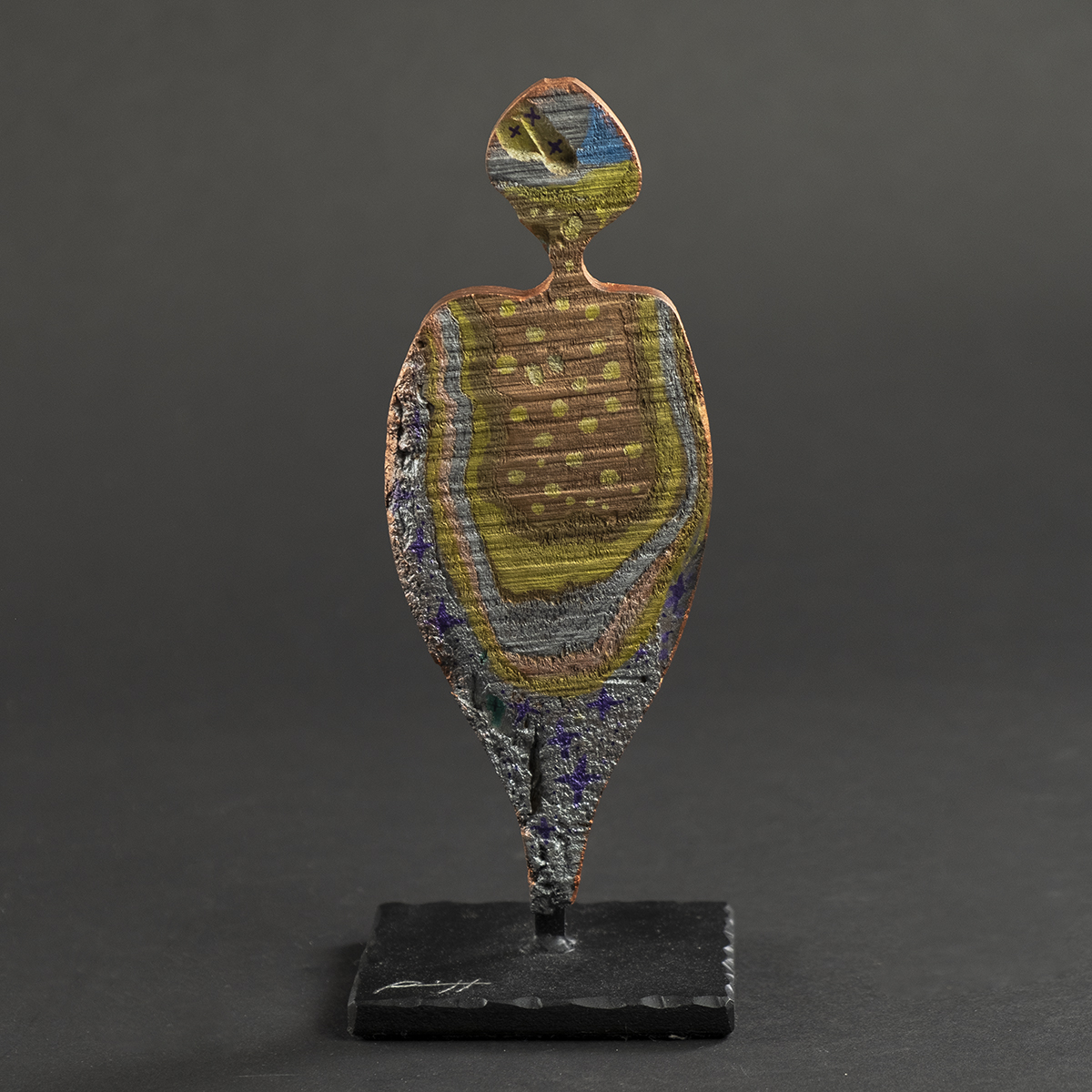 Star PersonPainted Wood, Metal
Star PersonPainted Wood, Metal- 9.5"h
- 3.75"w
- 3"d
$250 -
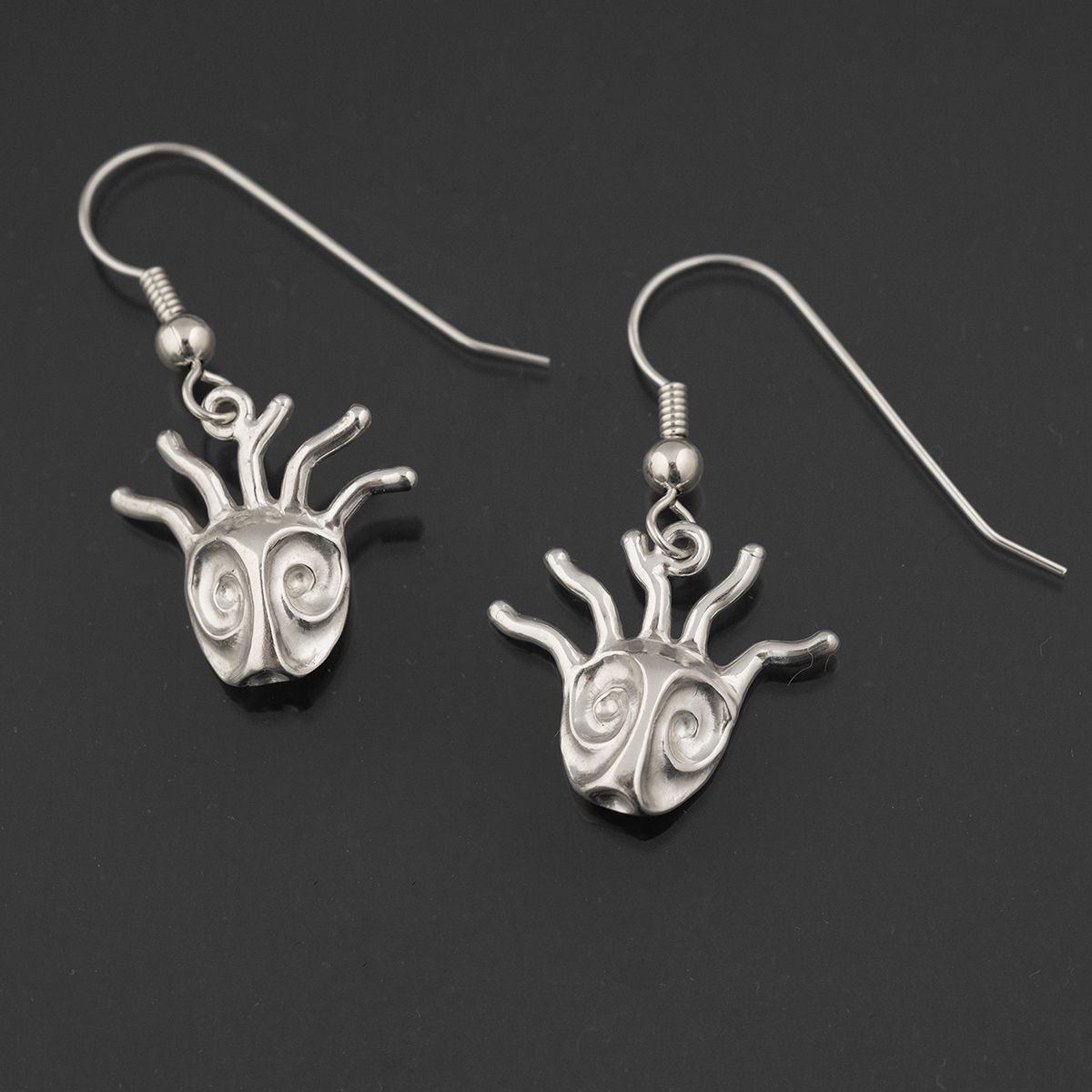 Shadow Spirit Head Variant EarringsSterling Silver
Shadow Spirit Head Variant EarringsSterling Silver- 1.5"h
- 1"w
Contact us to Special Order -
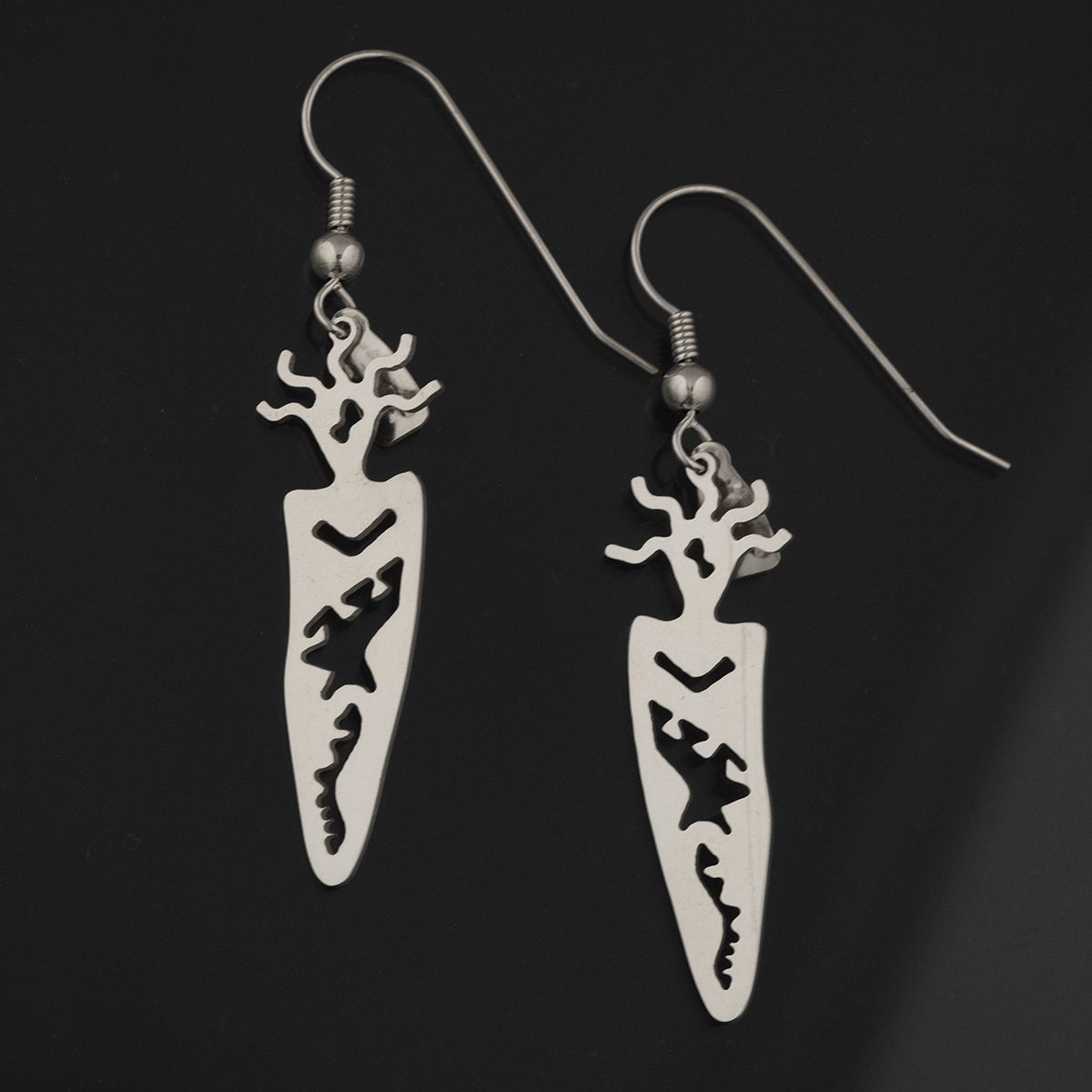 Shadow Spirit EarringsSterling Silver
Shadow Spirit EarringsSterling Silver- 2.5"h
- .5"w
$150 -
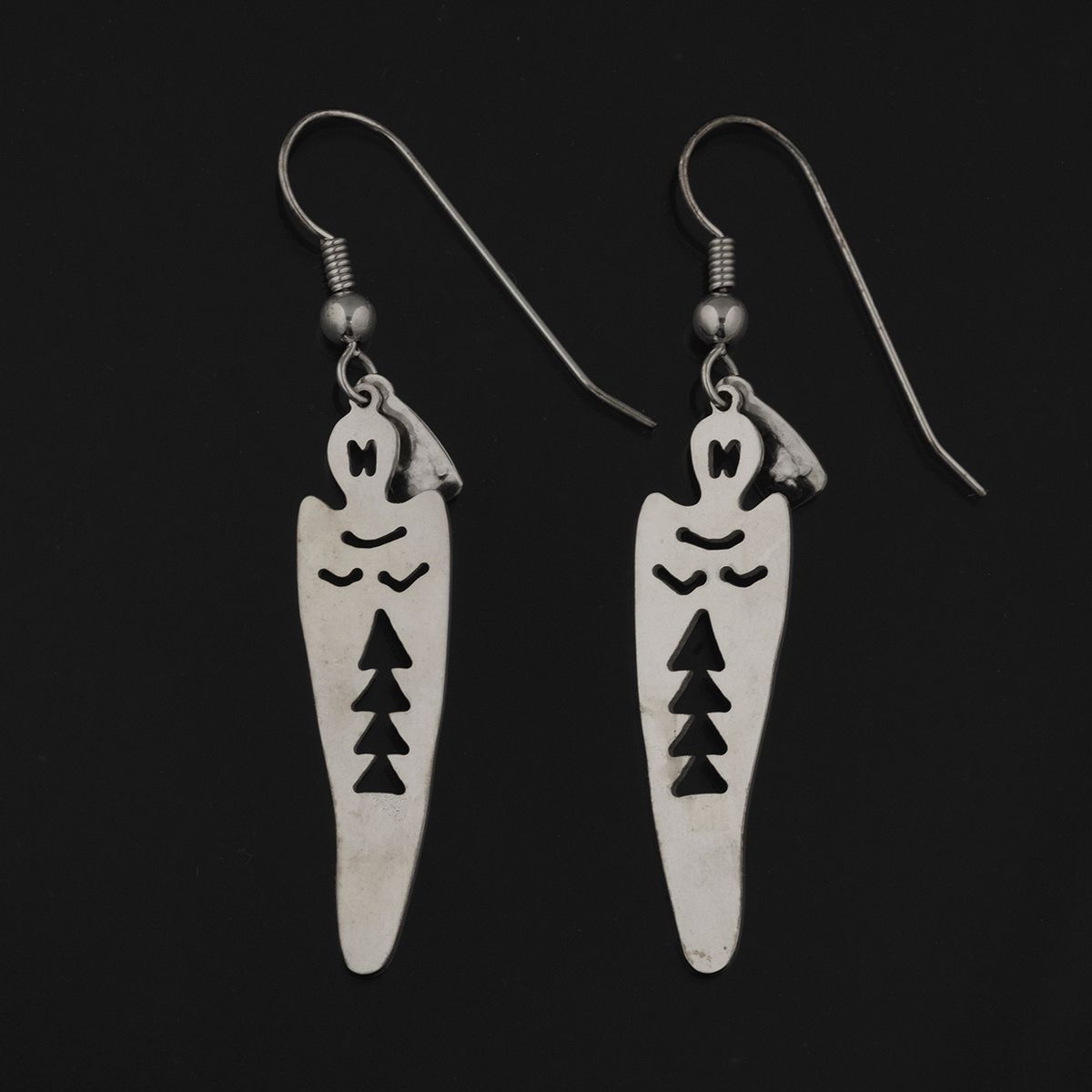 Star Spirit EarringsSterling Silver
Star Spirit EarringsSterling Silver- 2.25"h
- .5"w
$150 -
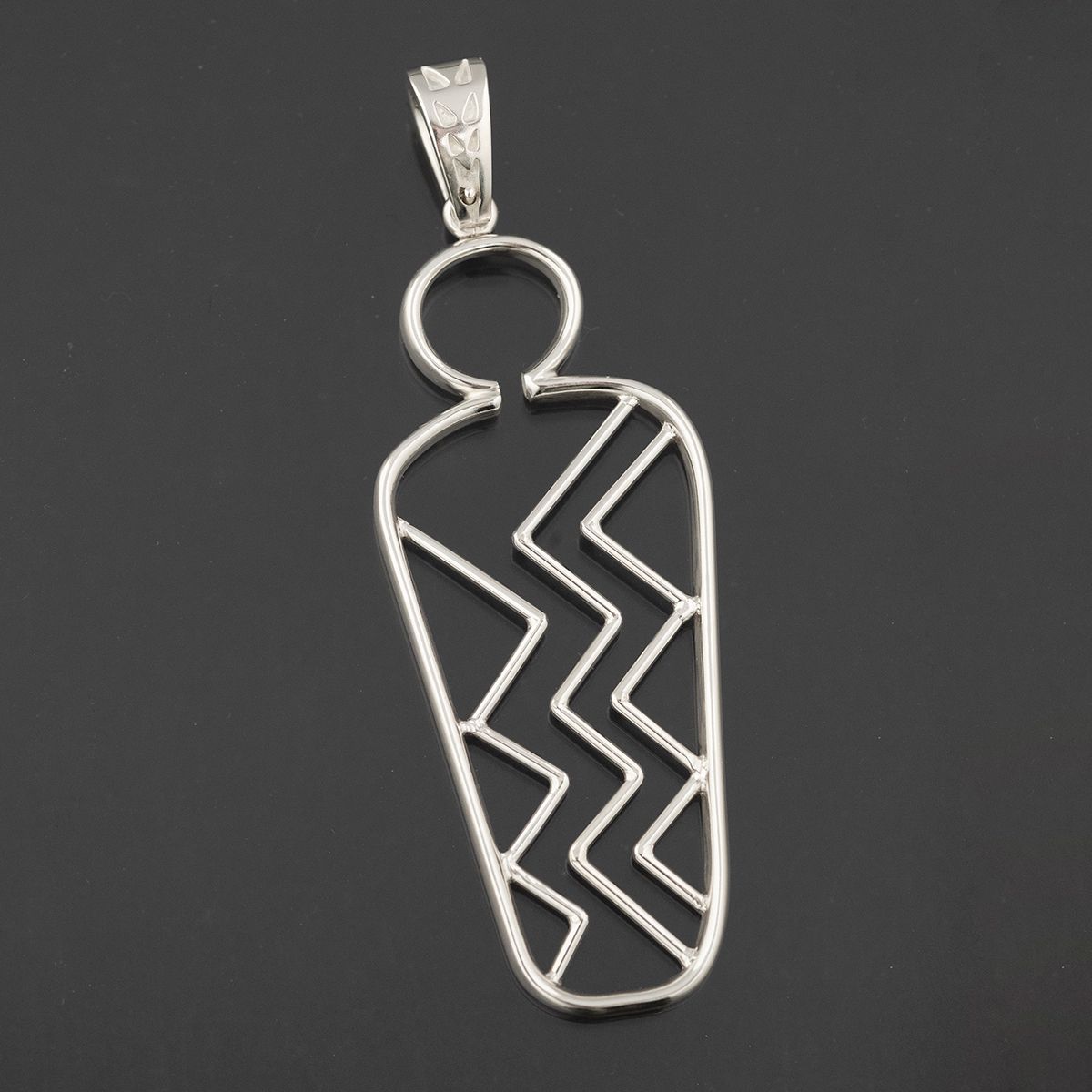 Star People PendantSterling Silver
Star People PendantSterling Silver- 3"h
- 1"w
$300 -
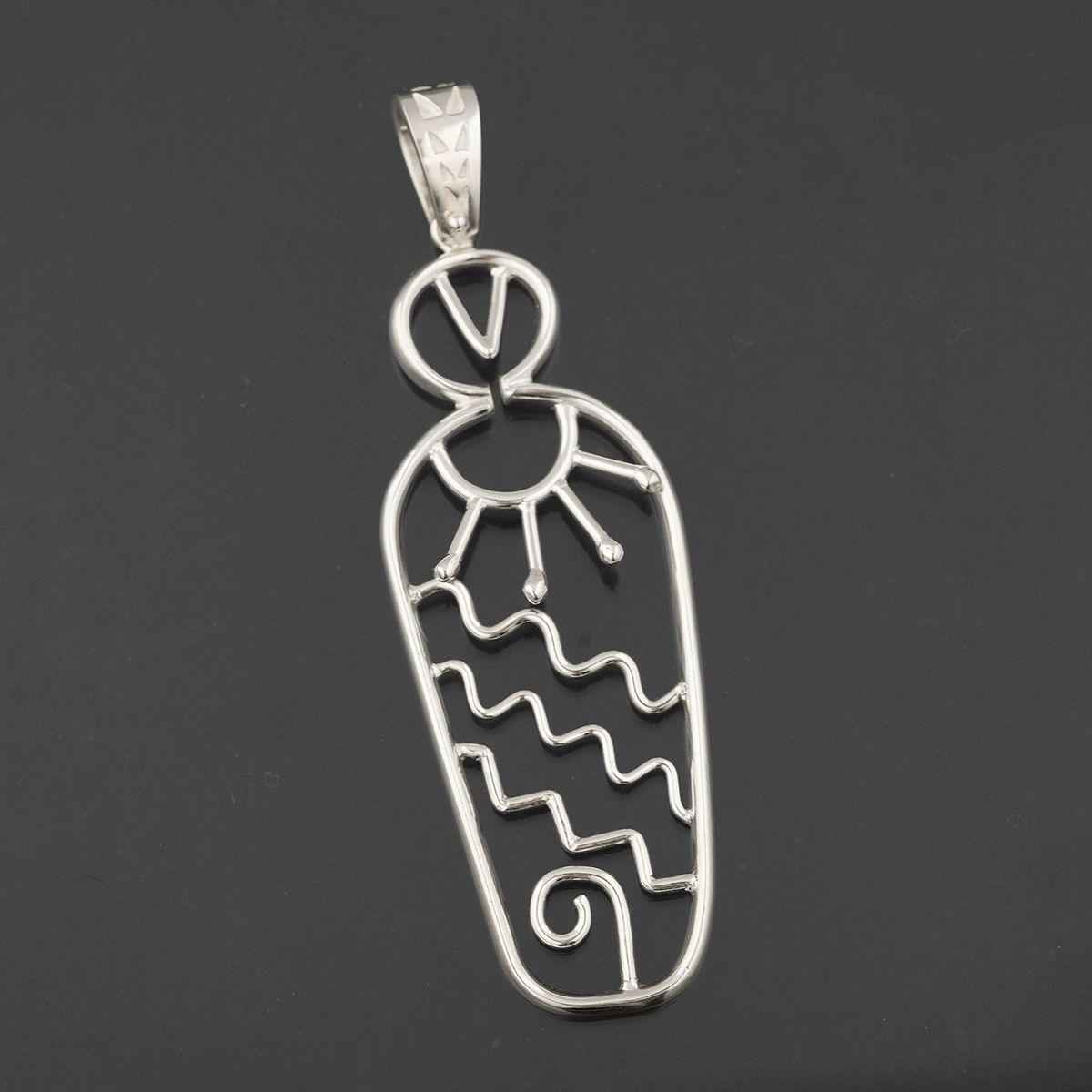 Star People PendantOne of a Kind Sterling Silver
Star People PendantOne of a Kind Sterling Silver- 3"h
- 1"w
$420 -
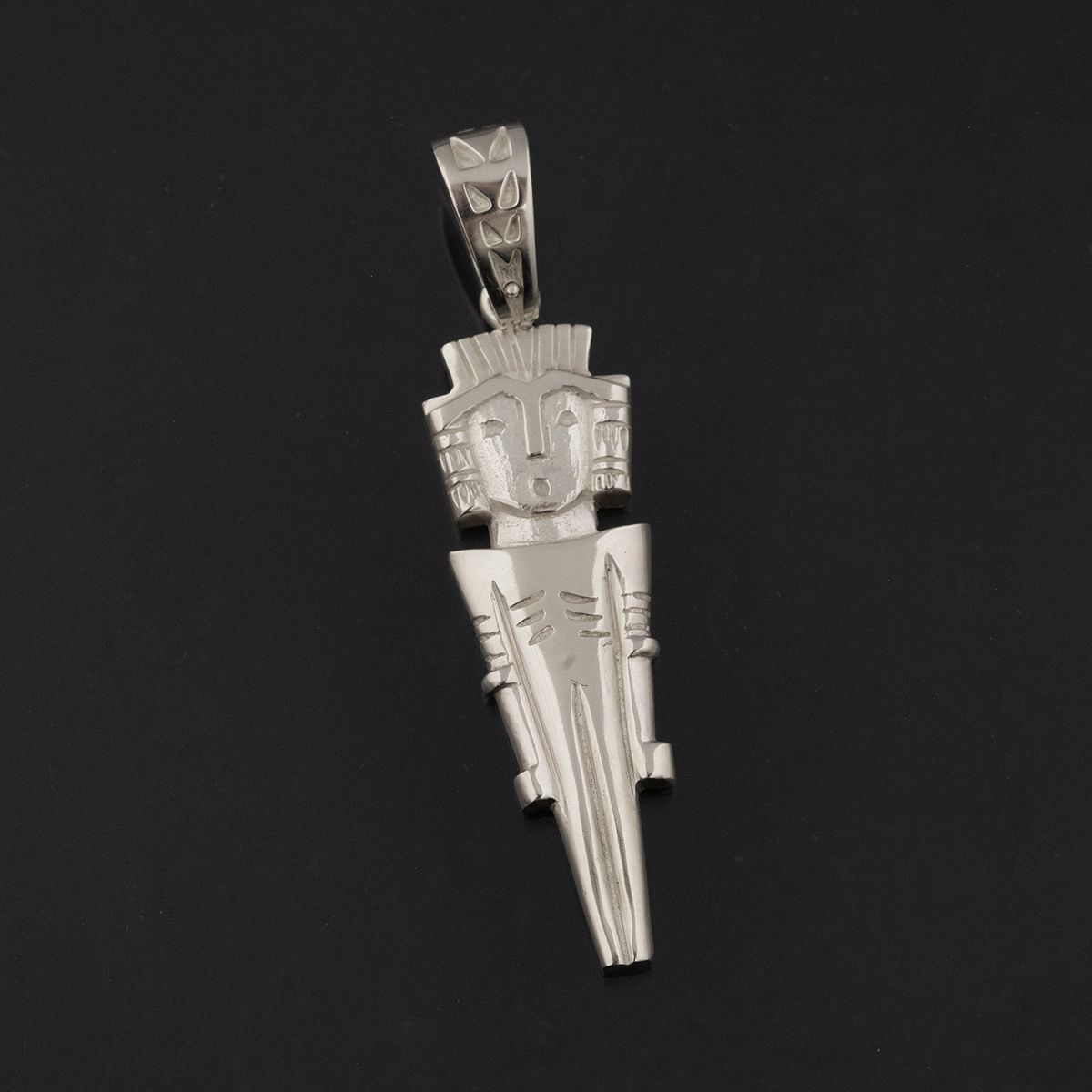 Ancient Spirit PendantSterling Silver
Ancient Spirit PendantSterling Silver- 2.25"h
- .5"w
$180 -
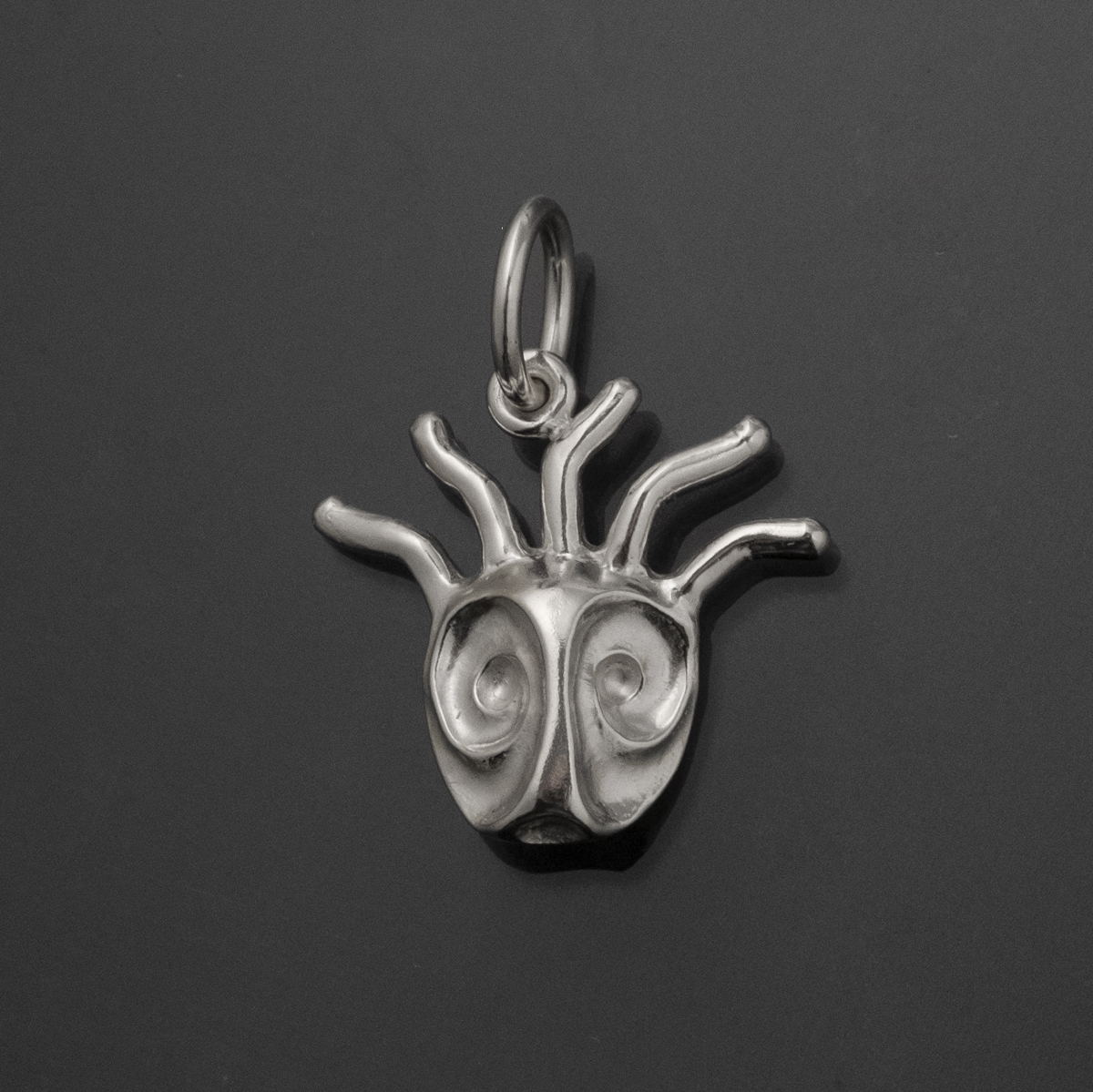 Shadow Spirit Head Pendant (Variant)Sterling Silver
Shadow Spirit Head Pendant (Variant)Sterling Silver- 1.18"h
$85 -
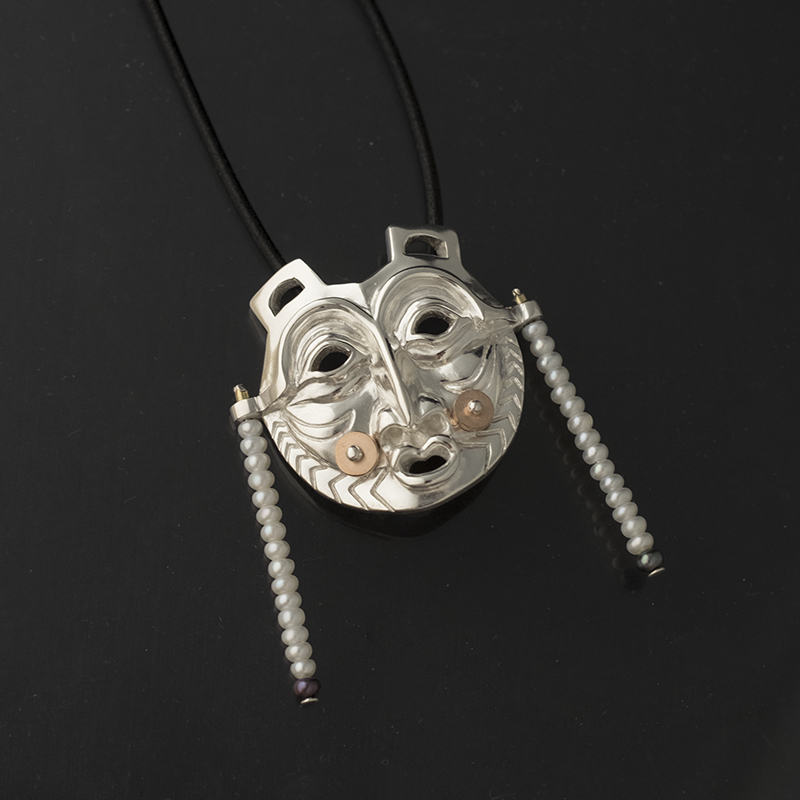 She Who Watches Pendant with Gold and PearlsSterling Silver, 18k Rose Gold, Pearls
She Who Watches Pendant with Gold and PearlsSterling Silver, 18k Rose Gold, Pearls- 1.75"h
- 1.5"w
$400 -
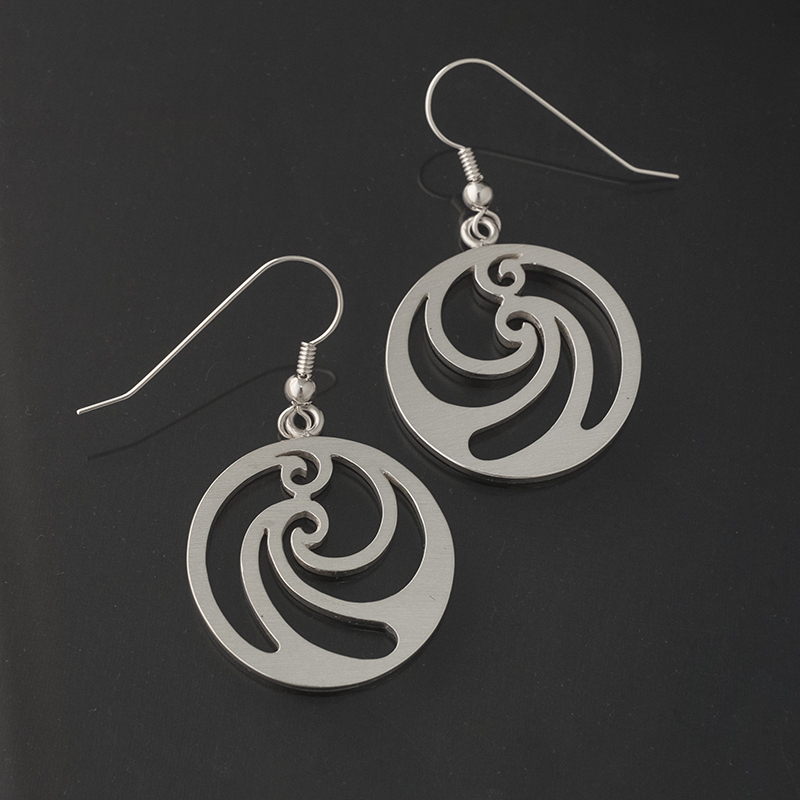 Koru (In Honor of the Māori) EarringsSterling Silver
Koru (In Honor of the Māori) EarringsSterling Silver- 2"h
- 1.12"w
$320 -
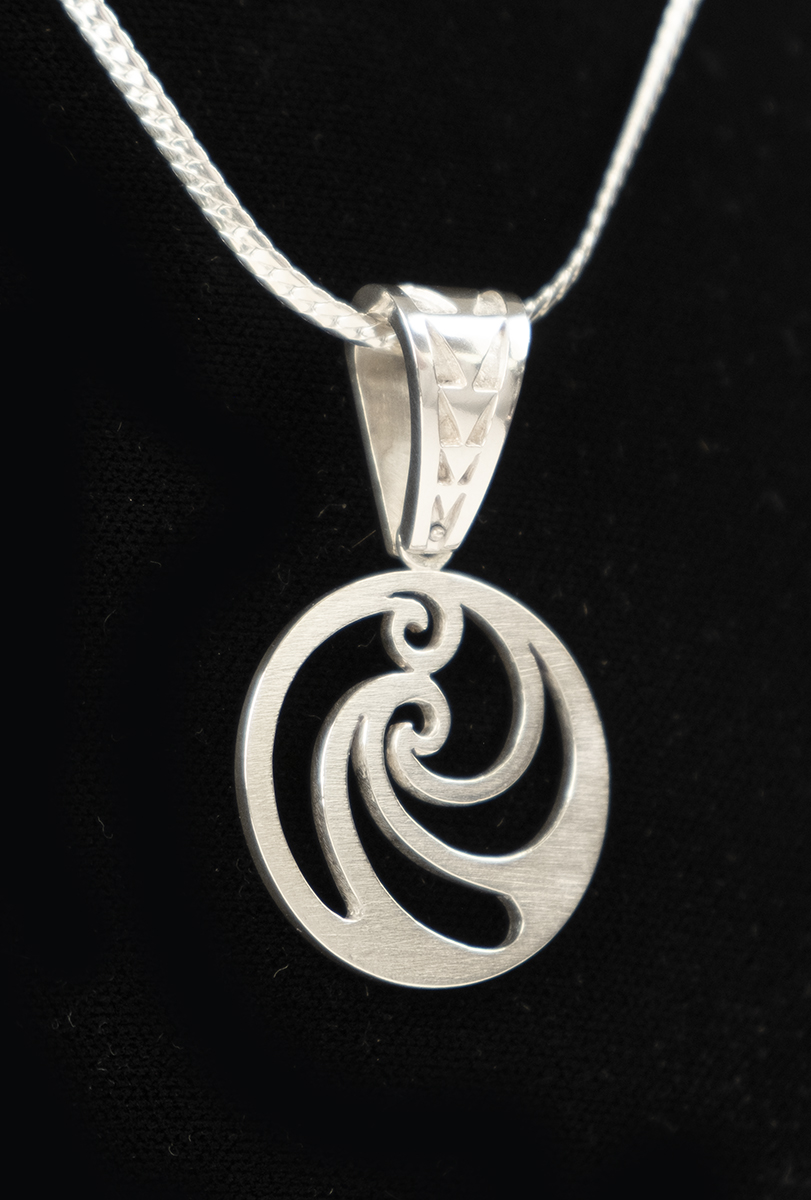 Koru (In Honor of the Māori) PendantSterling Silver
Koru (In Honor of the Māori) PendantSterling Silver- 1.25"h
- 1.25"w
$220 -
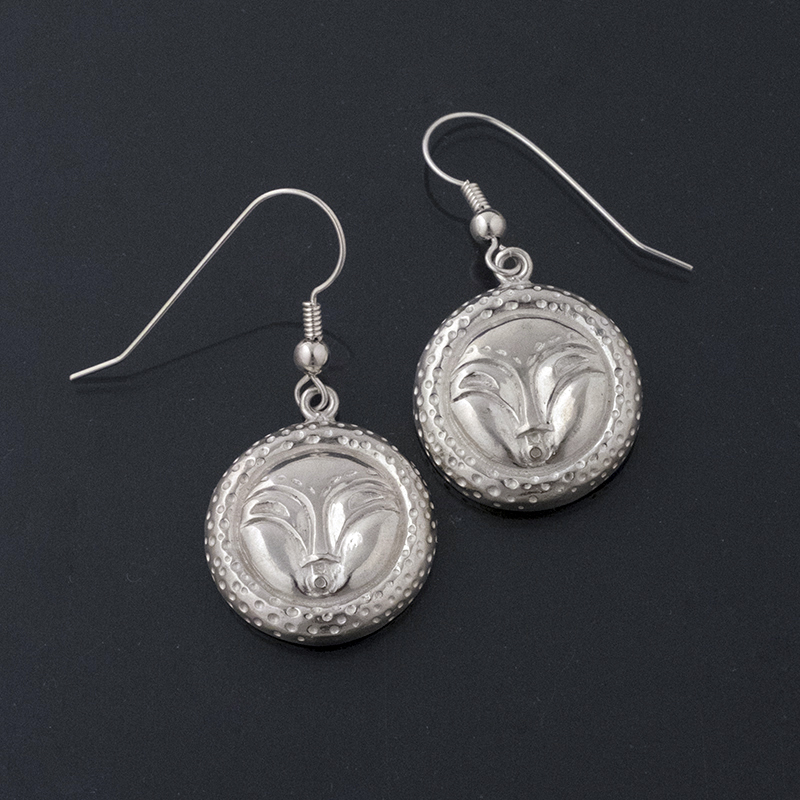 Grandmother Moon EarringsSterling Silver
Grandmother Moon EarringsSterling Silver- 1.75"h
- 1"w
Contact us to special order -
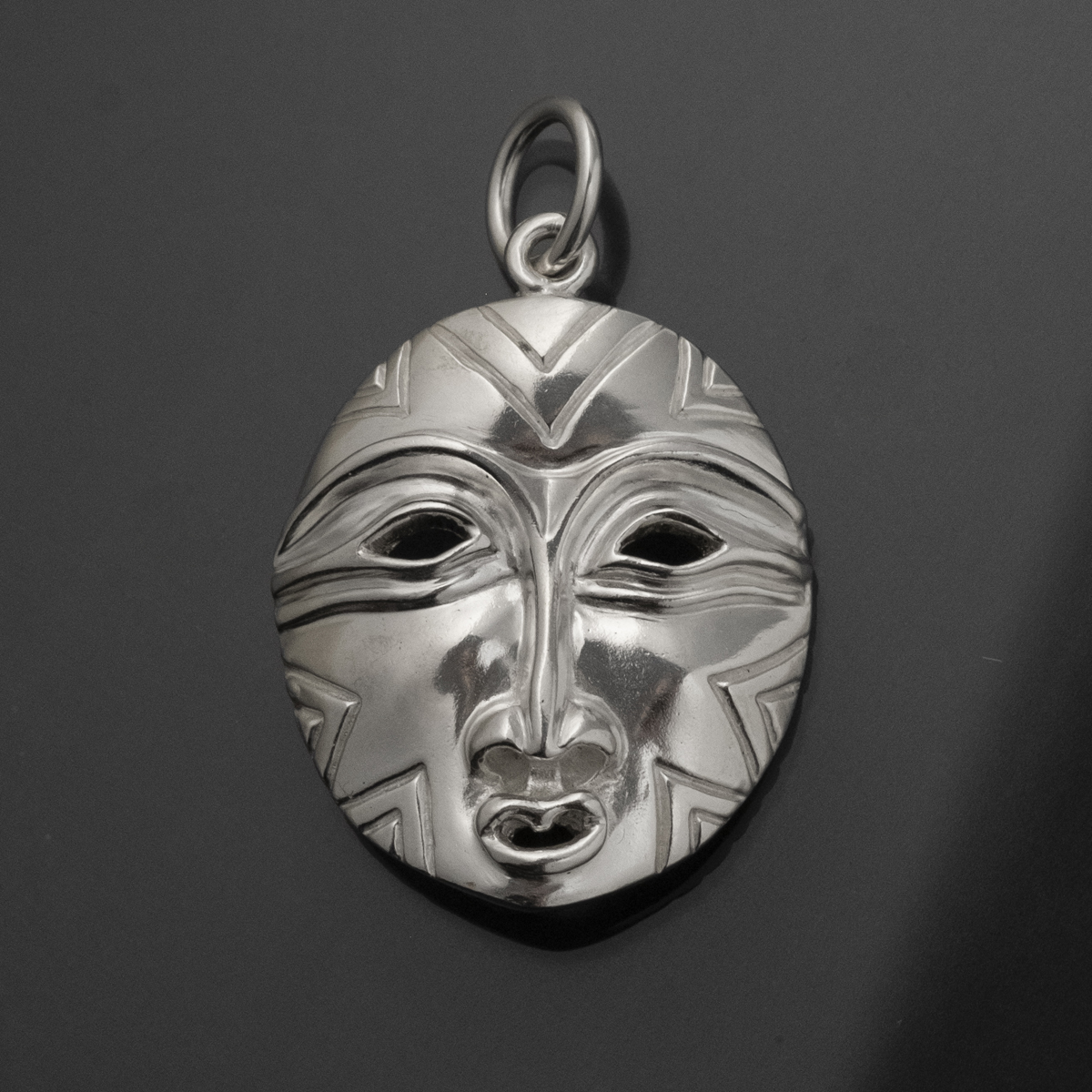 Sun Spirit PendantSterling Silver
Sun Spirit PendantSterling Silver- 1.5"h
$160 -
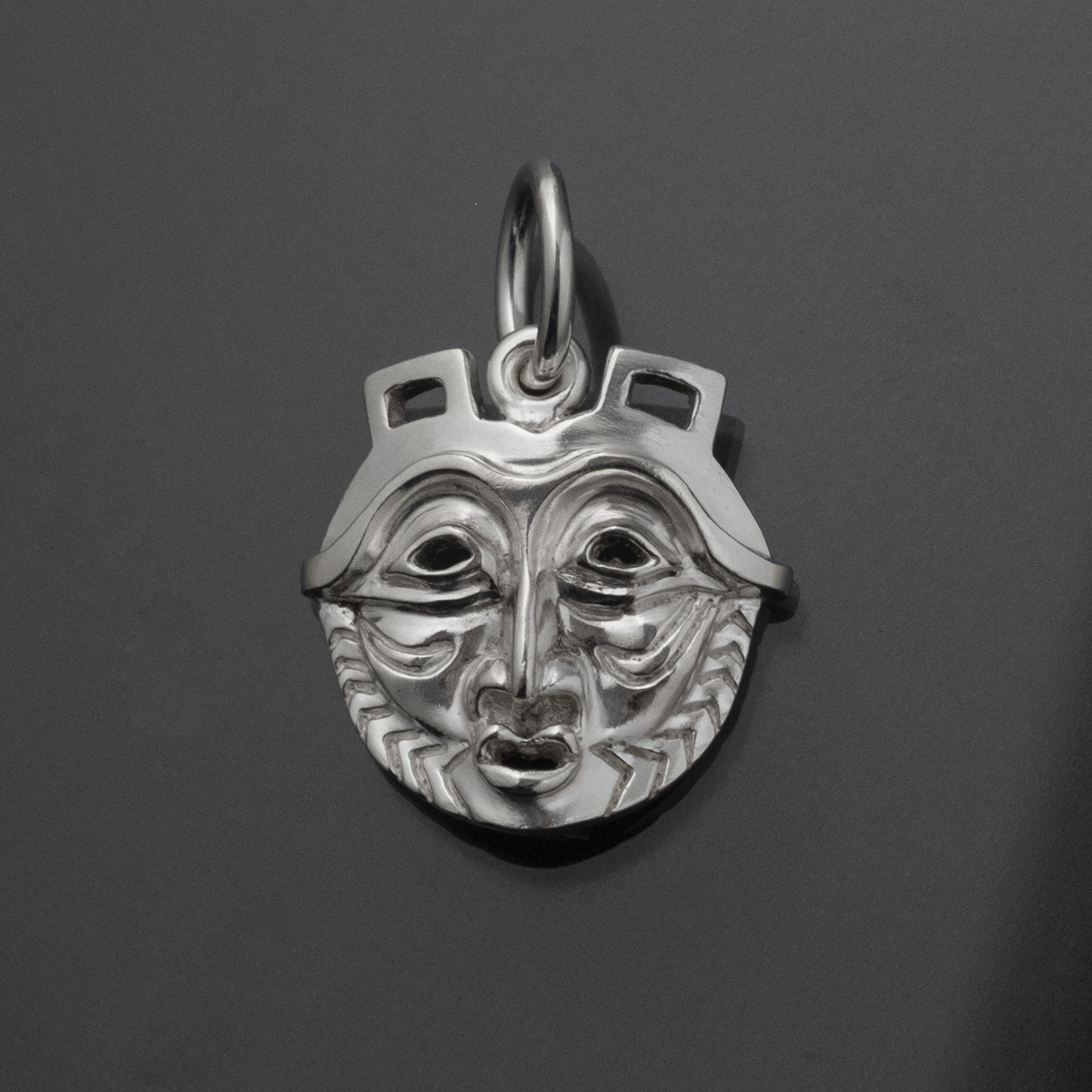 She Who Watches PendantSterling Silver
She Who Watches PendantSterling Silver- 1"h
$110 -
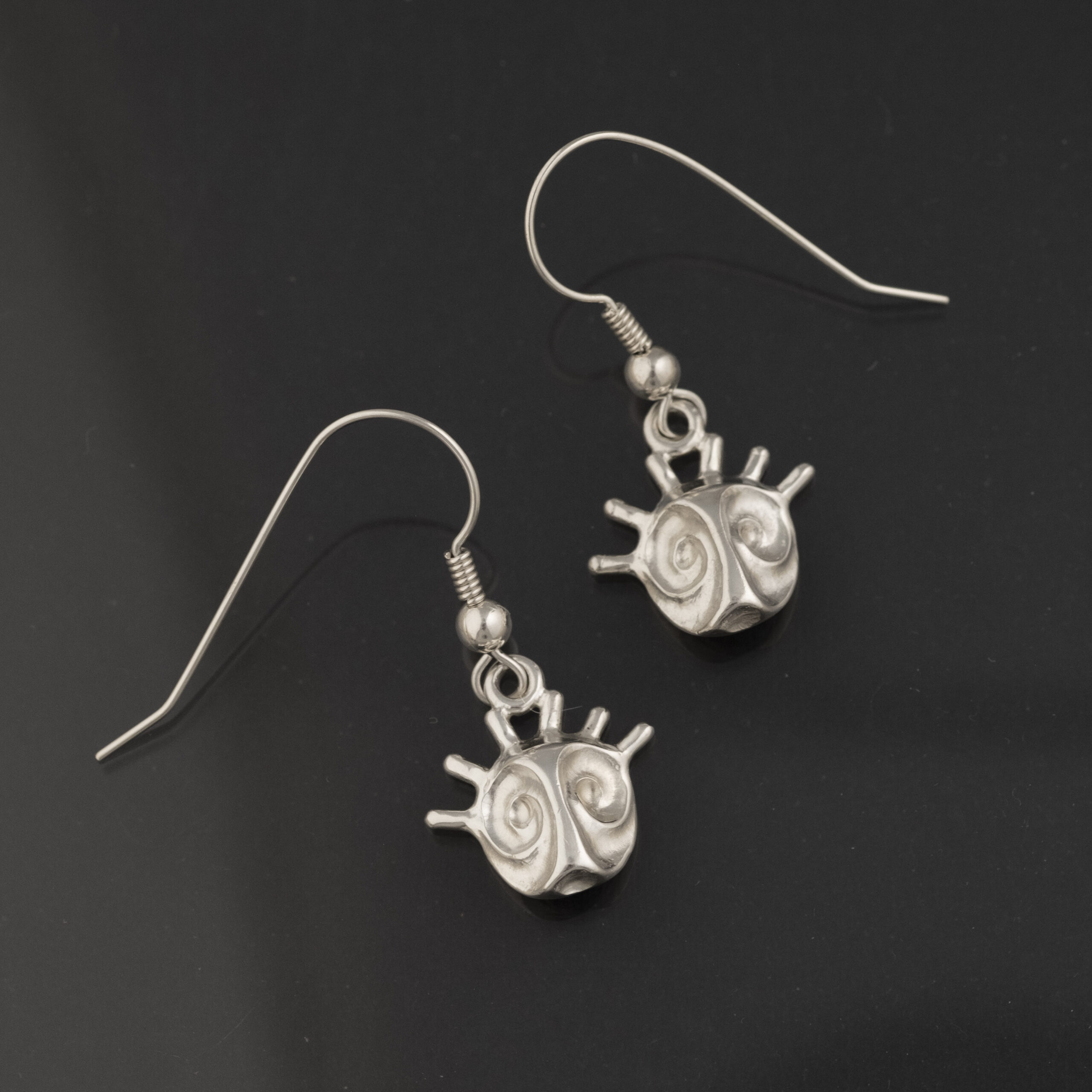 Shadow Spirit Head EarringsSterling Silver
Shadow Spirit Head EarringsSterling Silver- 1.5"h
- .75"w
Contact us to special order -
 Dreamer Head EarringsSterling Silver
Dreamer Head EarringsSterling Silver- 1.25"h
- .5"w
- .25"d
$140 -
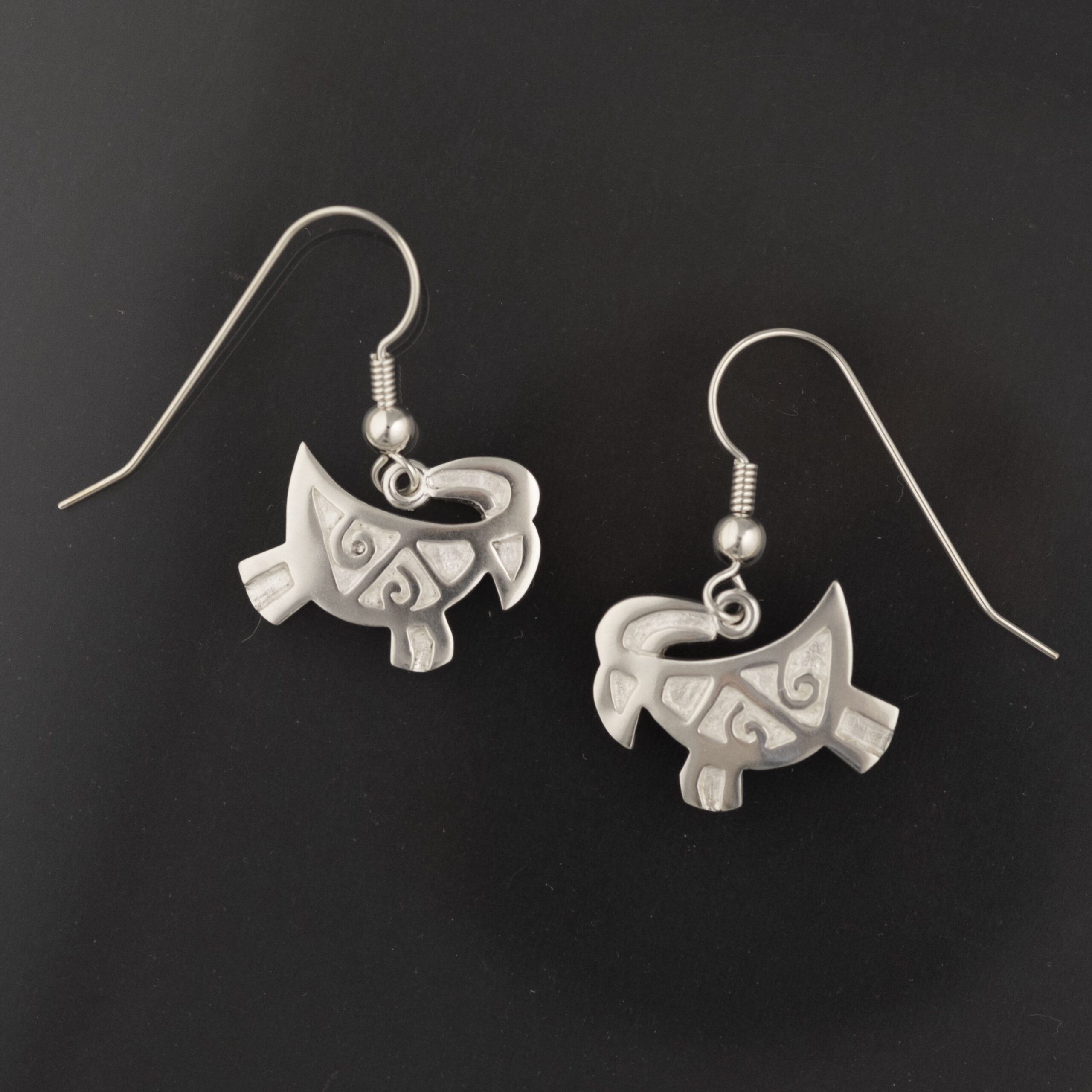 Mountain Goat EarringsSterling Silver
Mountain Goat EarringsSterling Silver- 1.25"h
- 1"w
Contact Us to Special Order -
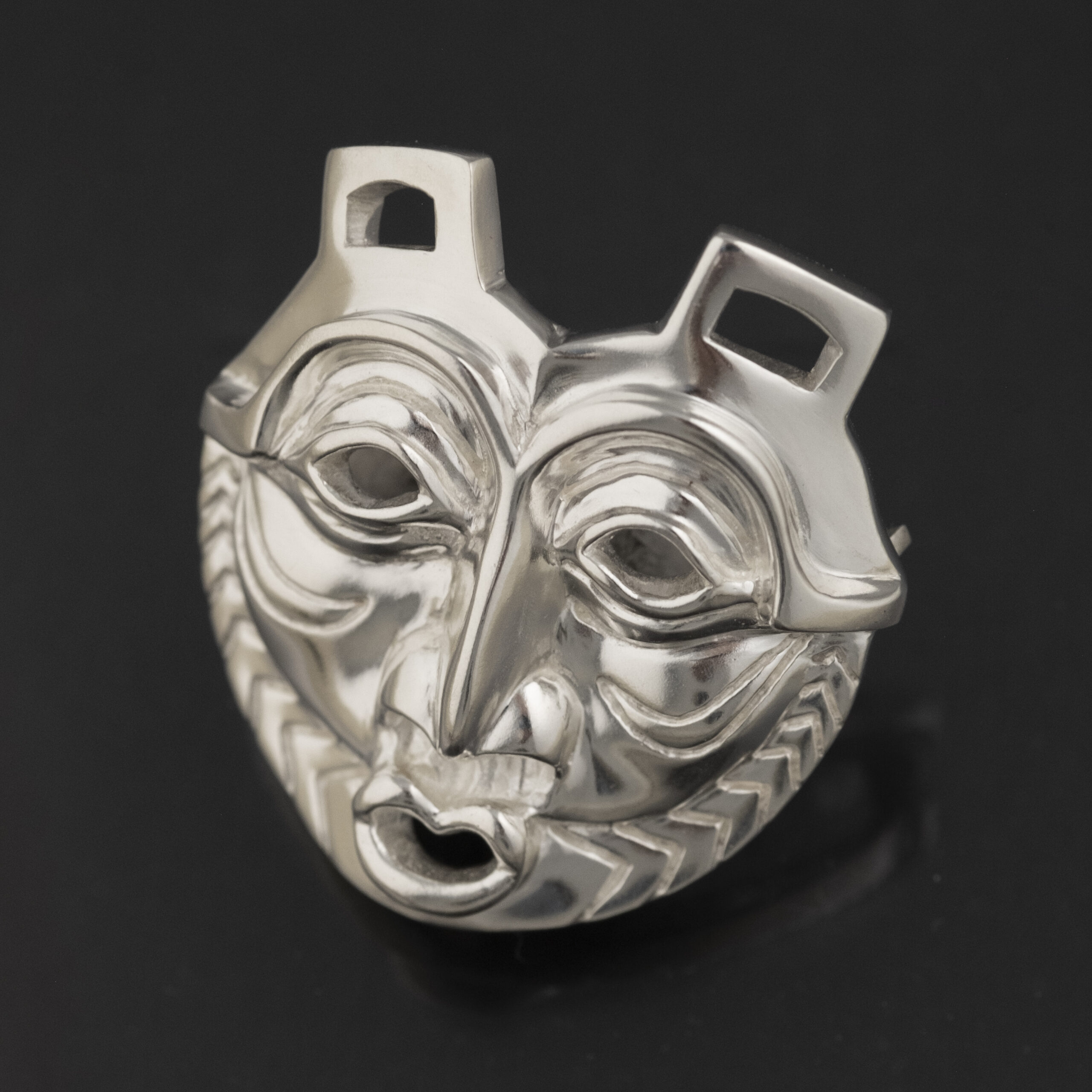 She Who Watches Pin/PendantSterling Silver
She Who Watches Pin/PendantSterling Silver- 1.13"h
- 1.13"w
Contact to us to special order -
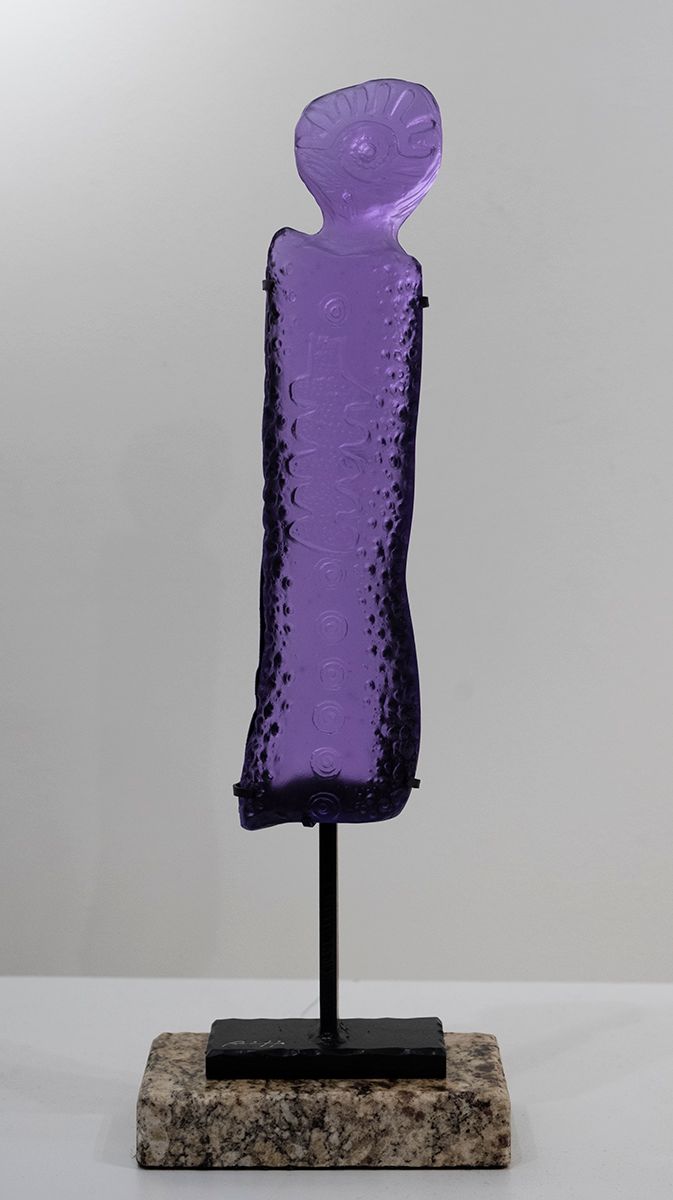 Star Person with Ribs – PurpleCast Glass, Steel, Granite Base
Star Person with Ribs – PurpleCast Glass, Steel, Granite Base- 18"h
- 6"w
- 3.75"d
$2,800 -
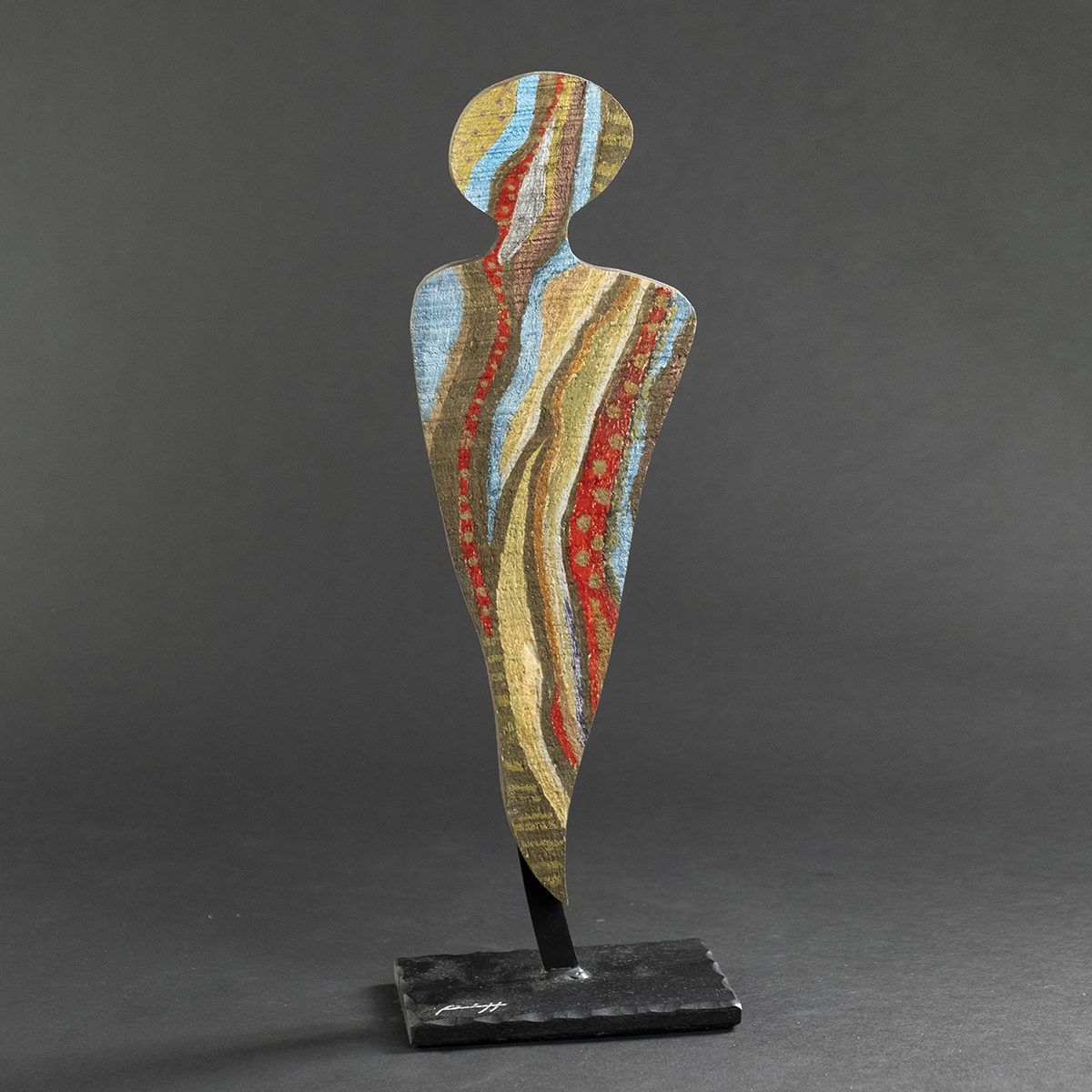 Moonstruck #2Wood, Paint, Steel Base
Moonstruck #2Wood, Paint, Steel Base- 14.25"h
- 5"w
- 3"d
$1,100 -
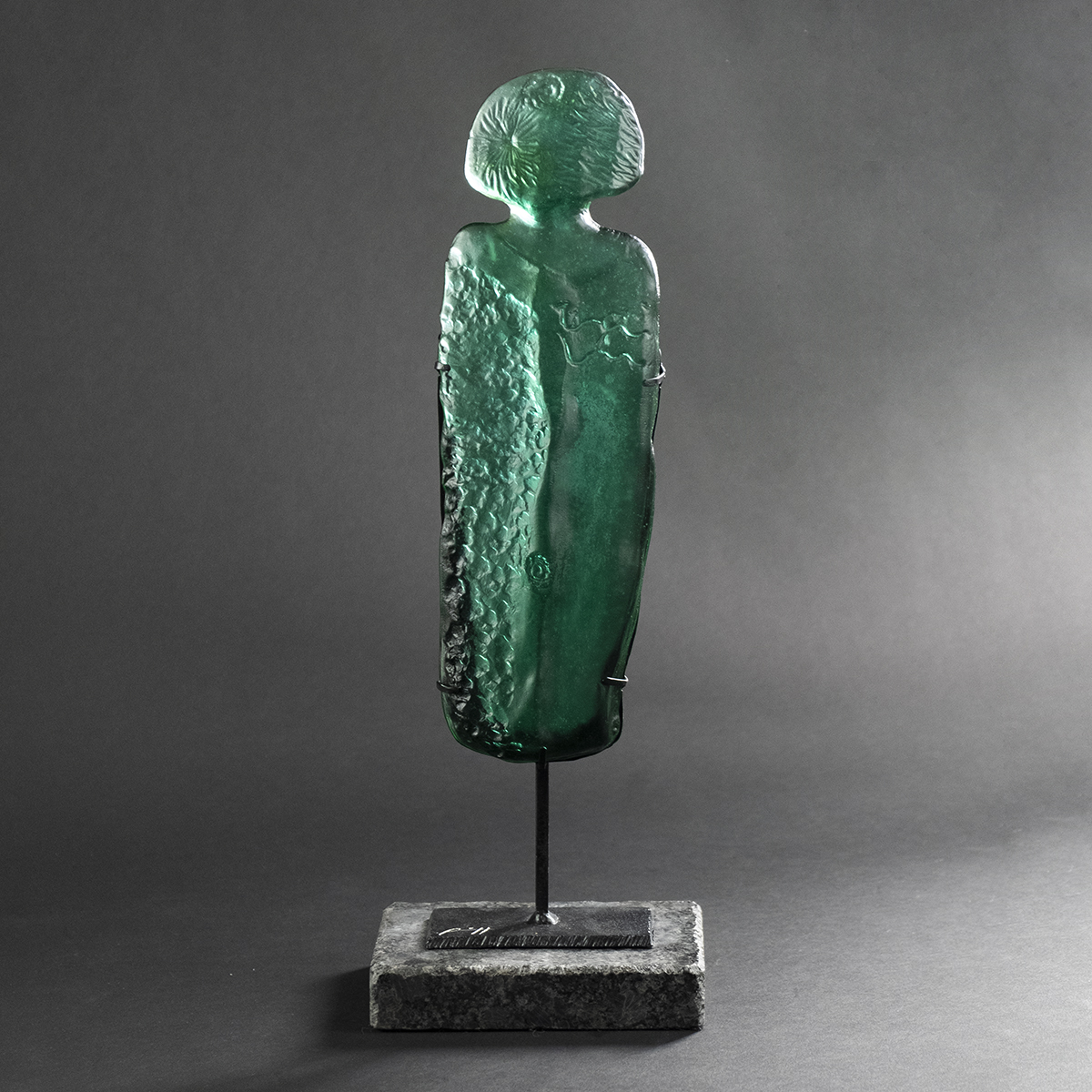 Pathfinder #1Glass, Metal Stand, Granite Base
Pathfinder #1Glass, Metal Stand, Granite Base- 17"h
- 6"w
- 4"d
$2,800 -
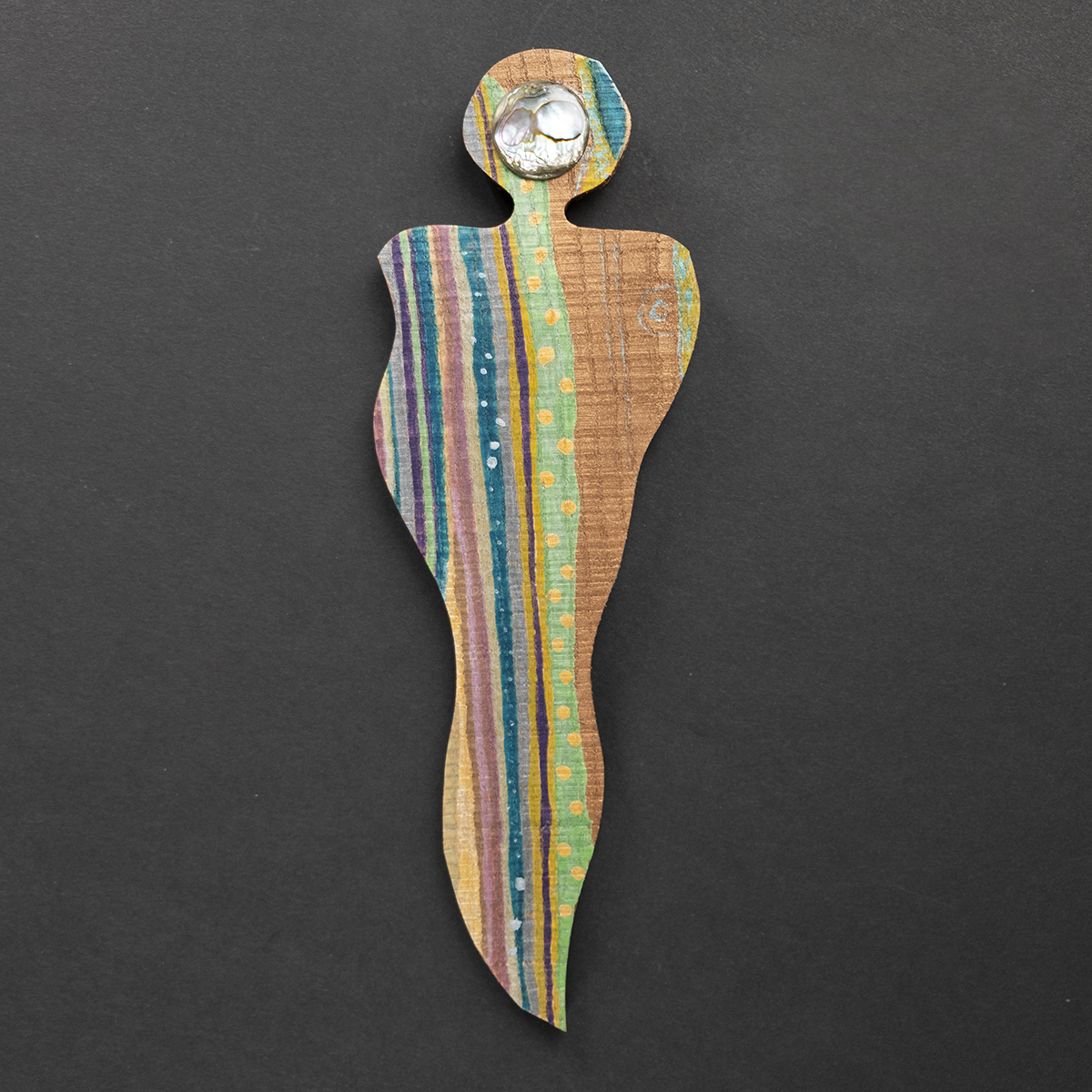 Star Spirit Feeling the Lake’s ReflectionWood, Paint, Abalone
Star Spirit Feeling the Lake’s ReflectionWood, Paint, Abalone- 10"h
- 3.25"w
- .53"d
$280 -
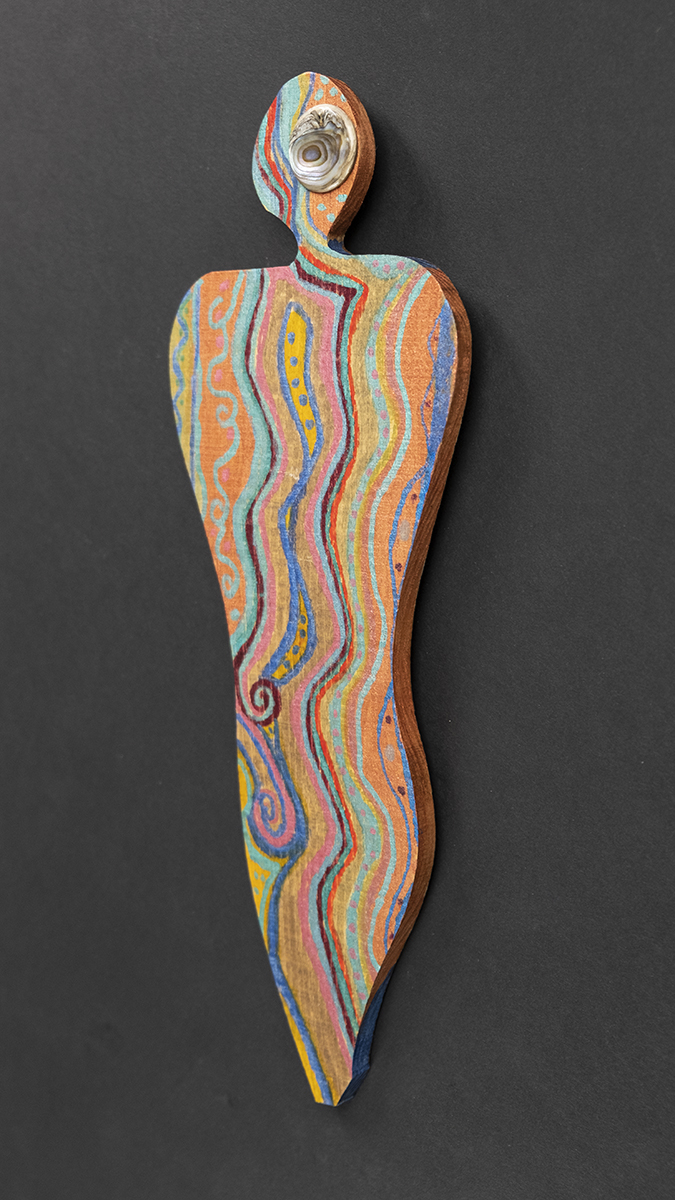 Star Spirit Feeling the Moon’s WarmthWood, Pigment, Abalone
Star Spirit Feeling the Moon’s WarmthWood, Pigment, Abalone- 12.5"h
- 4.38"w
- .38"d
$300 -
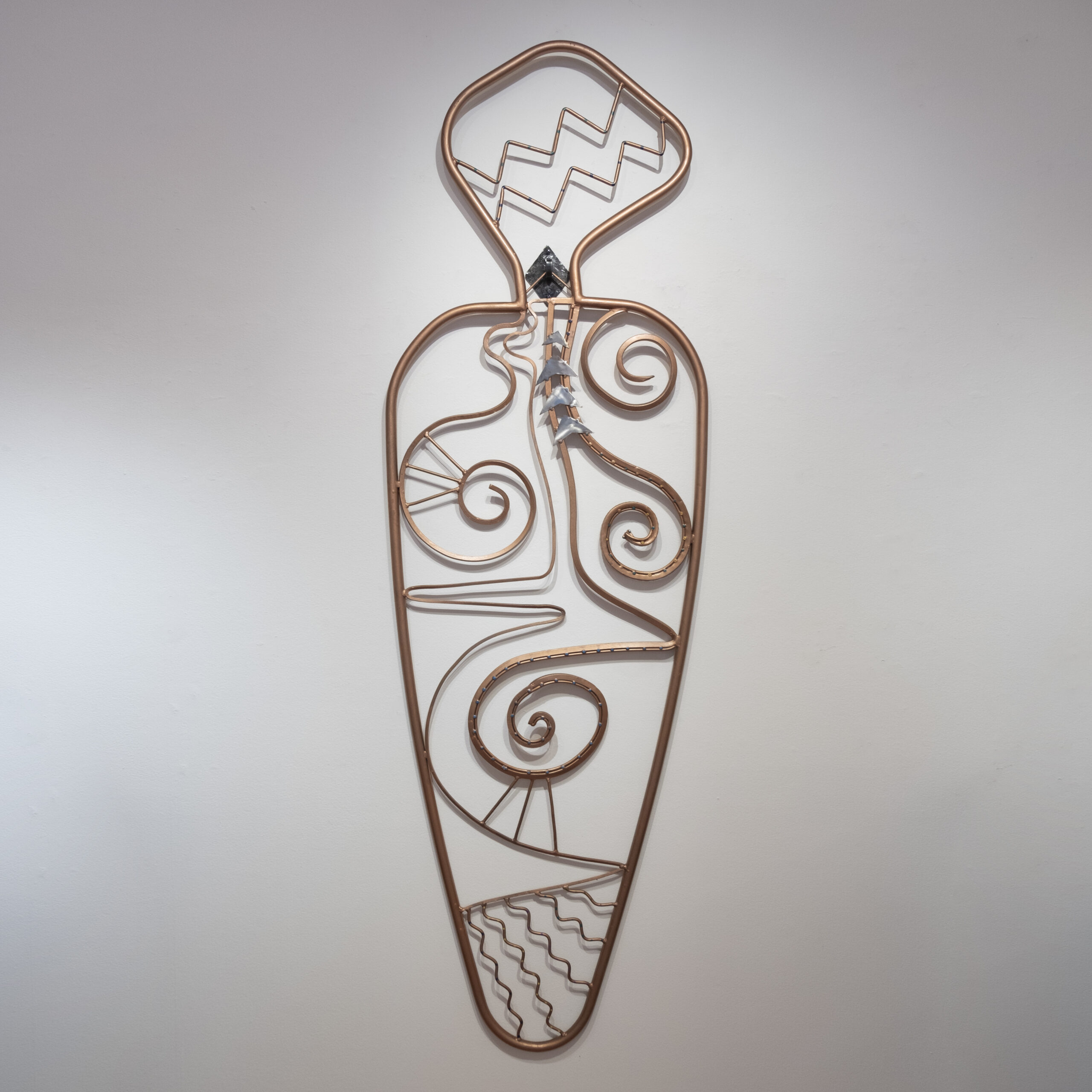 Monumental Star Spirit Feeling He Should Be Busy – Wall PieceSteel, Paint, Metal Wall Mount
Monumental Star Spirit Feeling He Should Be Busy – Wall PieceSteel, Paint, Metal Wall Mount- 80"h
- 25.25"w
- 2.18"d
$6,000 -
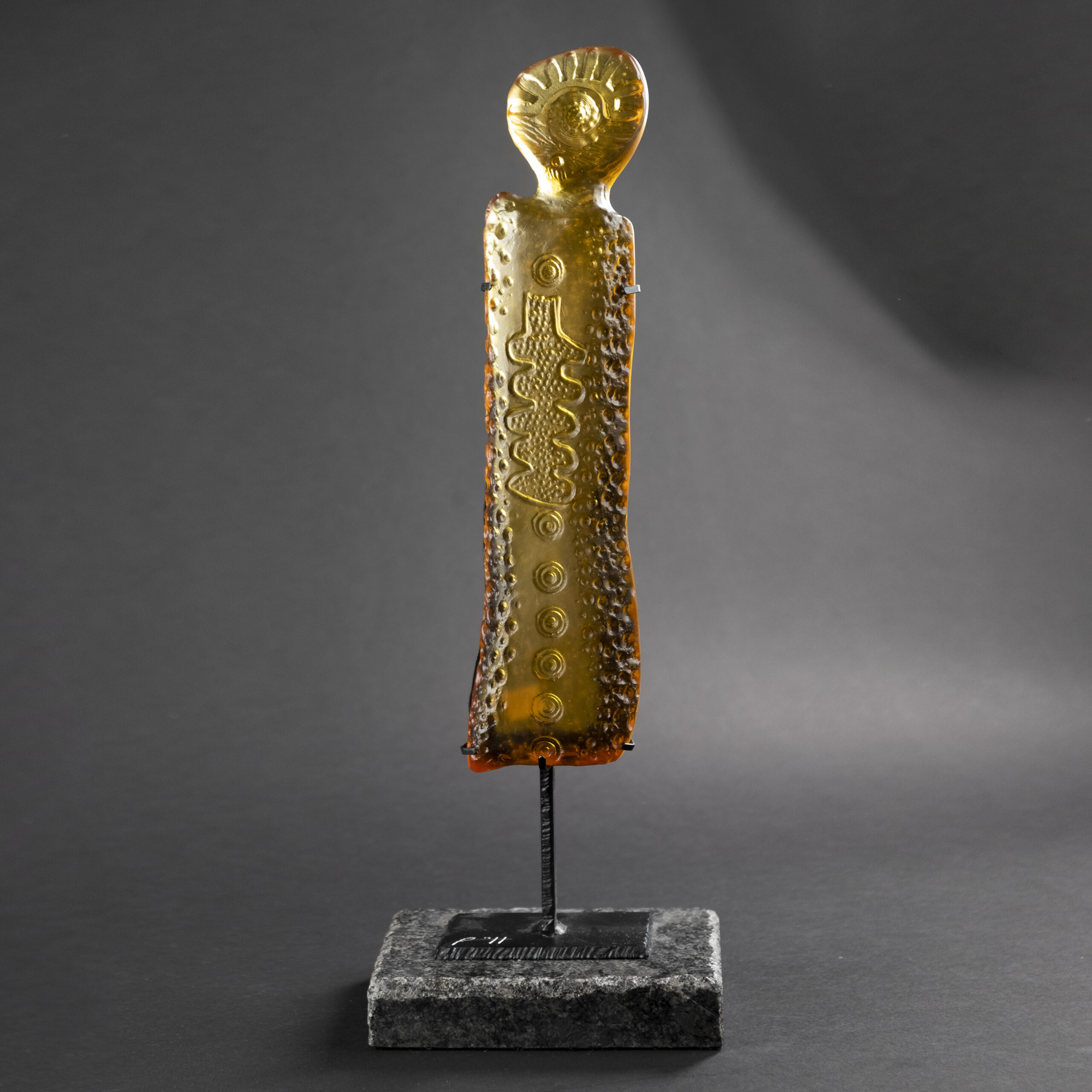 Giving Homage to the StarsCast Glass, Steel, Granite Base
Giving Homage to the StarsCast Glass, Steel, Granite Base- 16.75"h
- 6"w
- 4"d
$2,800 -
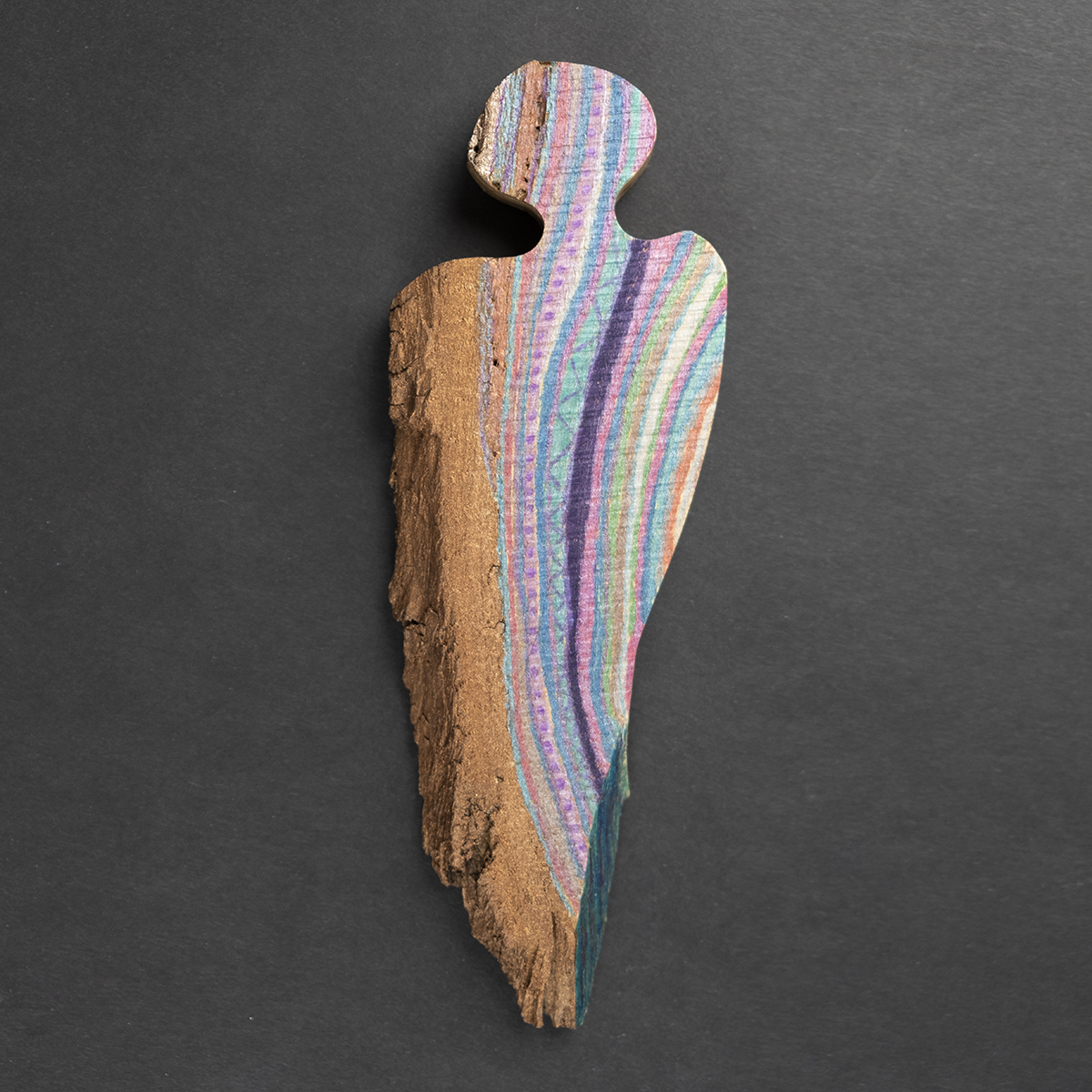 Star Person After Visiting Hawai’i’s Hot SpotsWood, Pigments
Star Person After Visiting Hawai’i’s Hot SpotsWood, Pigments- 9.5"h
- 3.25"w
- .63"d
$165 -
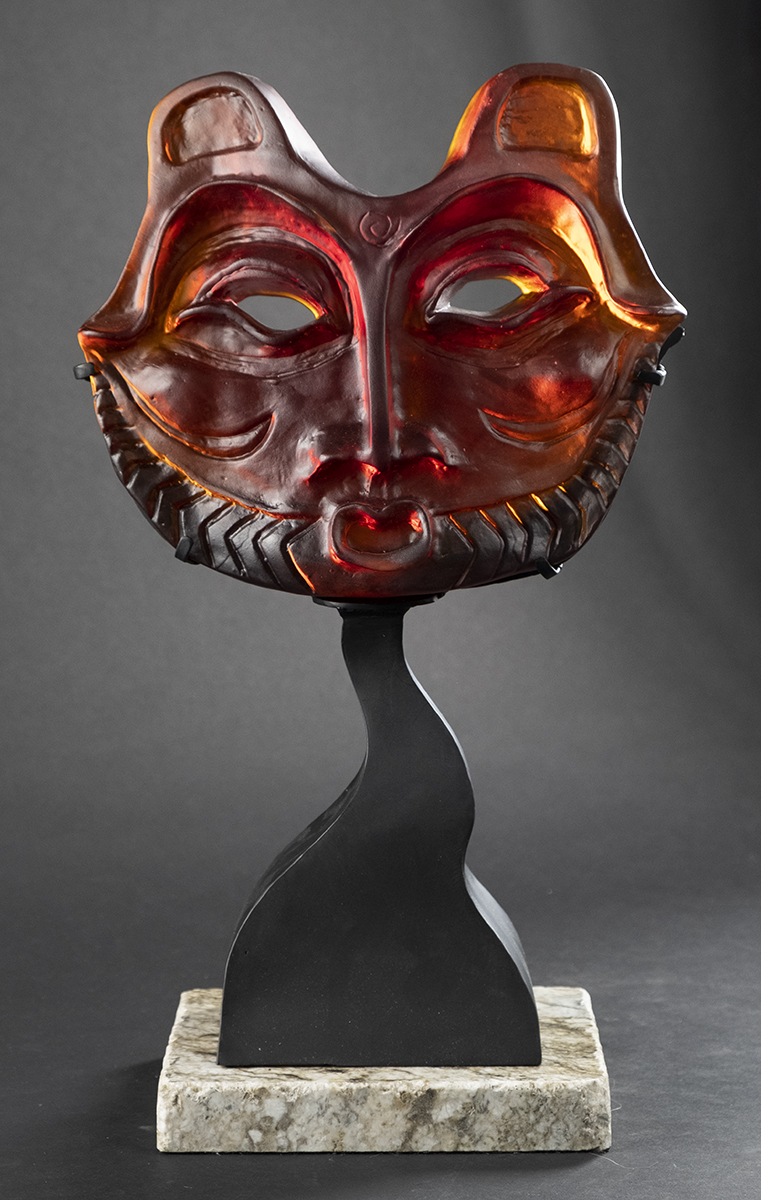 Tsagaglal (She Who Watches)Cast Red Crystal, Steel, Granite
Tsagaglal (She Who Watches)Cast Red Crystal, Steel, Granite- 18"h
- 7.5"w
- 6"d
$3,500 -
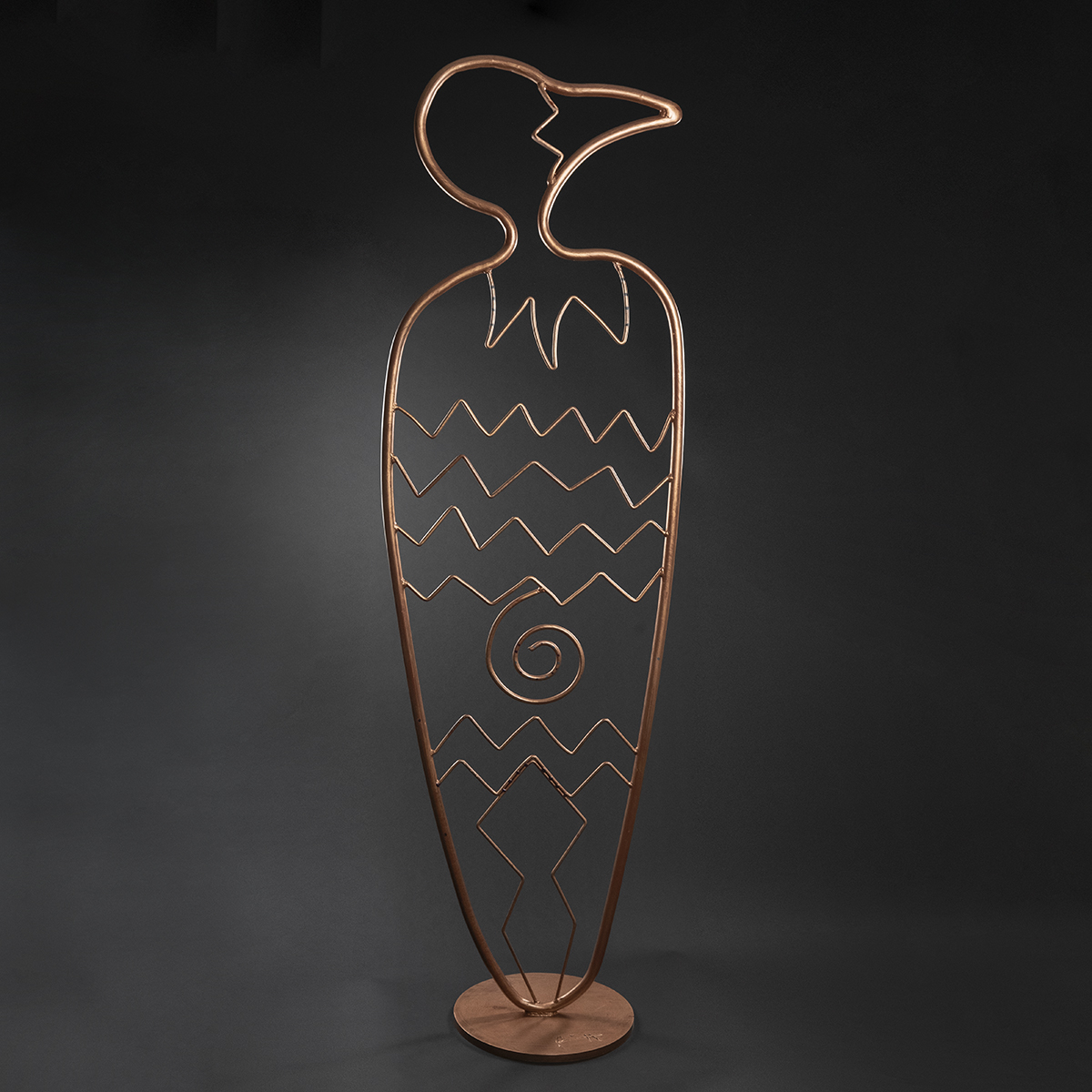 Monumental Free-Standing Star Spirit Bird Pondering His DirectionsSteel, Paint
Monumental Free-Standing Star Spirit Bird Pondering His DirectionsSteel, Paint- 72"h
- 21"w
- 13.5"d
$6,000 -
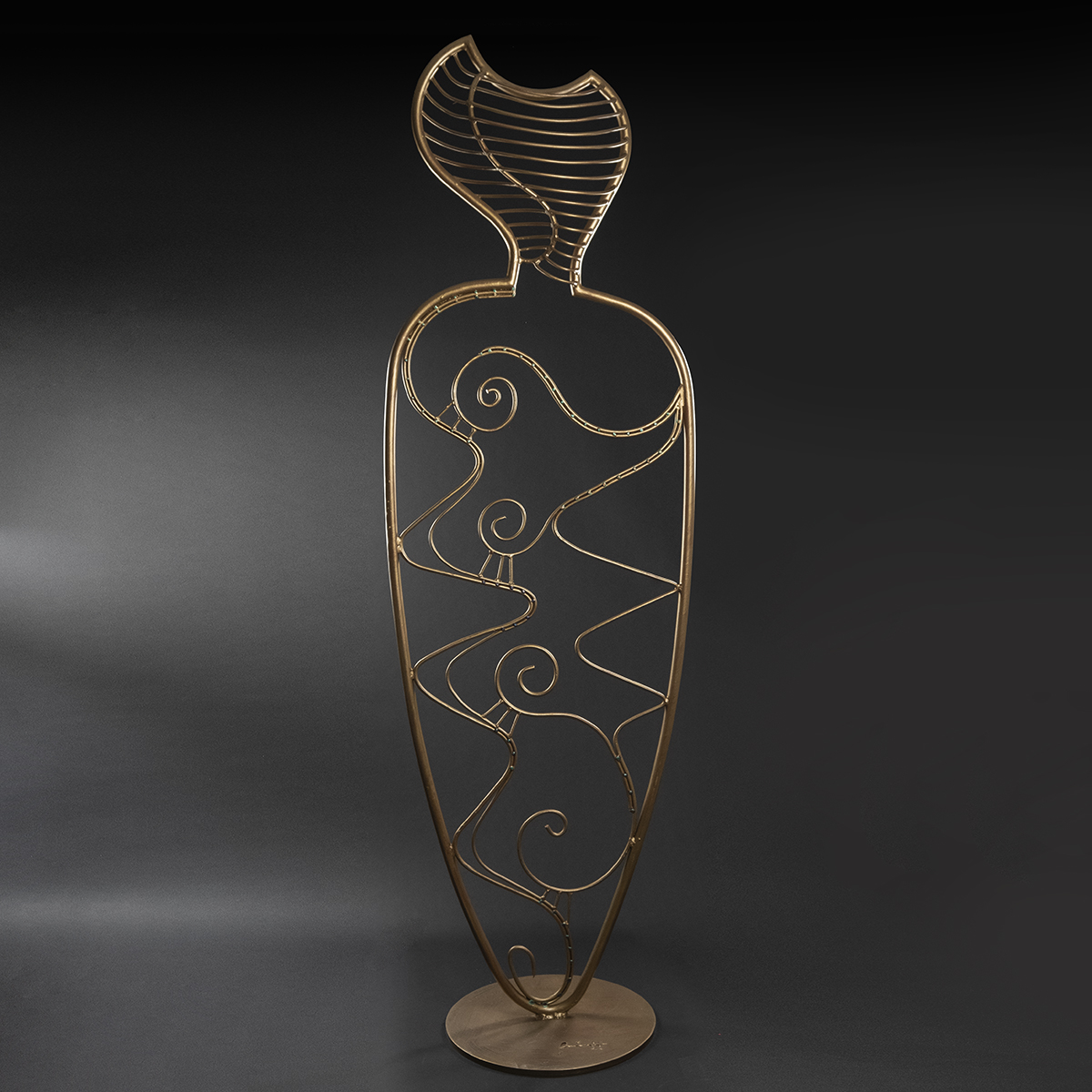 Monumental Free-Standing Star Spirit Protected From the DawnSteel, Paint
Monumental Free-Standing Star Spirit Protected From the DawnSteel, Paint- 78.5"h
- 23.5"w
- 16.63"d
$6,000 -
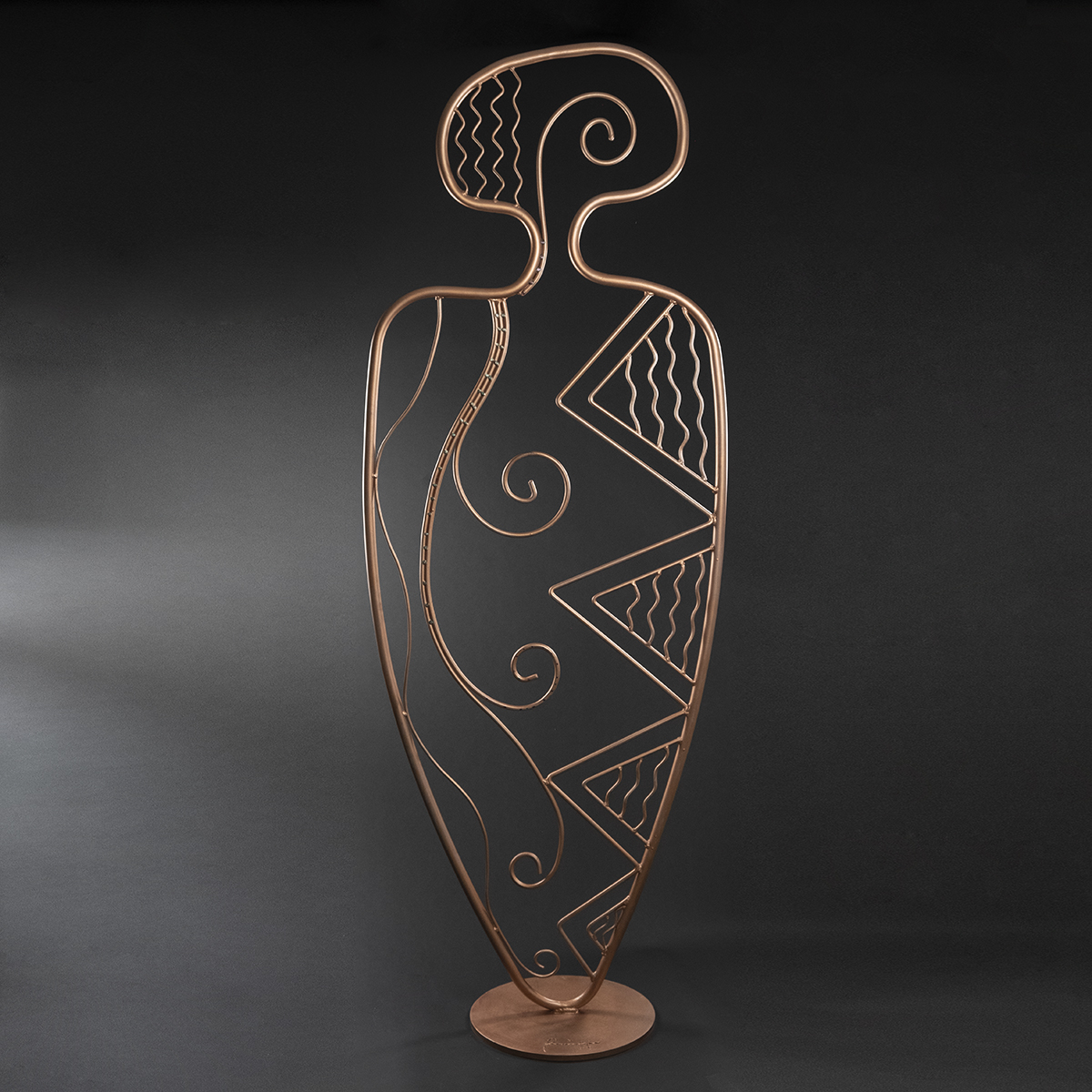 Monumental Free-Standing Star Spirit Dressed to Shine BrightlySteel, Paint
Monumental Free-Standing Star Spirit Dressed to Shine BrightlySteel, Paint- 77"h
- 23"w
- 14.63"d
$6,000 -
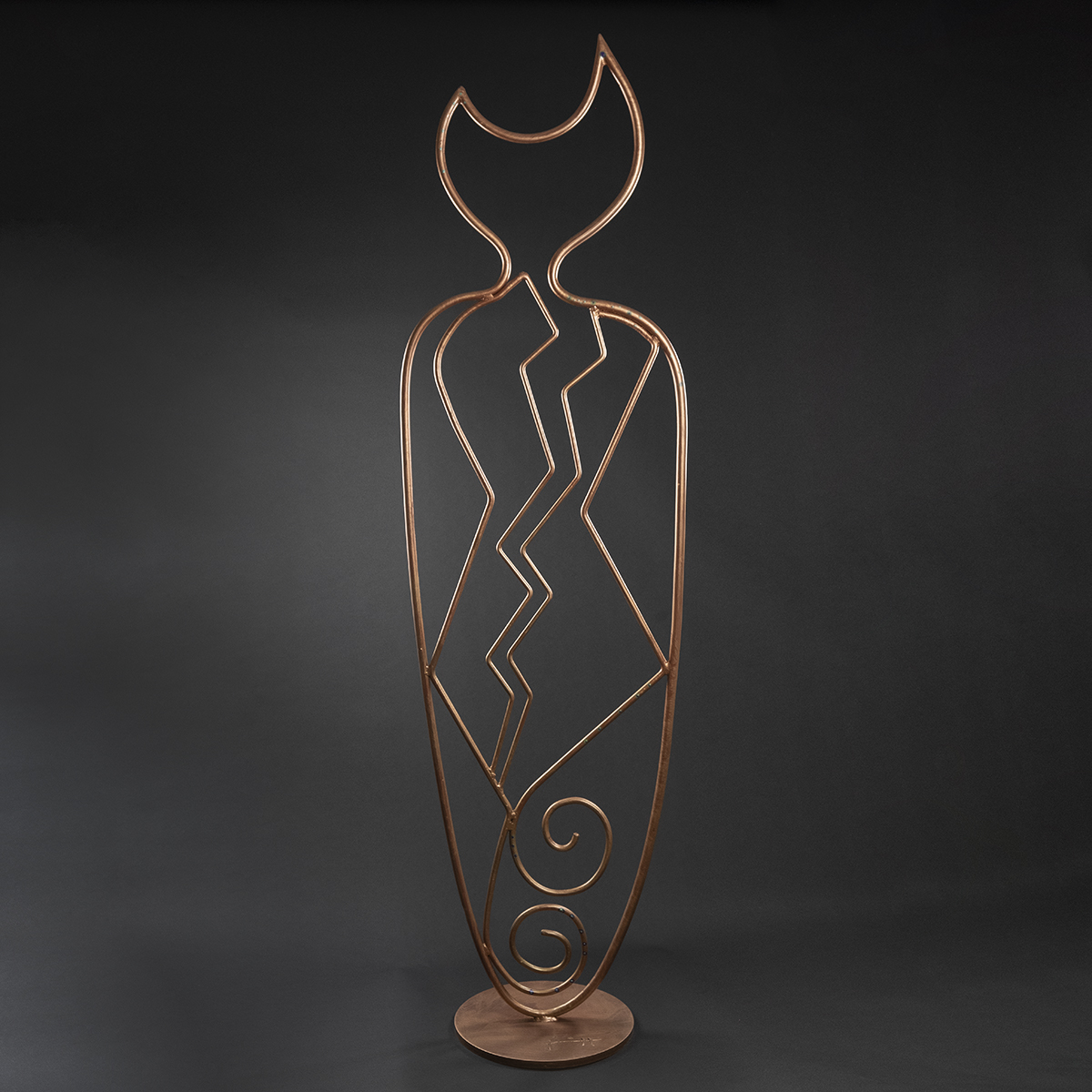 Monumental Free-Standing Star Spirit Helping the FlowSteel, Paint
Monumental Free-Standing Star Spirit Helping the FlowSteel, Paint- 75"h
- 21"w
- 14"d
$6,000 -
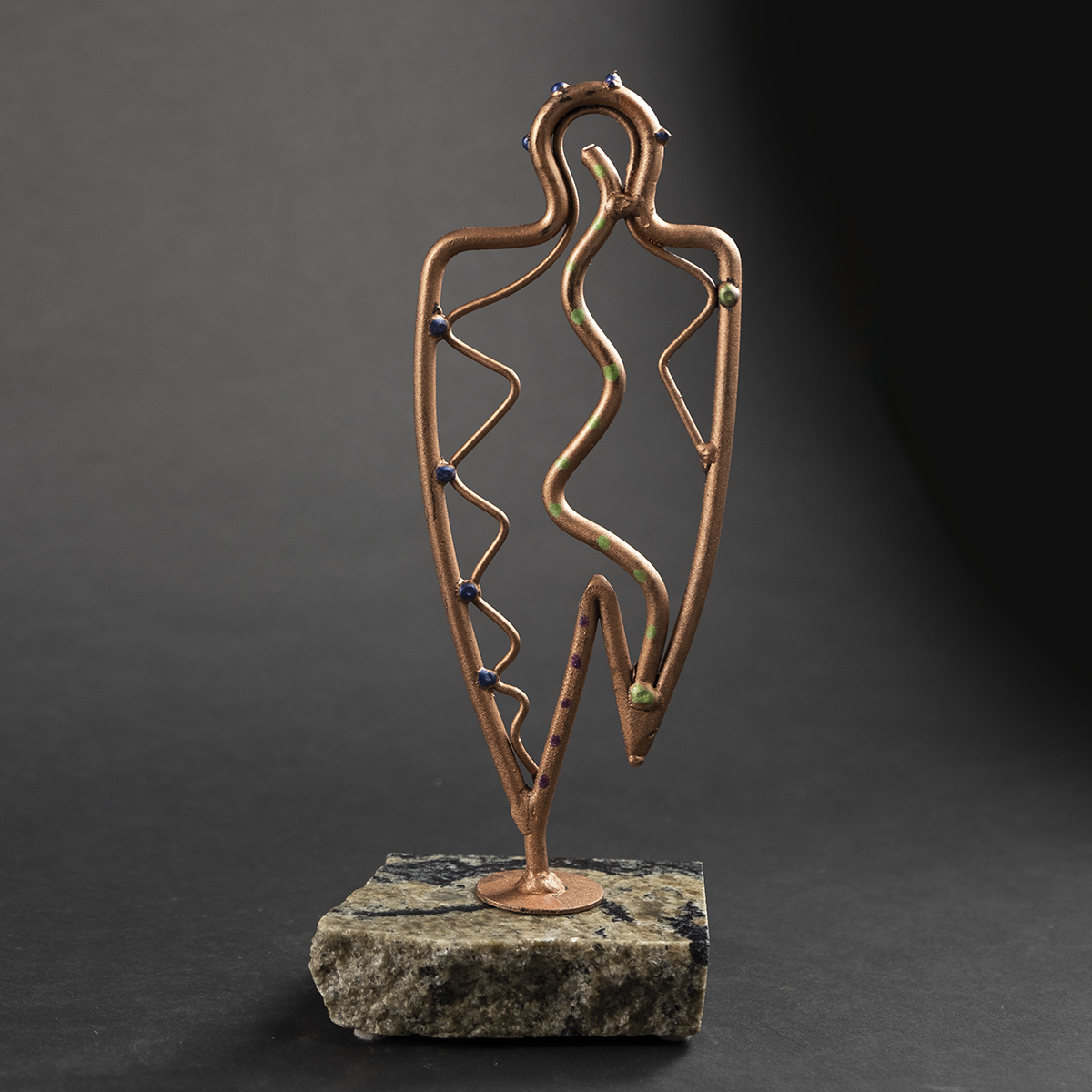 Star Person Appreciating BalanceMetal, Paint, Granite
Star Person Appreciating BalanceMetal, Paint, Granite- 10.5"h
- 4.25"w
- 3"d
$200 -
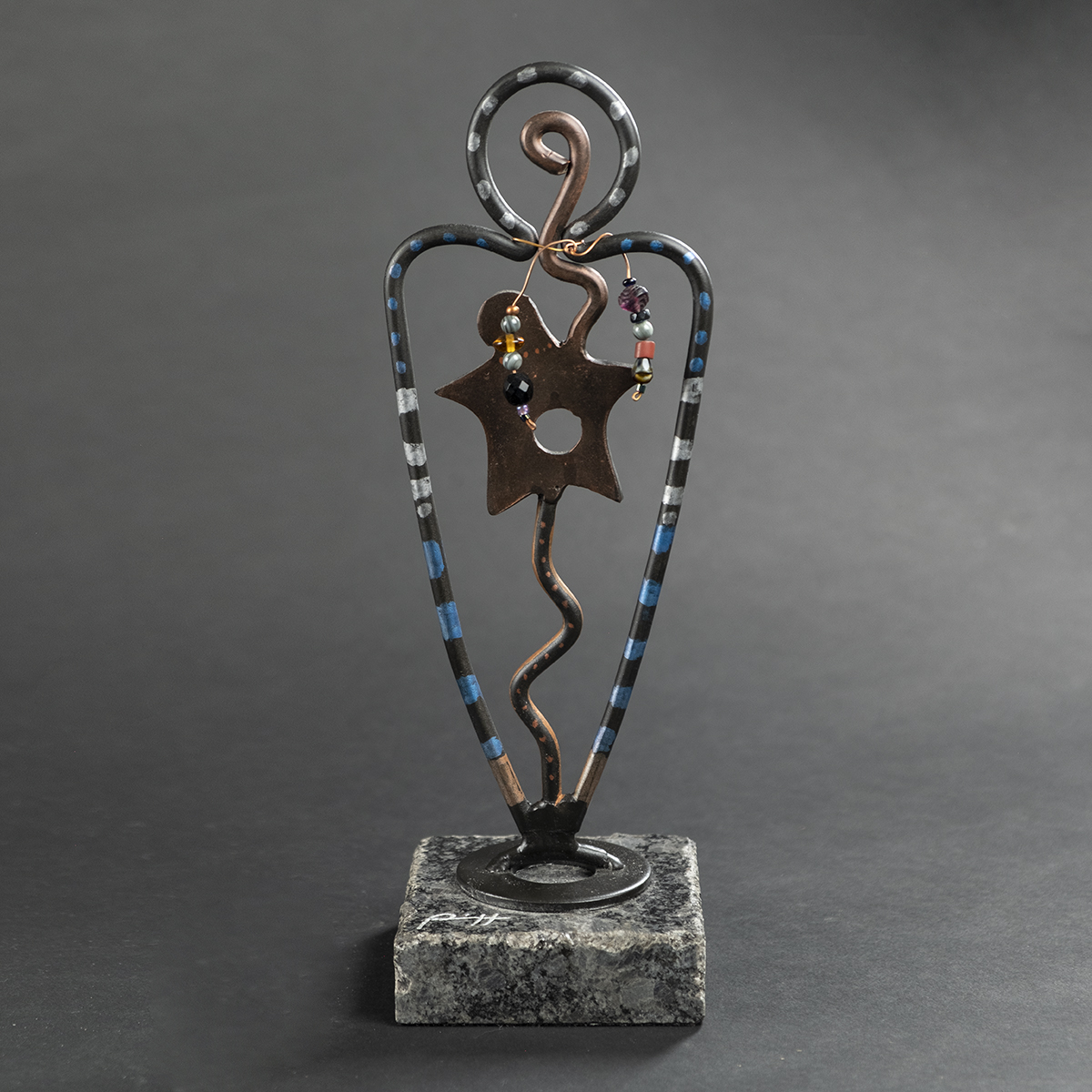 Star Person with Her Star ChildSteel, Copper, Beads, Granite Base
Star Person with Her Star ChildSteel, Copper, Beads, Granite Base- 11.75"h
- 4"w
- 4"d
$400 -
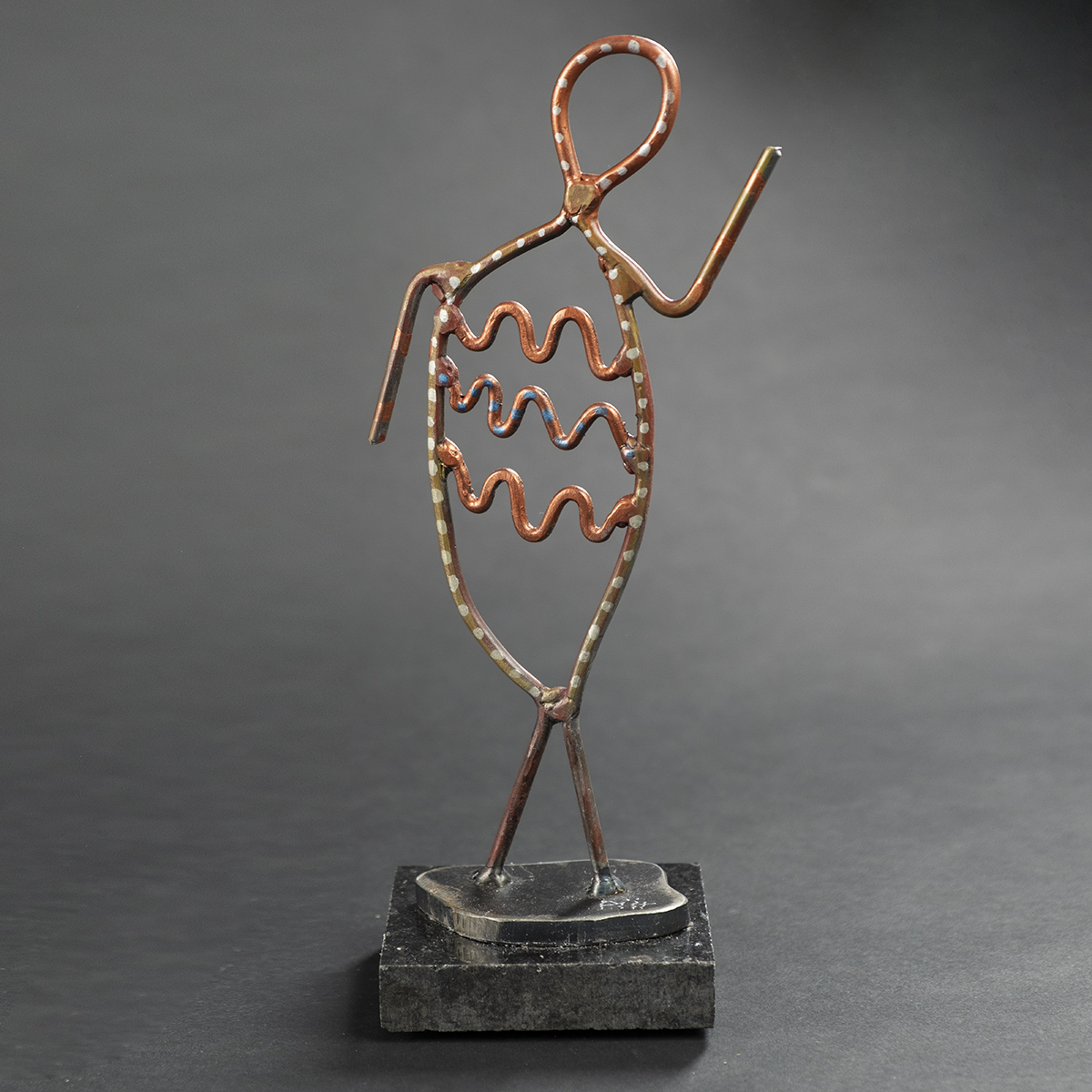 Star Spirit Winning the RaceSteel, Granite Base, and Paint
Star Spirit Winning the RaceSteel, Granite Base, and Paint- 11"h
- 4.25"w
- 3.25"d
$230 -
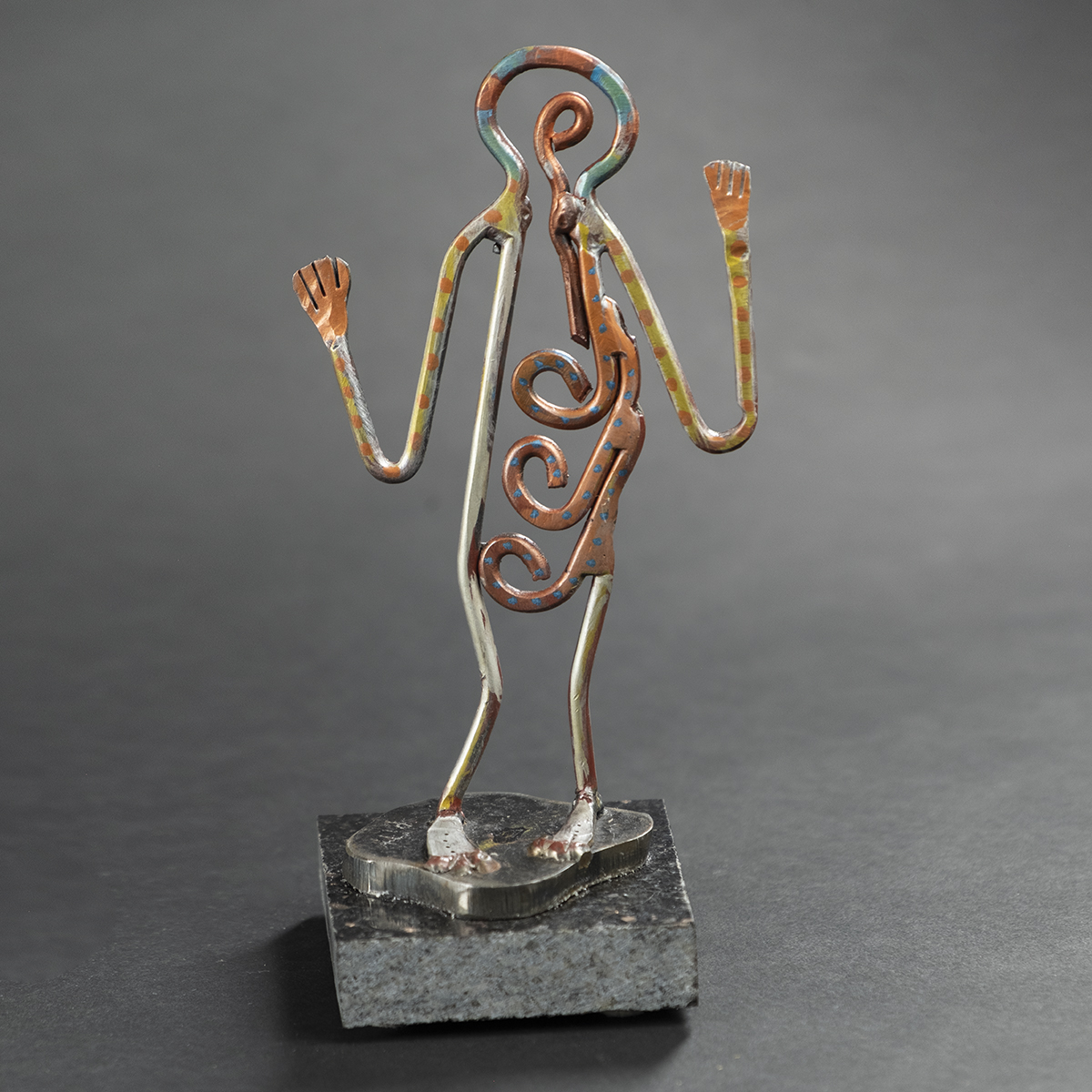 Star Spirit Just Won the RaffleSteel, Granite Base, and Paint
Star Spirit Just Won the RaffleSteel, Granite Base, and Paint- 8"h
- 4"w
- 3.25"d
$250 -
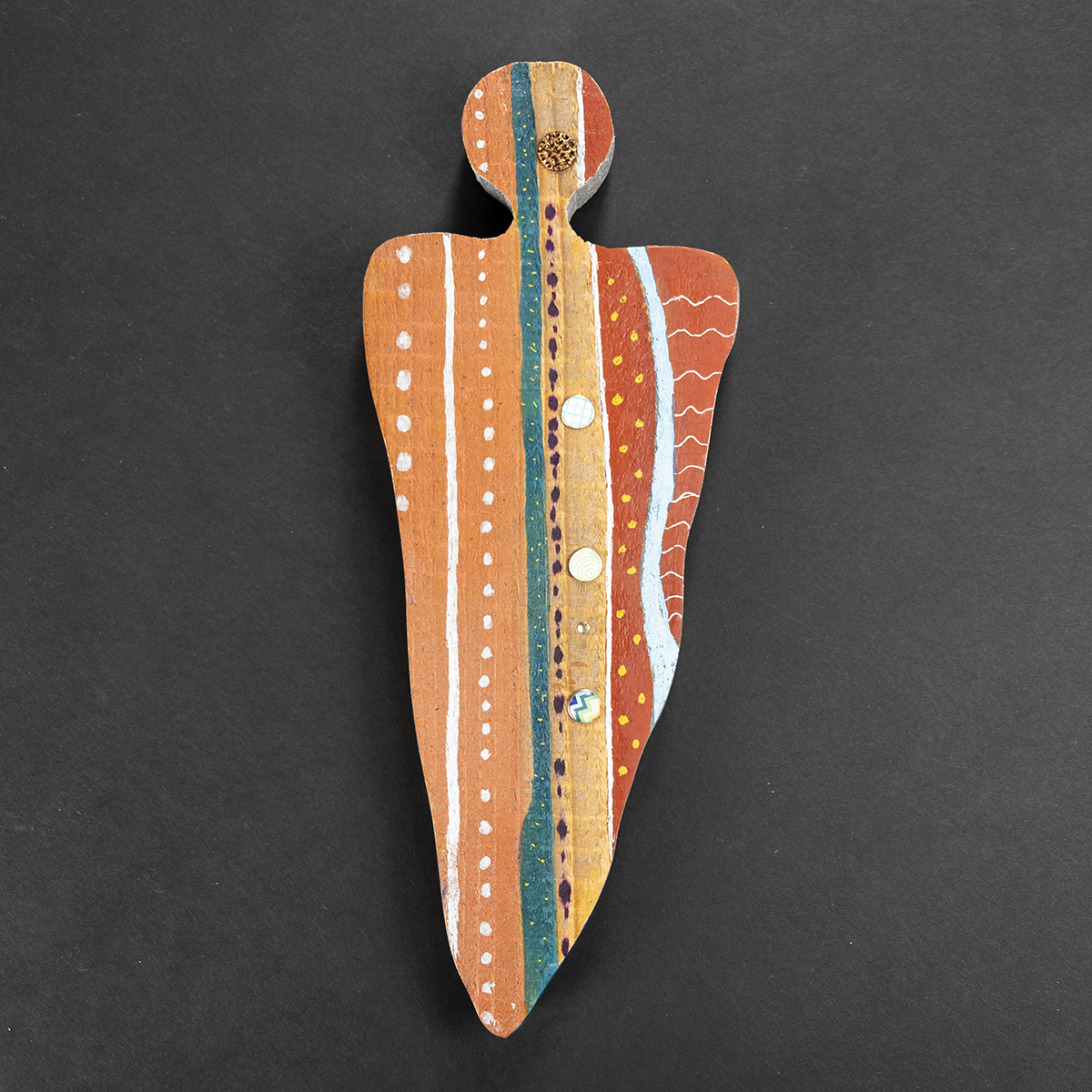 Star Spirit Youth Pondering Her FutureWood, Pigments, Copper, Push Pins
Star Spirit Youth Pondering Her FutureWood, Pigments, Copper, Push Pins- 12"h
- 4.75"w
- 1"d
$250 -
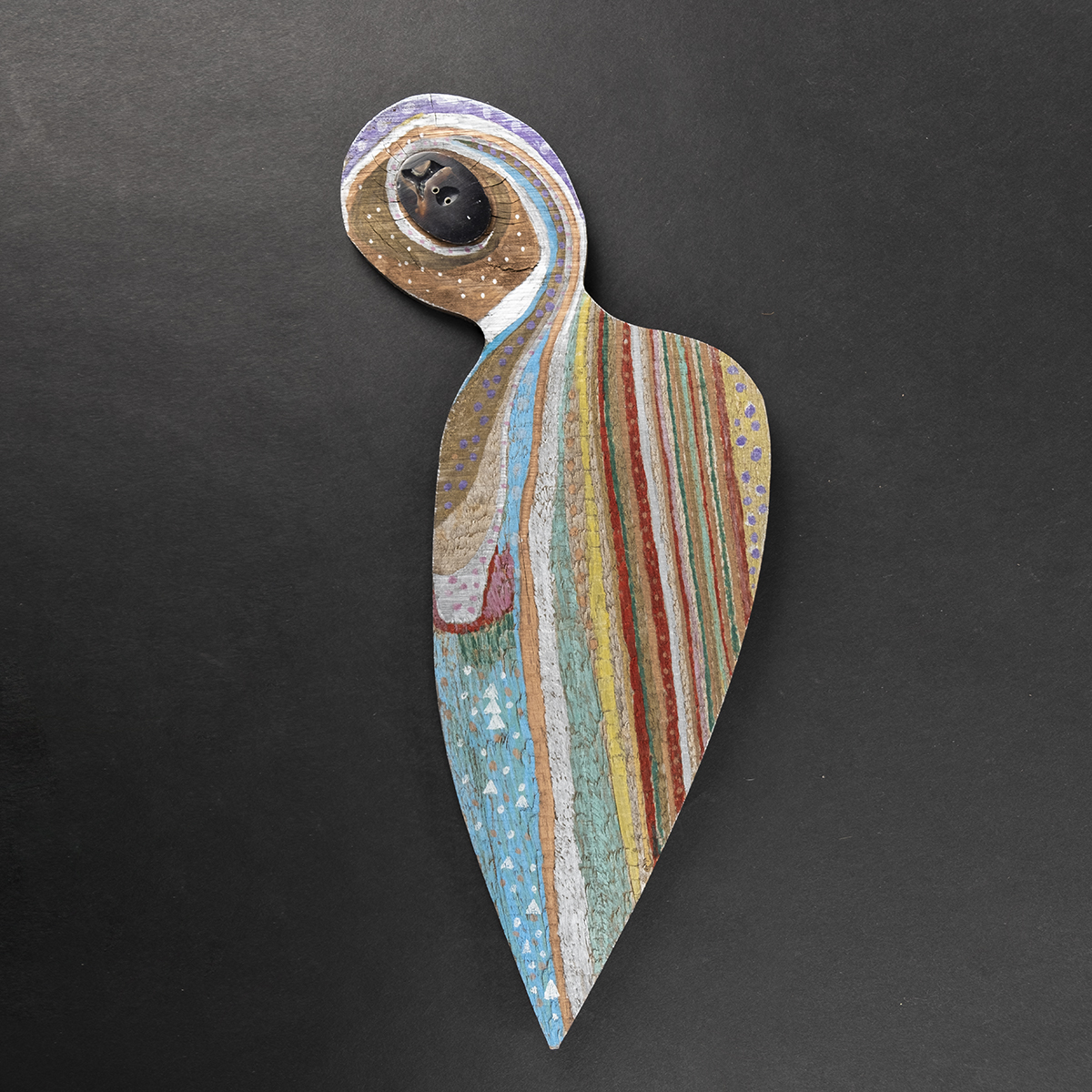 Star Spirit Feeling Like She Forgot SomethingWood, Pigments, Button
Star Spirit Feeling Like She Forgot SomethingWood, Pigments, Button- 15.5"h
- 7"w
- .5"d
$240 -
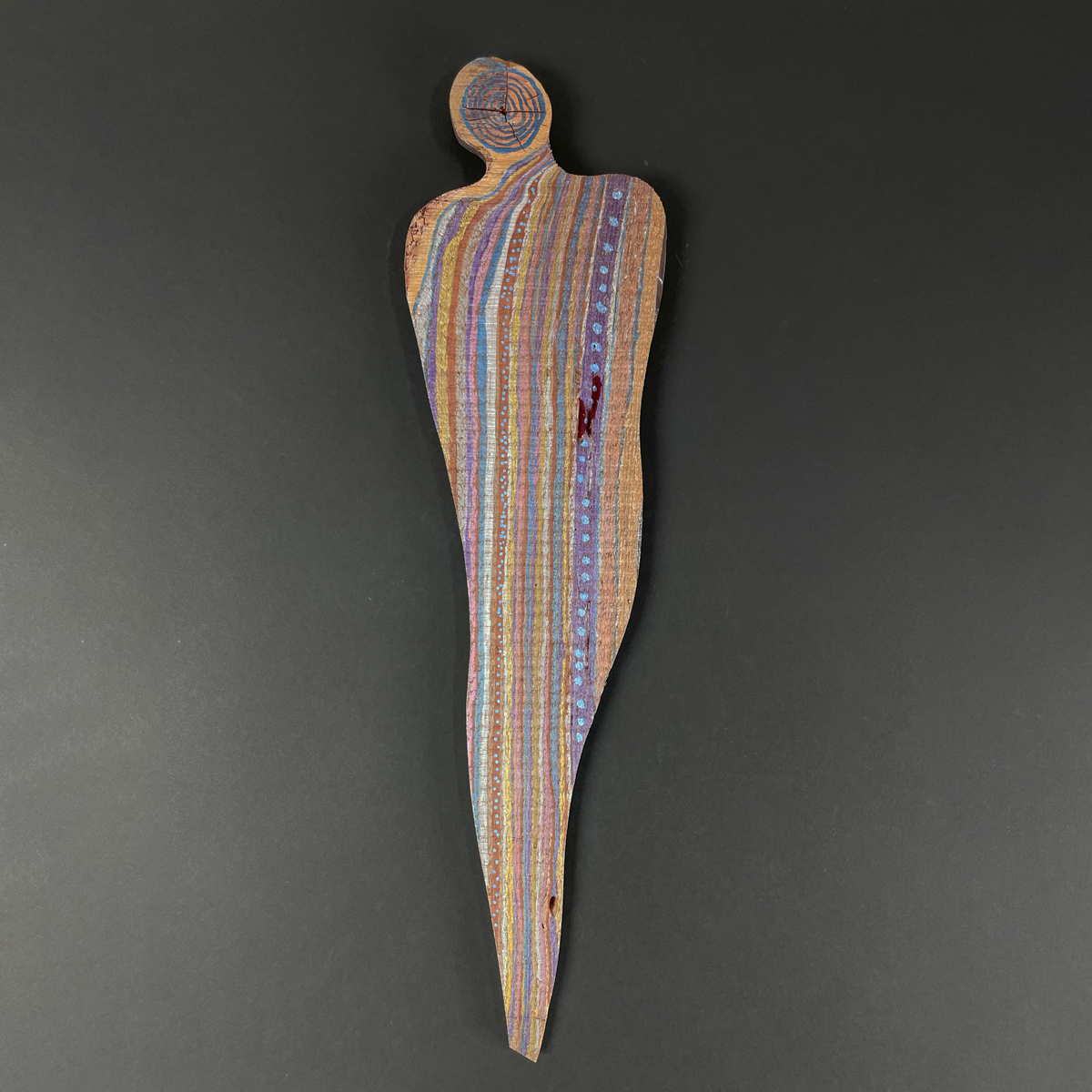 Star Person With Many TrailsWood Sculpture, Pigments
Star Person With Many TrailsWood Sculpture, Pigments- 20.25"h
- 4"w
- 1"d
$280 -
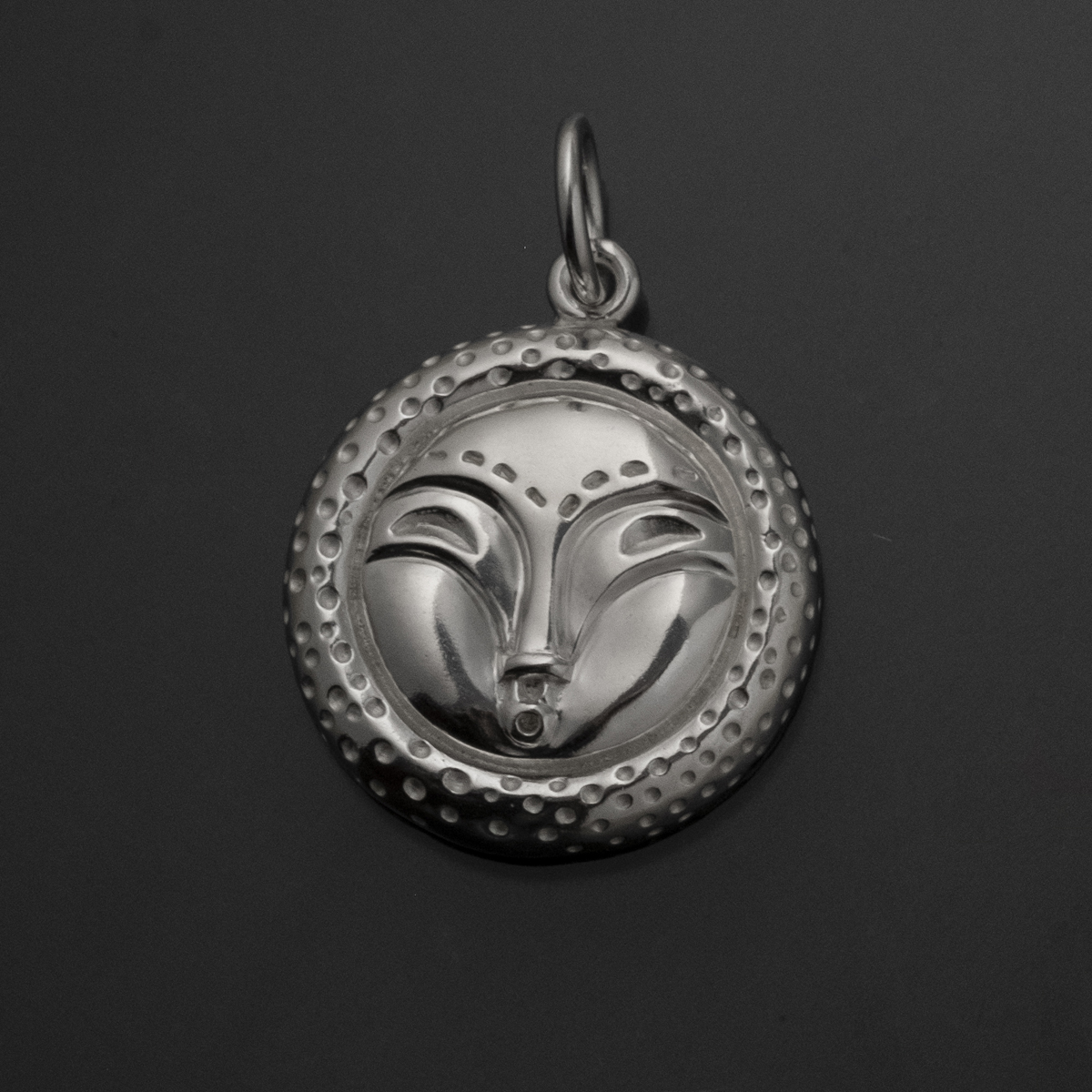 Grandmother Moon PendantSterling Silver
Grandmother Moon PendantSterling Silver- 1.25"h
$100 -
 Coyote With Snout PendantSterling Silver
Coyote With Snout PendantSterling Silver- 1"h
Contact us to Special Order -
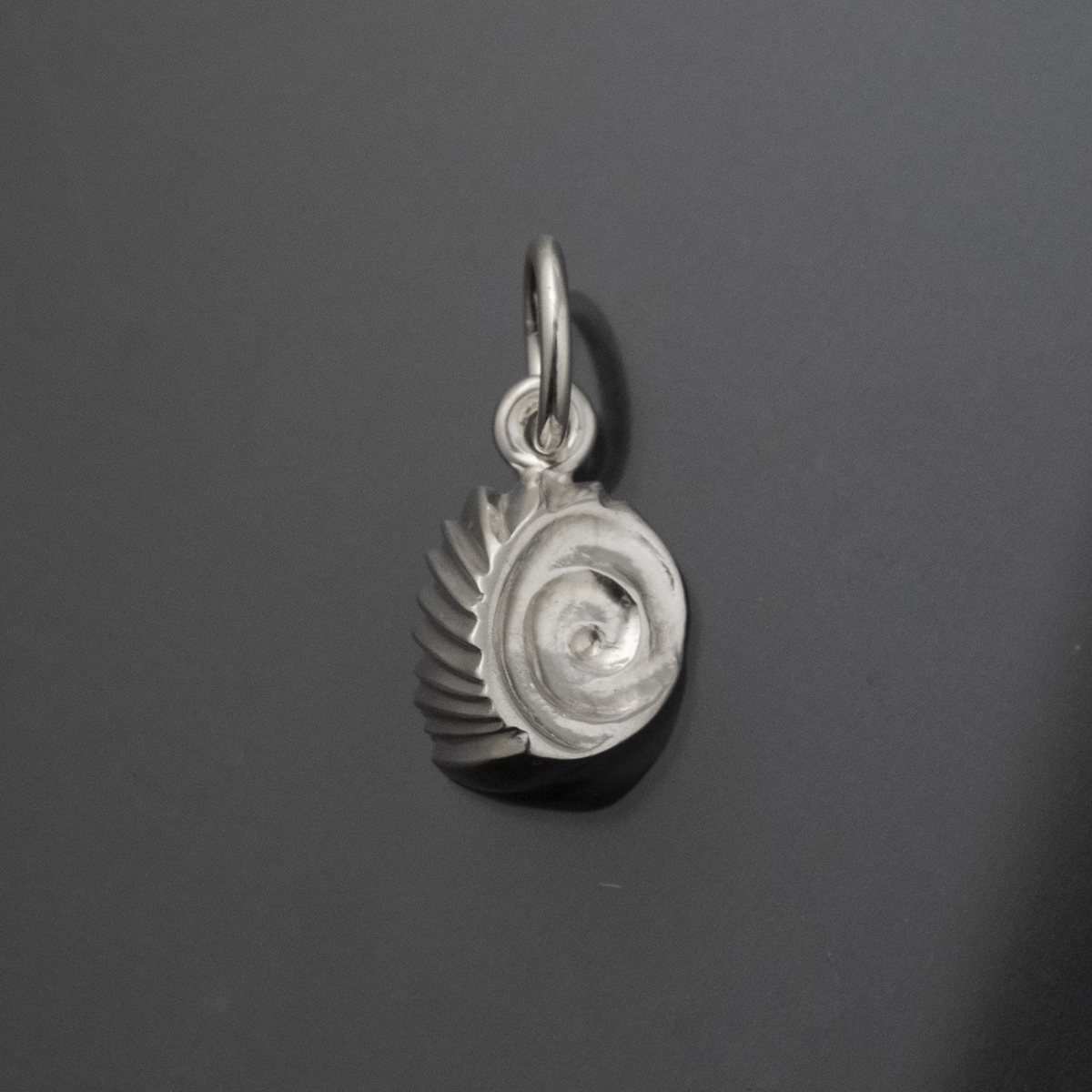 Dreamer Head Pendant (Right)Sterling Silver
Dreamer Head Pendant (Right)Sterling Silver- .75"h
$75 - Contact us to special order -
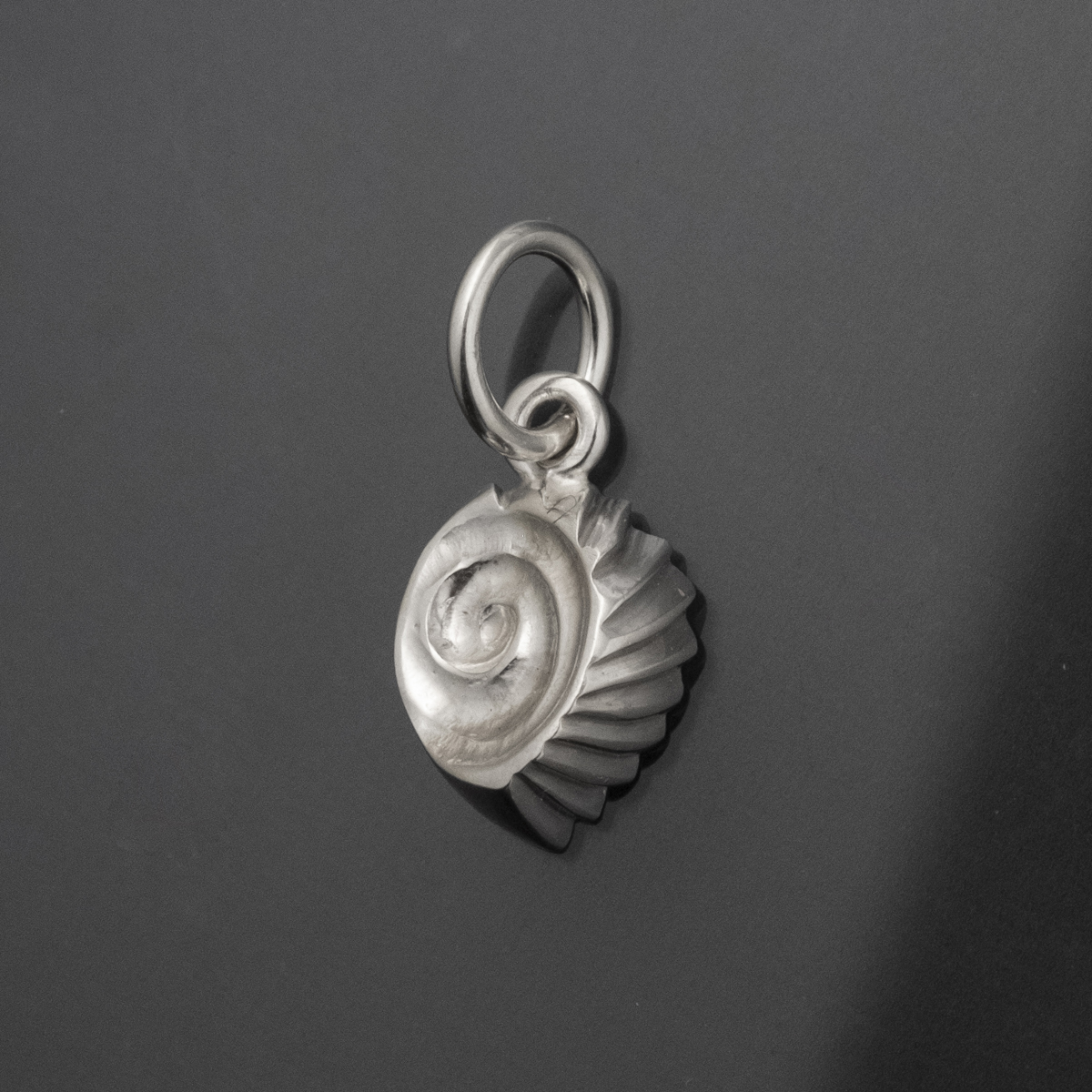 Dreamer Head Pendant (Left)Sterling Silver
Dreamer Head Pendant (Left)Sterling Silver- .75"h
Contact us to special order -
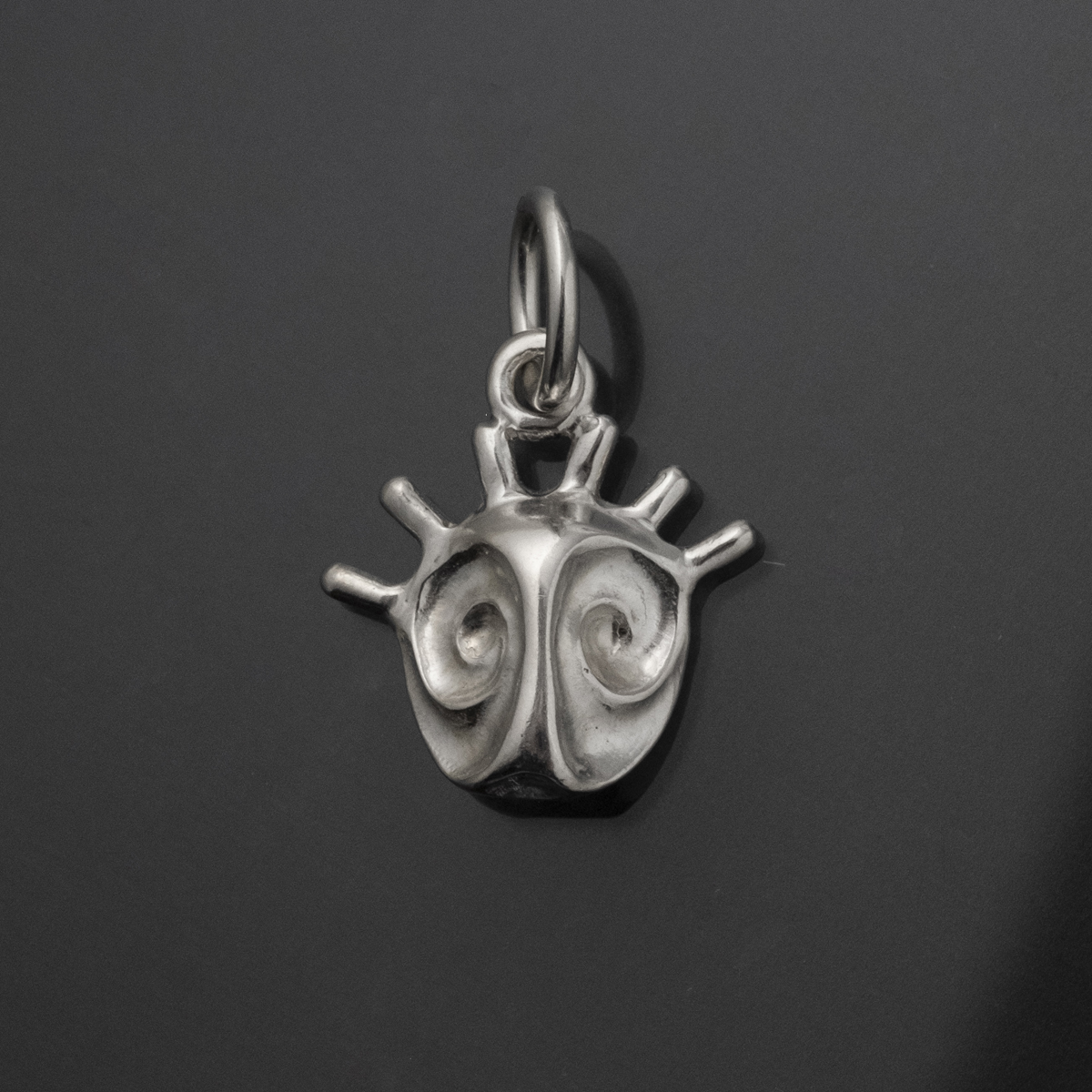 Shadow Spirit Head PendantSterling Silver
Shadow Spirit Head PendantSterling Silver- 1"h
$75 -
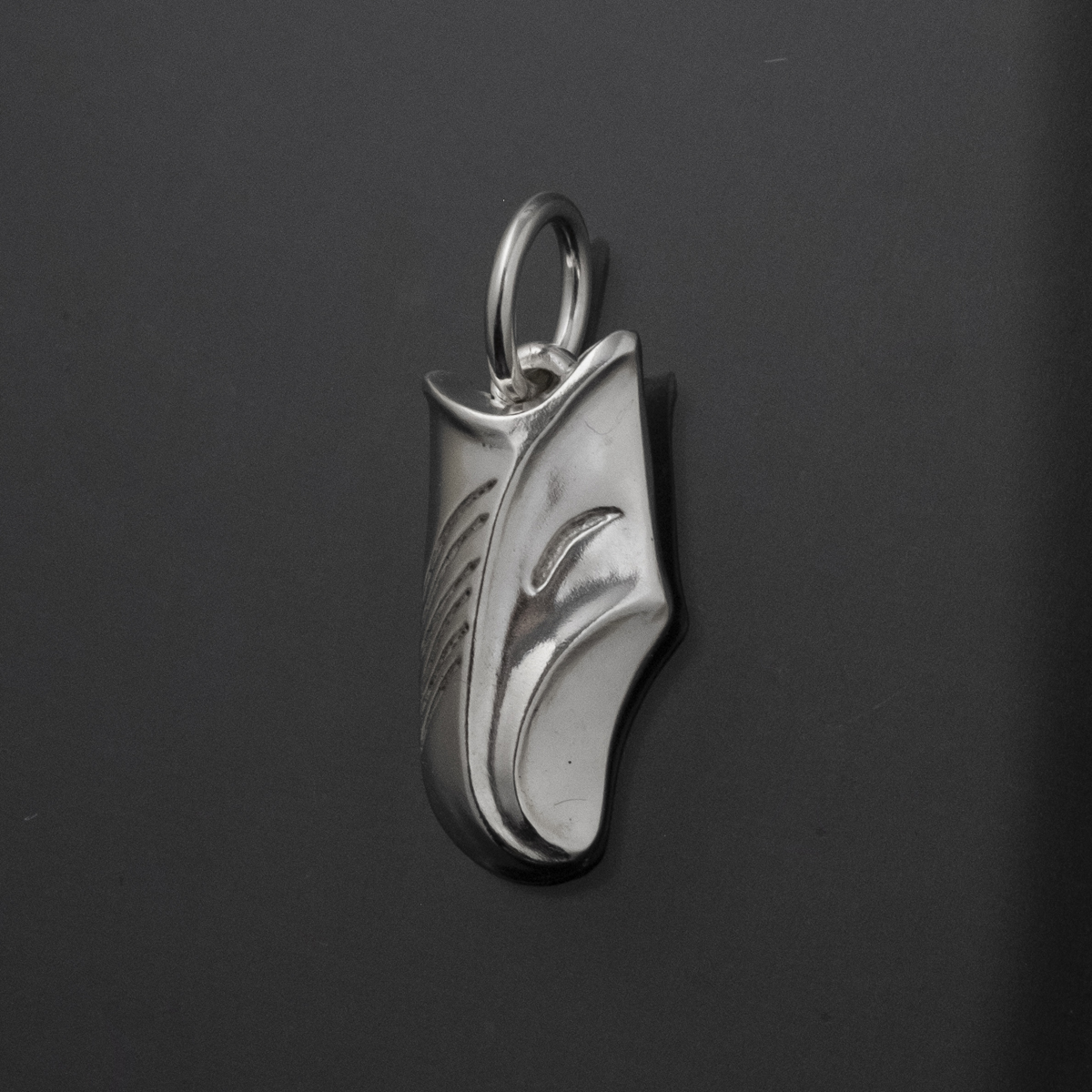 Abstract Coyote PendantSterling Silver
Abstract Coyote PendantSterling Silver- 1"h
$75 - Contact us to special order -
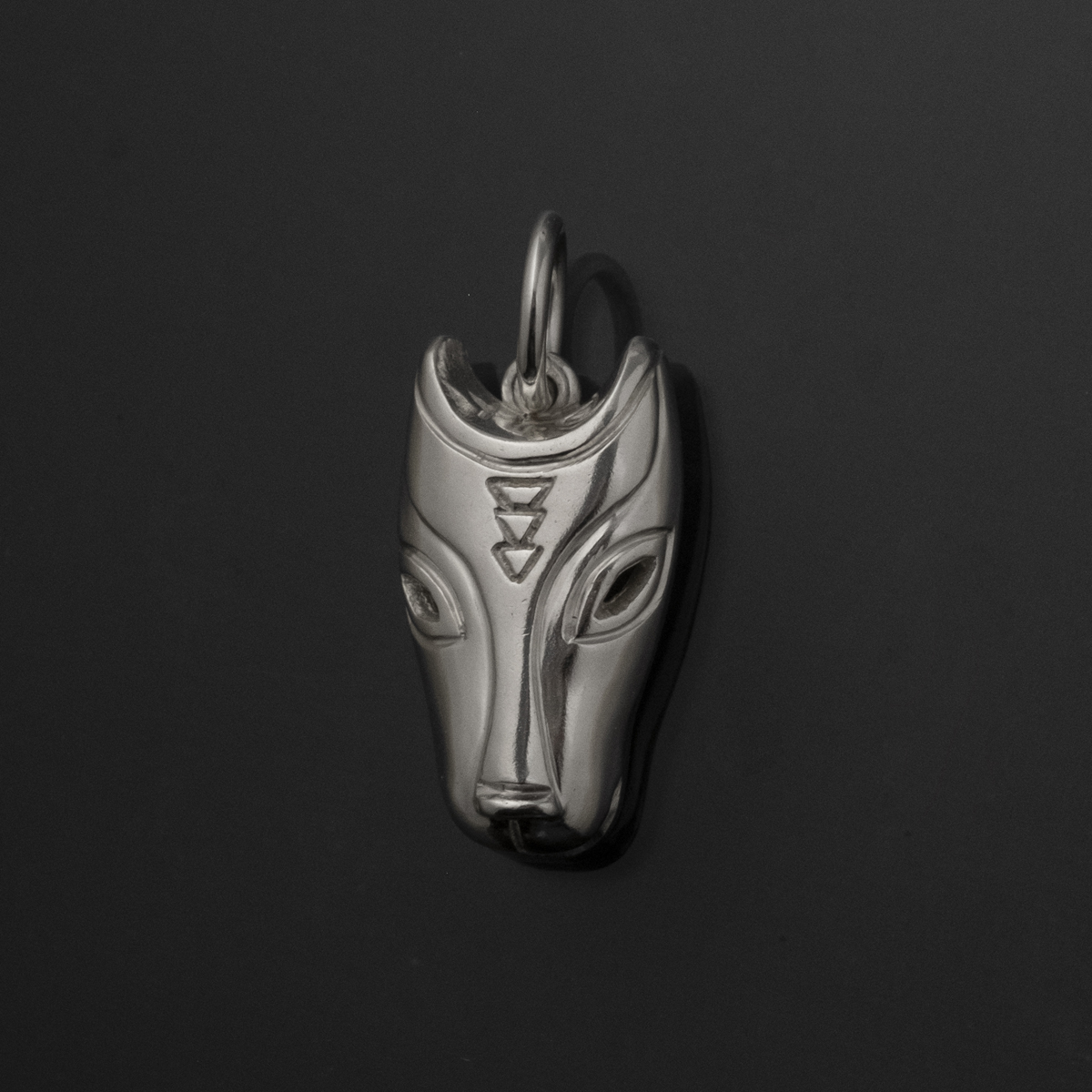 Small Coyote PendantSterling Silver
Small Coyote PendantSterling Silver- 1"h
Contact Us to Special Order -
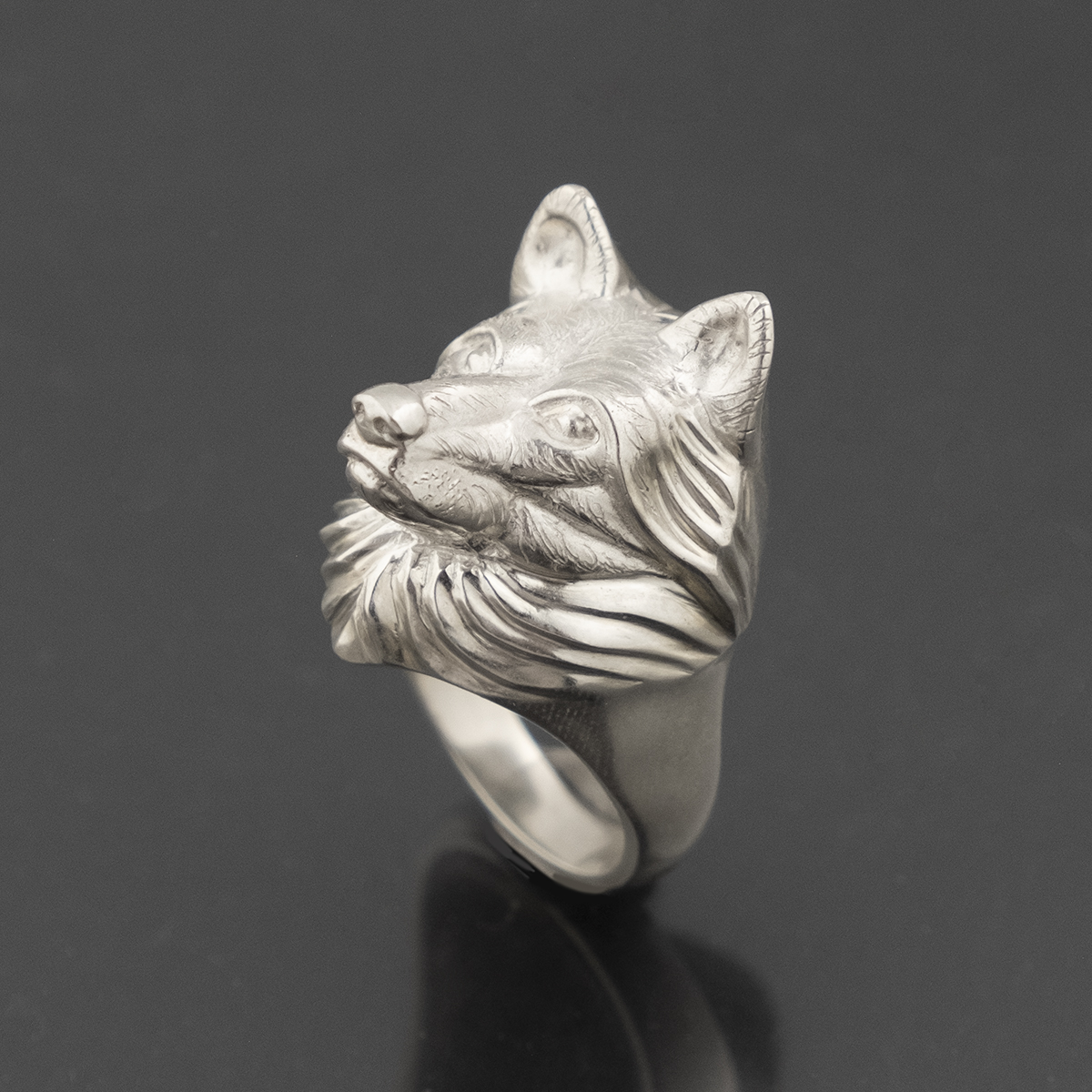 Wolf RingSterling Silver
Wolf RingSterling Silver- 1"h
- 1.5"w
Contact us to special order -
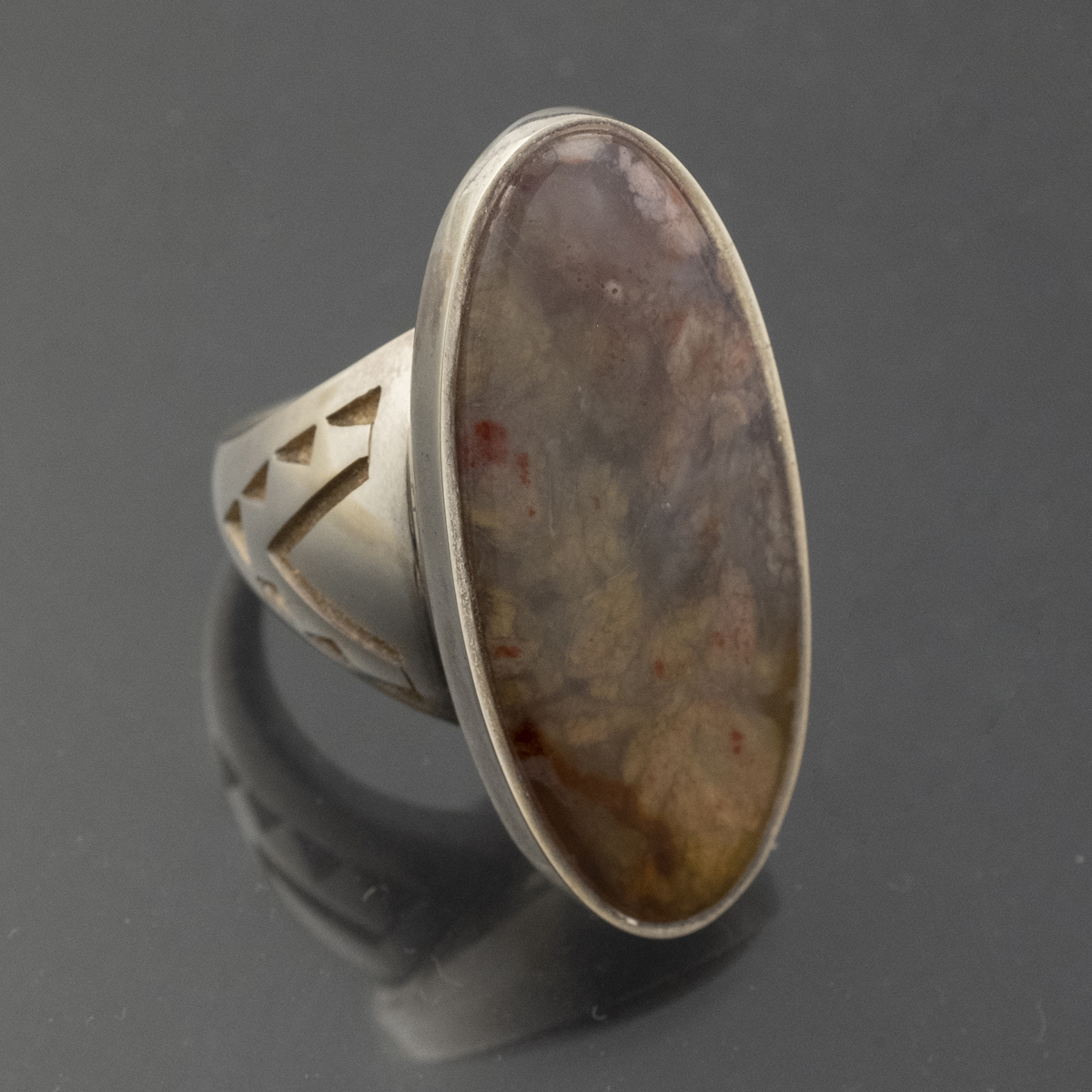 Spider Web Jasper RingJasper, Sterling Silver
Spider Web Jasper RingJasper, Sterling Silver- 1.69"h
- 1"w
$650 -
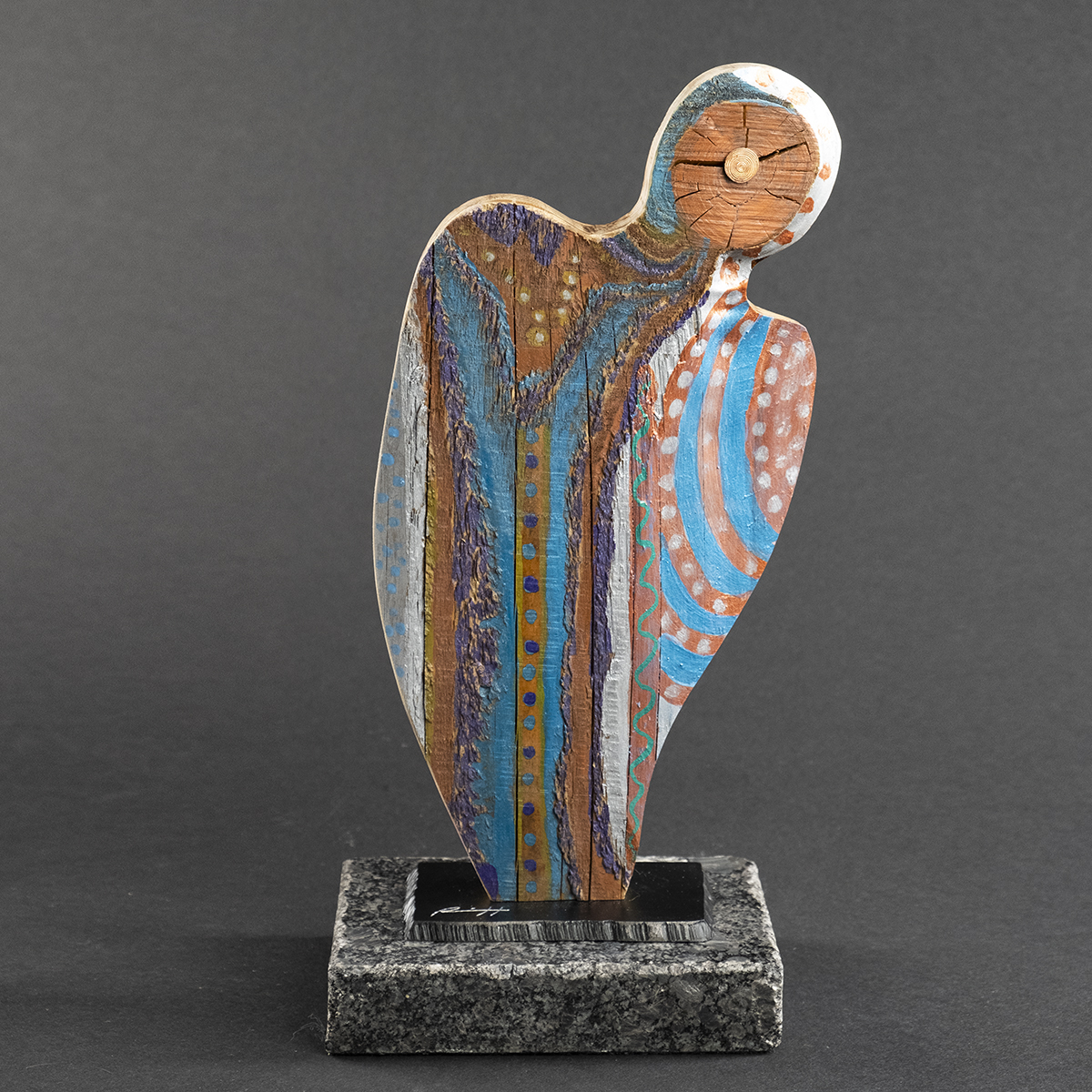 Star Spirit Leaning Too Far Left, He Needs To Get BalancedWood, Paint, Copper, Granite Base
Star Spirit Leaning Too Far Left, He Needs To Get BalancedWood, Paint, Copper, Granite Base- 12.25"h
- 5.75"w
- 4"d
$500 -
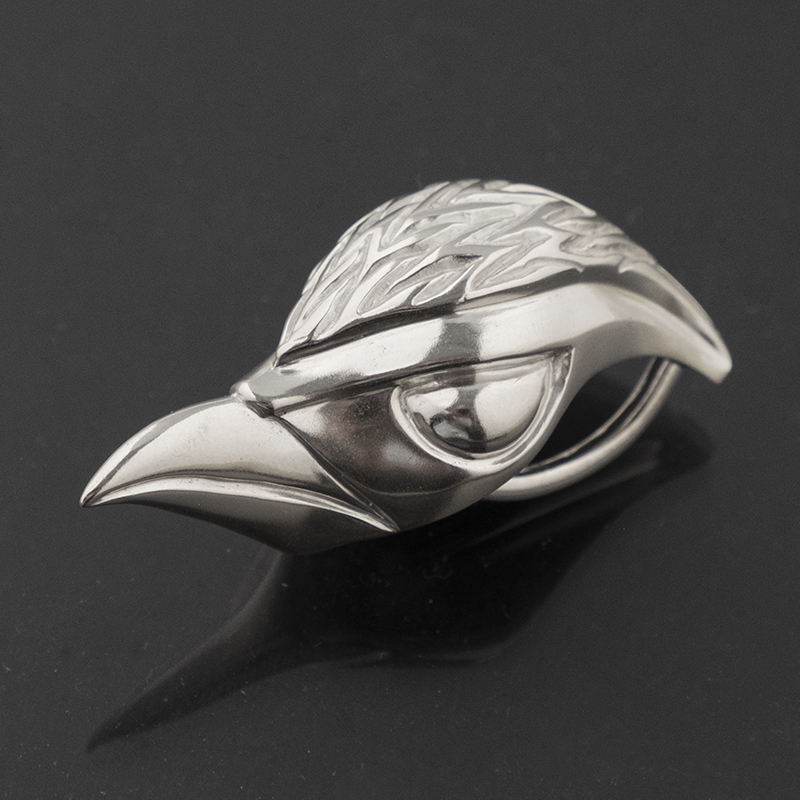 Spirit Bird PendantSterling Silver
Spirit Bird PendantSterling Silver- 1.75"h
- .75"w
- .75"d
Contact Us to Special Order -
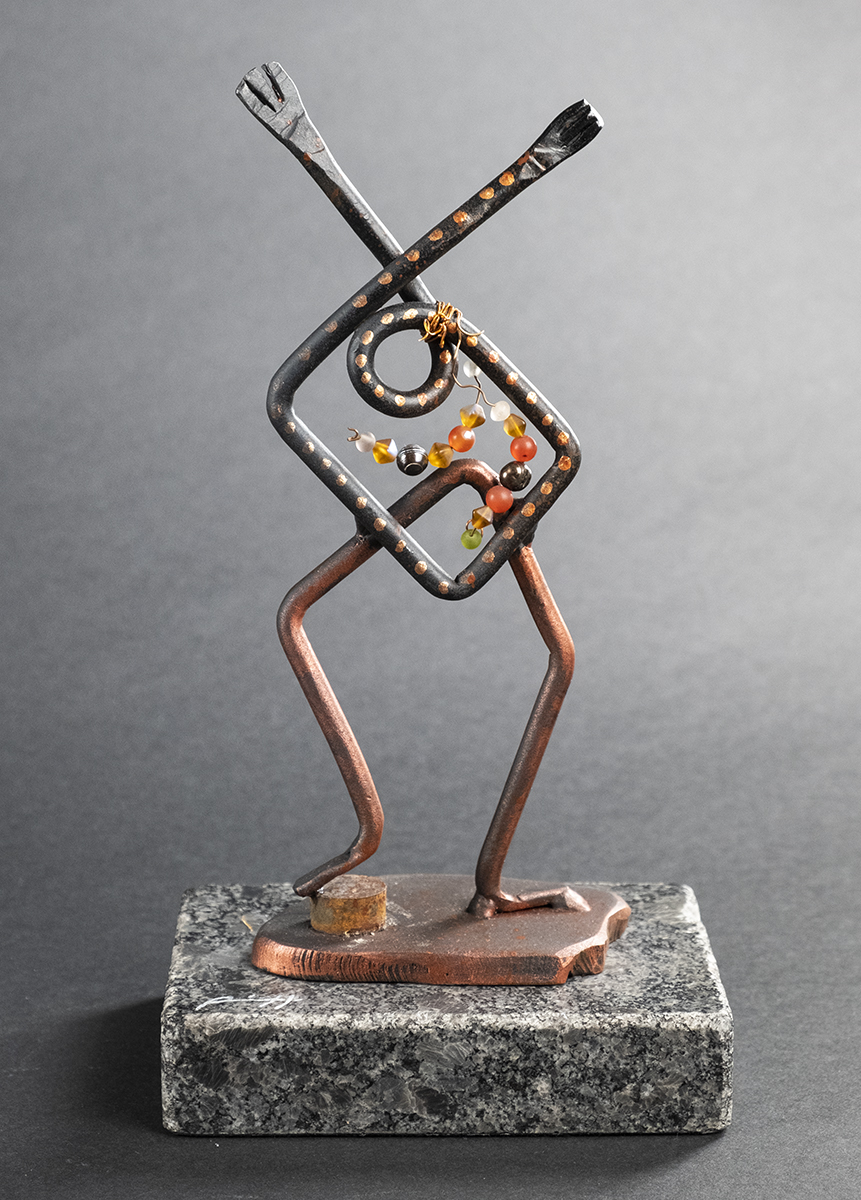 Star Spirit Taking a BreakSteel, Beads, Copper Wire, Granite Base
Star Spirit Taking a BreakSteel, Beads, Copper Wire, Granite Base- 9.5"h
- 5.15"w
- 4.18"d
$390 -
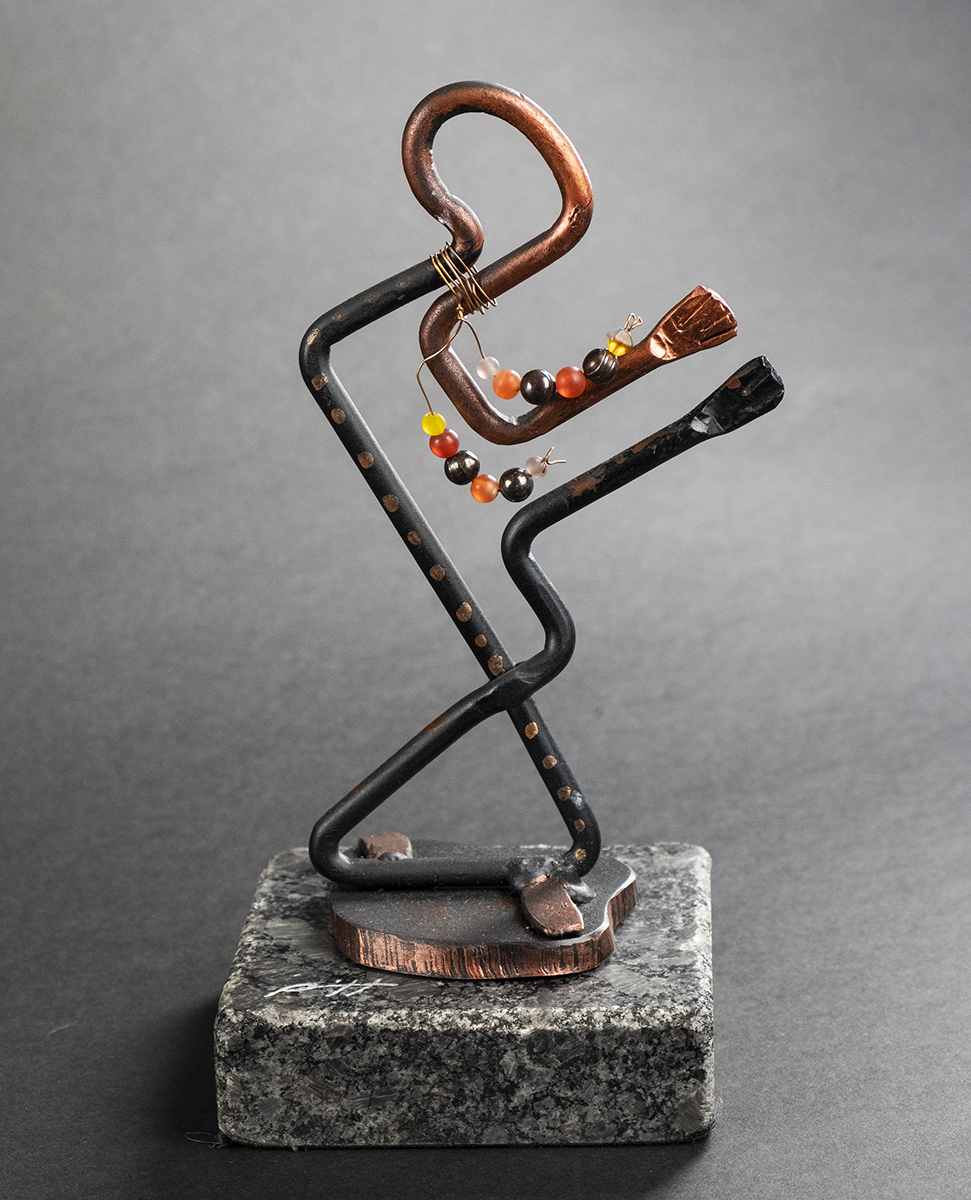 The Leader of the Star SpiritsSteel, Beads, Copper Wire, Granite Base
The Leader of the Star SpiritsSteel, Beads, Copper Wire, Granite Base- 8.38"h
- 4"w
- 4"d
$390 -
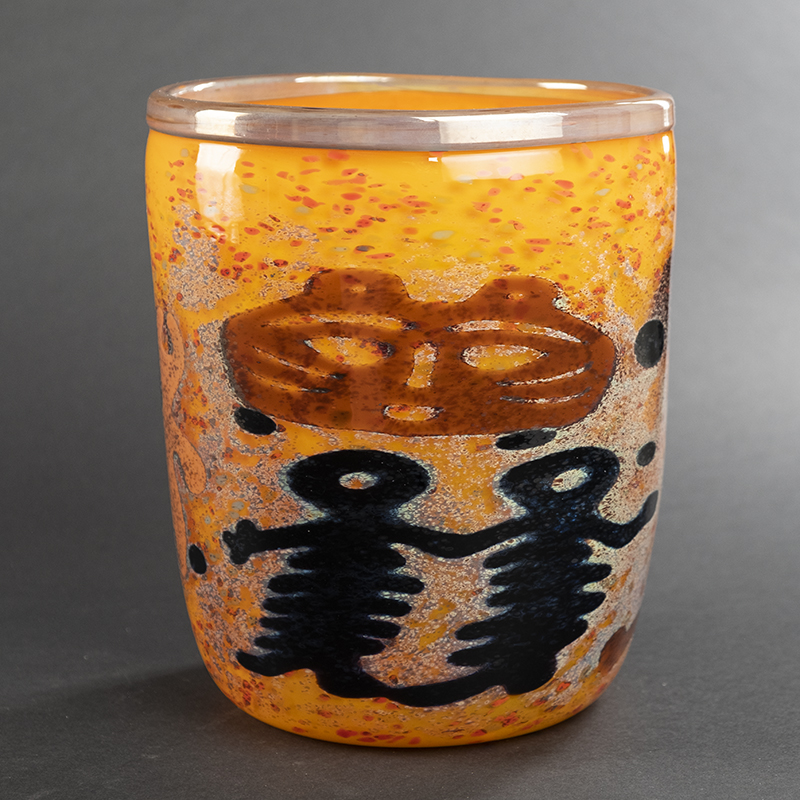 She Watches the Sunrise on Star PeopleBlown Glass with Glass Cutouts
She Watches the Sunrise on Star PeopleBlown Glass with Glass Cutouts- 9.75"h
- 7.75"w
- 7.75"d
$3,500 -
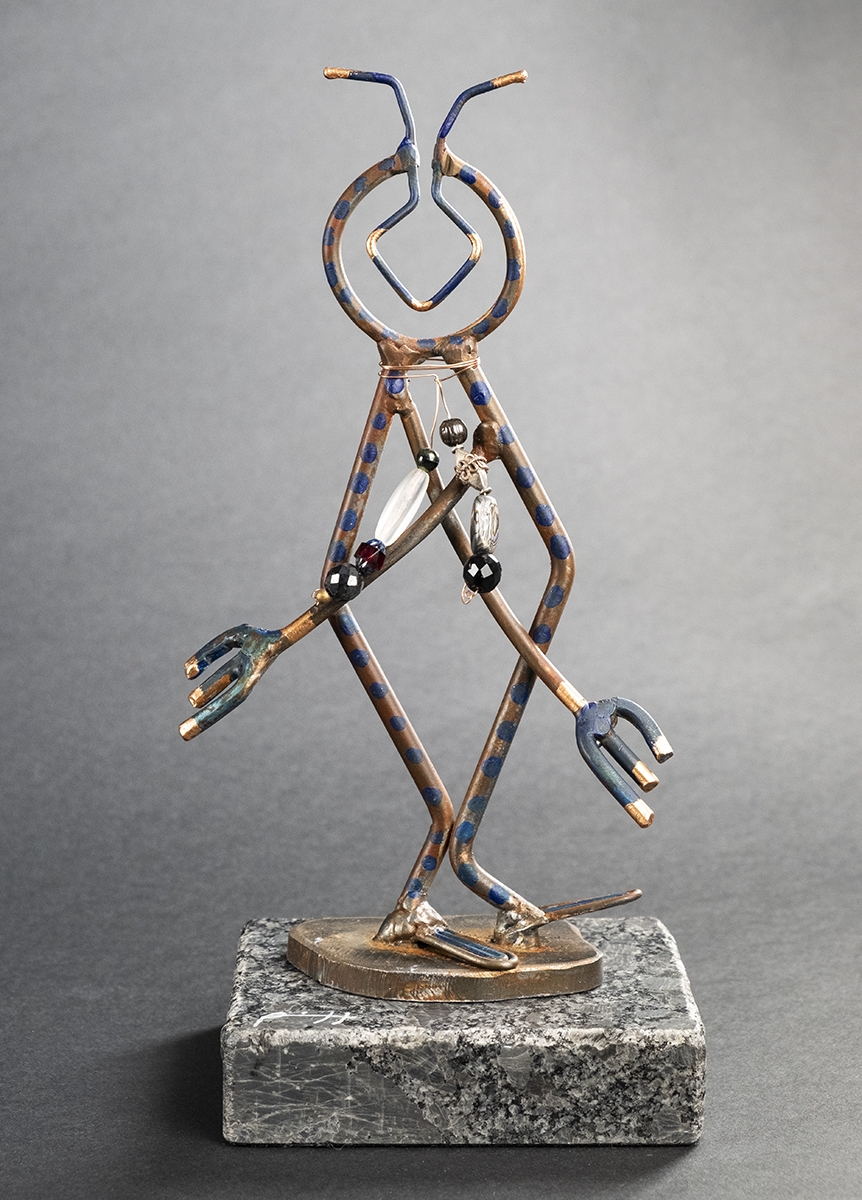 Star Person Checking Out the …?Steel, Beads, Granite Base
Star Person Checking Out the …?Steel, Beads, Granite Base- 10.25"h
- 4.34"w
- 3.75"d
$390 -
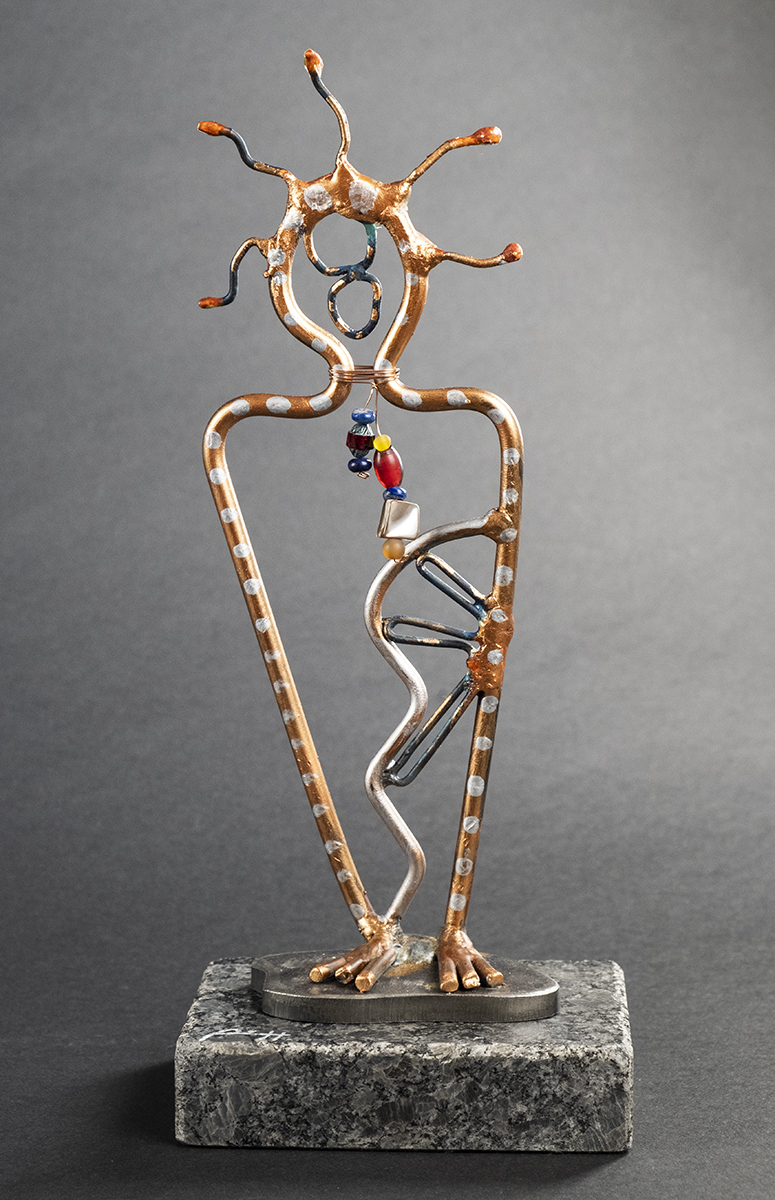 Teddy 3 Toes Ready To…?Steel, Copper, Beads, Granite Base
Teddy 3 Toes Ready To…?Steel, Copper, Beads, Granite Base- 11.25"h
- 5"w
- 3.5"d
$390 -
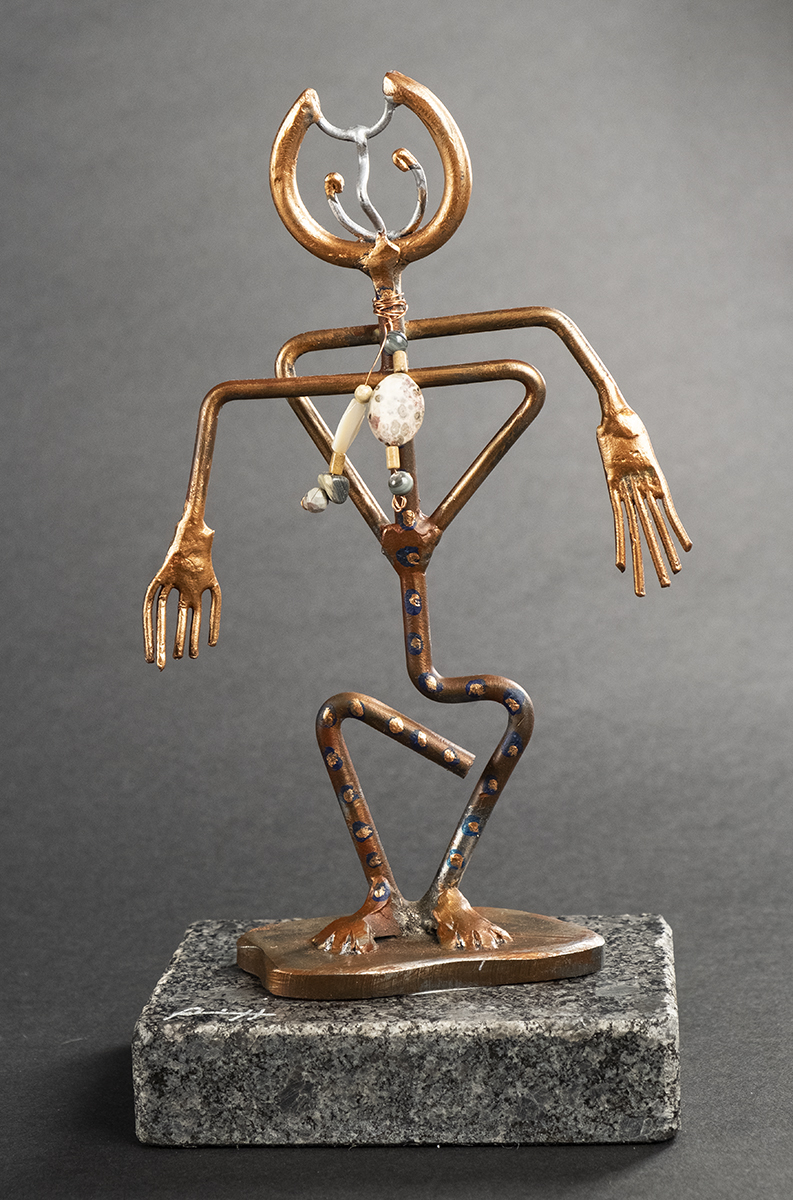 Kitty Cat Feeling…?Steel, Copper, Beads, Granite Base
Kitty Cat Feeling…?Steel, Copper, Beads, Granite Base- 8.5"h
- 5.25"w
- 2.5"d
$390 -
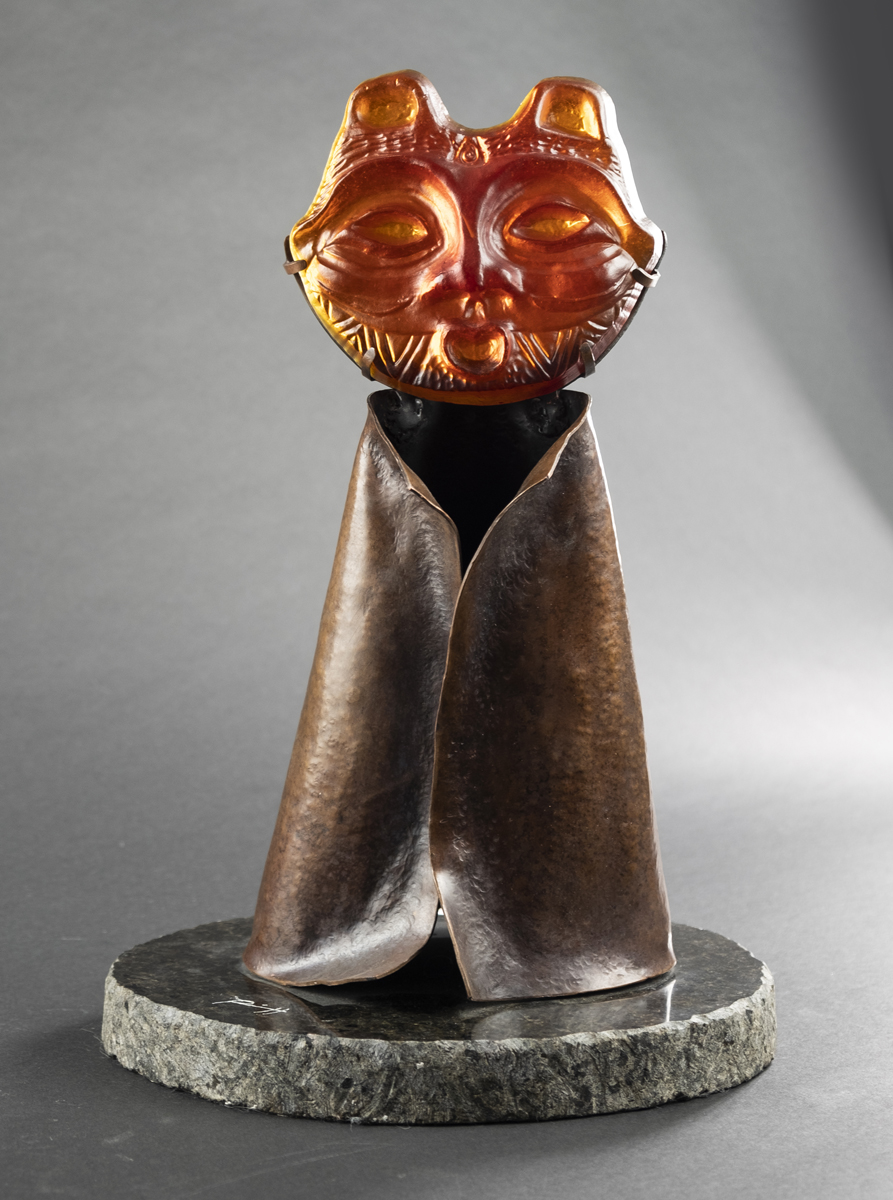 She Who Watches with Copper CloakCopper, Glass, Granite Base
She Who Watches with Copper CloakCopper, Glass, Granite Base- 15.5"h
- 10.5"w
- 8.5"d
$2,800 -
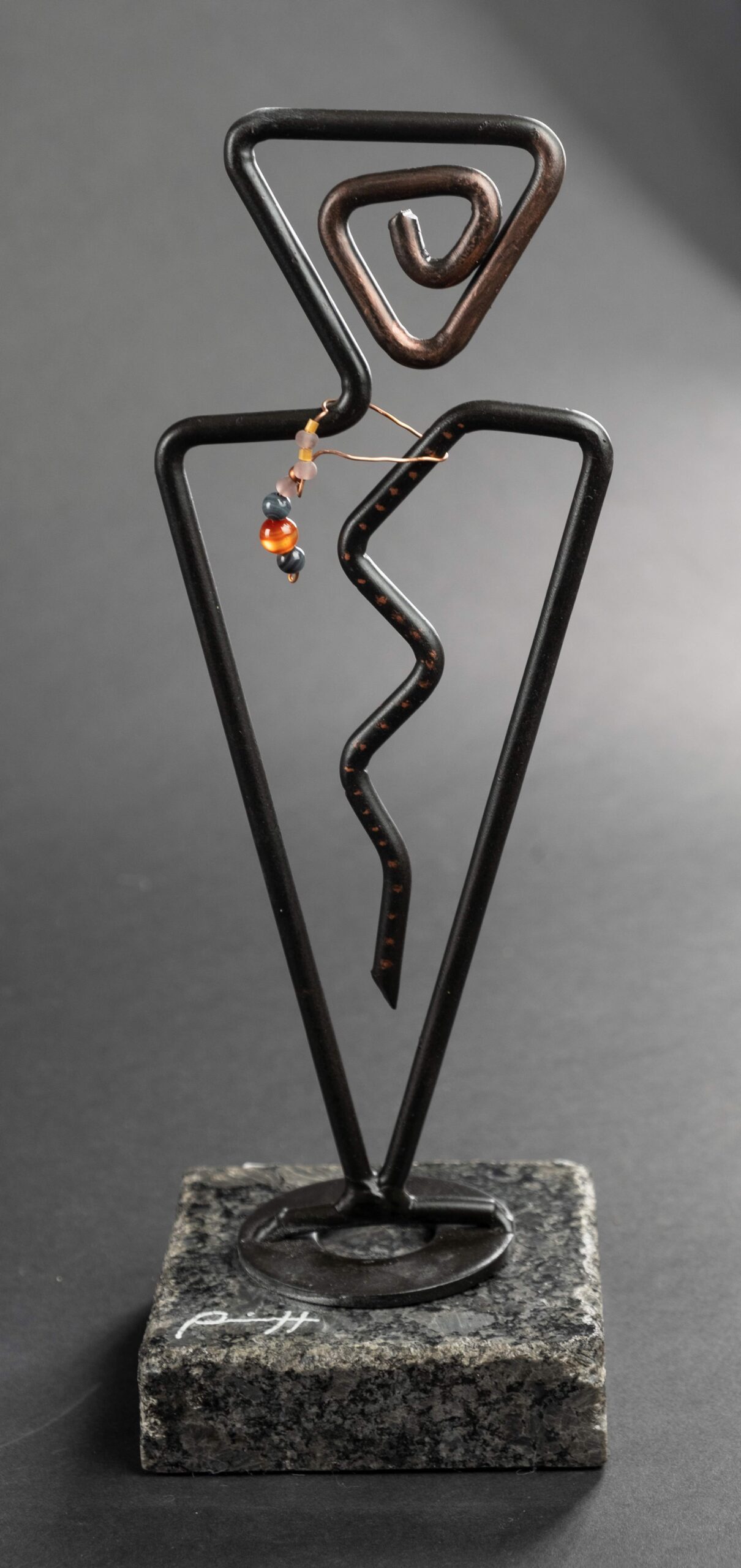 Star People Feeling Peaceful EnergySteel, Copper, Glass, Granite Base
Star People Feeling Peaceful EnergySteel, Copper, Glass, Granite Base- 11.25"h
- 3.75"w
- 3.75"d
$440 -
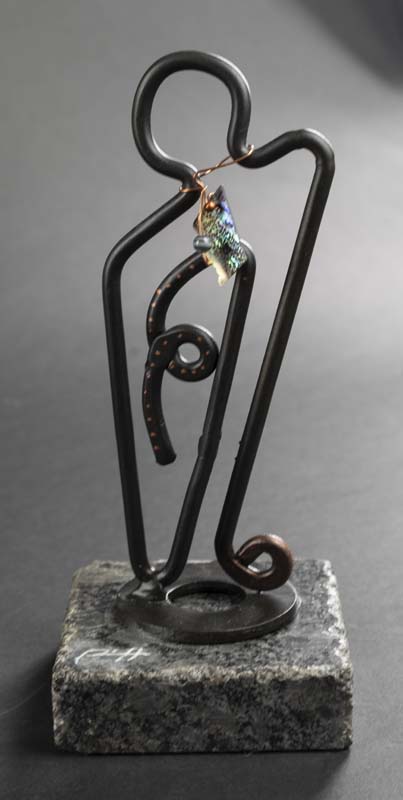 Star People Sliding Against the GrainSteel, Glass, Abalone Shell, Granite Base
Star People Sliding Against the GrainSteel, Glass, Abalone Shell, Granite Base- 9"h
- 3.75"w
- 3.75"d
$440 -
 Star Person Loving the Falling StarsHigh Fired Clay with Shino Glaze, Granite Base
Star Person Loving the Falling StarsHigh Fired Clay with Shino Glaze, Granite Base- 17"h
- 5"w
- 4"d
$1,200 -
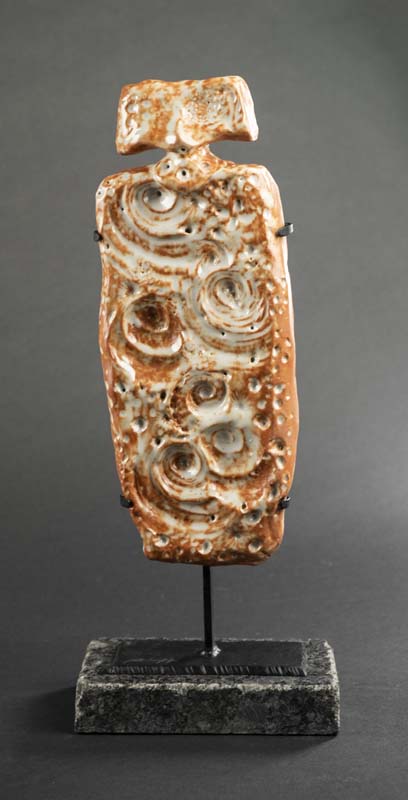 Star Person Enjoying the Swirling StarsHigh Fired Clay with Shino Glaze, Granite Base
Star Person Enjoying the Swirling StarsHigh Fired Clay with Shino Glaze, Granite Base- 15"h
- 6"w
- 4"d
$1,200 -
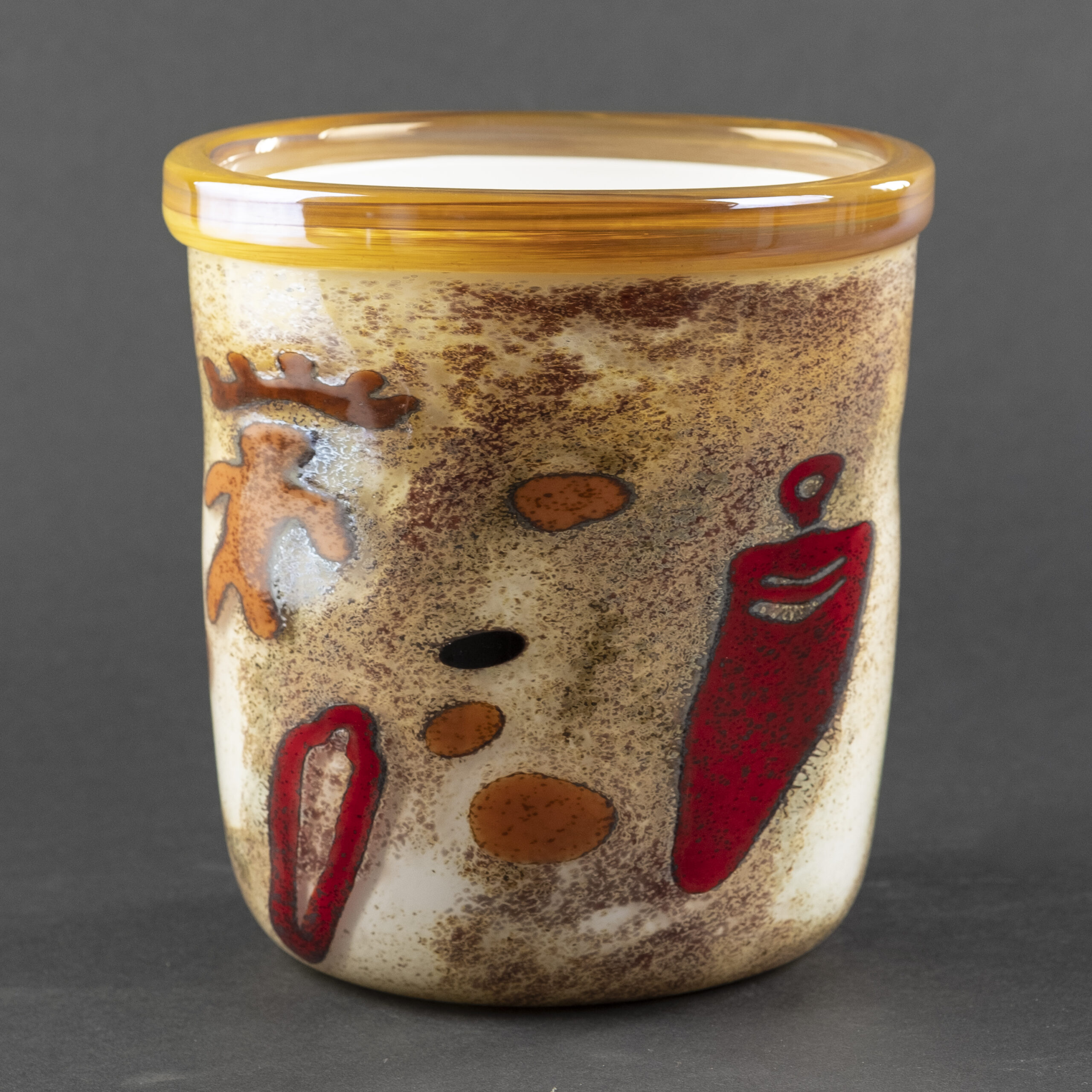 Fish Woman Calling All SpiritsBlown Glass with Glass Cutouts
Fish Woman Calling All SpiritsBlown Glass with Glass Cutouts- 8"h
- 6.5"w
- 7.25"d
$3,500 -
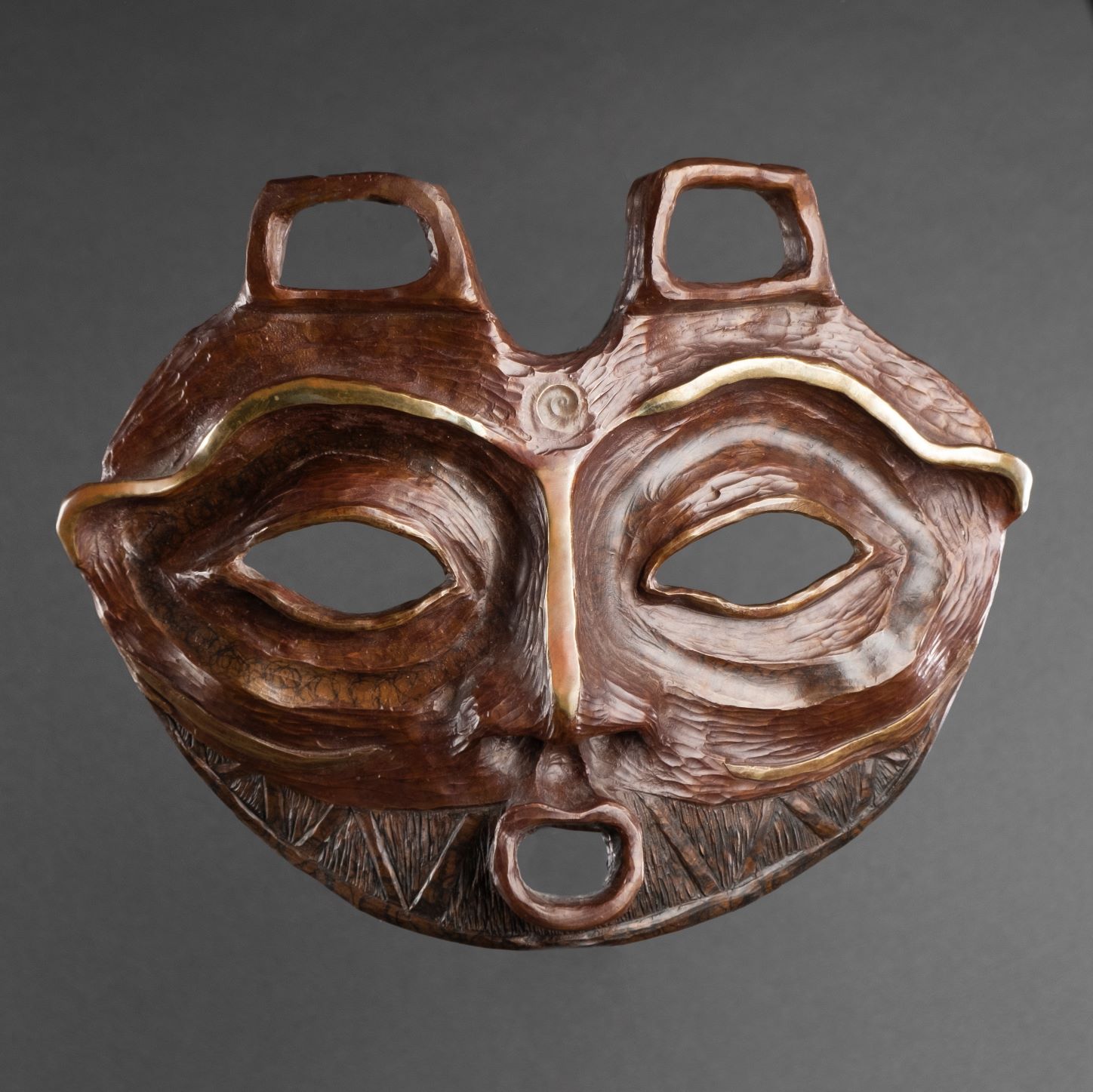 Tsagaglal (She Who Watches)- LargeLimited Edition Bronze
Tsagaglal (She Who Watches)- LargeLimited Edition Bronze- 10"h
- 13"w
- 3"d
$3,200 -
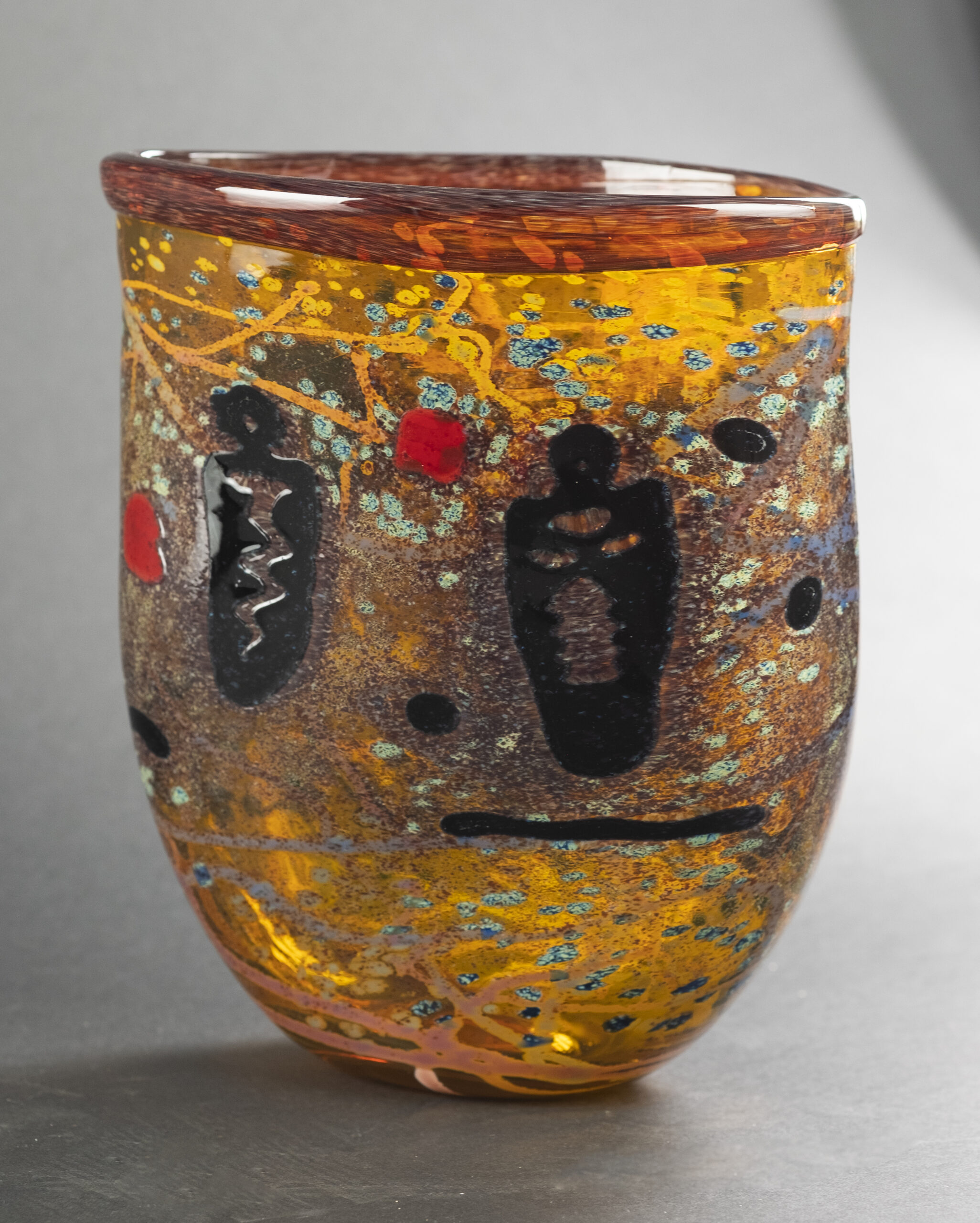 Star People Visiting the StarsBlown Glass with Glass Cutouts
Star People Visiting the StarsBlown Glass with Glass Cutouts- 9.5"h
- 8"w
- 4"d
$3,500 -
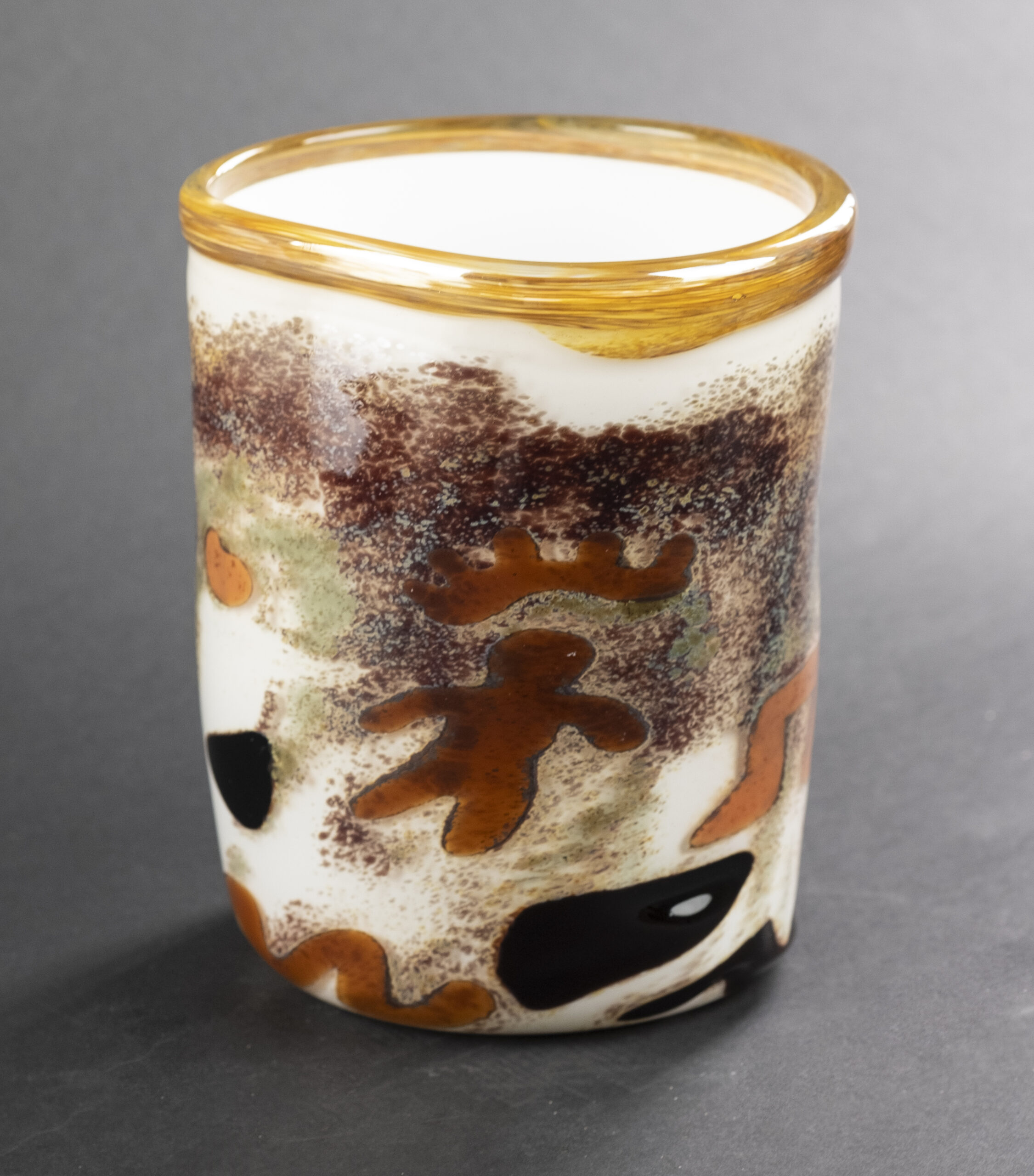 Shadow Spirits EmergingBlown Glass with Glass Cutouts
Shadow Spirits EmergingBlown Glass with Glass Cutouts- 8"h
- 6"w
- 6.75"d
$3,500 -
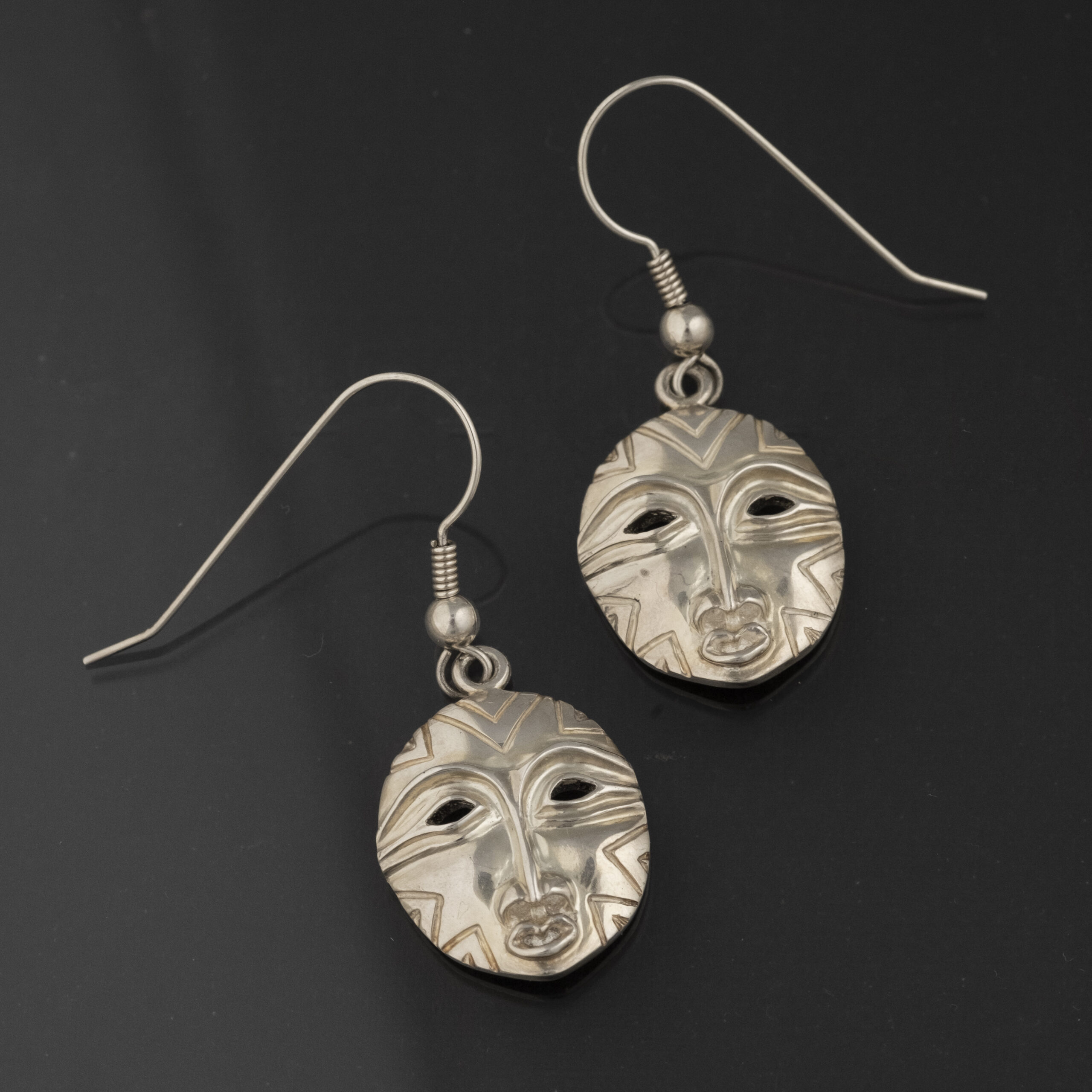 Sun Spirit EarringsSterling Silver
Sun Spirit EarringsSterling Silver- 1.75"h
$180 -
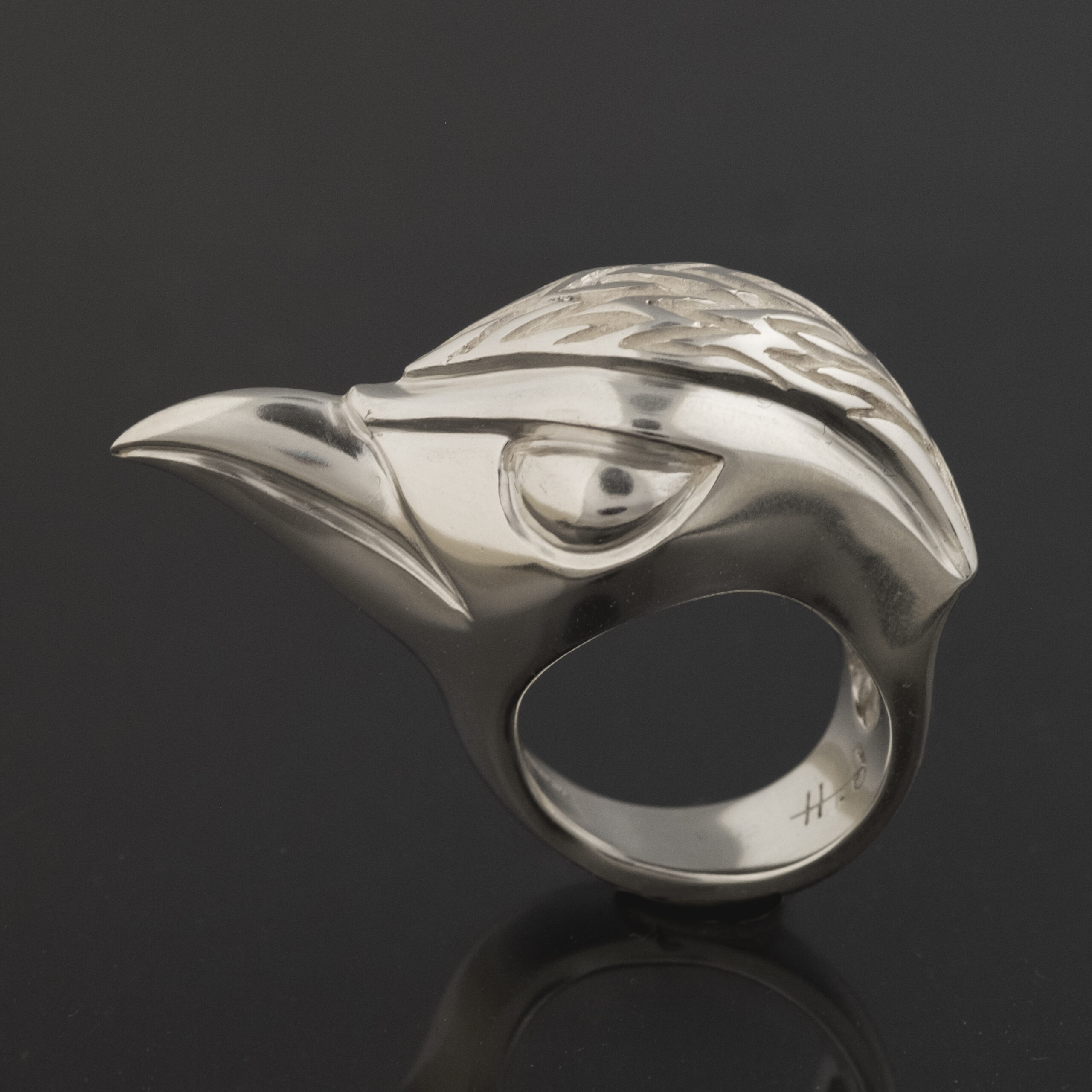 Spirit Bird RingSterling SilverContact Us to Special Order - Pricing will vary depending on size
Spirit Bird RingSterling SilverContact Us to Special Order - Pricing will vary depending on size -
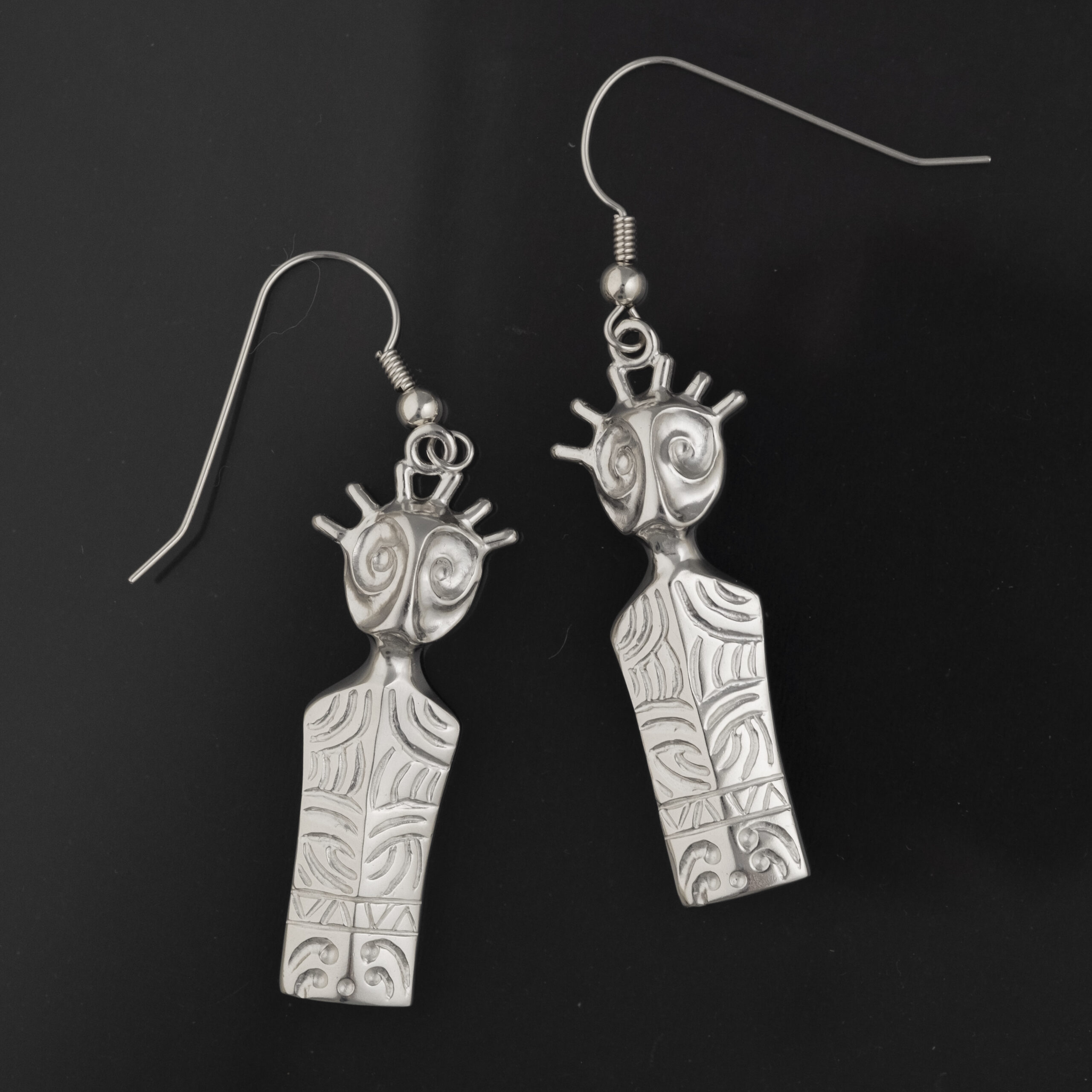 Shadow Spirit EarringsSterling SilverContact to Special Order
Shadow Spirit EarringsSterling SilverContact to Special Order -
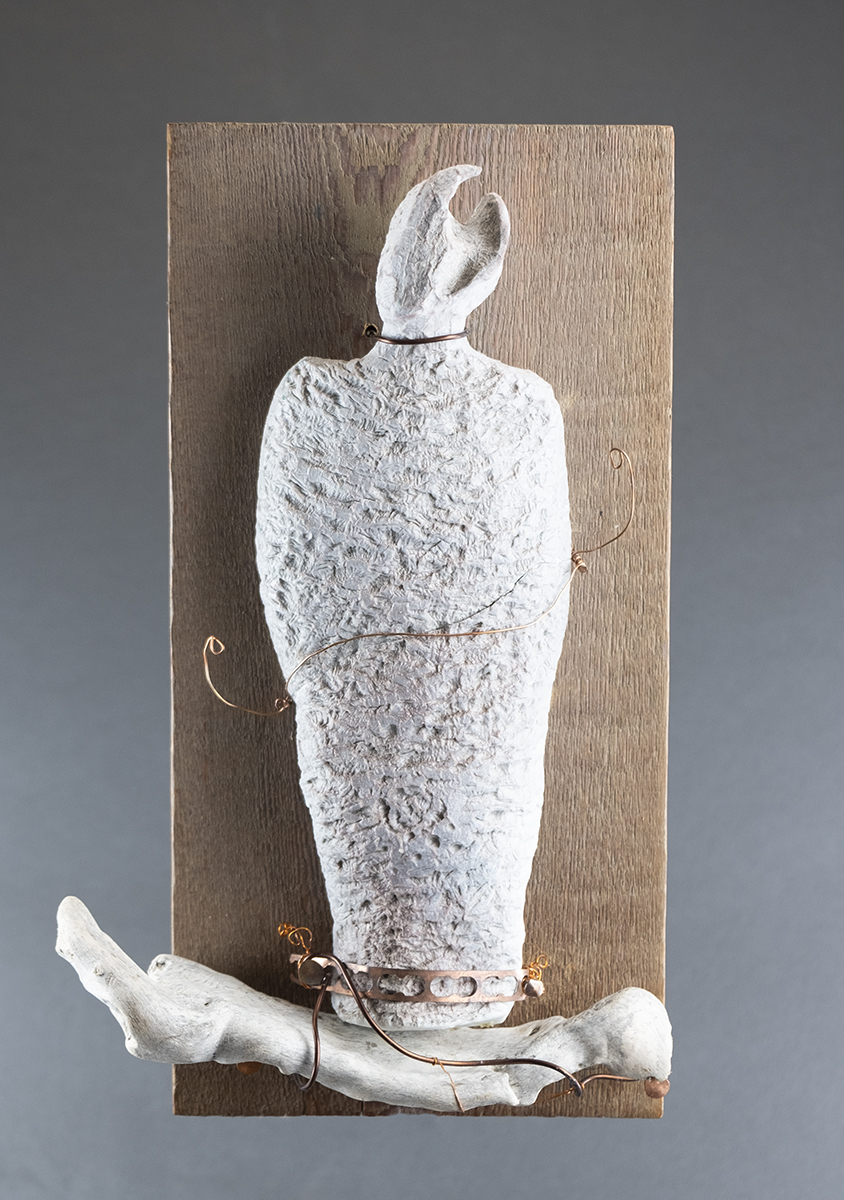 Reborn – With A Few FlawsMixed Media, Wood Fired Clay, Copper Wires
Reborn – With A Few FlawsMixed Media, Wood Fired Clay, Copper Wires- 15"h
- 9.5"w
- 4"d
$900 -
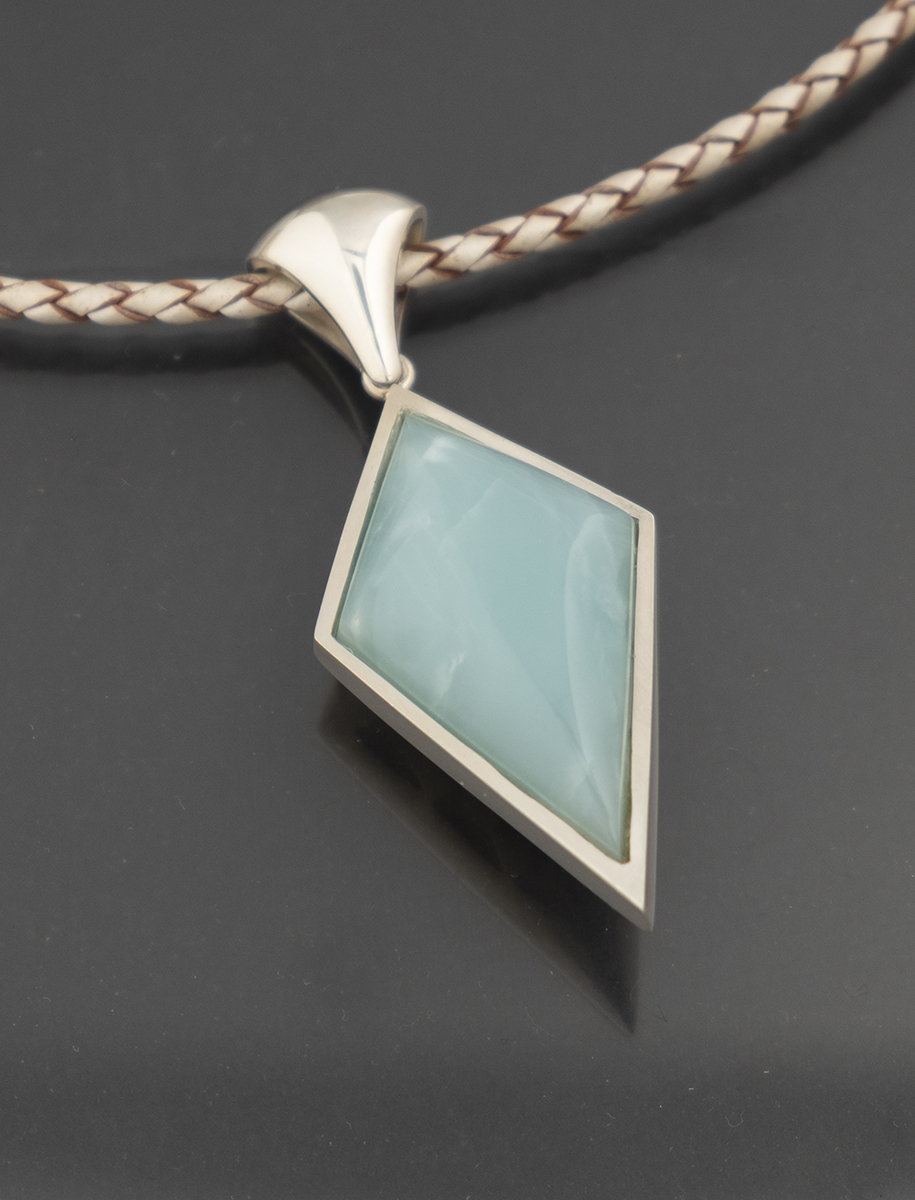 Reversible Chrysoprase Agate W/ Leather ChainSterling silver, Chrysoprase Agate, Leather$1,200
Reversible Chrysoprase Agate W/ Leather ChainSterling silver, Chrysoprase Agate, Leather$1,200 -
 Hawk RingSterling SilverContact us to special order
Hawk RingSterling SilverContact us to special order -
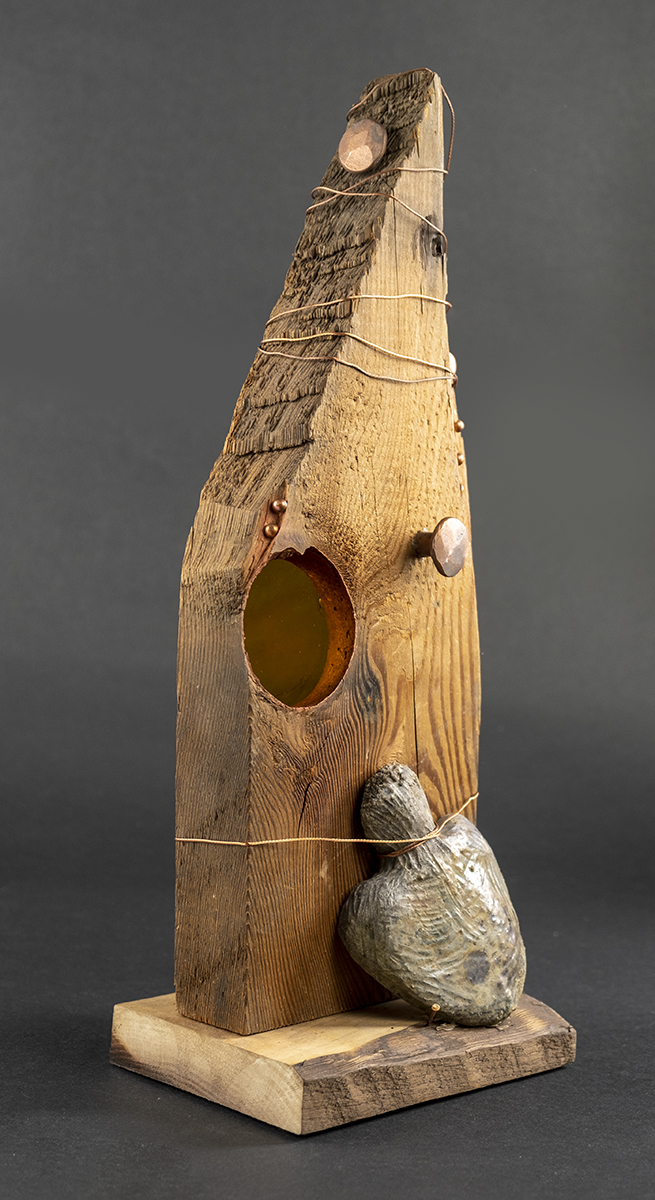 Mending… To What EndWood, Ceramic, Copper Wire, Nails, Beads
Mending… To What EndWood, Ceramic, Copper Wire, Nails, Beads- 16.5"h
- 9.5"w
- 6.25"d
$1,200 -
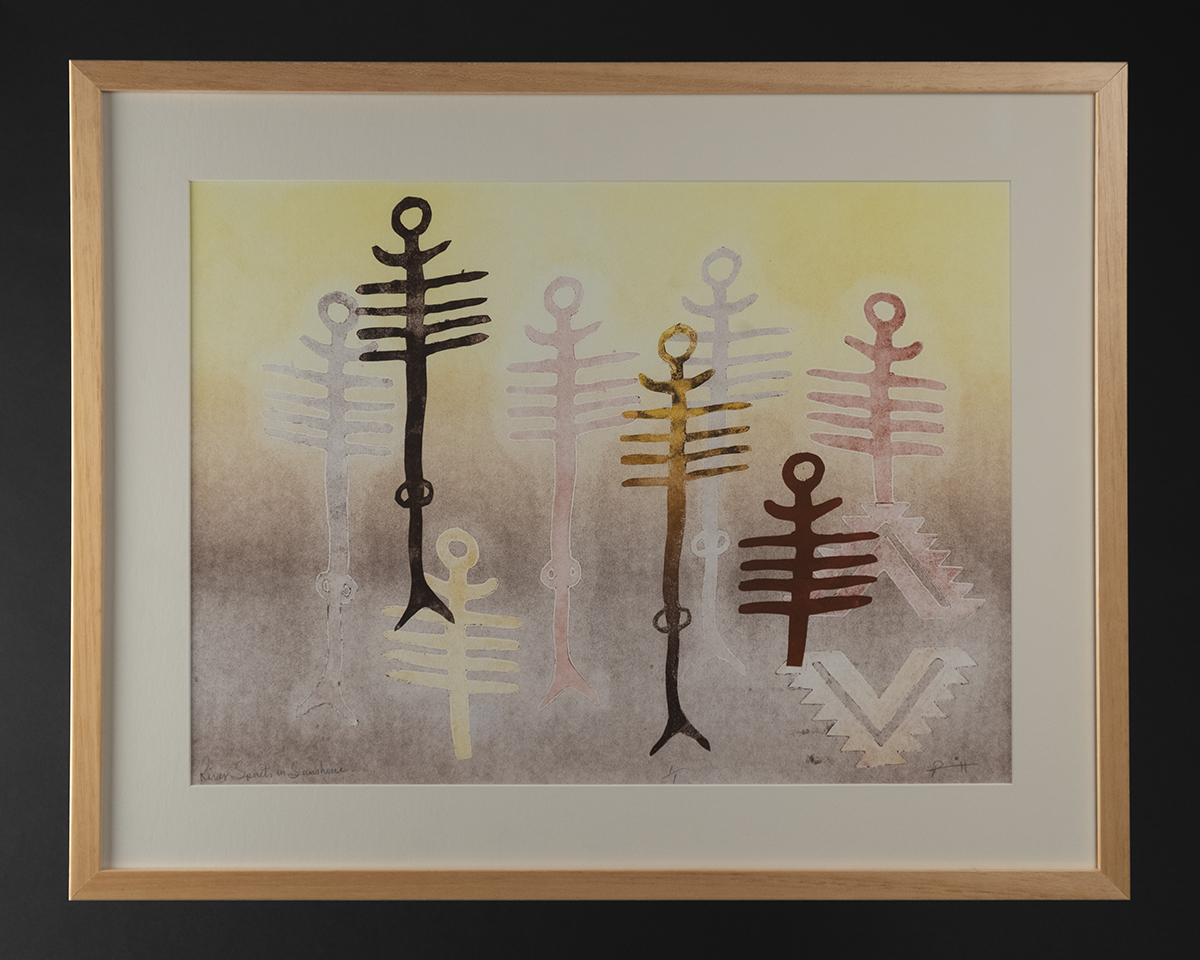 River Spirits in SunshineMonotype Print, Framed
River Spirits in SunshineMonotype Print, Framed- 20.25"h
- 25.38"w
$900 -
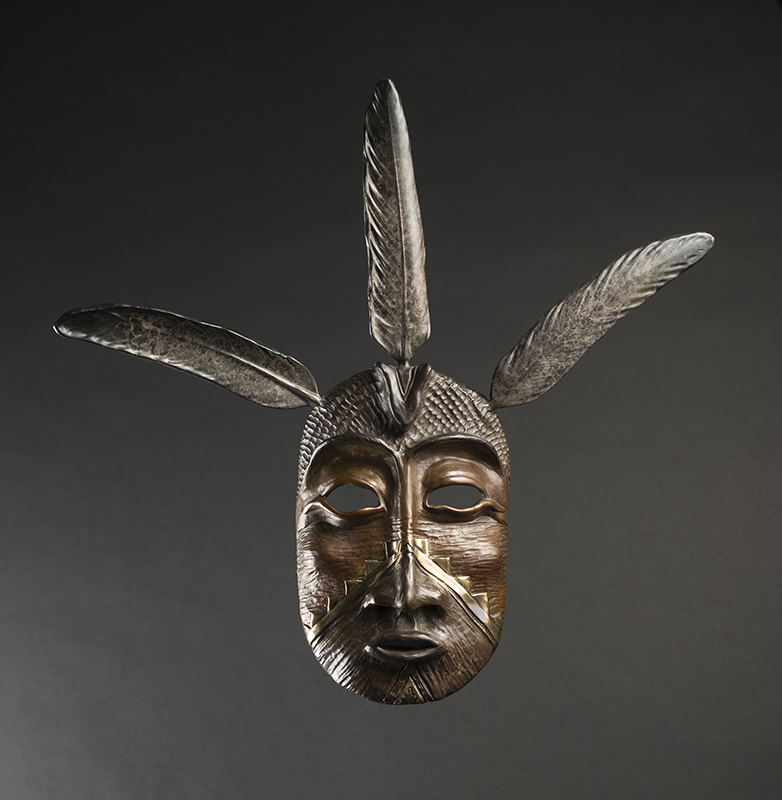 Warm Springs Stick IndianLimited Edition Cast and Patinated Bronze
Warm Springs Stick IndianLimited Edition Cast and Patinated Bronze- 17"h
- 18"w
- 3.5"d
$3,000 -
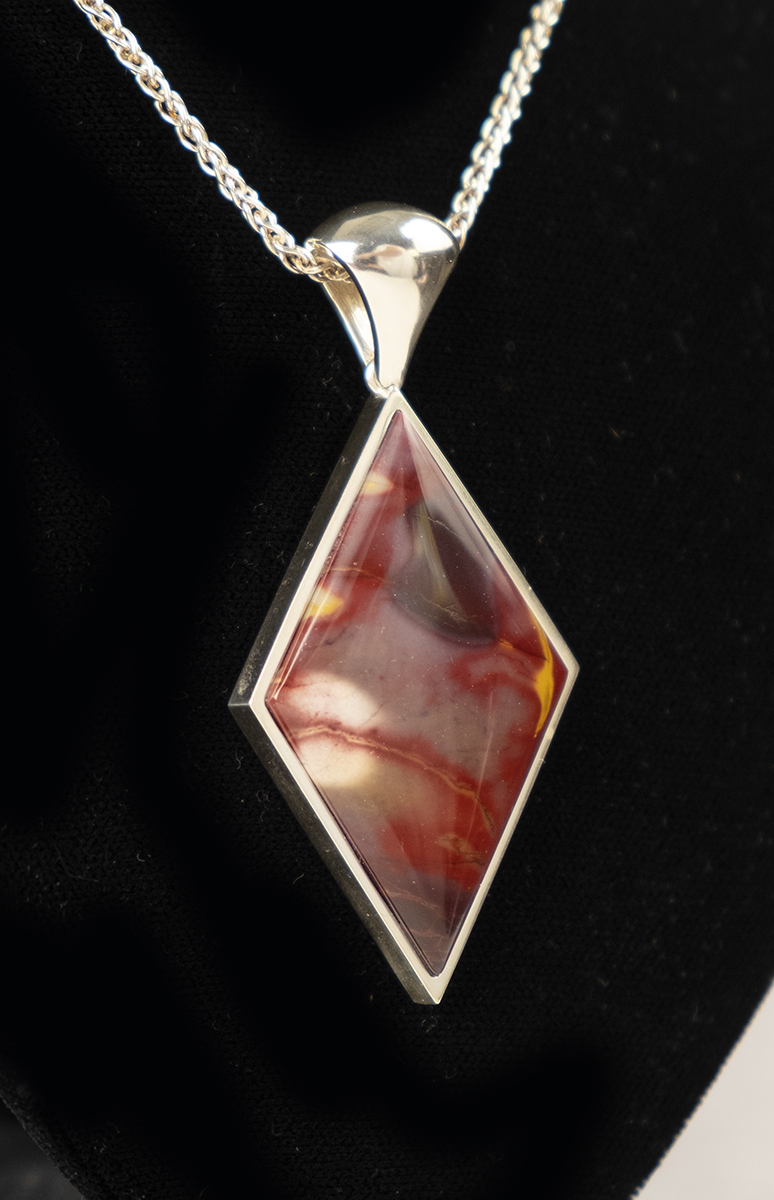 Jasper Pendant on ChainJasper, Hand-pierced and Reversible Sterling Silver
Jasper Pendant on ChainJasper, Hand-pierced and Reversible Sterling Silver- 3"h
- 1.25"w
$1,000 -
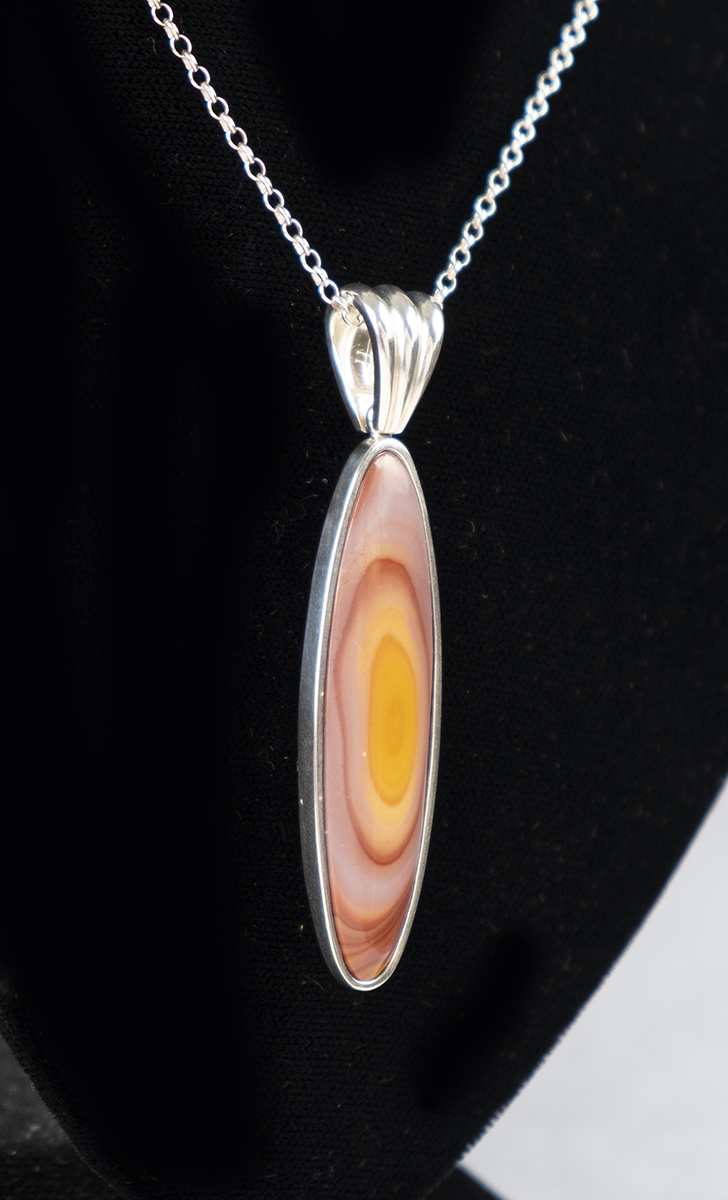 Sonora Sunset Agate Pendant on Chain (Reversible)Agate, Sterling Silver
Sonora Sunset Agate Pendant on Chain (Reversible)Agate, Sterling Silver- 2.9"h
- .75"w
$1,100 -
 Shield Earrings with Basket DesignSterling Silver
Shield Earrings with Basket DesignSterling Silver- 1.75"h
- 1"w
$240 -
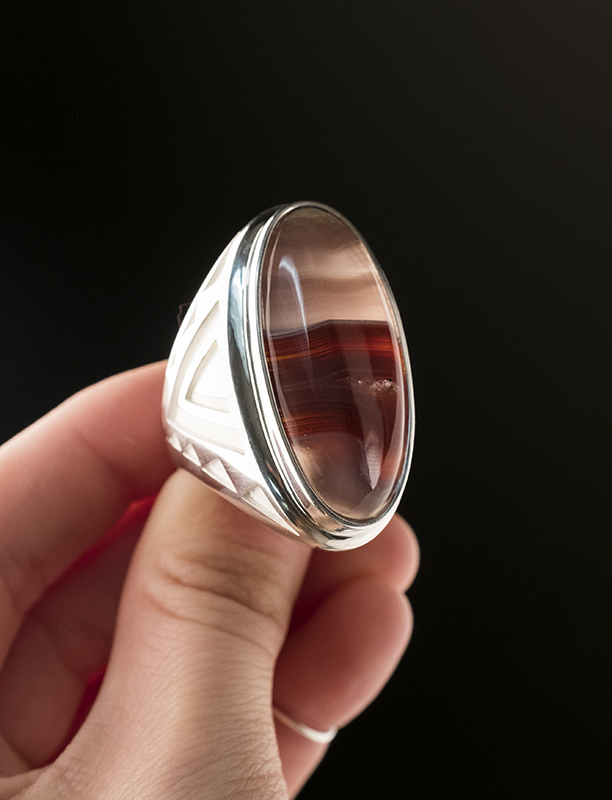 One-of-a-Kind Stone Ring – Laguna AgateLaguna Agate, Hand-Made Sterling Silver Bezel - Size 10$960 - On Hold
One-of-a-Kind Stone Ring – Laguna AgateLaguna Agate, Hand-Made Sterling Silver Bezel - Size 10$960 - On Hold -
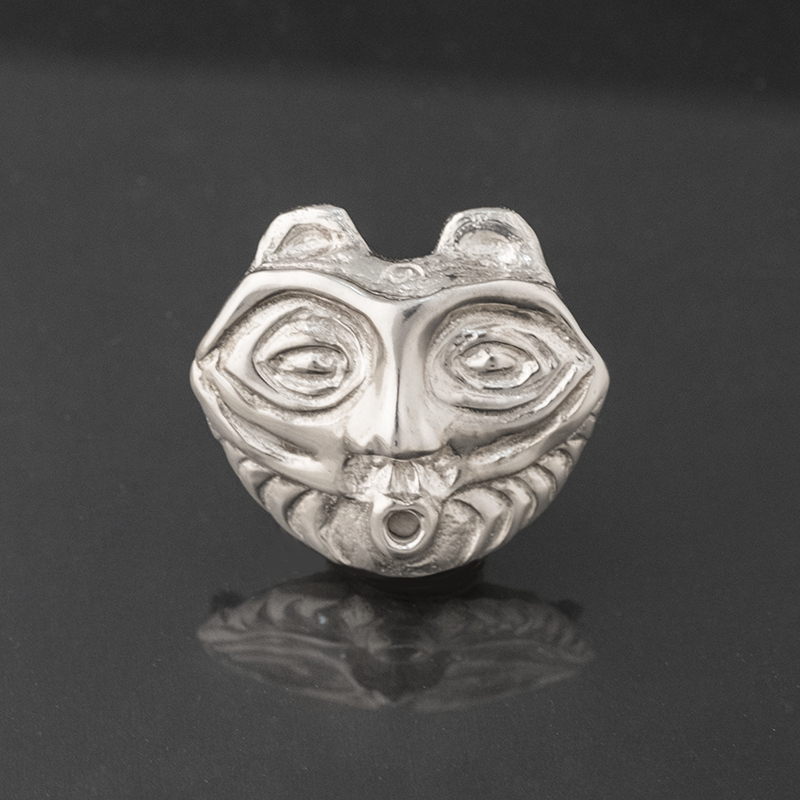 She Who Watches Pin/Pendant – LargeCast Sterling Silver
She Who Watches Pin/Pendant – LargeCast Sterling Silver- 1.25"h
- 1.63"w
- .5"d
Contact us to special order -
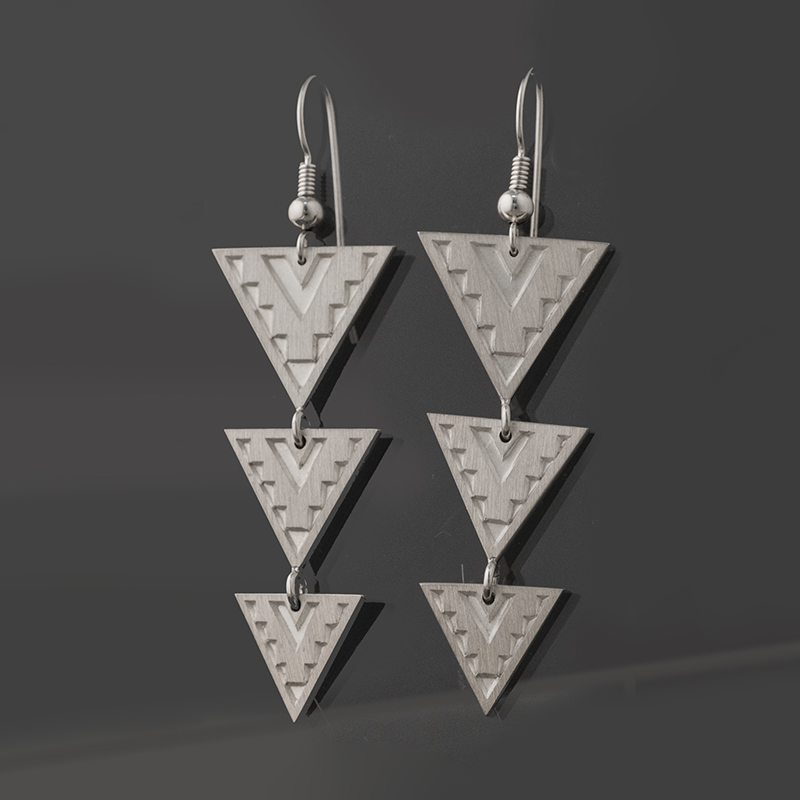 Triangle Basket EarringsSterling Silver
Triangle Basket EarringsSterling Silver- 3"h
Contact to Special Order -
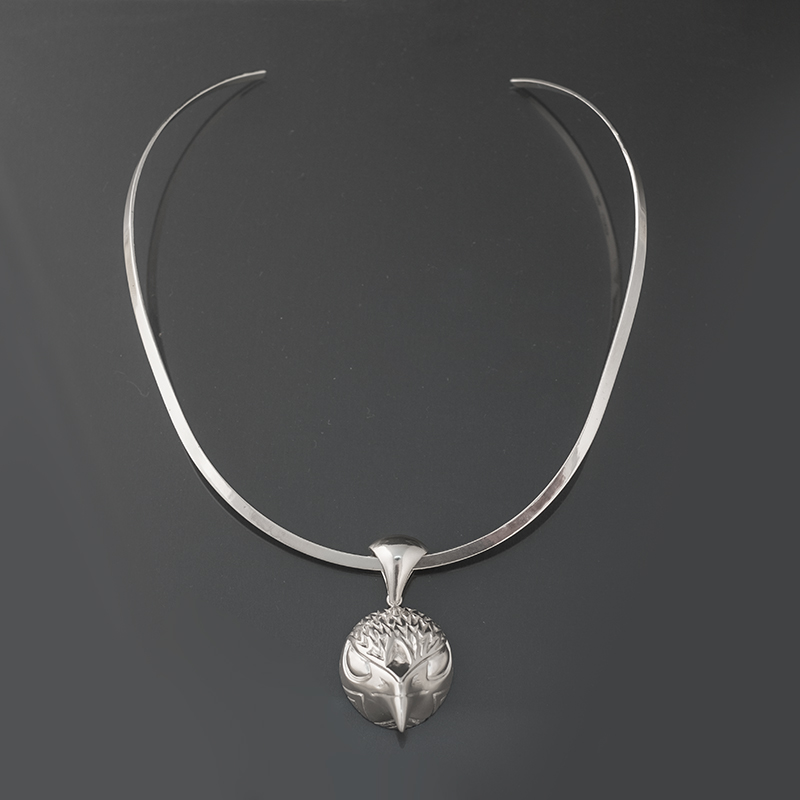 Hawk Pendant with Silver Neck RingSterling Silver
Hawk Pendant with Silver Neck RingSterling Silver- 2"h
- 1.13"w
Contact Us to Special Order -
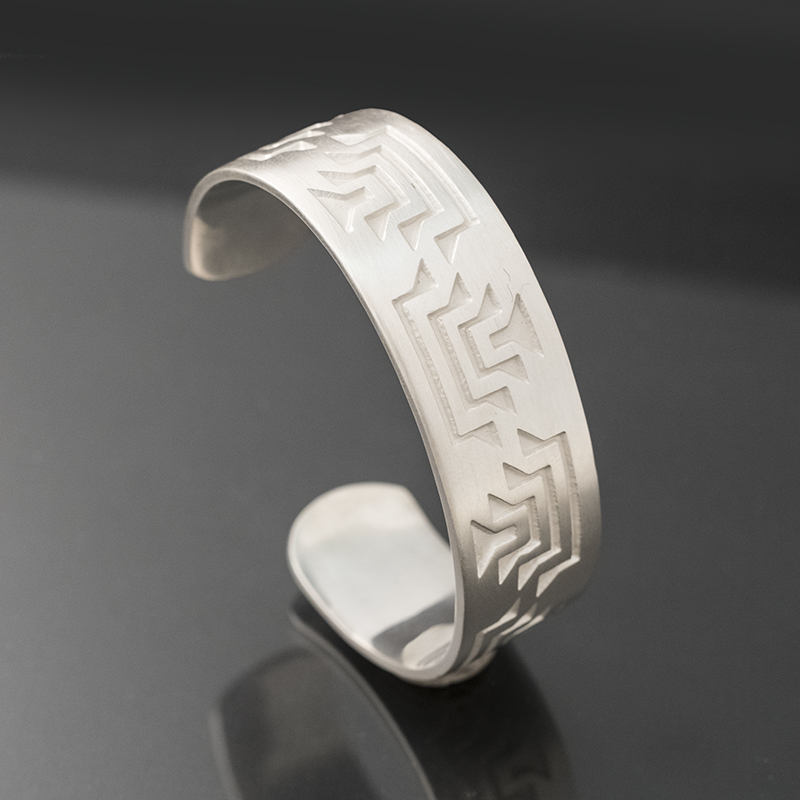 Salmon Gill Design CuffSterling Silver
Salmon Gill Design CuffSterling Silver- .75"w
Contact to Special Order -
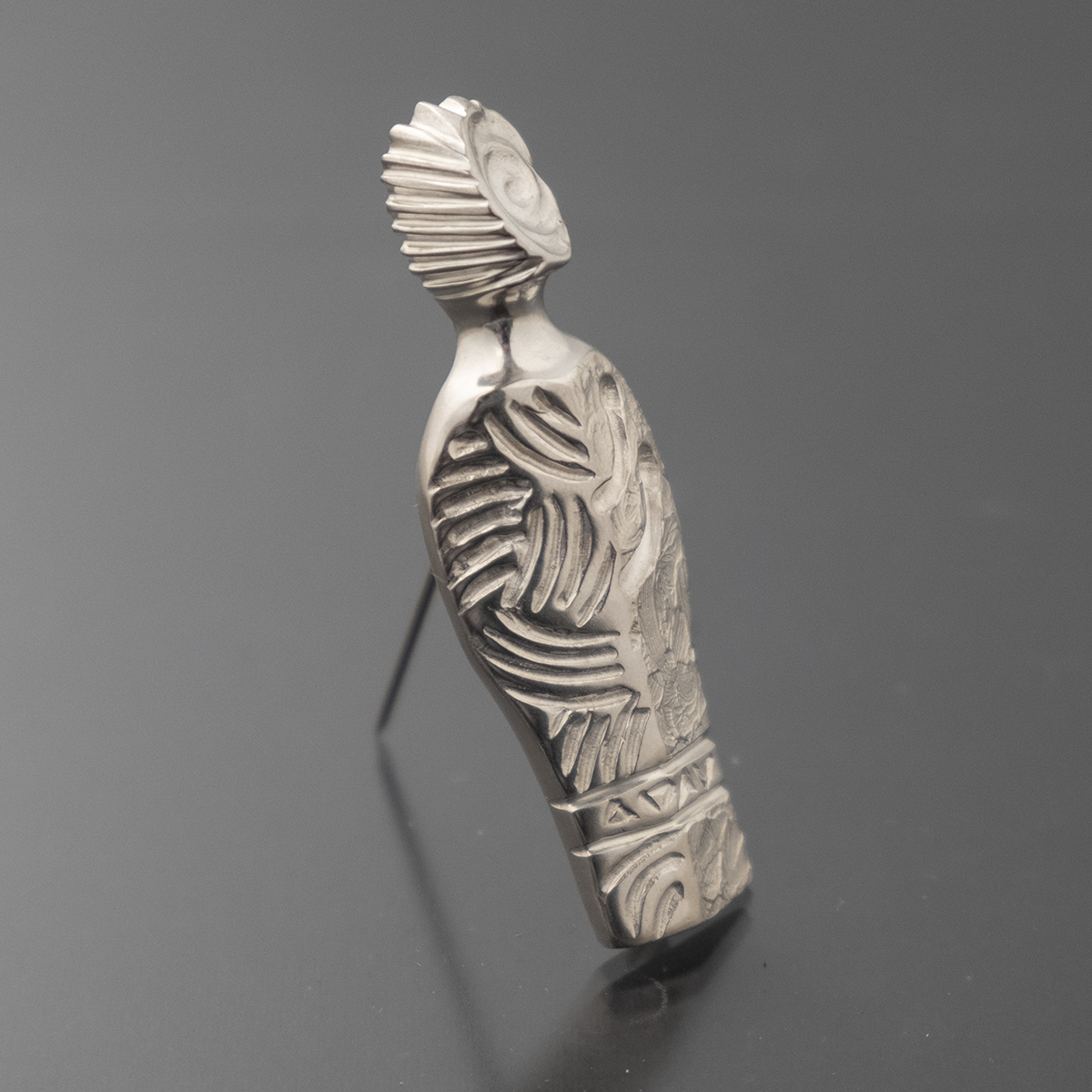 Dreamer – Pin/Pendant (Silver)Cast Sterling Silver
Dreamer – Pin/Pendant (Silver)Cast Sterling Silver- 2.25"h
- .75"w
- .3"d
Contact Us About Special Ordering -
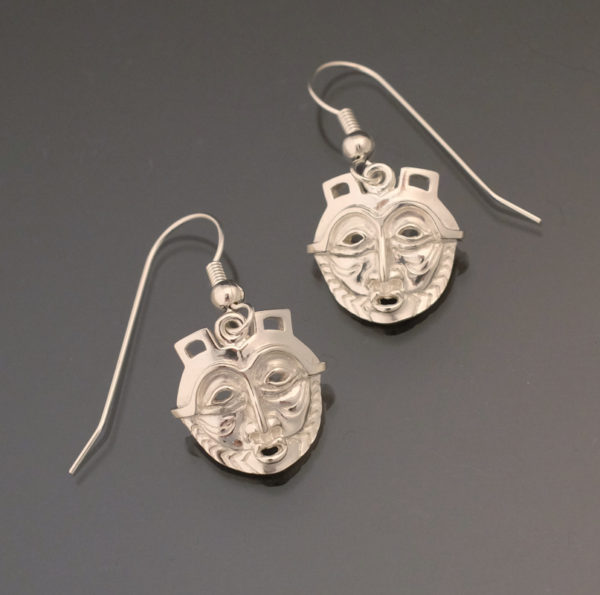 She Who Watches EarringsSterling SilverContact Us to Special Order
She Who Watches EarringsSterling SilverContact Us to Special Order -
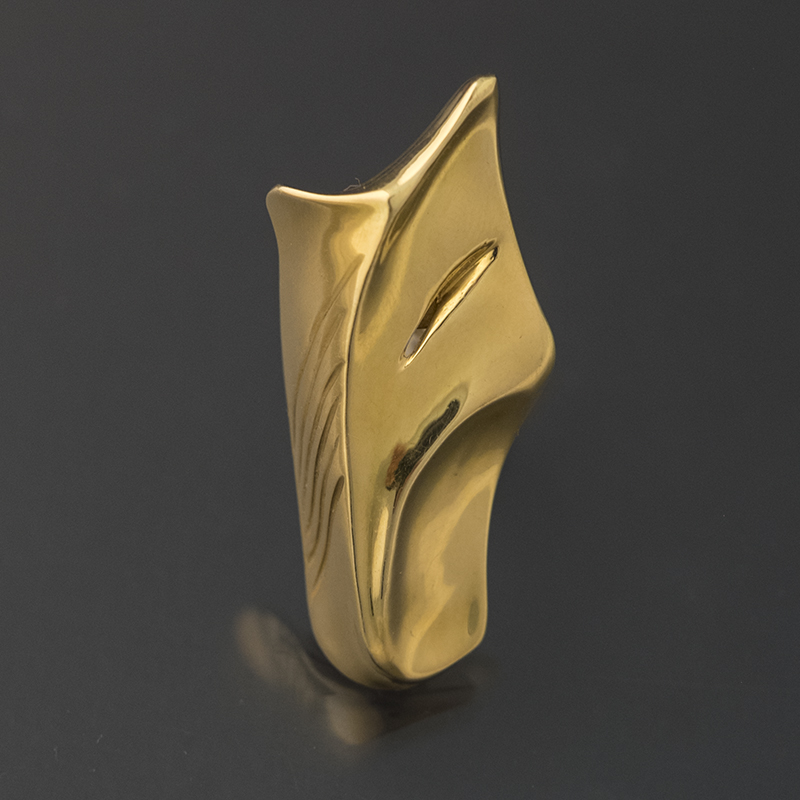 Abstract Coyote Gold Pin/Pendant18kt Yellow GoldContact us to special order
Abstract Coyote Gold Pin/Pendant18kt Yellow GoldContact us to special order -
 Spirit Voices – Sally Bag #10 – Collaboration with Dan FridayBlown and Fused Glass
Spirit Voices – Sally Bag #10 – Collaboration with Dan FridayBlown and Fused Glass- 16.75"h
- 7.5"w
- 7.5"d
$6,000 -
 Ancestors’ Messages – Sally Bag #8 – Collaboration with Dan FridayBlown and Fused Glass
Ancestors’ Messages – Sally Bag #8 – Collaboration with Dan FridayBlown and Fused Glass- 16"h
- 13.5"w
- 13.5"d
$7,900 -
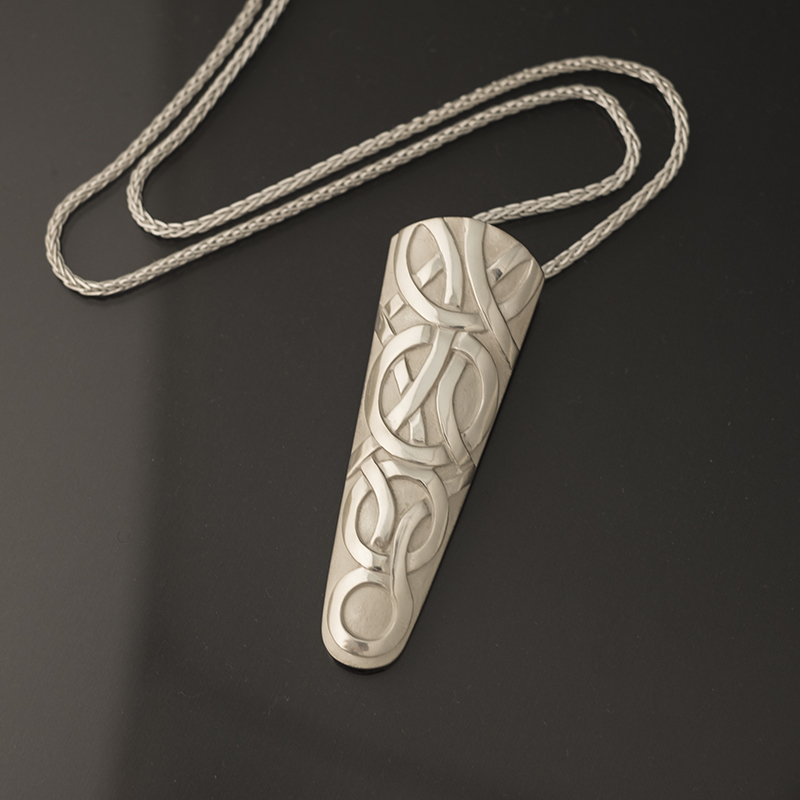 Sacred Circles PendantSterling SilverContact for pricing and to order
Sacred Circles PendantSterling SilverContact for pricing and to order -
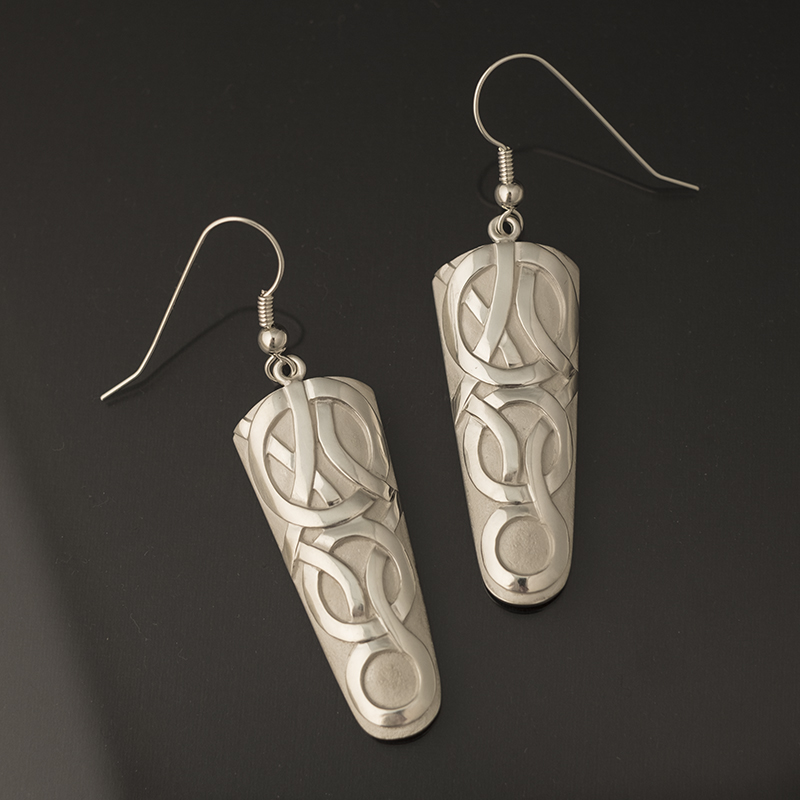 Sacred Circles EarringsSterling SilverContact us to special order
Sacred Circles EarringsSterling SilverContact us to special order -
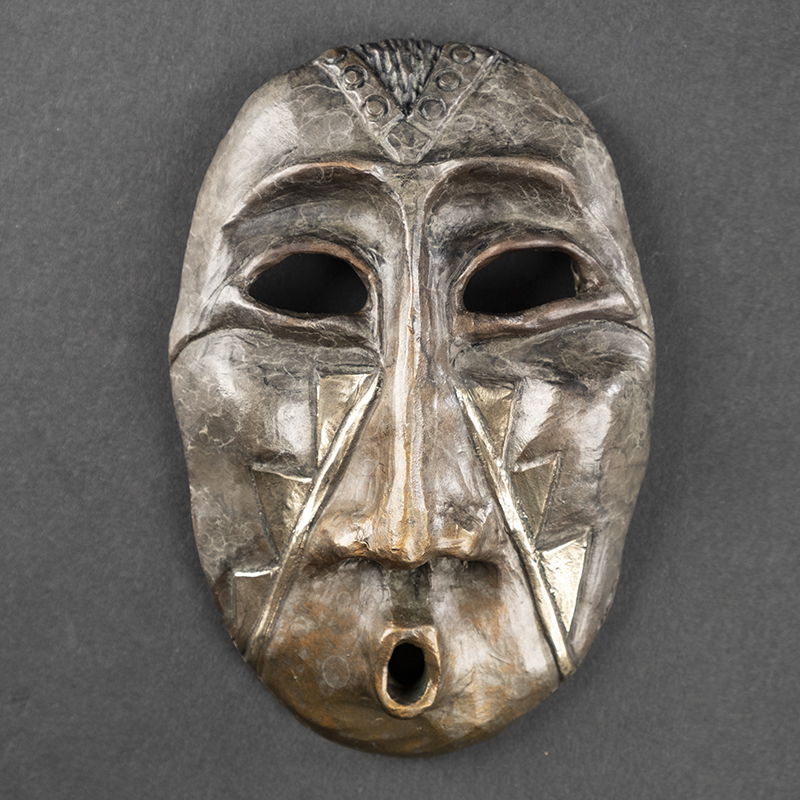 Tenino Stick IndianLimited Edition Cast Bronze
Tenino Stick IndianLimited Edition Cast Bronze- 5.25"h
- 3.5"w
- 2"d
$480 -
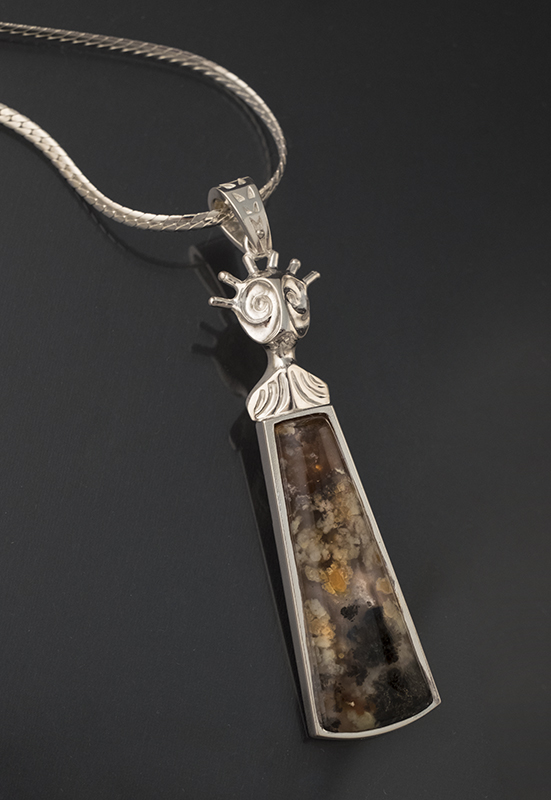 Unique Shadow Spirit Pendant with Ocean JasperSterling Silver, Ocean Jasper
Unique Shadow Spirit Pendant with Ocean JasperSterling Silver, Ocean Jasper- 3.5"h
- .75"w
$905 -
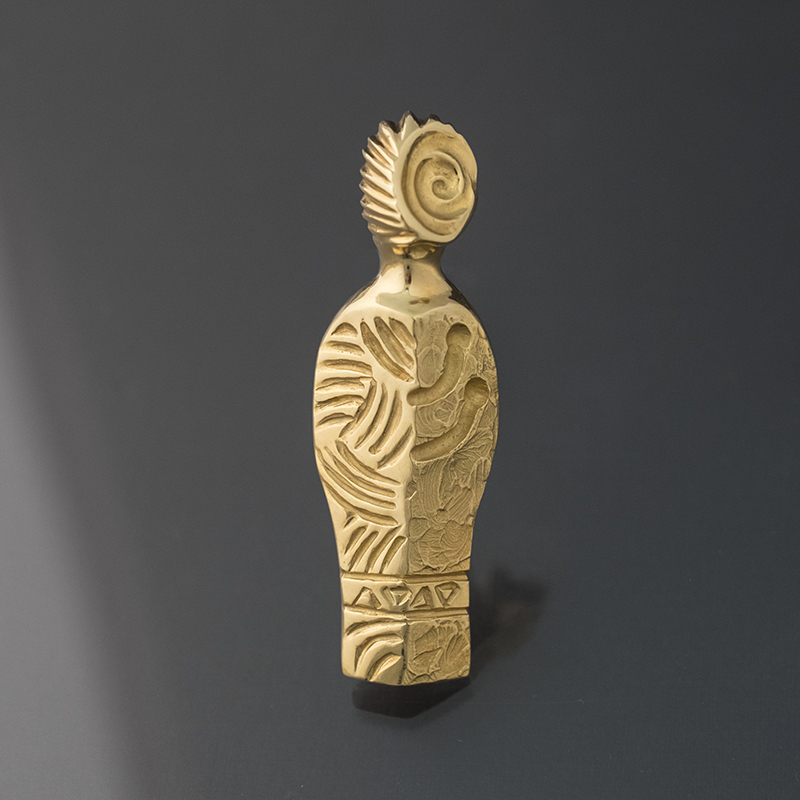 The Dreamer Pin/Pendant (Gold)18kt Yellow GoldContact us to special order
The Dreamer Pin/Pendant (Gold)18kt Yellow GoldContact us to special order -
 Crow Takes Leave of the Family Pendant – Gold18kt Yellow Gold, 22" Leather Chain with Gold ClaspContact for pricing and to order
Crow Takes Leave of the Family Pendant – Gold18kt Yellow Gold, 22" Leather Chain with Gold ClaspContact for pricing and to order -
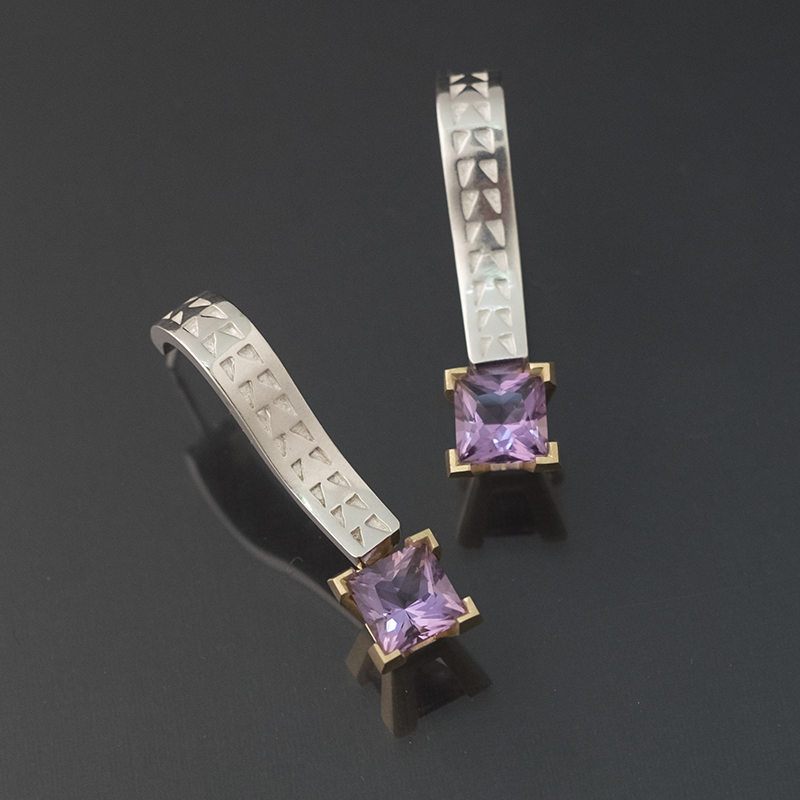 Basket Design Earrings with AmethystsSterling Silver, Princess-Cut Amethysts, 14kt Gold Stone Settings$1,750
Basket Design Earrings with AmethystsSterling Silver, Princess-Cut Amethysts, 14kt Gold Stone Settings$1,750 -
 Shield Pendant with Madeira Citrine Set in 14k GoldSterling Silver, Madeira Citrine, 14k Gold Setting$1,475
Shield Pendant with Madeira Citrine Set in 14k GoldSterling Silver, Madeira Citrine, 14k Gold Setting$1,475 -
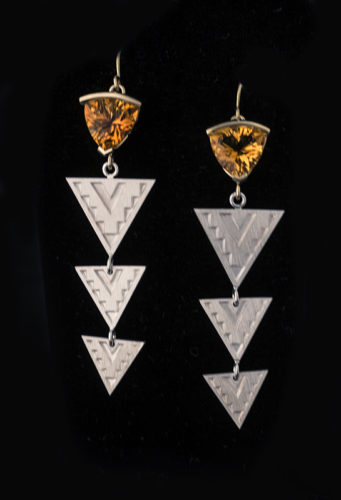 Triangle Basket Earrings with CitrinesSterling Silver, 14k Gold Wires, 14k Gold Bezels, Citrines$2,865
Triangle Basket Earrings with CitrinesSterling Silver, 14k Gold Wires, 14k Gold Bezels, Citrines$2,865 -
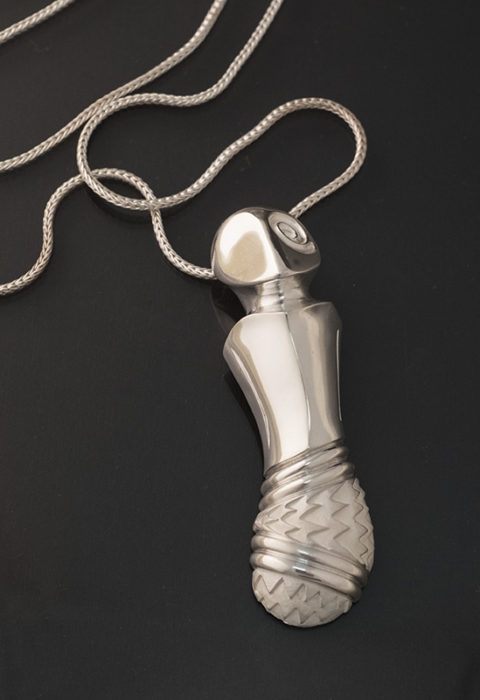 One-Eyed Shadow Spirit PendantSterling Silver
One-Eyed Shadow Spirit PendantSterling Silver- 3.25"h
- 1"w
- .5"d
$550 -
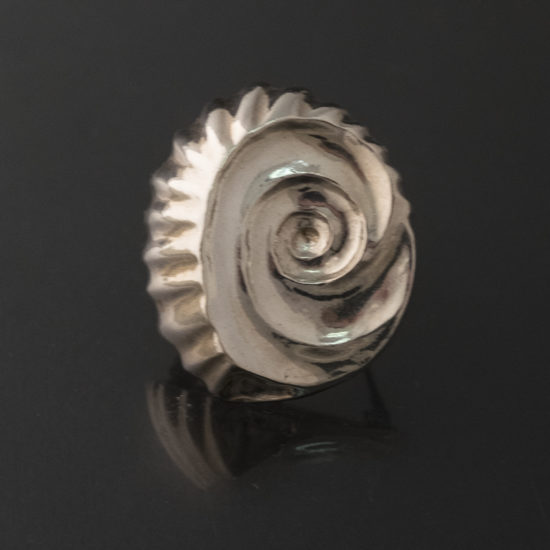 Shell Spirit Pendant/PinSterling Silver
Shell Spirit Pendant/PinSterling Silver- 1.25"h
- 1"w
Contact for pricing and to order -
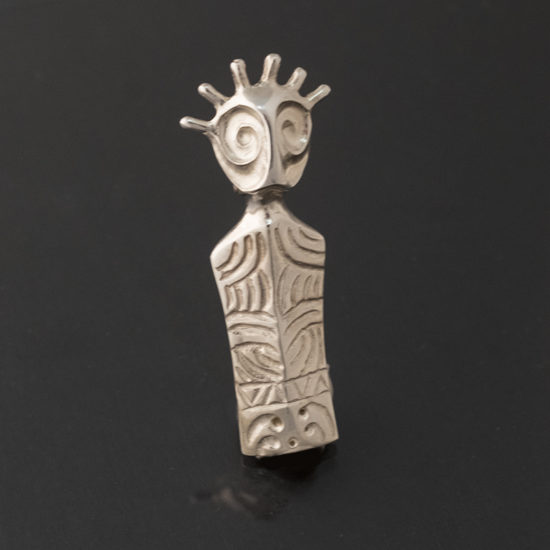 Small Shadow Spirit PinSterling Silver
Small Shadow Spirit PinSterling Silver- 1.75"h
Contact for pricing and to order -
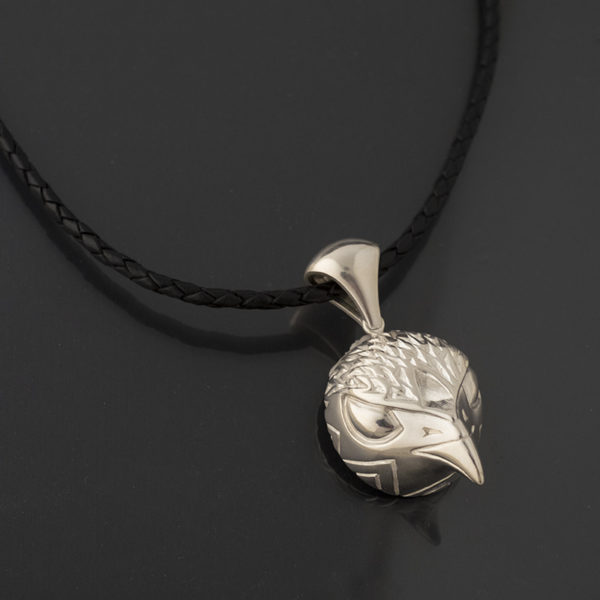 Hawk Pendant with Leather Neck RingSterling Silver, Leather
Hawk Pendant with Leather Neck RingSterling Silver, Leather- 2"h
- 1.13"w
Contact for pricing and to order -
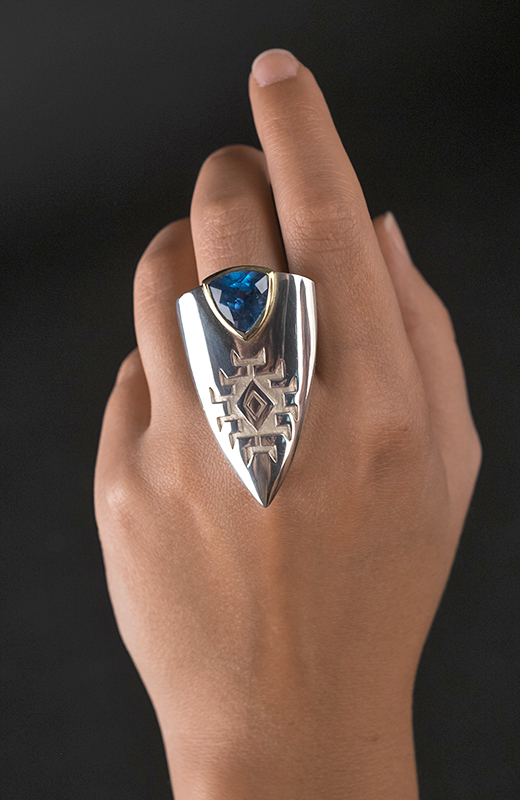 Shield Ring with Basket Pattern – One-of-a-KindSterling Silver, 18k Gold Bezel, Topaz
Shield Ring with Basket Pattern – One-of-a-KindSterling Silver, 18k Gold Bezel, Topaz- 2"h
- 1"w
$1,570 -
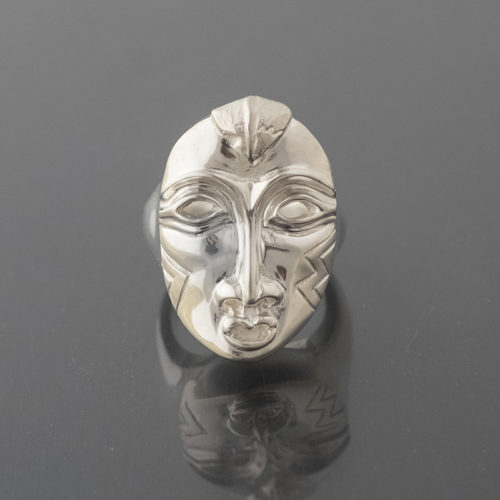 Feather Woman RingSterling SilverContact for pricing and to order
Feather Woman RingSterling SilverContact for pricing and to order -
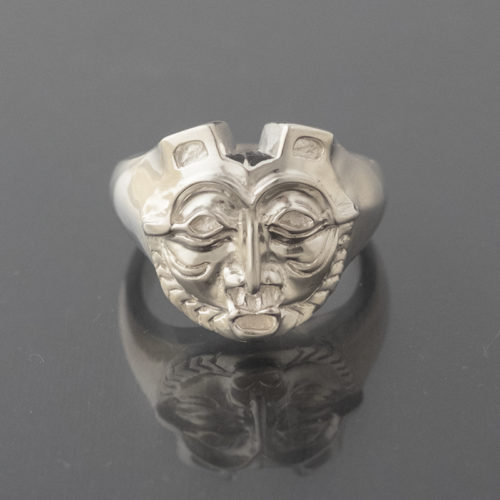 She Who Watches – RingSterling SilverContact us to special order
She Who Watches – RingSterling SilverContact us to special order -
 Abstract Coyote Pin / PendantCast Sterling Silver$210
Abstract Coyote Pin / PendantCast Sterling Silver$210 -
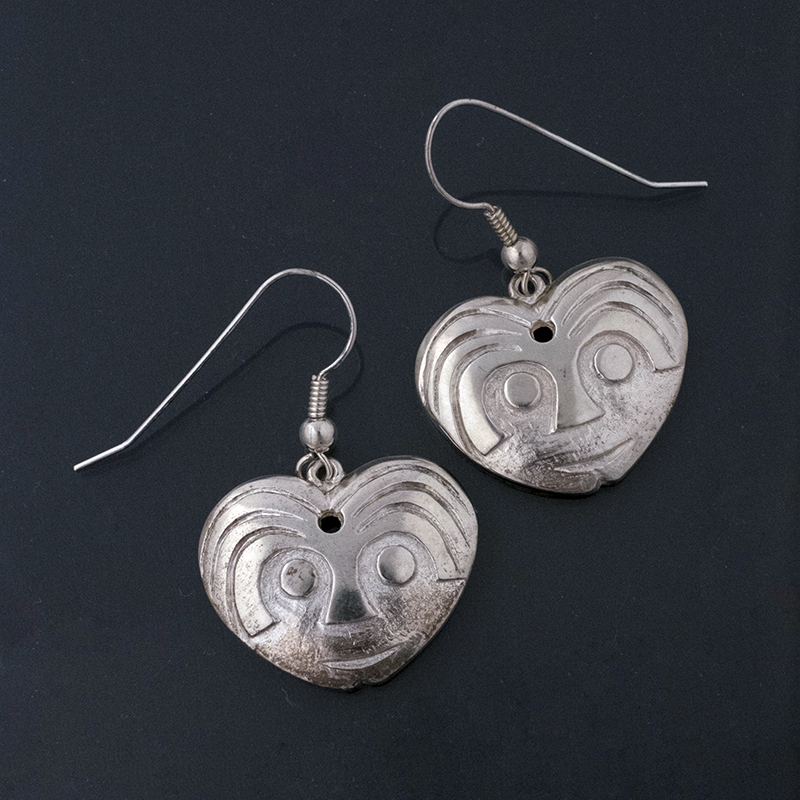 Ancient Watcher EarringsSterling SilverContact us to special order
Ancient Watcher EarringsSterling SilverContact us to special order -
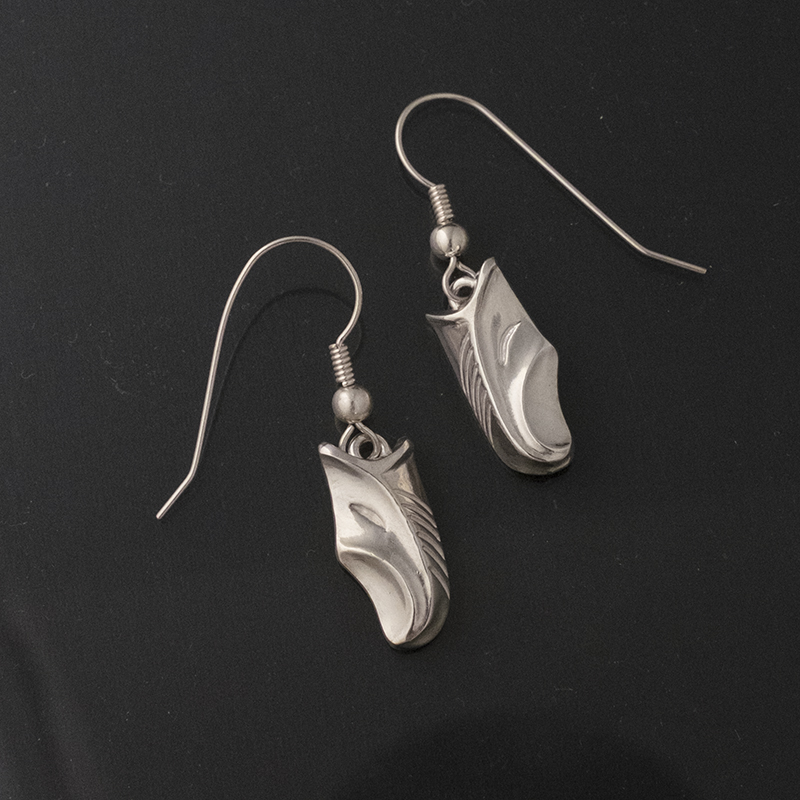 Abstract Coyote EarringsSterling SilverContact for pricing and to order
Abstract Coyote EarringsSterling SilverContact for pricing and to order -
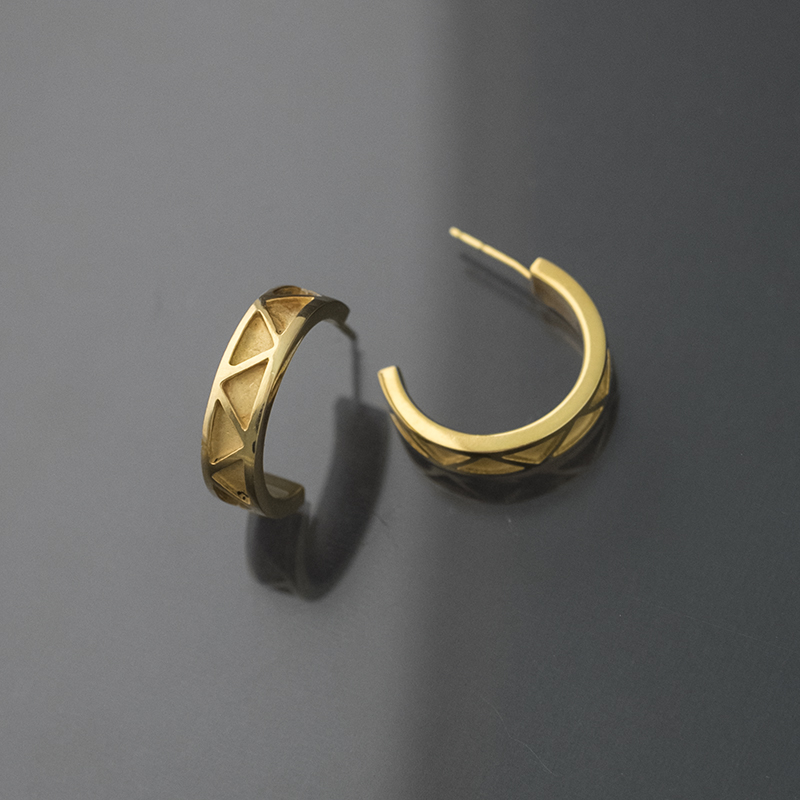 One Row of Mountains – Gold Hoop Earrings18kt Yellow GoldContact us to special order
One Row of Mountains – Gold Hoop Earrings18kt Yellow GoldContact us to special order -
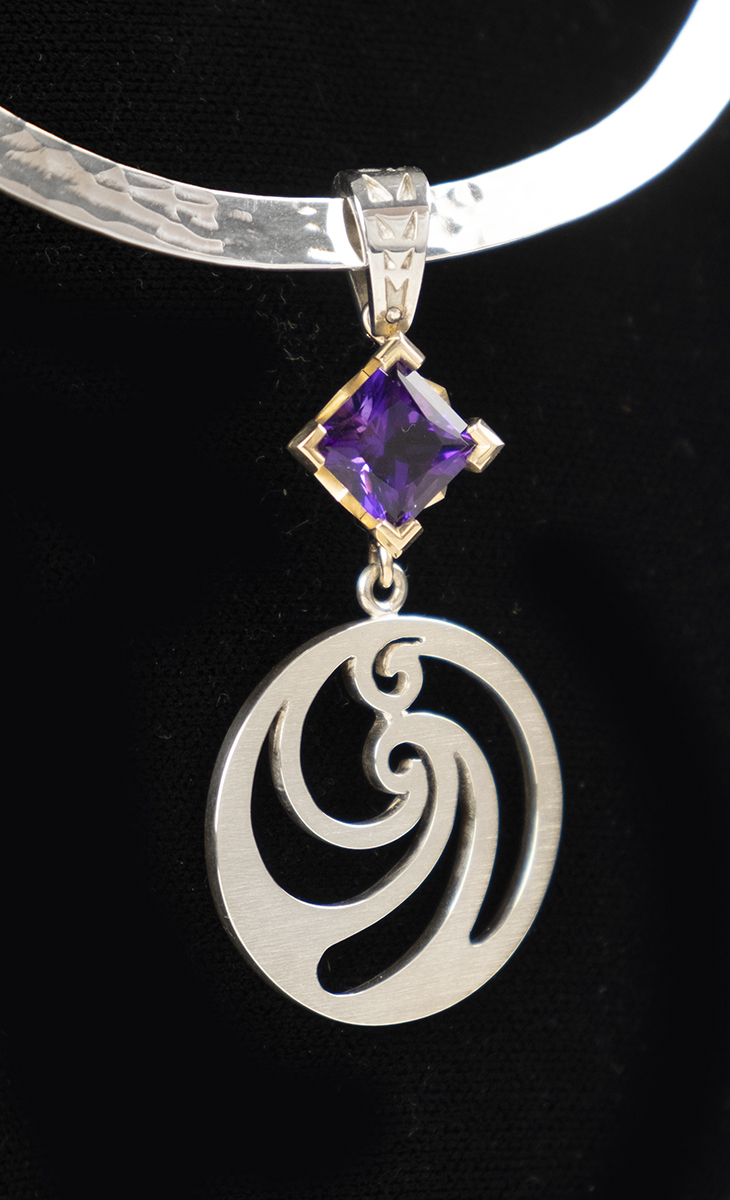 Koru (In Honor of the Māori) Pendant With Iris AmethystSterling Silver, Iris Amethyst, 14k Gold$1,600
Koru (In Honor of the Māori) Pendant With Iris AmethystSterling Silver, Iris Amethyst, 14k Gold$1,600 -
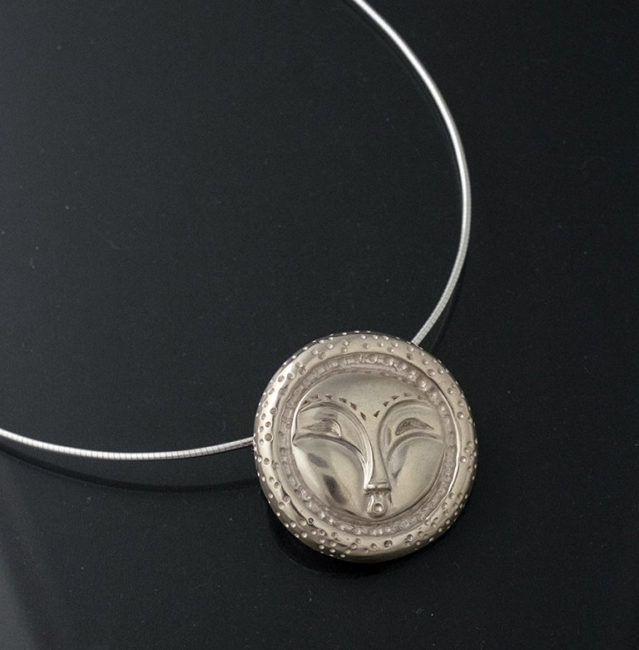 Grandmother Moon Pin/PendantSterling SilverContact for pricing and to order
Grandmother Moon Pin/PendantSterling SilverContact for pricing and to order -
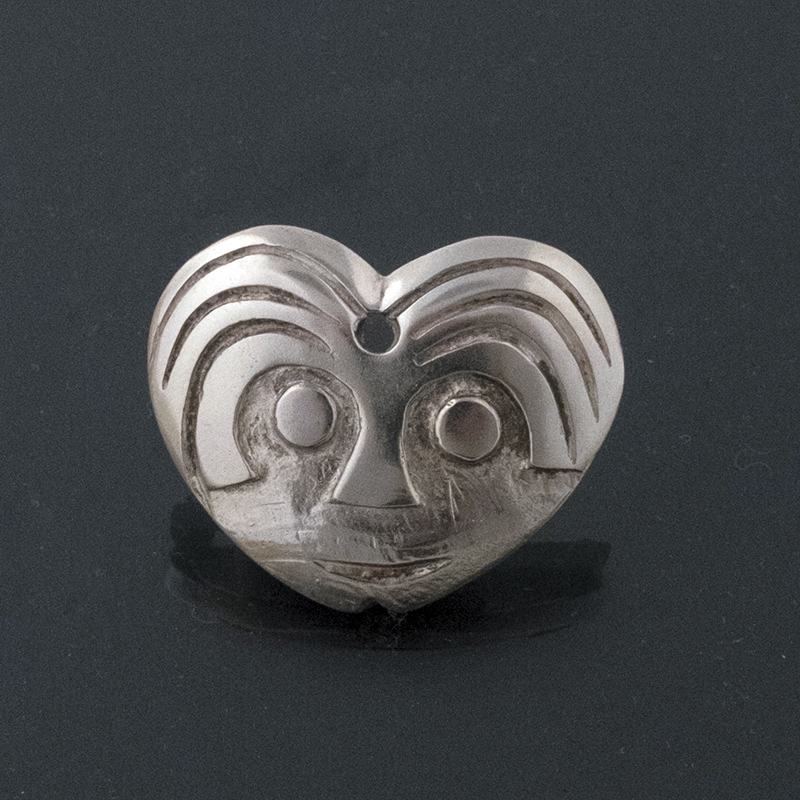 Ancient Watcher PinSterling SilverContact us to special order
Ancient Watcher PinSterling SilverContact us to special order -
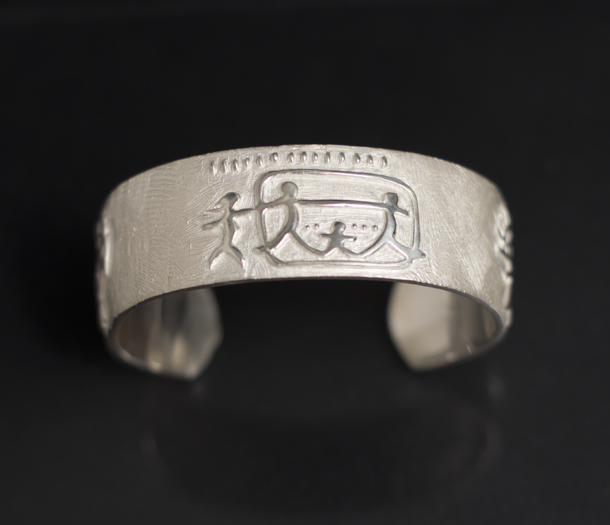 Crow Takes Leave From Family CuffCast and Acid-Etched Sterling SilverContact for pricing and to order
Crow Takes Leave From Family CuffCast and Acid-Etched Sterling SilverContact for pricing and to order -
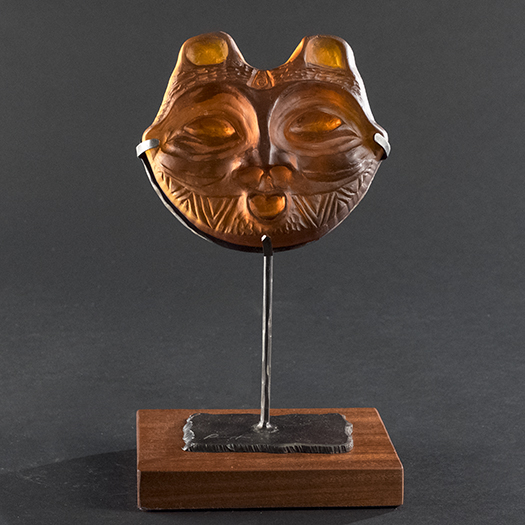 She Who WatchesCast Glass on Wood and Metal Base
She Who WatchesCast Glass on Wood and Metal Base- 10.5"h
- 6"w
- 4"d
Contact Us To Special Order -
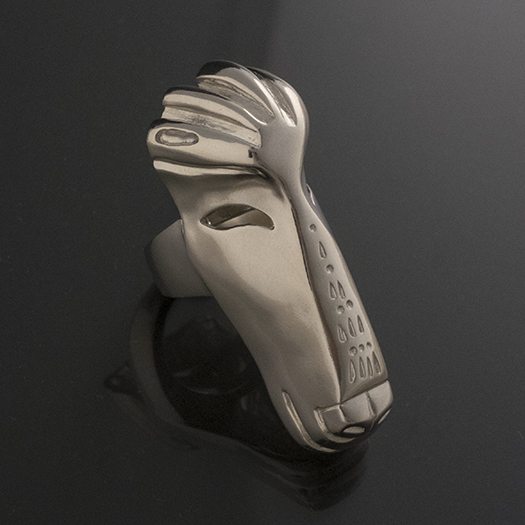 Horse RingSterling Silver
Horse RingSterling Silver- 2.25"h
- 1"w
$500 -
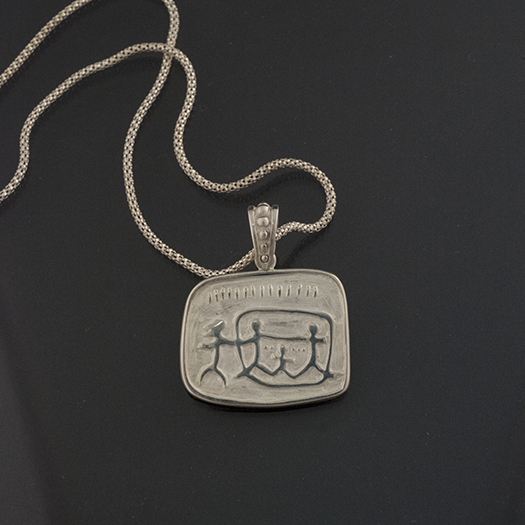 Crow Takes Leave From The Family – PendantSterling SilverContact for pricing and to order
Crow Takes Leave From The Family – PendantSterling SilverContact for pricing and to order -
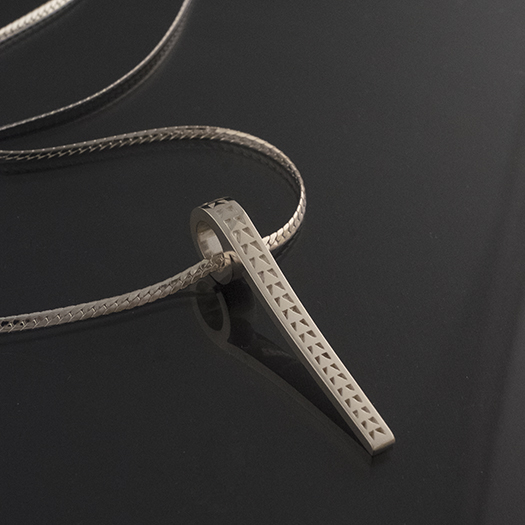 Basket Design PendantSterling SilverContact for pricing and to order
Basket Design PendantSterling SilverContact for pricing and to order -
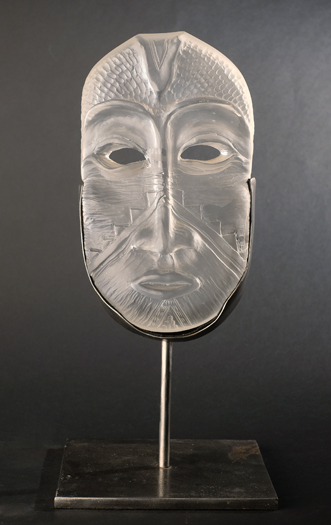 Warm Springs Stick IndianCast Leaded Crystal on Steel Base
Warm Springs Stick IndianCast Leaded Crystal on Steel Base- 15"h
- 7"w
- 6"d
Contact to Special Order -
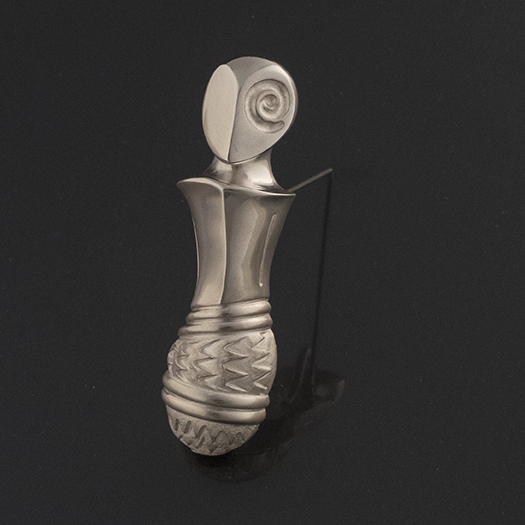 One-Eyed Shadow Spirit Pin/PendantSterling SilverContact for pricing and to order
One-Eyed Shadow Spirit Pin/PendantSterling SilverContact for pricing and to order -
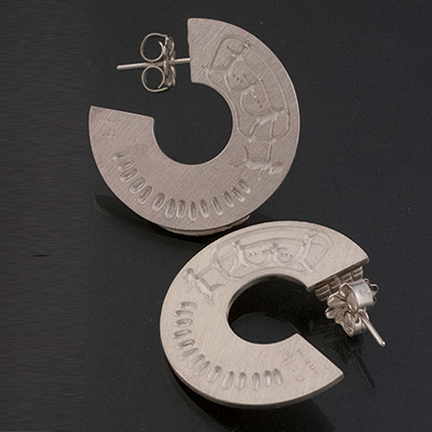 Crow Takes Leave From The Family – EarringsSterling SilverContact for pricing and to order
Crow Takes Leave From The Family – EarringsSterling SilverContact for pricing and to order
-
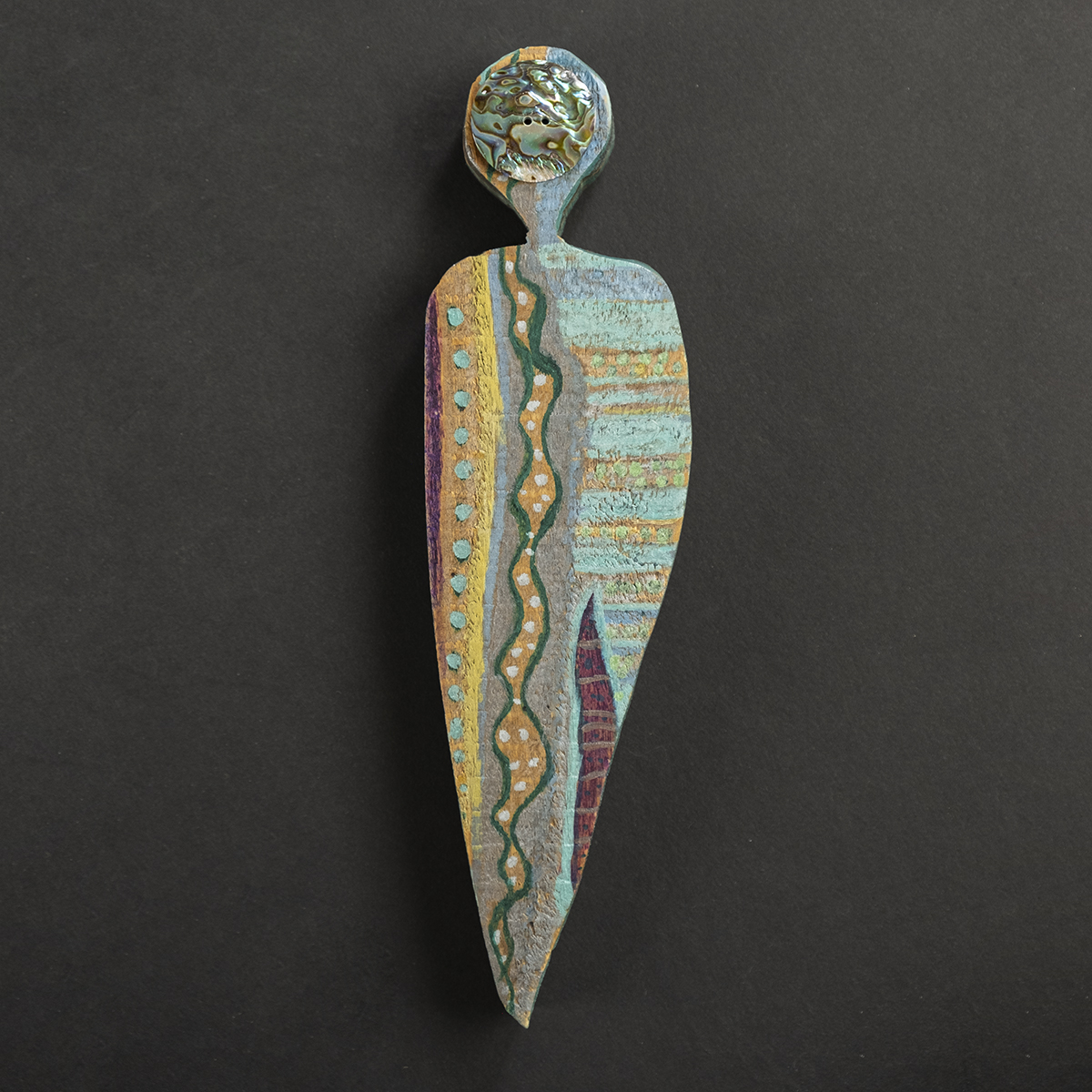 Star Spirit Thinking of Green ForestsPainted Wood, Abalone
Star Spirit Thinking of Green ForestsPainted Wood, Abalone- 9.5"h
- 2.5"w
- 1.5"d
SOLD -
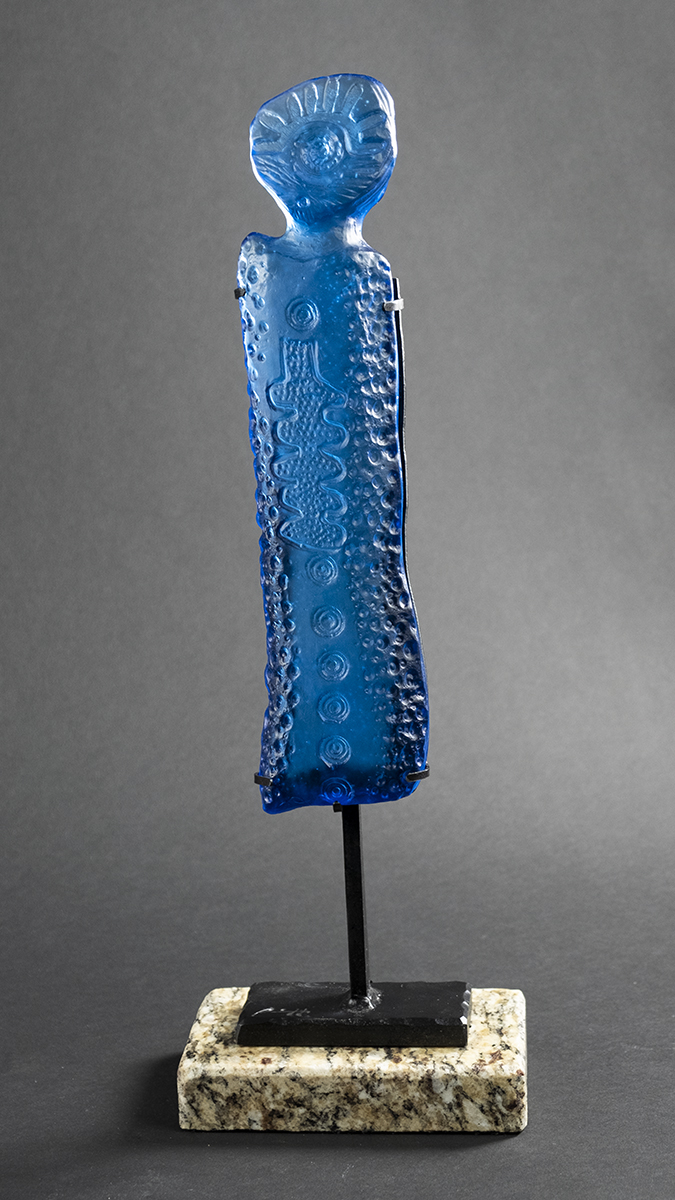 Star Person With RibsCast Glass, Steel and Granite Base
Star Person With RibsCast Glass, Steel and Granite Base- 18"h
- 6"w
- 3.75"d
SOLD -
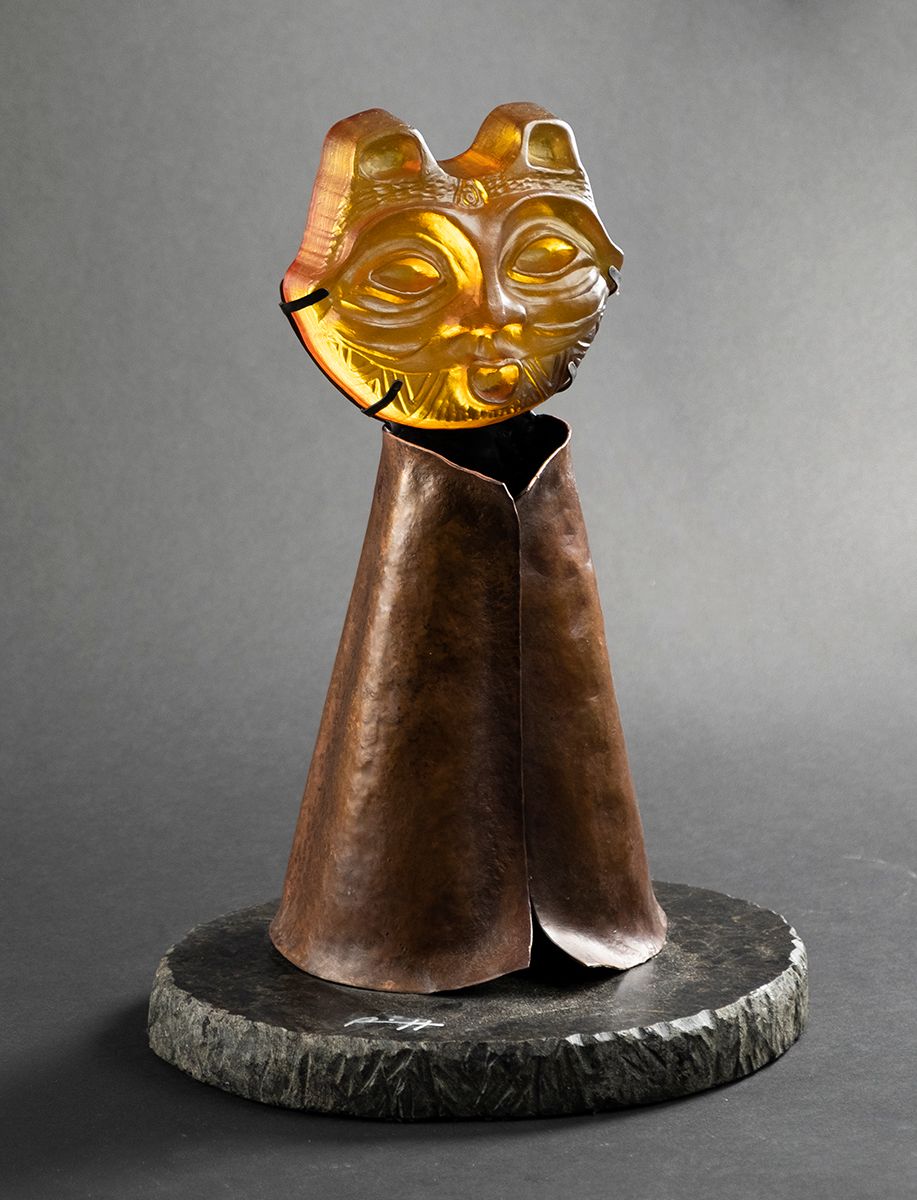 She Who Watches – OrangeCast Glass, Steel & Granite Base, Copper
She Who Watches – OrangeCast Glass, Steel & Granite Base, Copper- 15.5"h
- 10.5"w
- 8.5"d
SOLD -
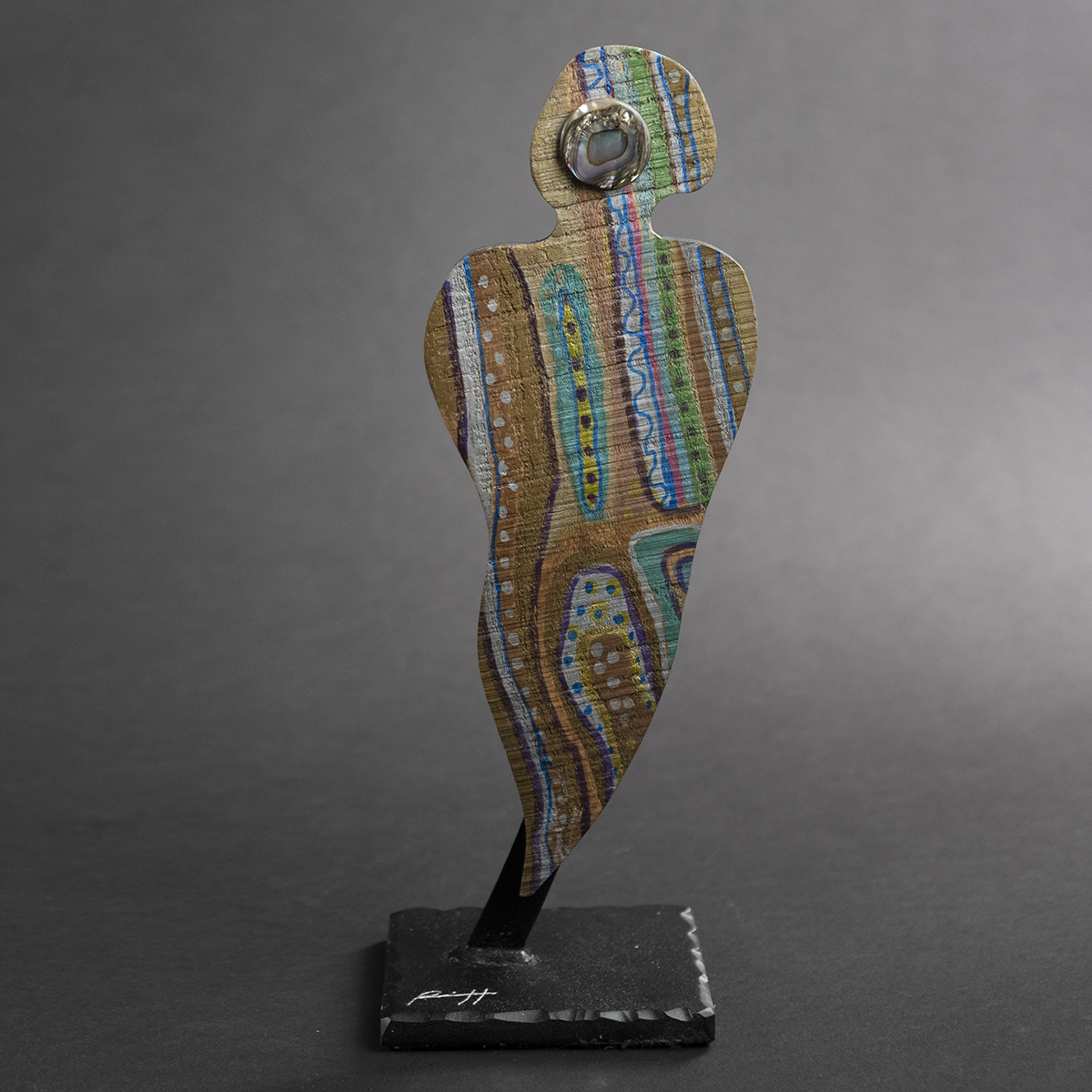 Star PersonWood, Paint, Abalone, Steel
Star PersonWood, Paint, Abalone, Steel- 11.25"h
- 3.75"w
- 3"d
SOLD -
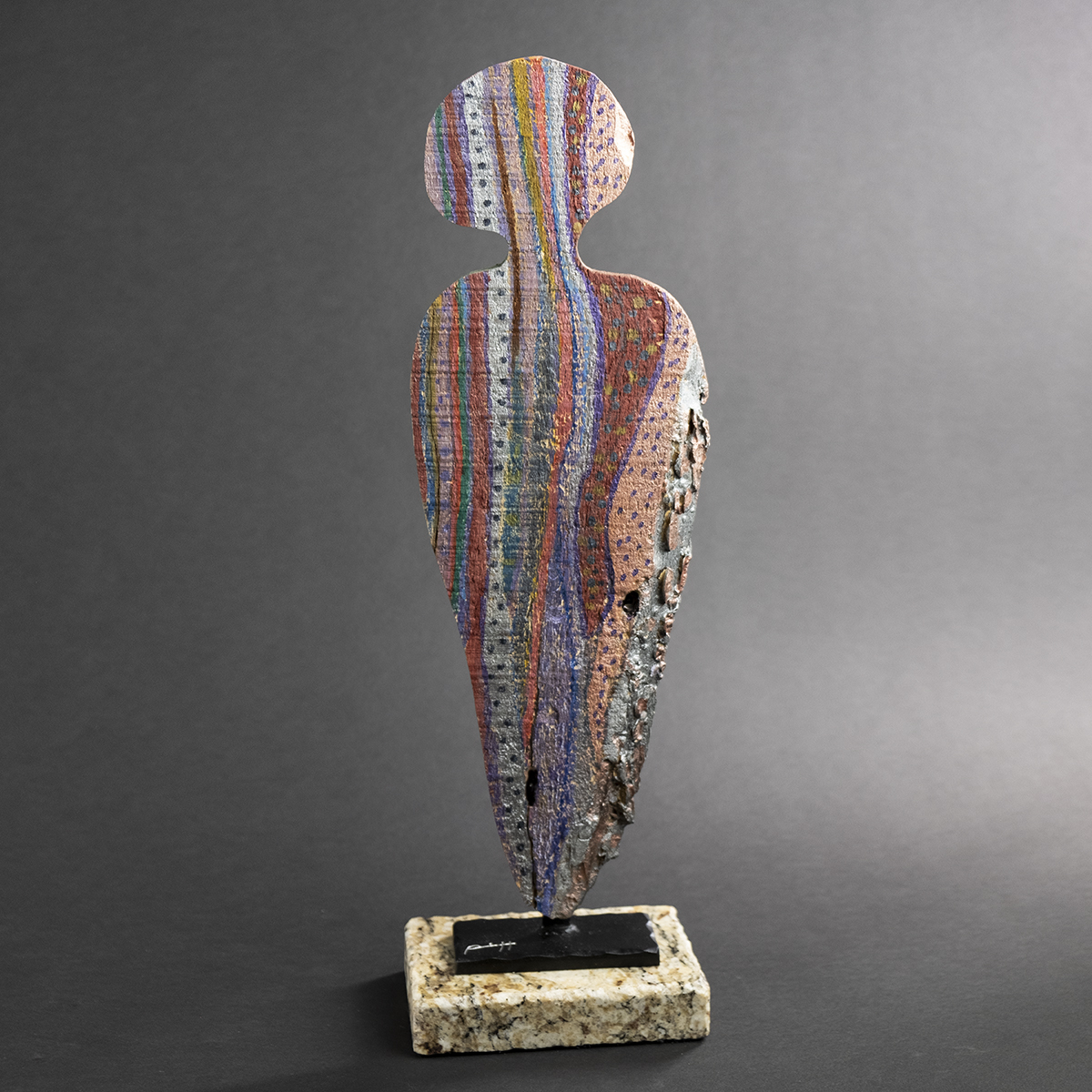 Star Person Feeling the Heat of the StarsWood, Paint, Steel and Granite Base
Star Person Feeling the Heat of the StarsWood, Paint, Steel and Granite Base- 19.5"h
- 6"w
- 4"d
SOLD -
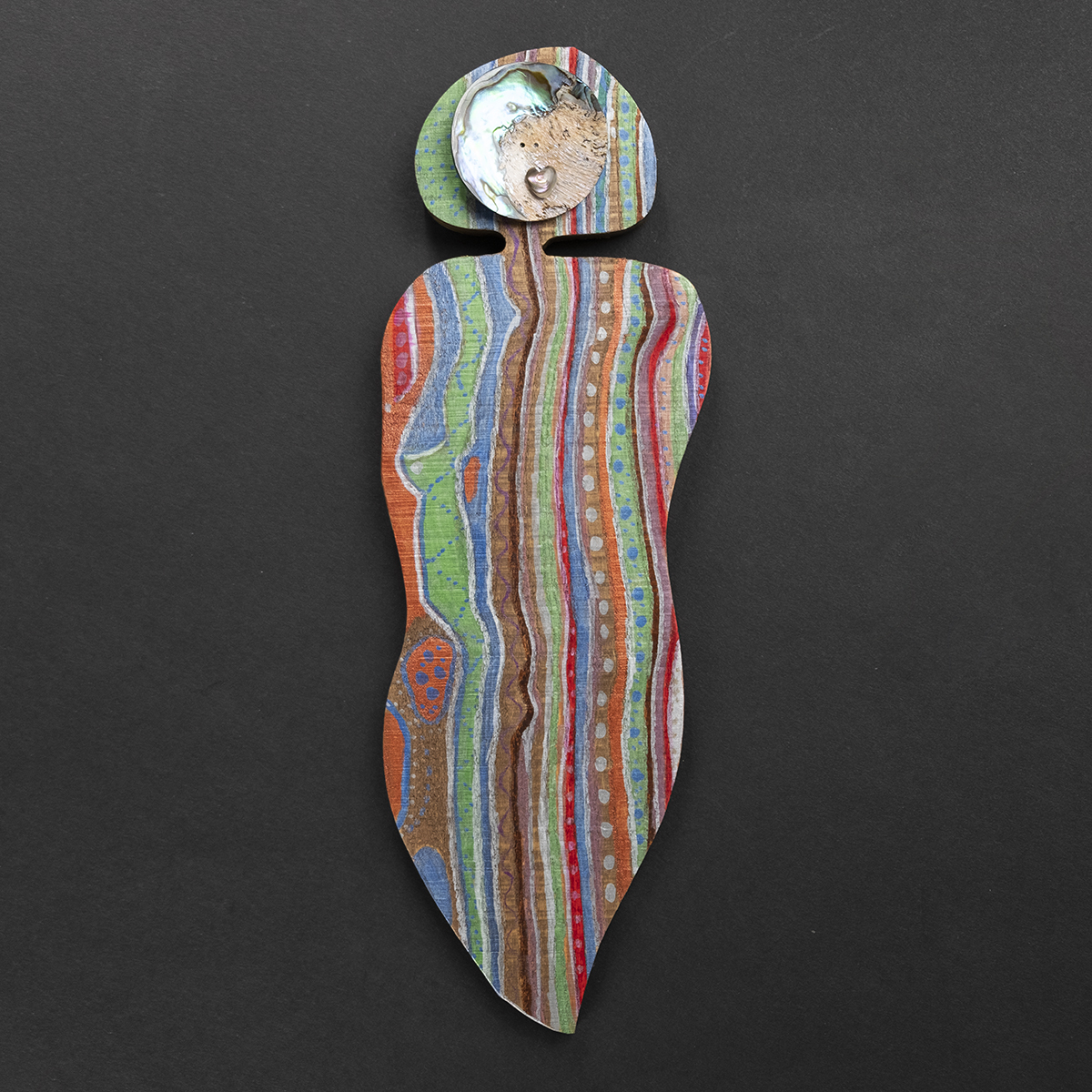 Star Person Feeling the SunriseWood, Paint, Abalone
Star Person Feeling the SunriseWood, Paint, Abalone- 12"h
- 4.25"w
- .53"d
SOLD -
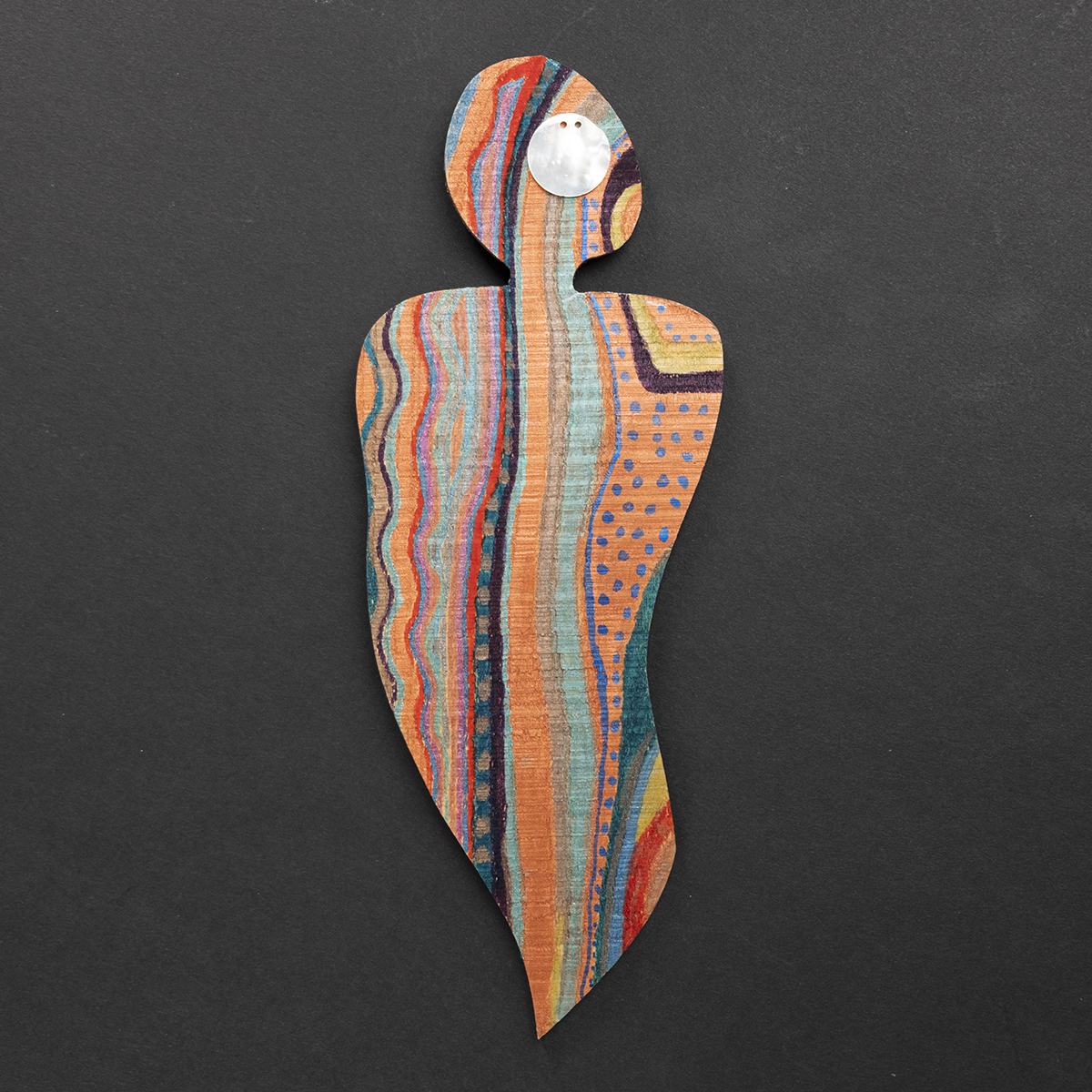 Star Spirit Seeing Beyond the BoundariesCedar, Paint, Abalone
Star Spirit Seeing Beyond the BoundariesCedar, Paint, Abalone- 10.25"h
- 3.5"w
- .13"d
SOLD -
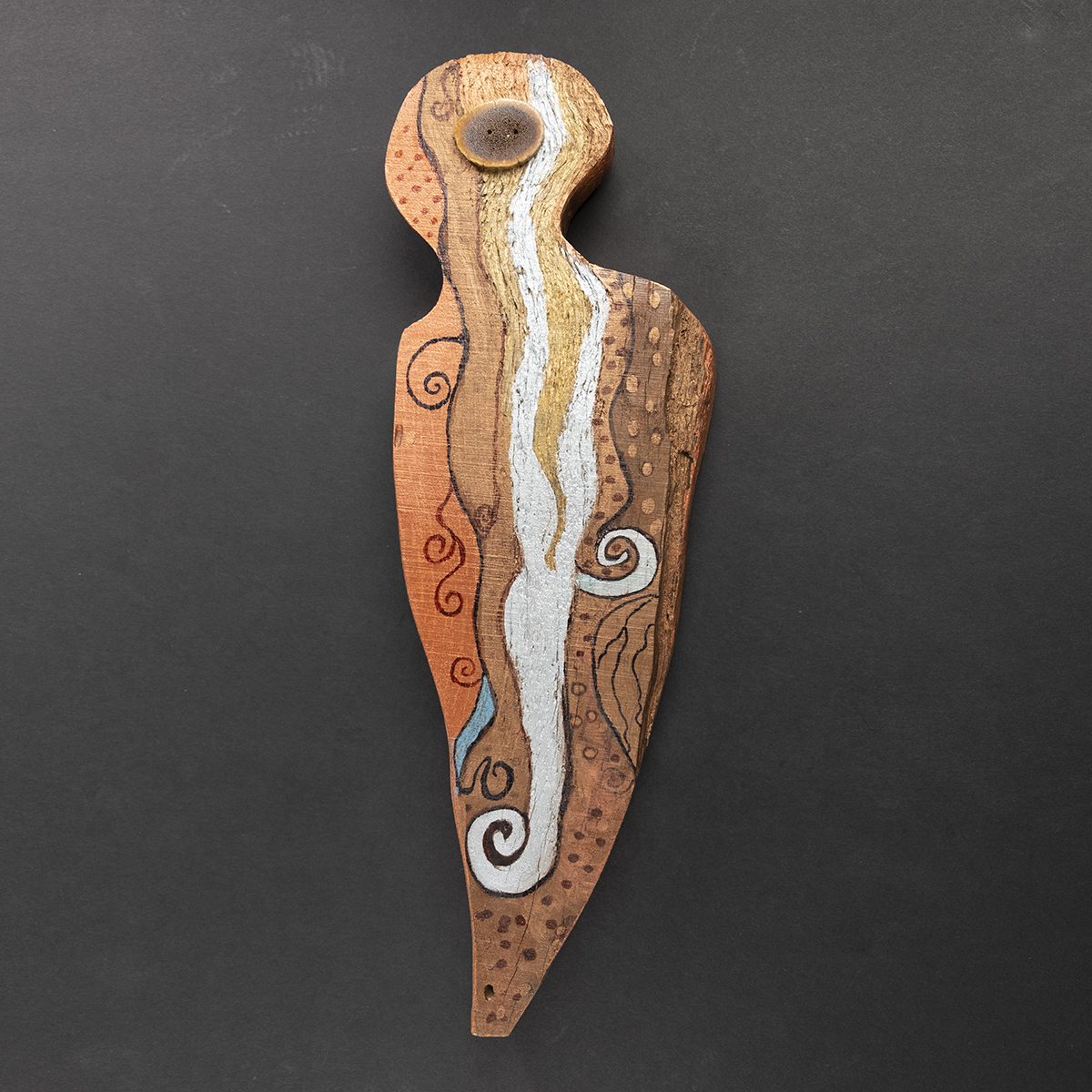 Star Person Feeling GroundedWood, Paint, Elk Horn
Star Person Feeling GroundedWood, Paint, Elk Horn- 18.25"h
- 6"w
- 1.63"d
SOLD -
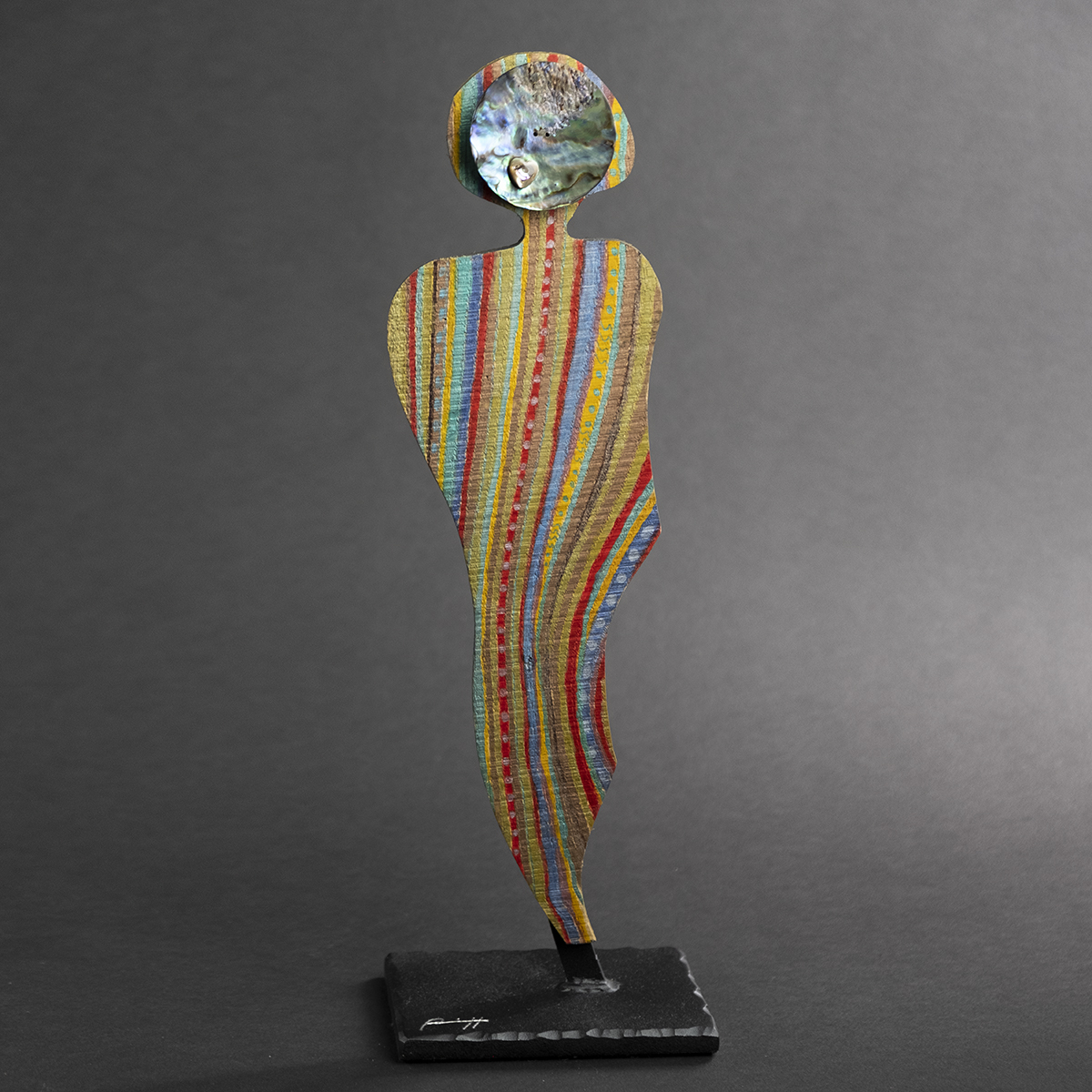 Star Spirit Feeling the RainbowWood, Paint, Steel, Abalone
Star Spirit Feeling the RainbowWood, Paint, Steel, Abalone- 14.25"h
- 4.75"w
- 3"d
SOLD -
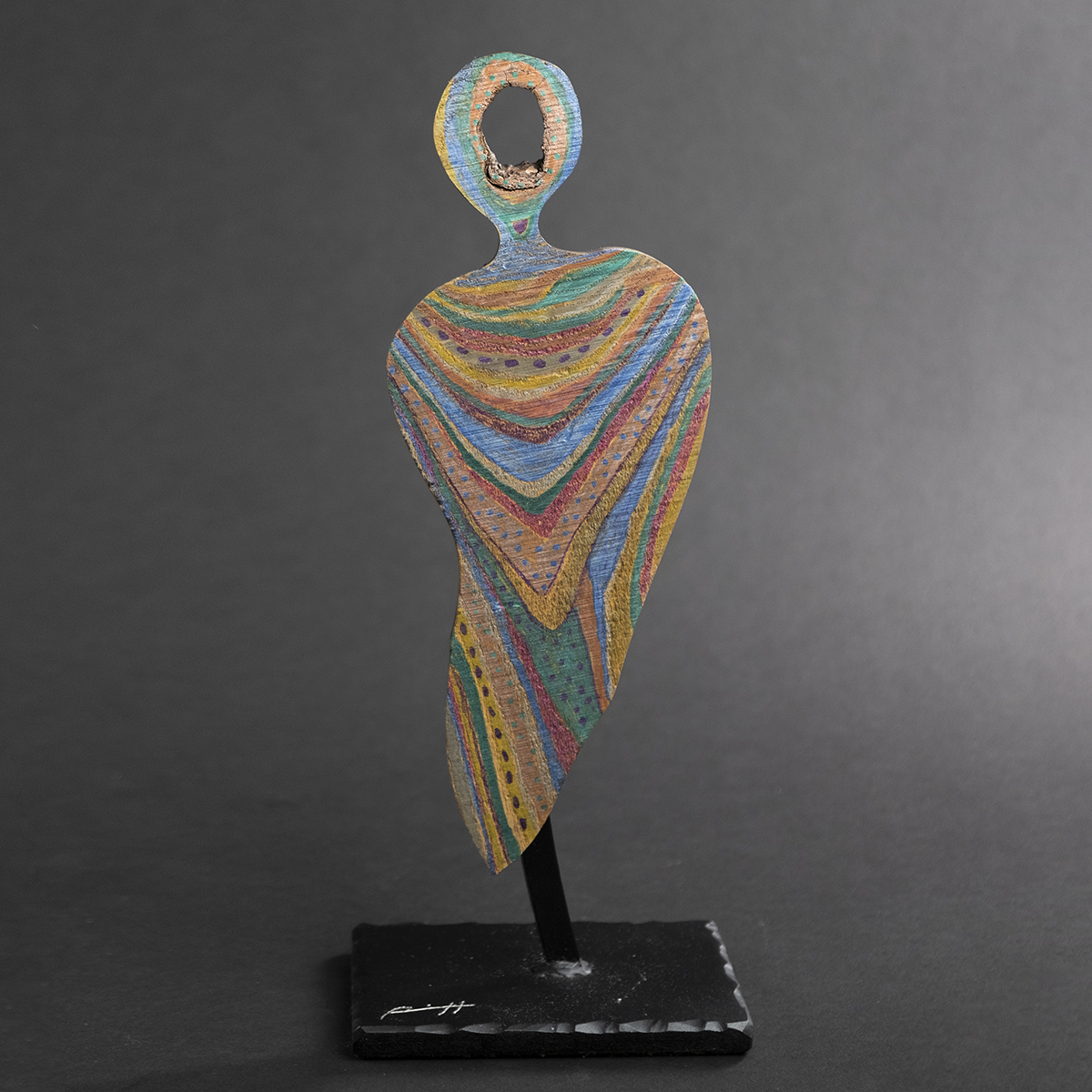 Star Person Getting a Little AirWood, Paint, Steel Base
Star Person Getting a Little AirWood, Paint, Steel Base- 12.75"h
- 4.75"w
- 3"d
SOLD -
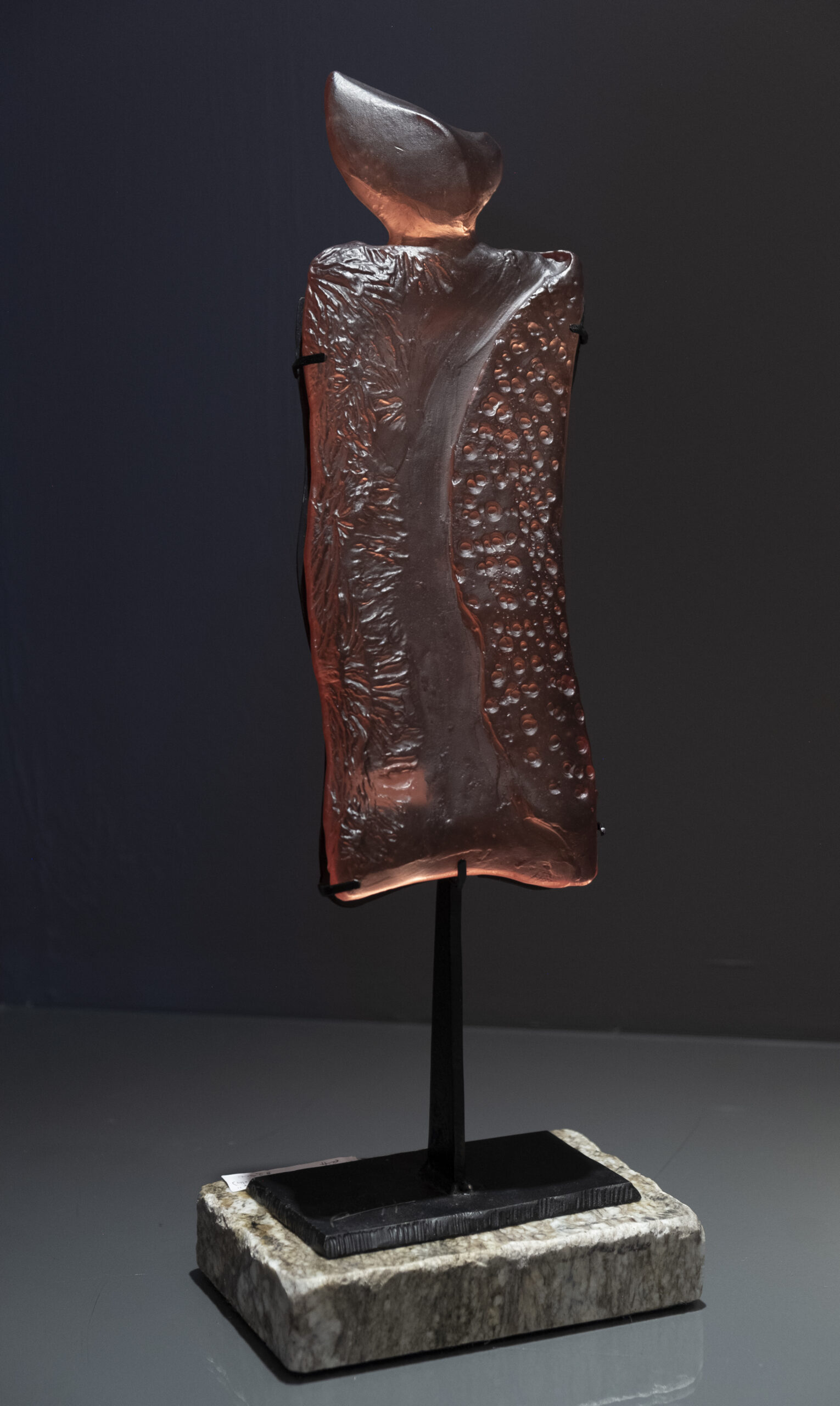 Shadow Spirit Thinking of Changing Her ImageCast Glass, Steel, Granite BaseSOLD
Shadow Spirit Thinking of Changing Her ImageCast Glass, Steel, Granite BaseSOLD -
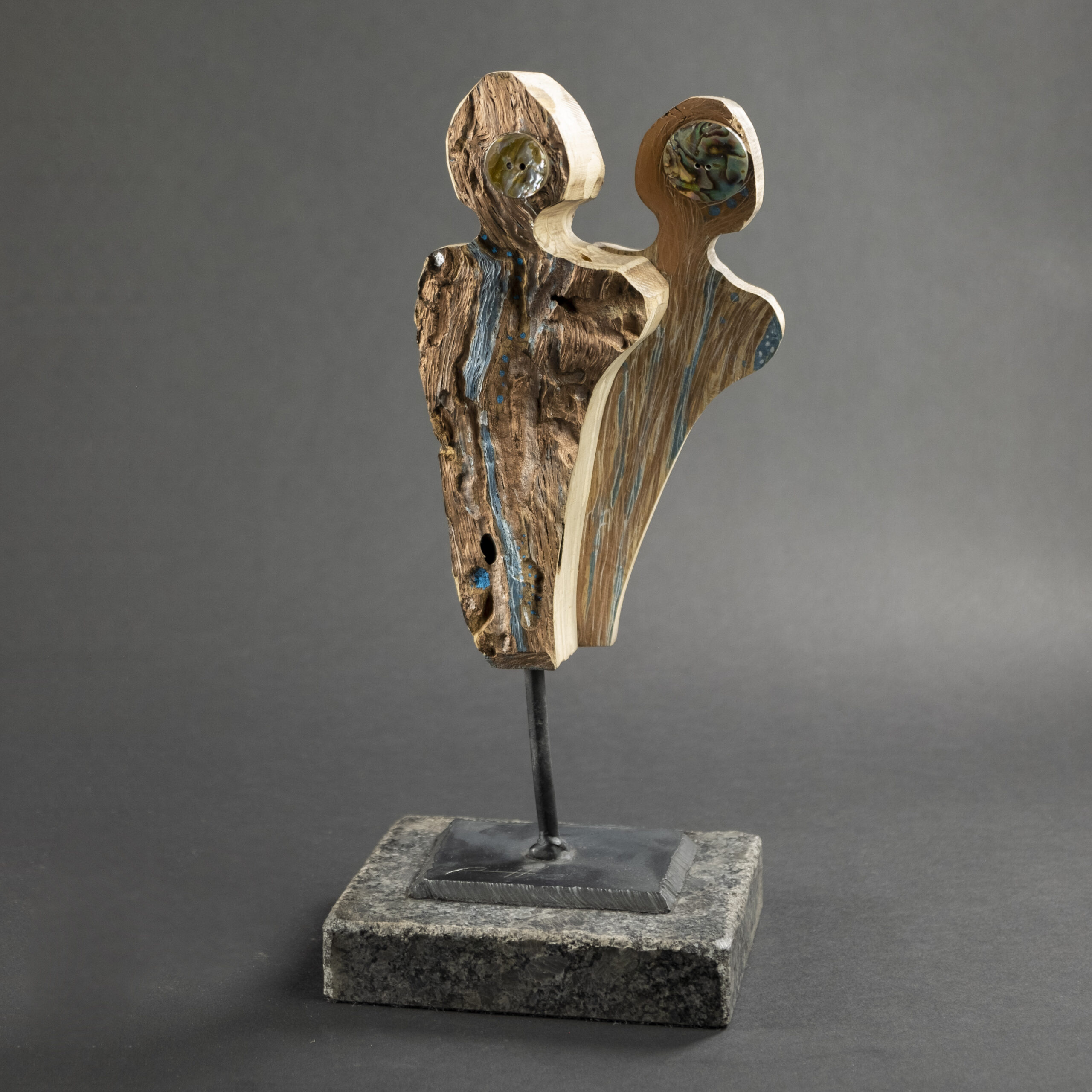 Star Person SistersWood, Shells, Paint, Steel
Star Person SistersWood, Shells, Paint, Steel- 12.75"h
- 4.5"w
- 5.63"d
SOLD -
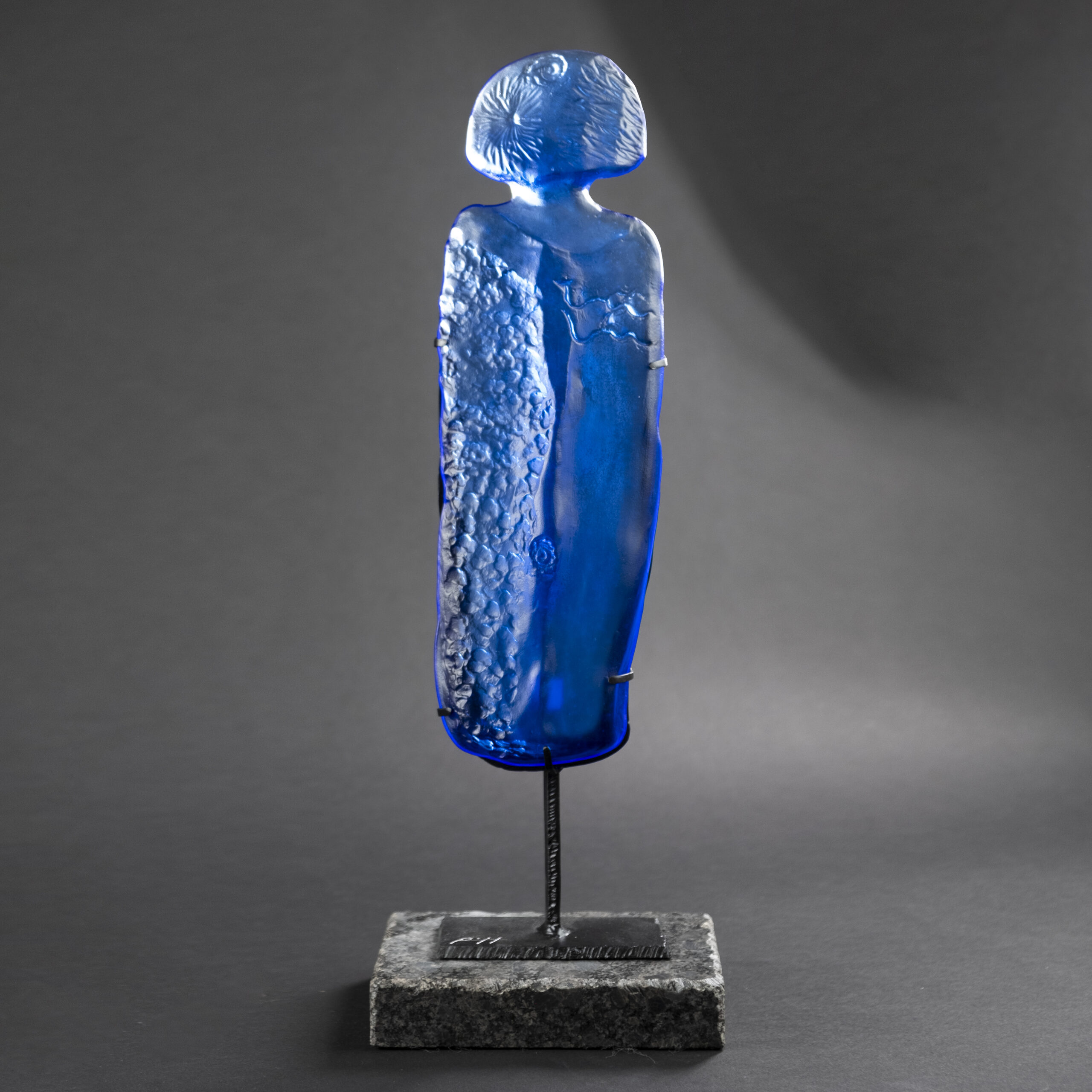 Pathfinder #2Cast Glass, Steel, Granite Base
Pathfinder #2Cast Glass, Steel, Granite Base- 17.38"h
- 6"w
- 4"d
SOLD -
 Spirit Watcher – Raku MaskRaku-fired Ceramic with Pheasant Feathers, Copper Beads
Spirit Watcher – Raku MaskRaku-fired Ceramic with Pheasant Feathers, Copper Beads- 42.5"h
- 38.5"w
- 3.25"d
SOLD -
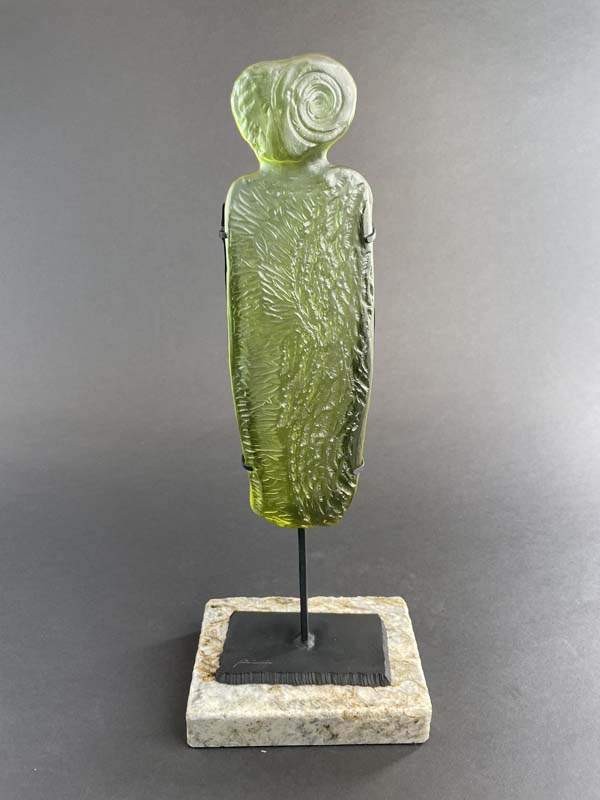 Star Person Awestruck by the GrassesRhubarb Glass Crystal, Granite and Steel Base
Star Person Awestruck by the GrassesRhubarb Glass Crystal, Granite and Steel Base- 16.25"h
- 6.5"w
- 4.25"d
SOLD -
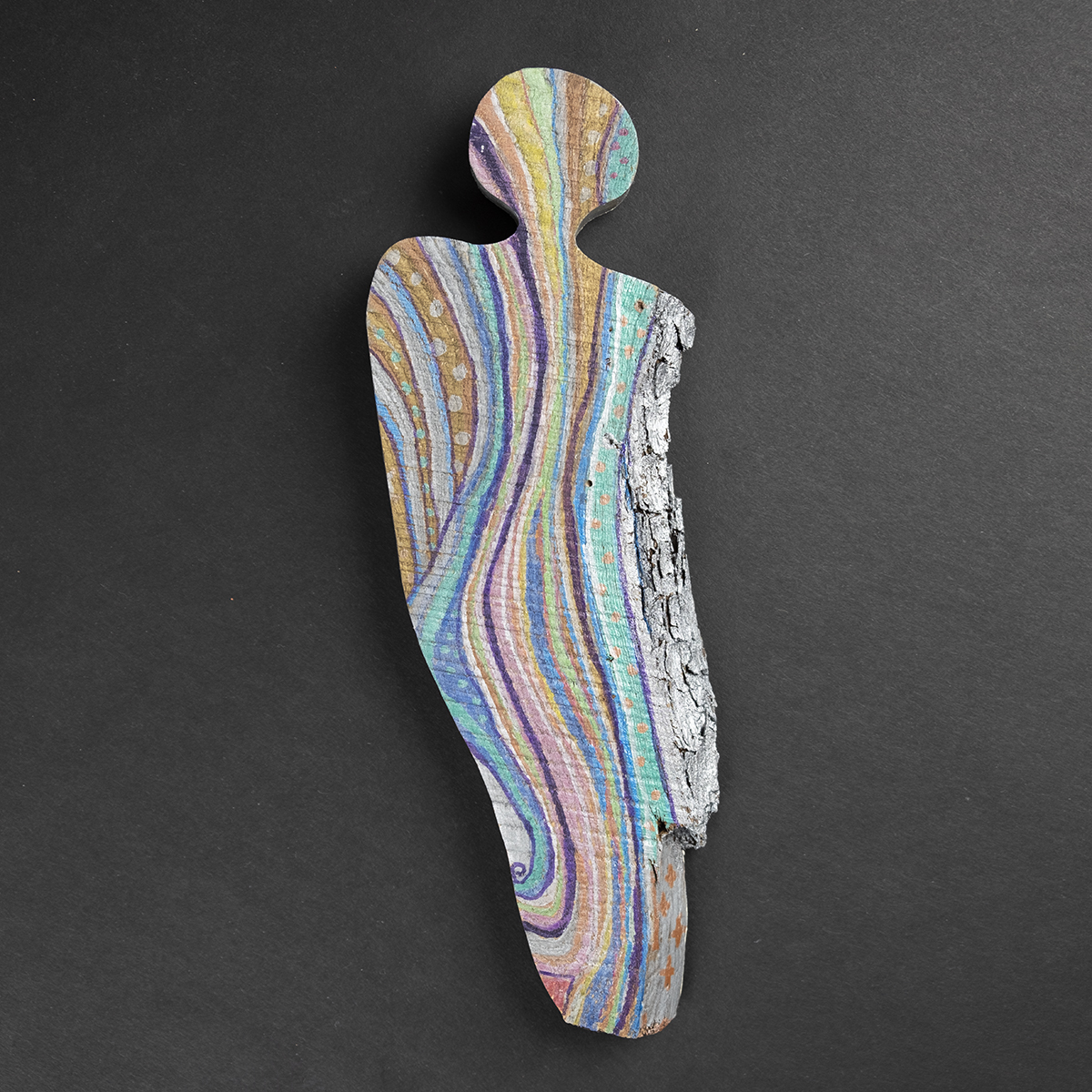 Star Person Fully Dressed for the Big DanceWood, Pigments
Star Person Fully Dressed for the Big DanceWood, Pigments- 10.75"h
- 3.75"w
- .5"d
SOLD -
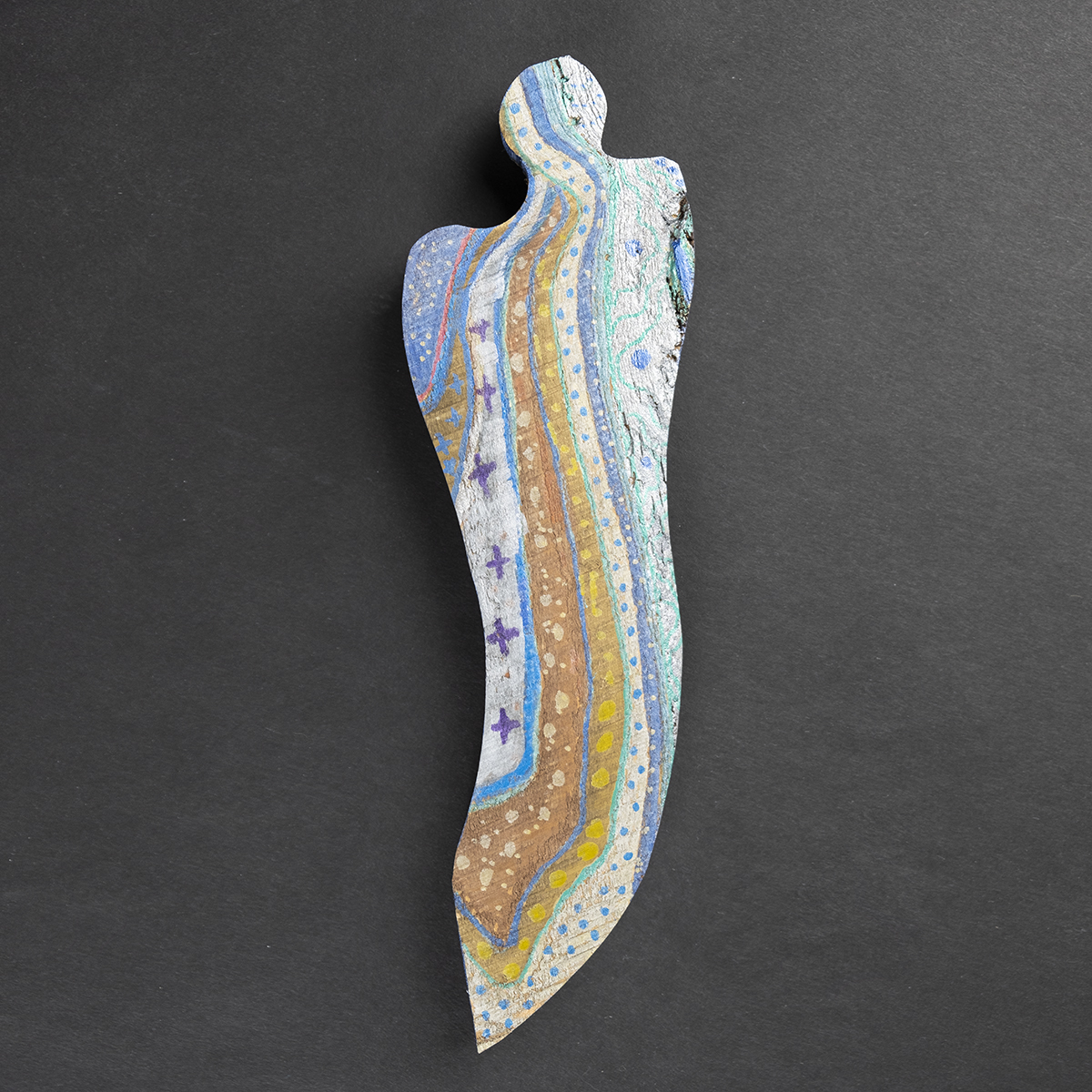 Star Person Feeling BlueWood, Pigments
Star Person Feeling BlueWood, Pigments- 10.63"h
- 3.13"w
- .5"d
SOLD -
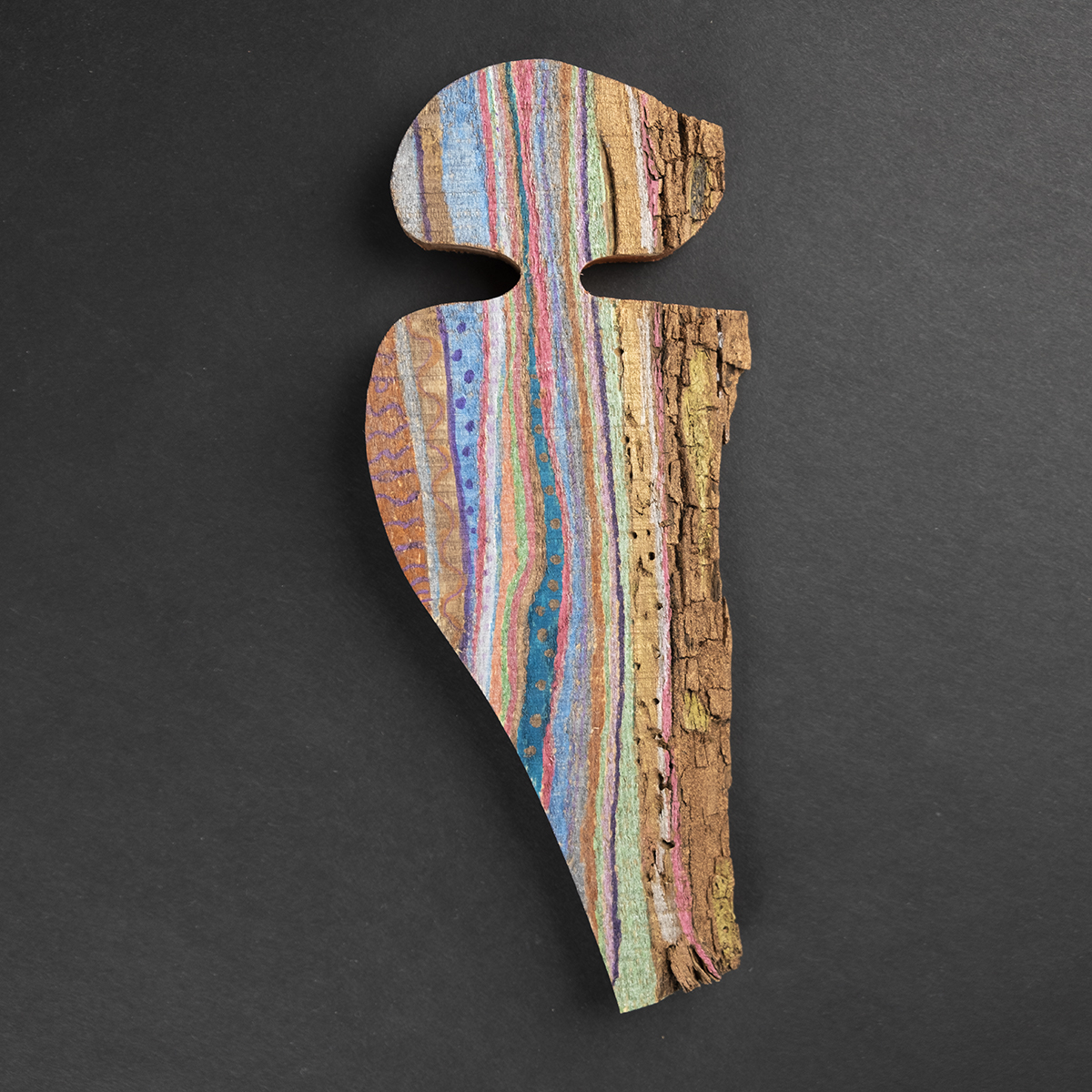 Star Person Following the Flow of ThingsWood, Pigments
Star Person Following the Flow of ThingsWood, Pigments- 10"h
- 4.5"w
- .5"d
SOLD -
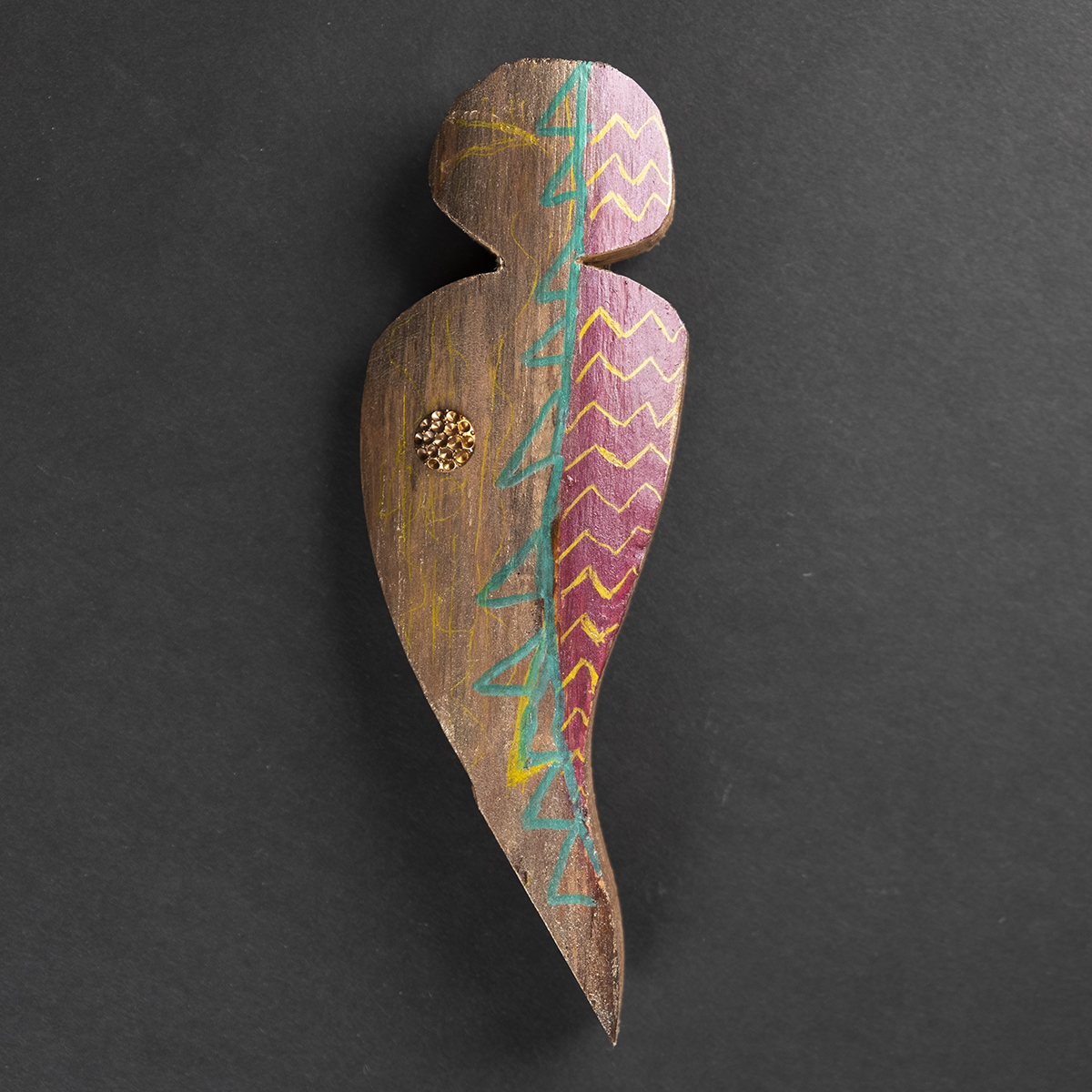 Star Person Dressed for the Beatles ConcertWood, Pigments, Copper
Star Person Dressed for the Beatles ConcertWood, Pigments, Copper- 8"h
- 3"w
- 1.13"d
SOLD -
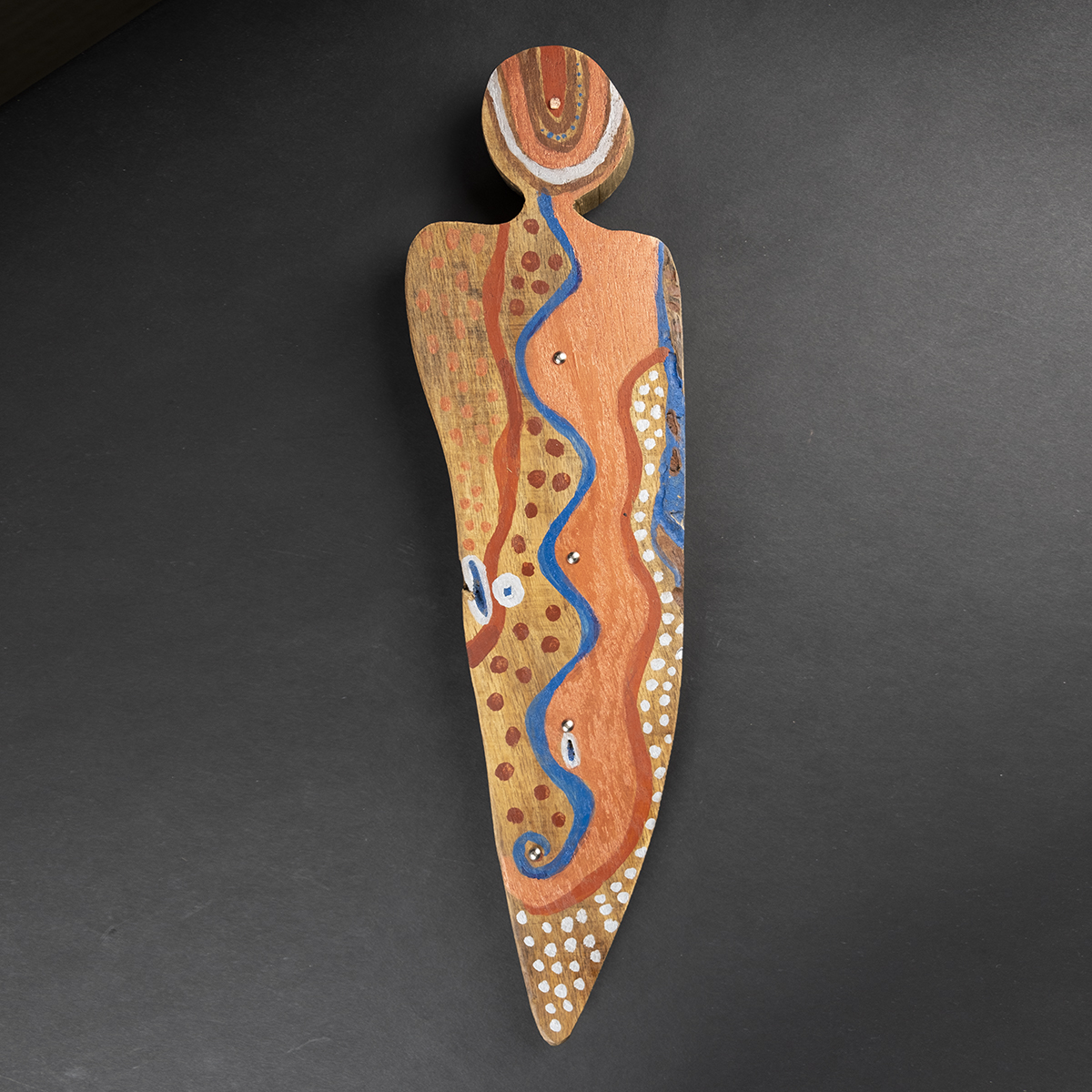 Star Person Initiating Four New Stars to Find His FamilyWood, Pigments, Metal
Star Person Initiating Four New Stars to Find His FamilyWood, Pigments, Metal- 21.5"h
- 1.13"w
- 6.88"d
SOLD -
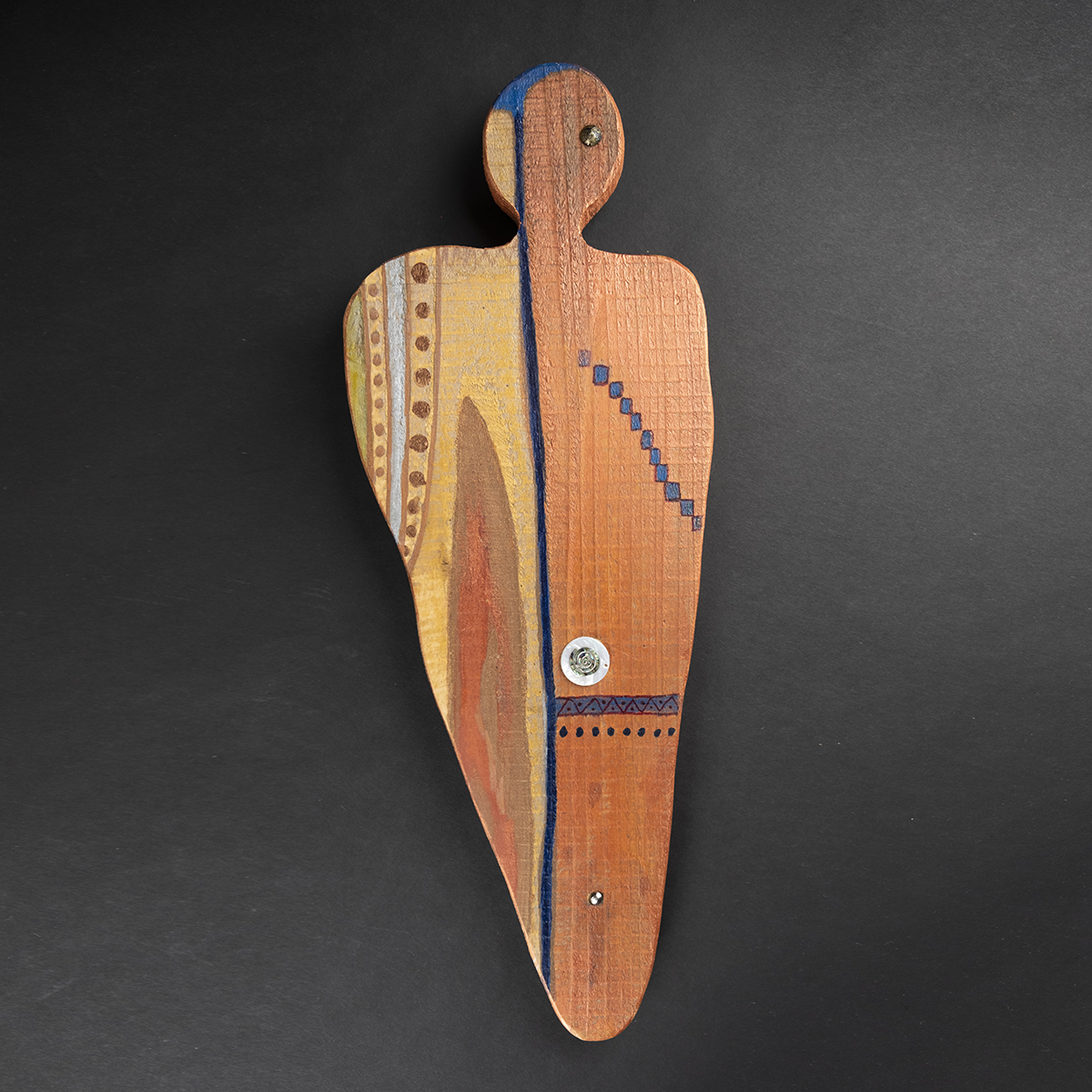 Star Person Feeling RegalCedar, Pigments, Acrylic, Shell, Metal
Star Person Feeling RegalCedar, Pigments, Acrylic, Shell, Metal- 19.75"h
- 7.25"w
- 1.5"d
SOLD -
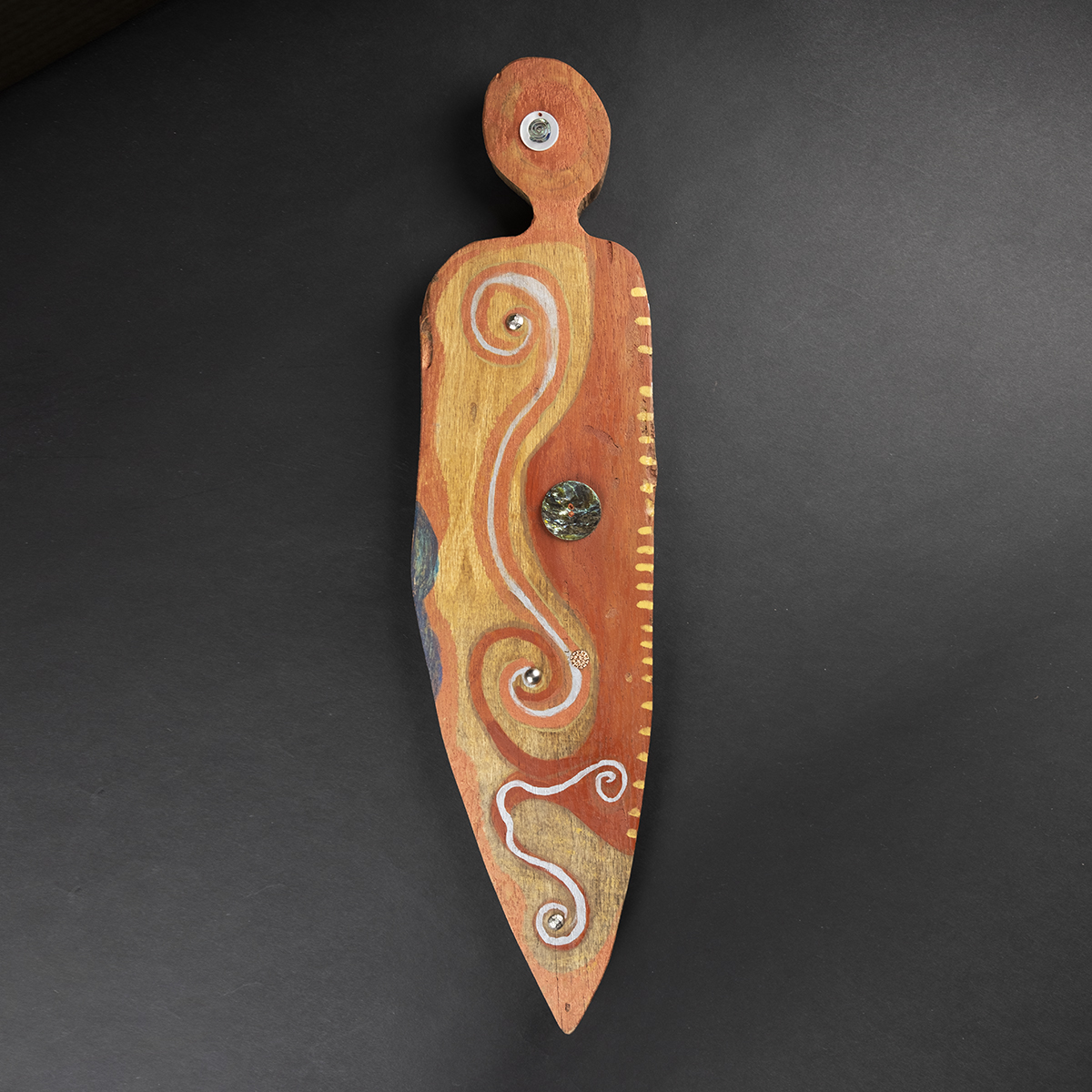 Star Person Feeling PeacefulWood, Paint, Silver, Copper, Shell, Metal Tacks
Star Person Feeling PeacefulWood, Paint, Silver, Copper, Shell, Metal Tacks- 25.75"h
- 6.5"w
- 1"d
SOLD -
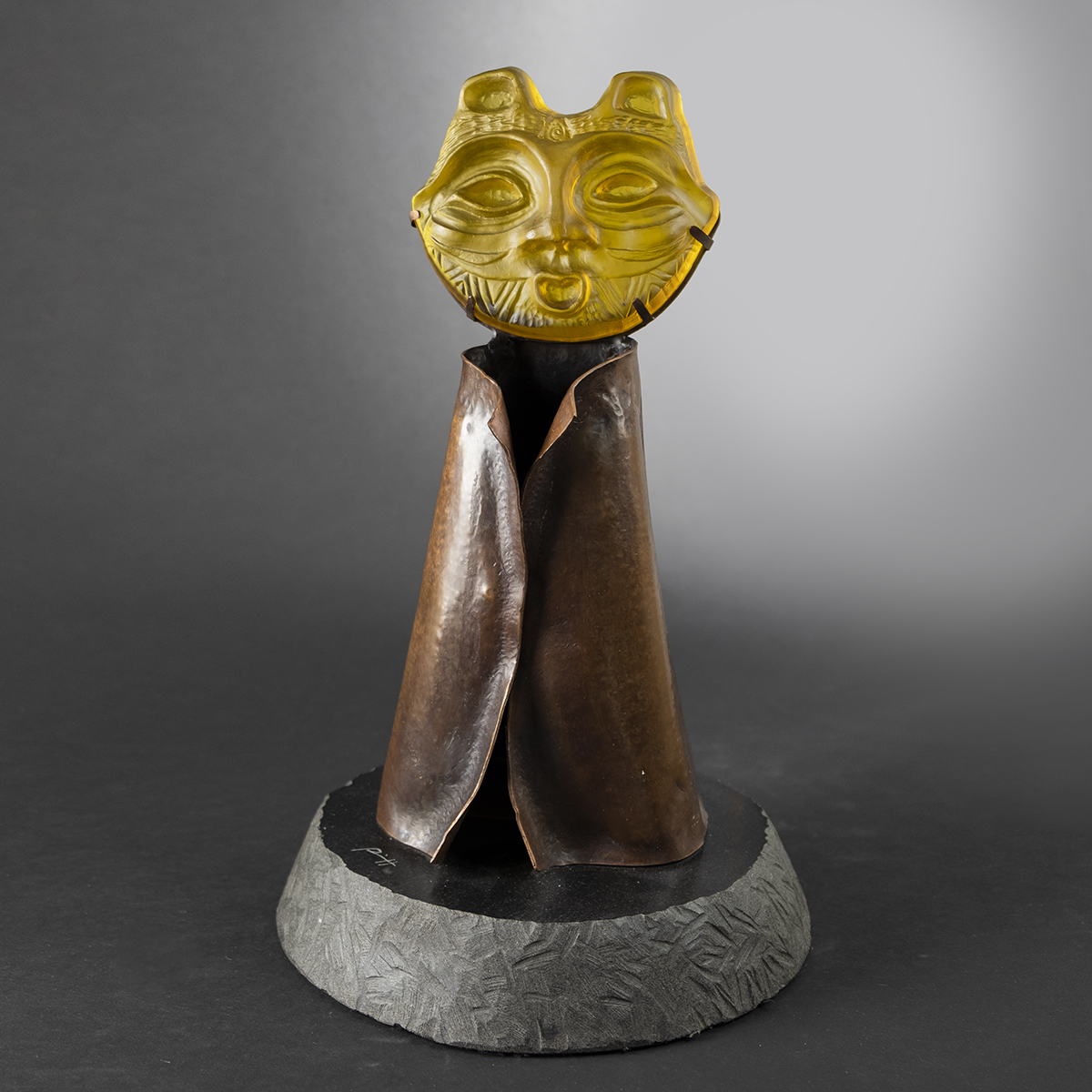 She Who Watches with Copper CloakCoast Glass (Lemon Drop Color), Copper, Granite
She Who Watches with Copper CloakCoast Glass (Lemon Drop Color), Copper, Granite- 16.5"h
- 10"w
- 10"d
SOLD -
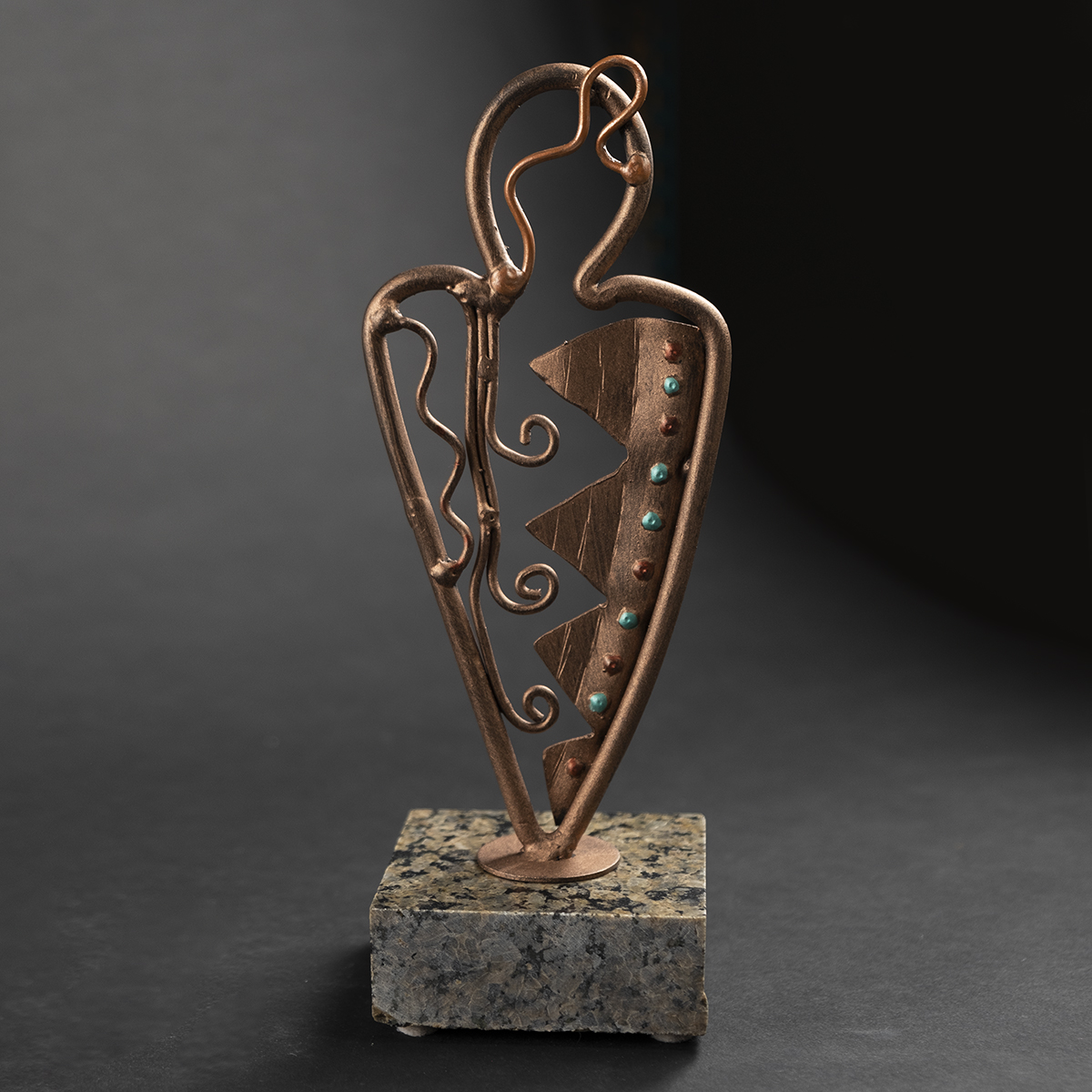 Star Person Wanting a Tango PartnerMetal, Paint, Granite
Star Person Wanting a Tango PartnerMetal, Paint, Granite- 9.5"h
- 3.25"w
- 3.25"d
SOLD -
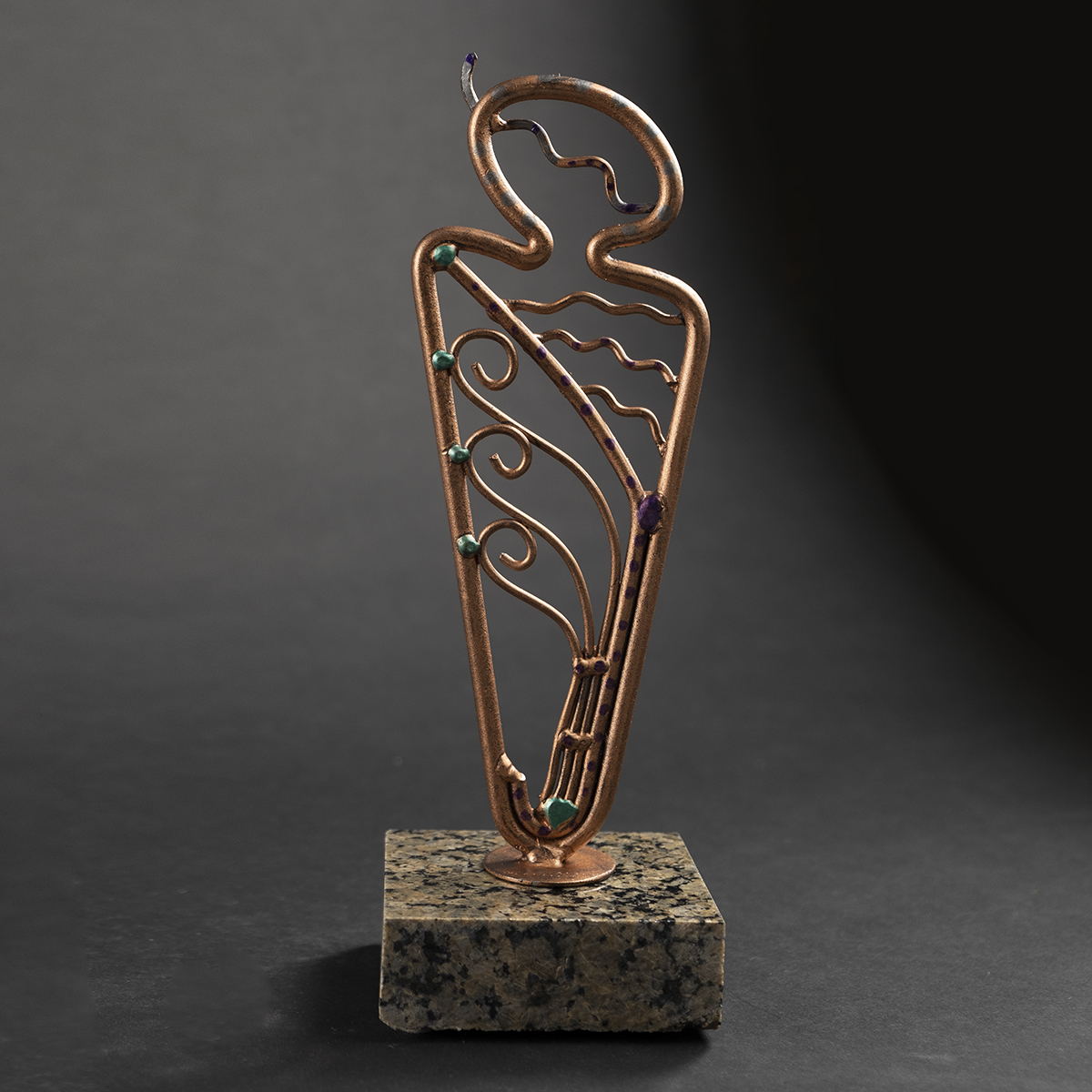 Star Person Having a BlastMetal, Paint, Granite
Star Person Having a BlastMetal, Paint, Granite- 10.5"h
- 3.63"w
- 3.13"d
SOLD -
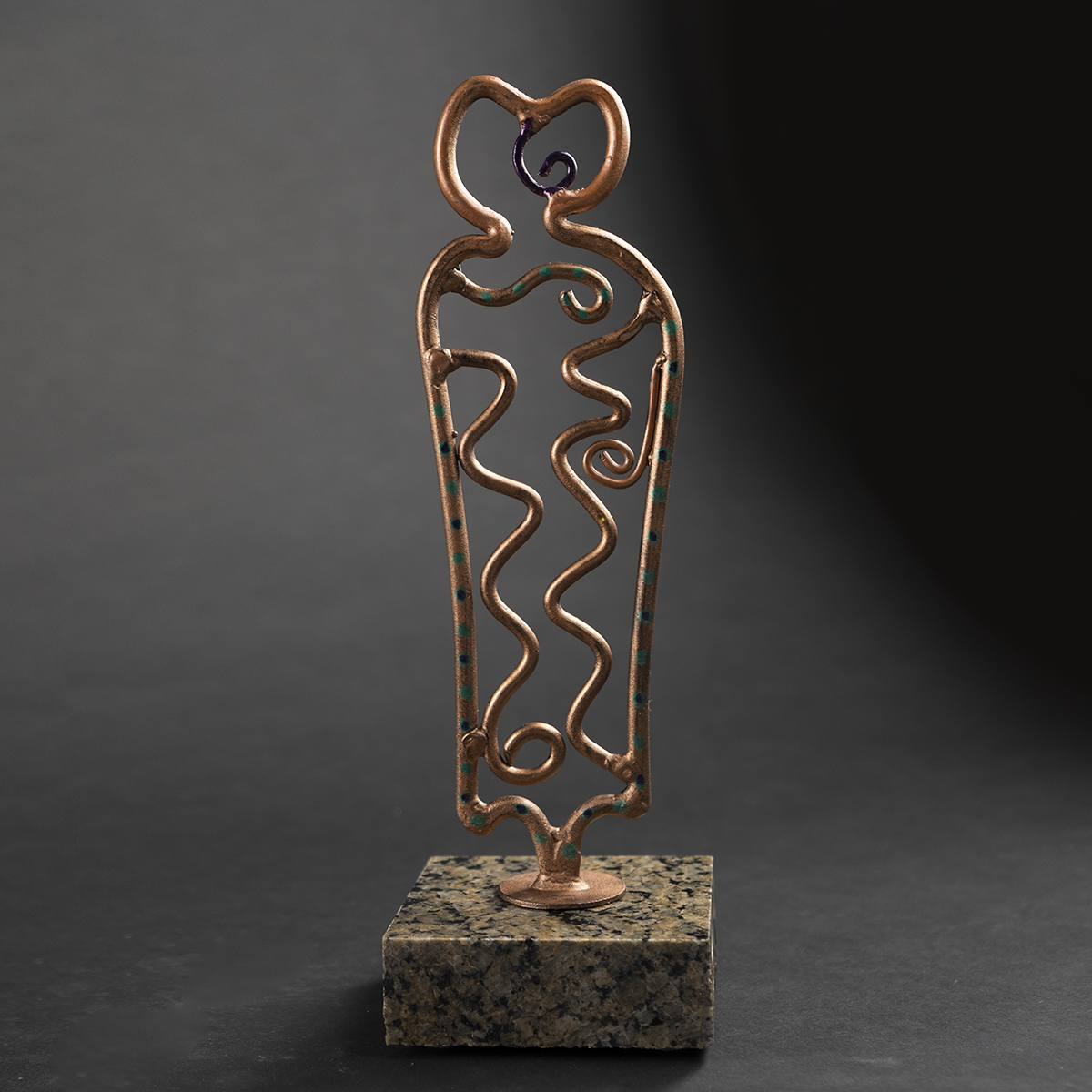 Star Person Finding Her PathMetal, Paint, Granite
Star Person Finding Her PathMetal, Paint, Granite- 10.75"h
- 3.38"w
- 3.5"d
SOLD -
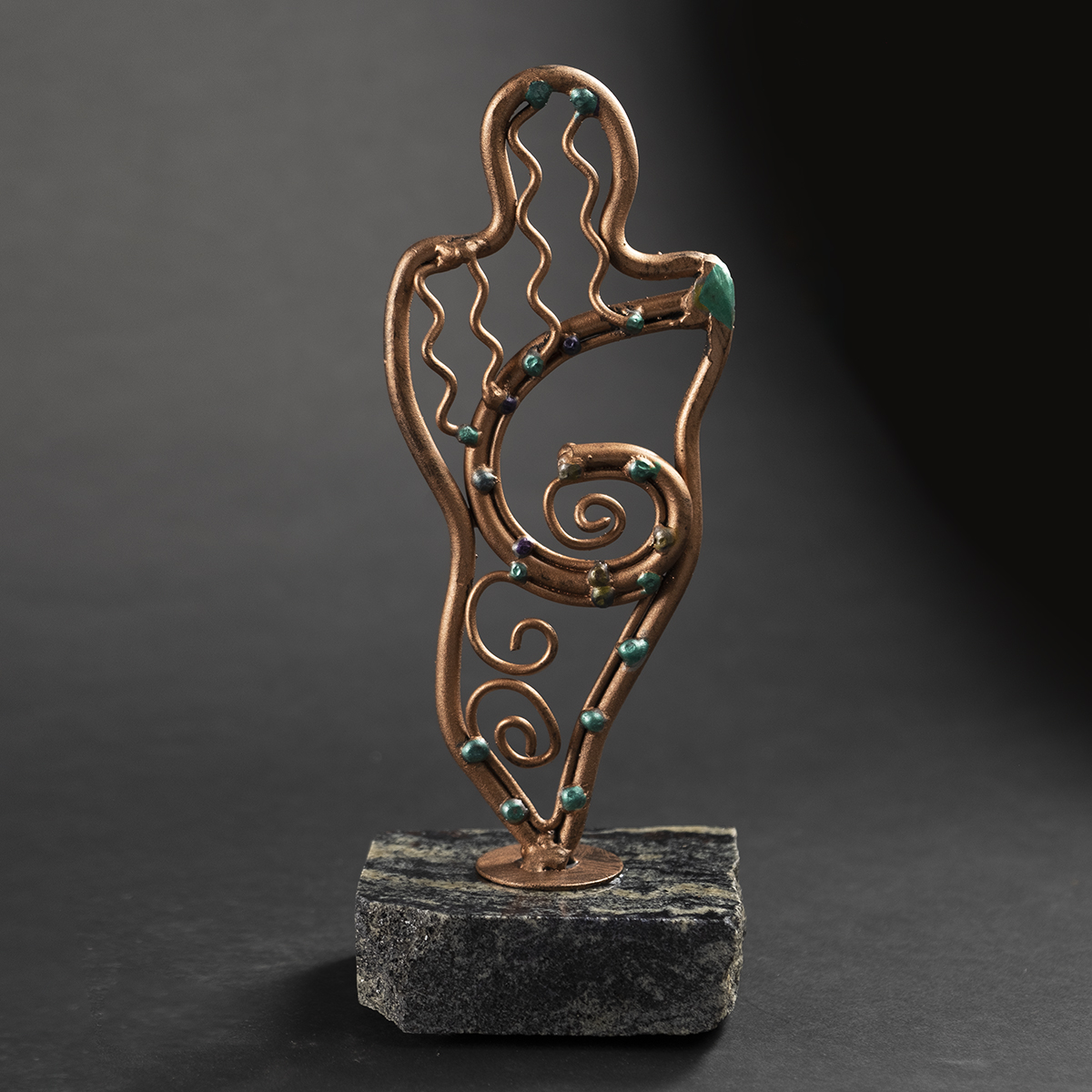 Star Person Finding East in the DarkMetal, Paint, Granite
Star Person Finding East in the DarkMetal, Paint, Granite- 9.25"h
- 3.25"w
- 3.88"d
SOLD -
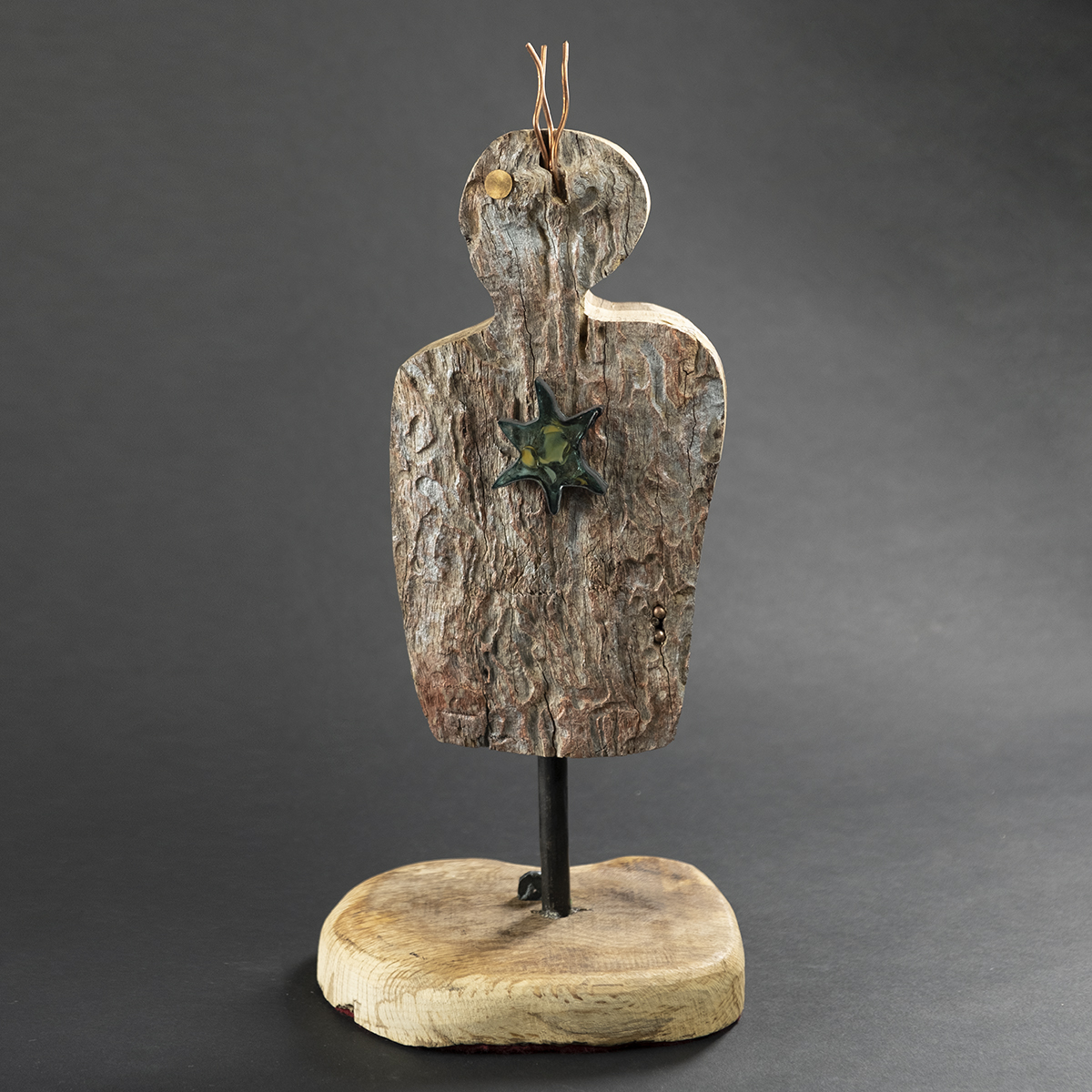 Star Spirit Dressed for the PartyWood, Steel, Copper, Glass
Star Spirit Dressed for the PartyWood, Steel, Copper, Glass- 16"h
- 7"w
- 5"d
SOLD -
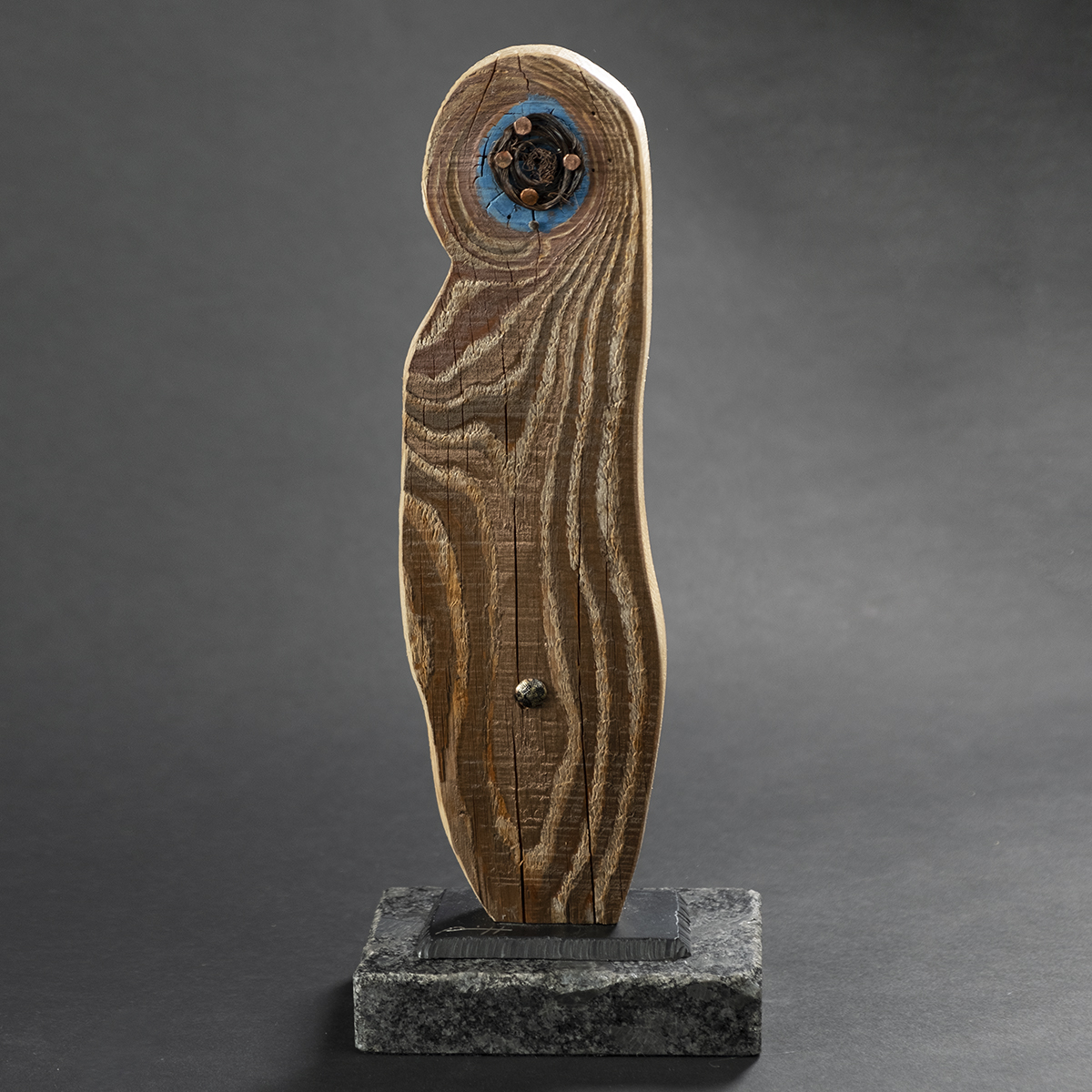 From the Stars WithinWood, Metal, Paint, Steel, Granite Base
From the Stars WithinWood, Metal, Paint, Steel, Granite Base- 13.5"h
- 5.5"w
- 3.5"d
SOLD -
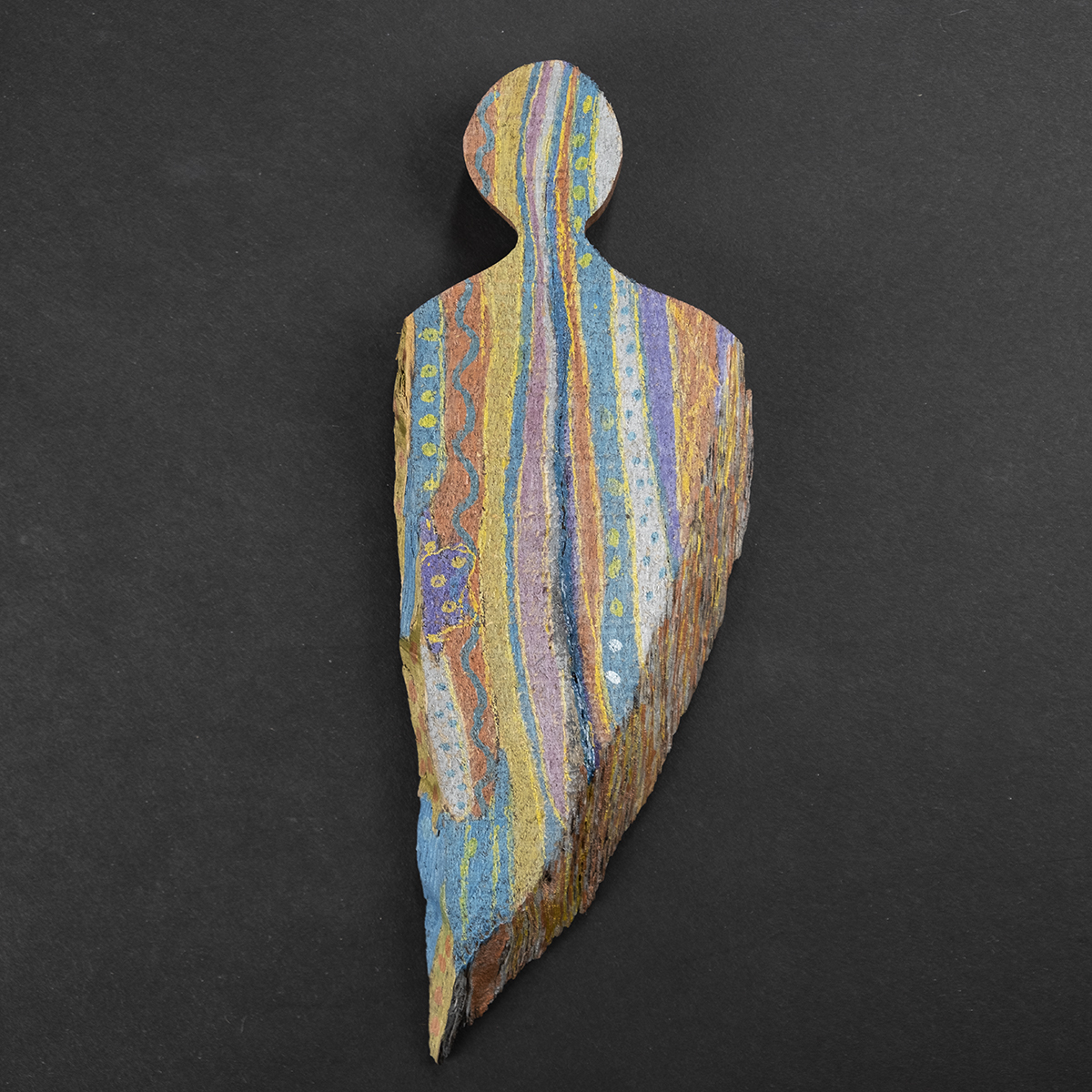 Star Spirit Feeling the Presence of Father MoonWood, Pigments
Star Spirit Feeling the Presence of Father MoonWood, Pigments- 10"h
- 3.5"w
SOLD -
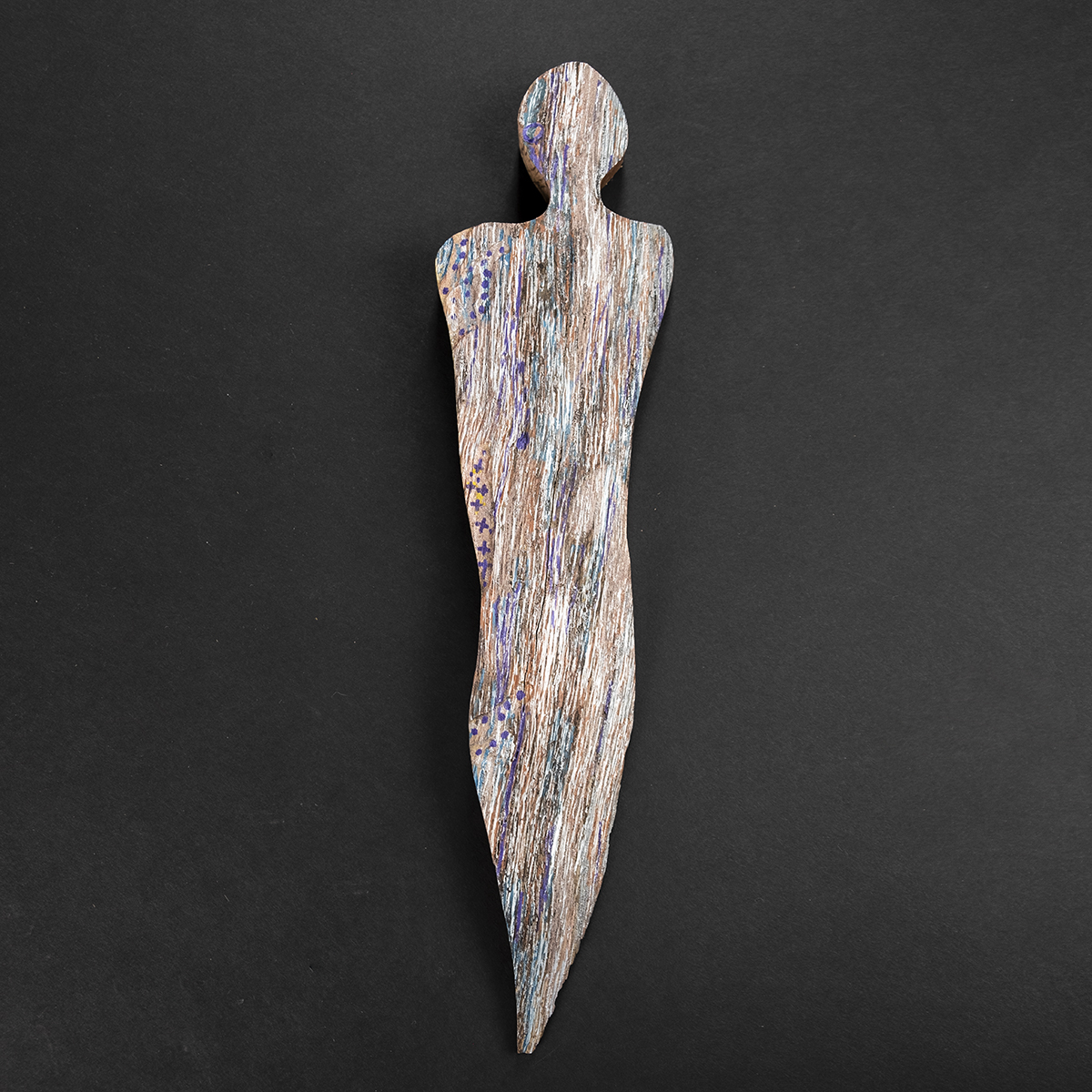 Star Spirit Catching the Lights Around HerWood, Pigments
Star Spirit Catching the Lights Around HerWood, Pigments- 16.5"h
- 4"w
- 1"d
SOLD -
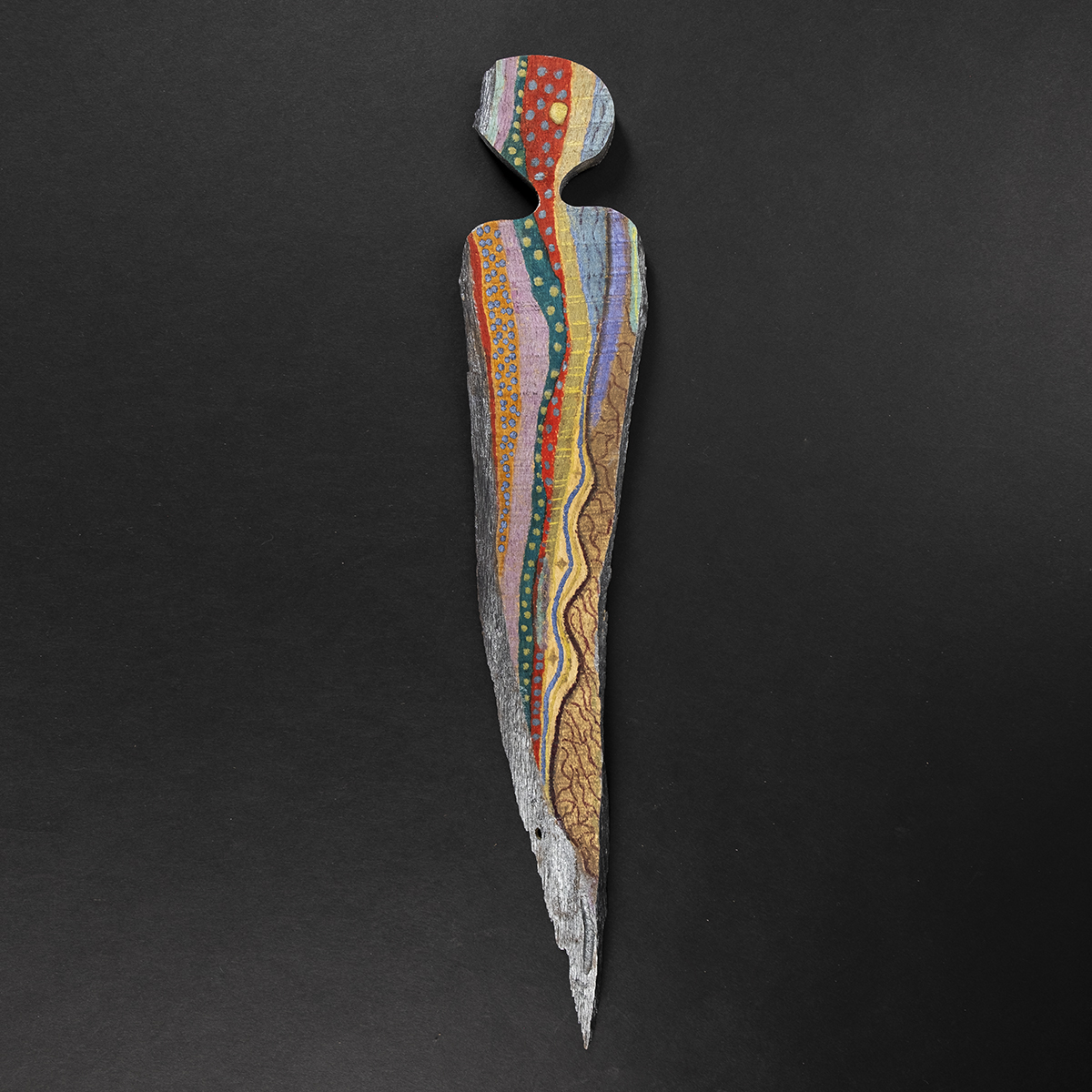 Star Spirit Wishing for a Peaceful EveningWood, Pigments
Star Spirit Wishing for a Peaceful EveningWood, Pigments- 20.25"h
- 4"w
- 1"d
SOLD -
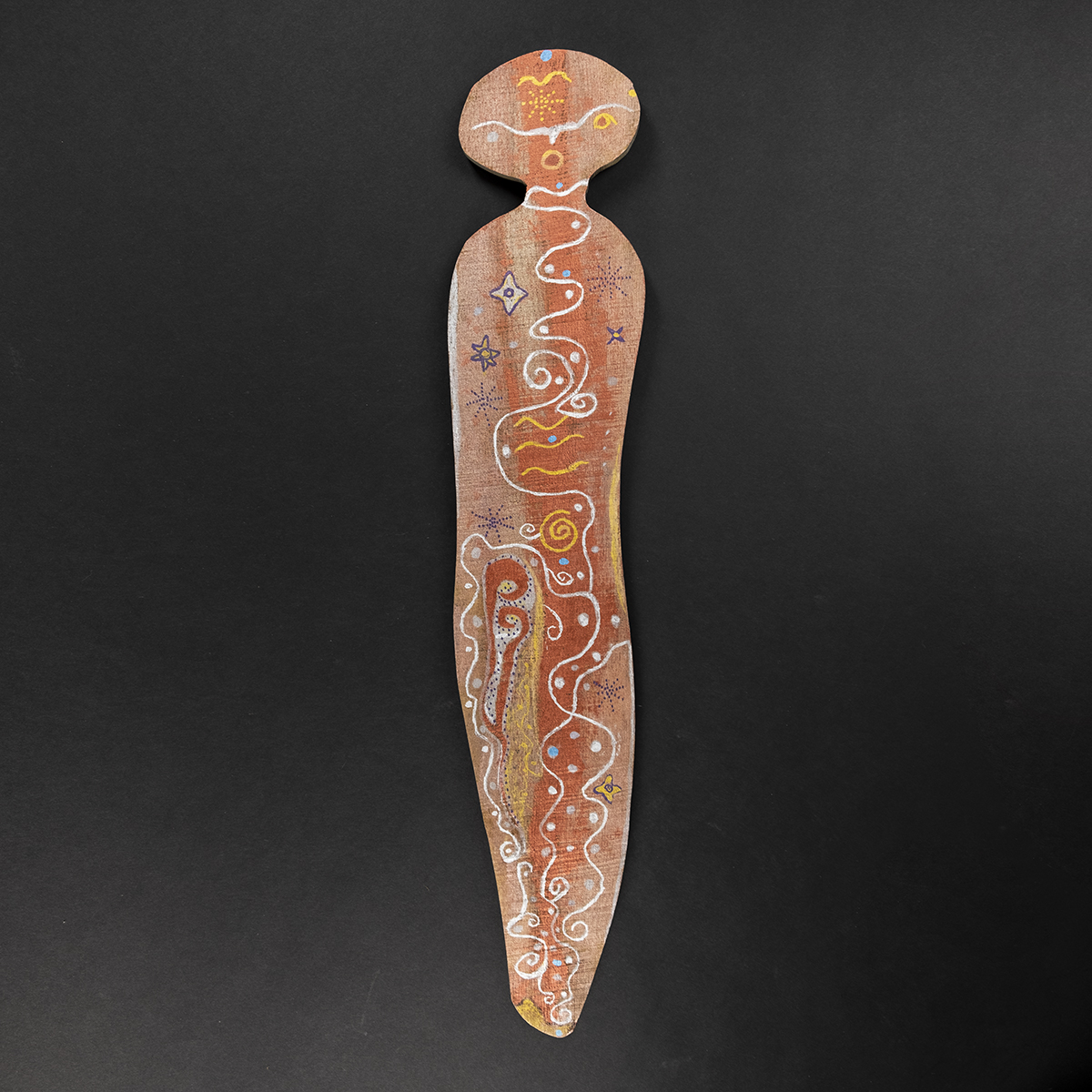 Star Spirit Ready for the GalaWood, Pigments
Star Spirit Ready for the GalaWood, Pigments- 25"h
- 4.5"w
- .25"d
SOLD -
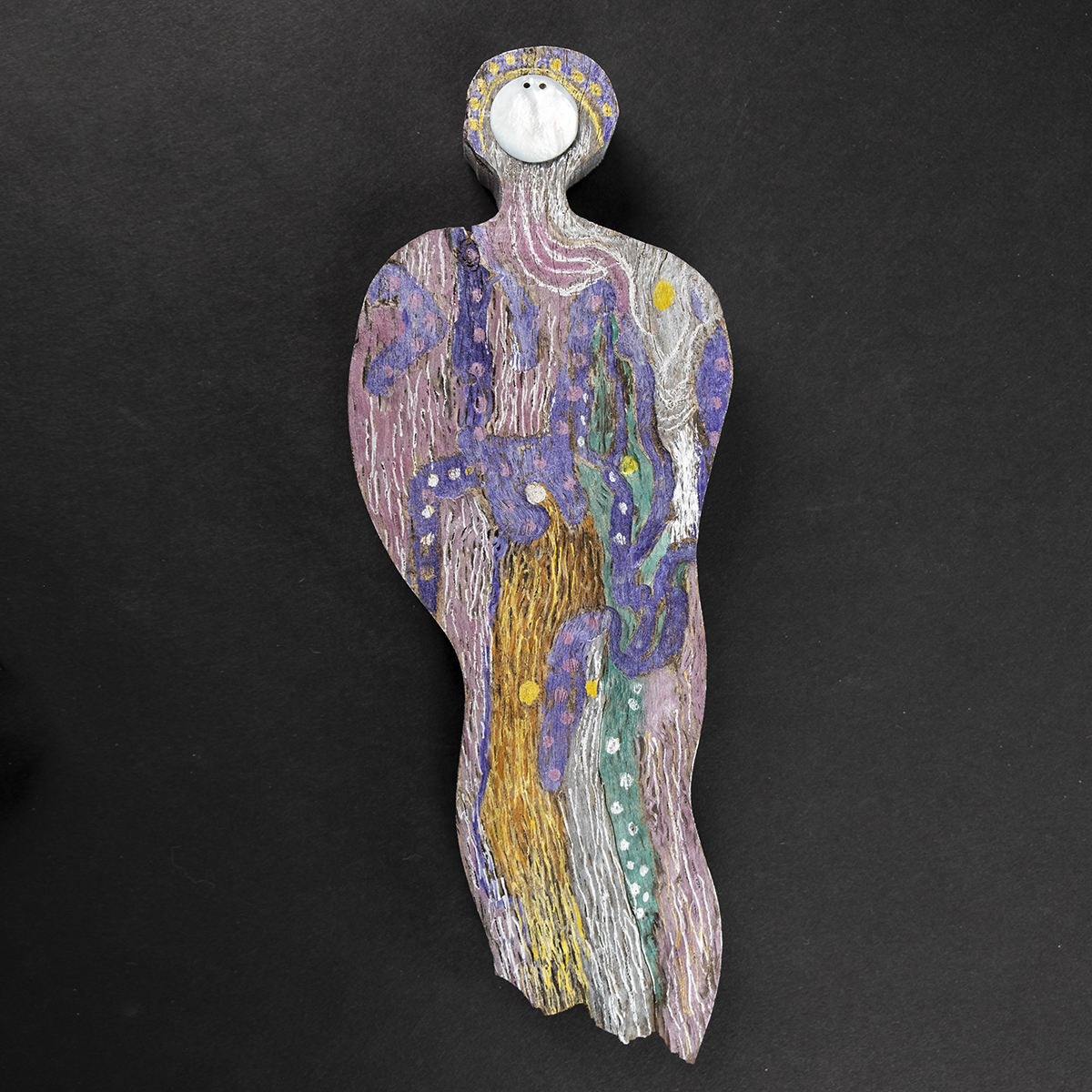 Star Spirit Feeling the FlowWood, Pigments, Mother of Pearl Button
Star Spirit Feeling the FlowWood, Pigments, Mother of Pearl Button- 9"h
- 3.5"w
- 1"d
SOLD -
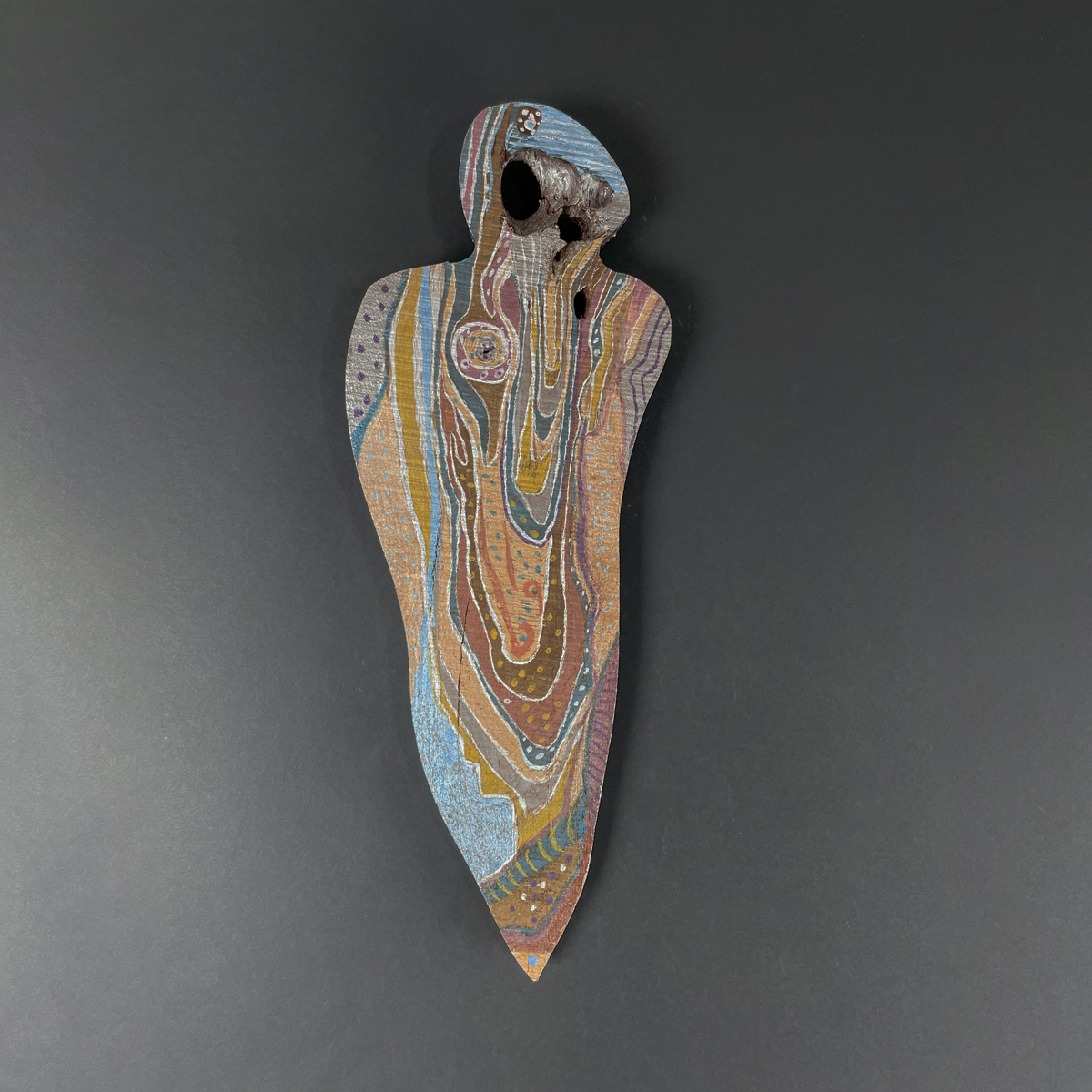 Star Spirit Finding the Dry LakesWood Sculpture, Pigments
Star Spirit Finding the Dry LakesWood Sculpture, Pigments- 22"h
- 8"w
- 1"d
SOLD -
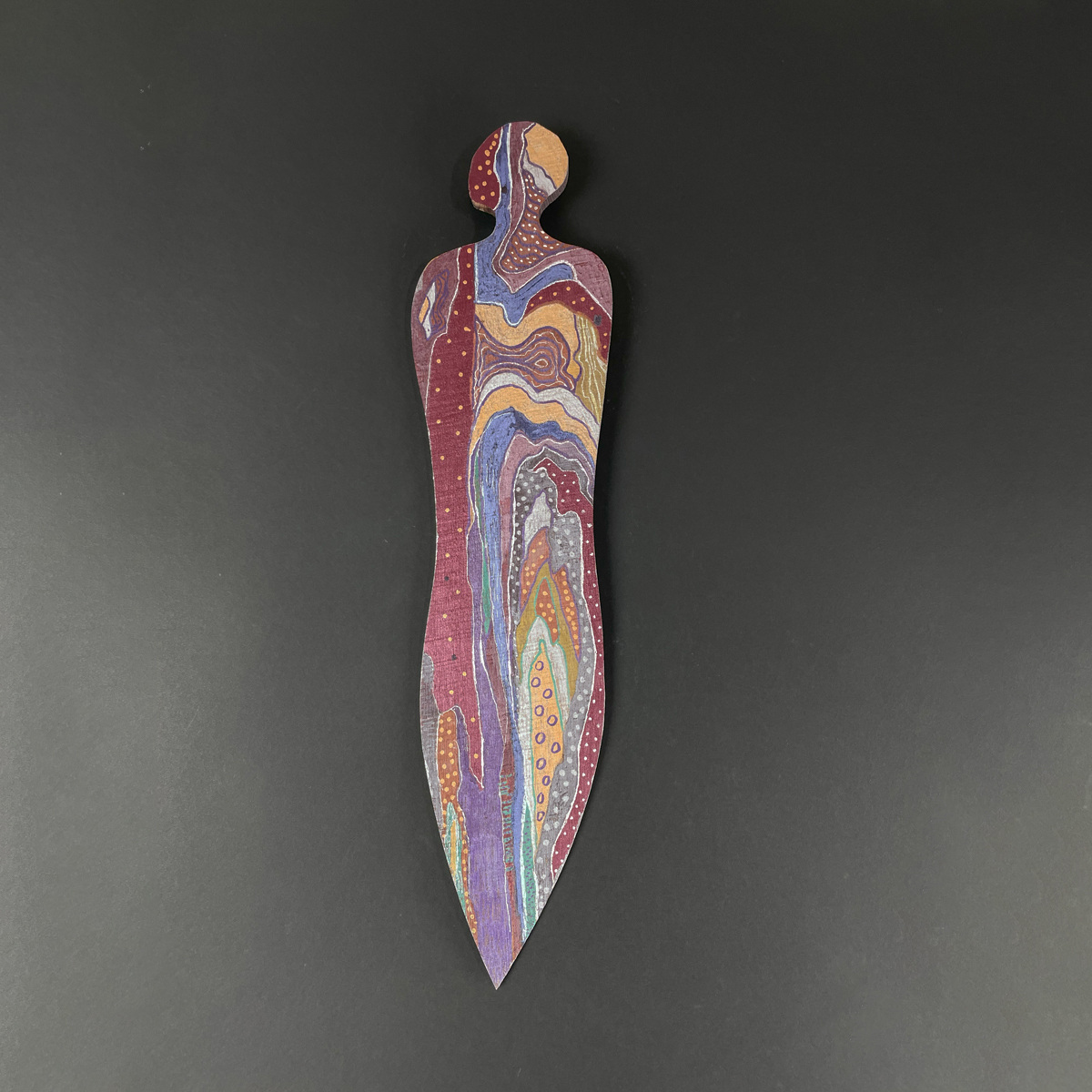 Many Stars Beyond the HorizonWood Sculpture, Pigments
Many Stars Beyond the HorizonWood Sculpture, Pigments- 22.5"h
- 5.5"w
- .5"d
SOLD -
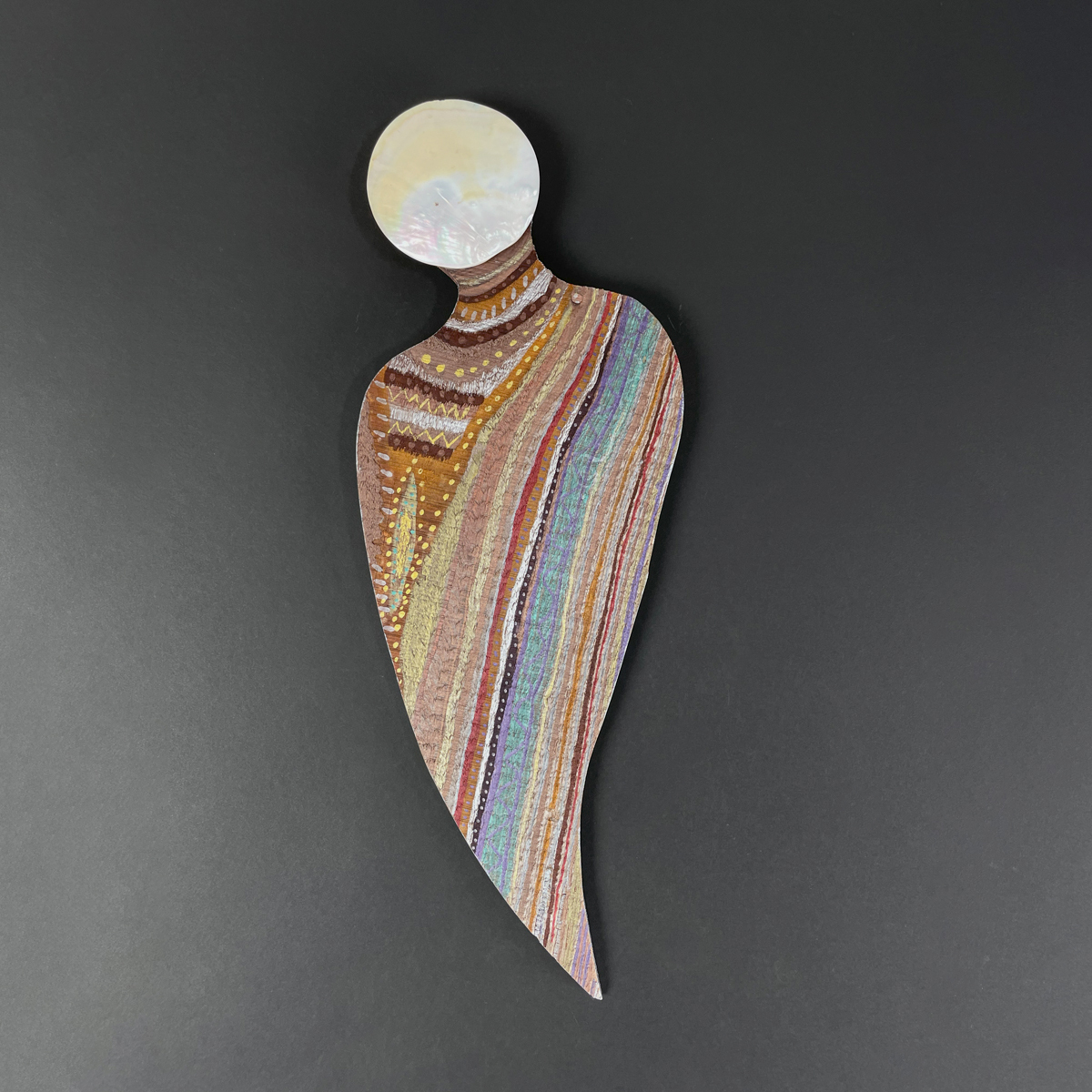 Star Spirit, Mother of the PearlWood, Pigments, Mother-of-pearl
Star Spirit, Mother of the PearlWood, Pigments, Mother-of-pearl- 17.5"h
- 7.5"w
- .5"d
SOLD -
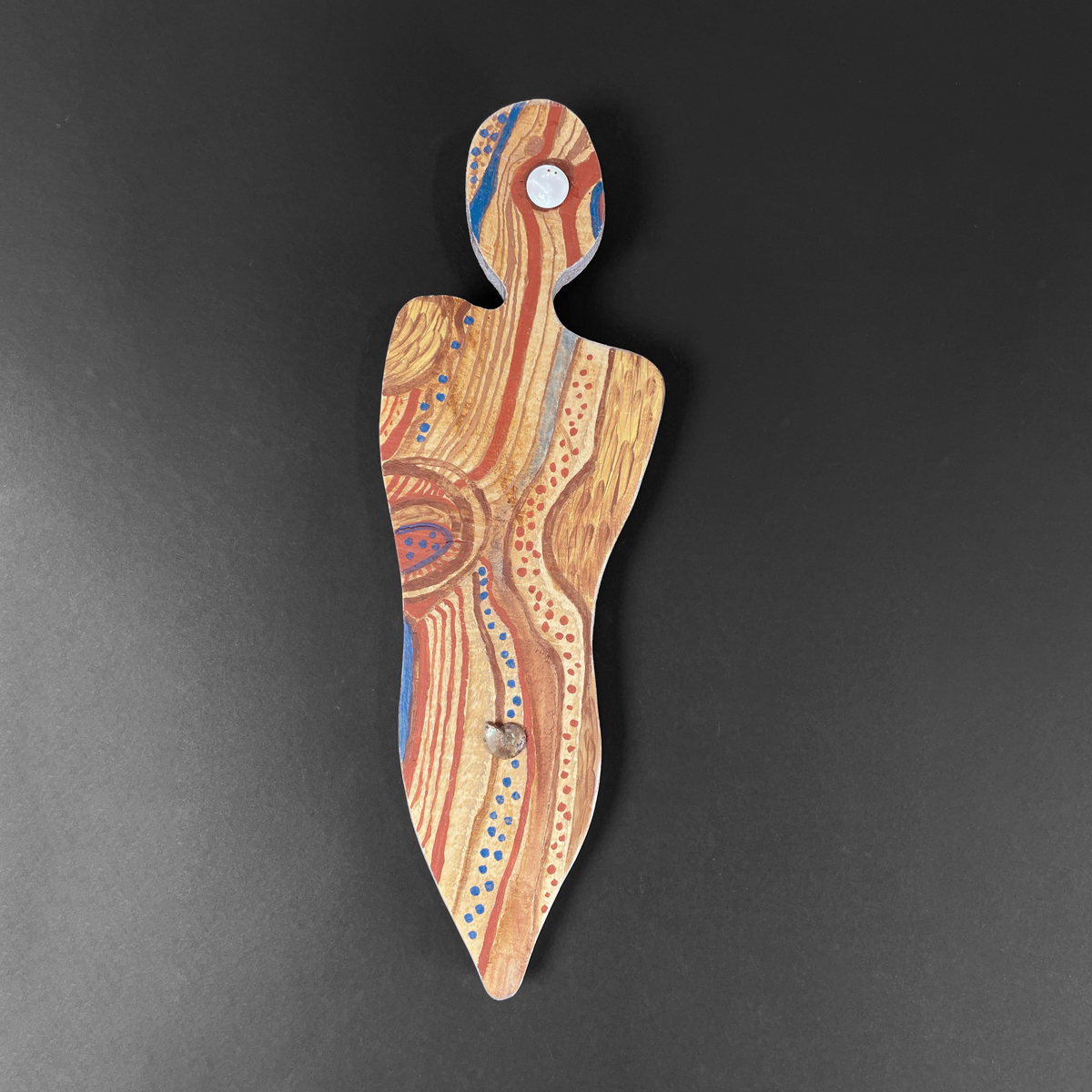 Star Spirit Happy With His New DesignsWood, Pigments, Shell, Copper
Star Spirit Happy With His New DesignsWood, Pigments, Shell, Copper- 19"h
- 6"w
- 1"d
SOLD -
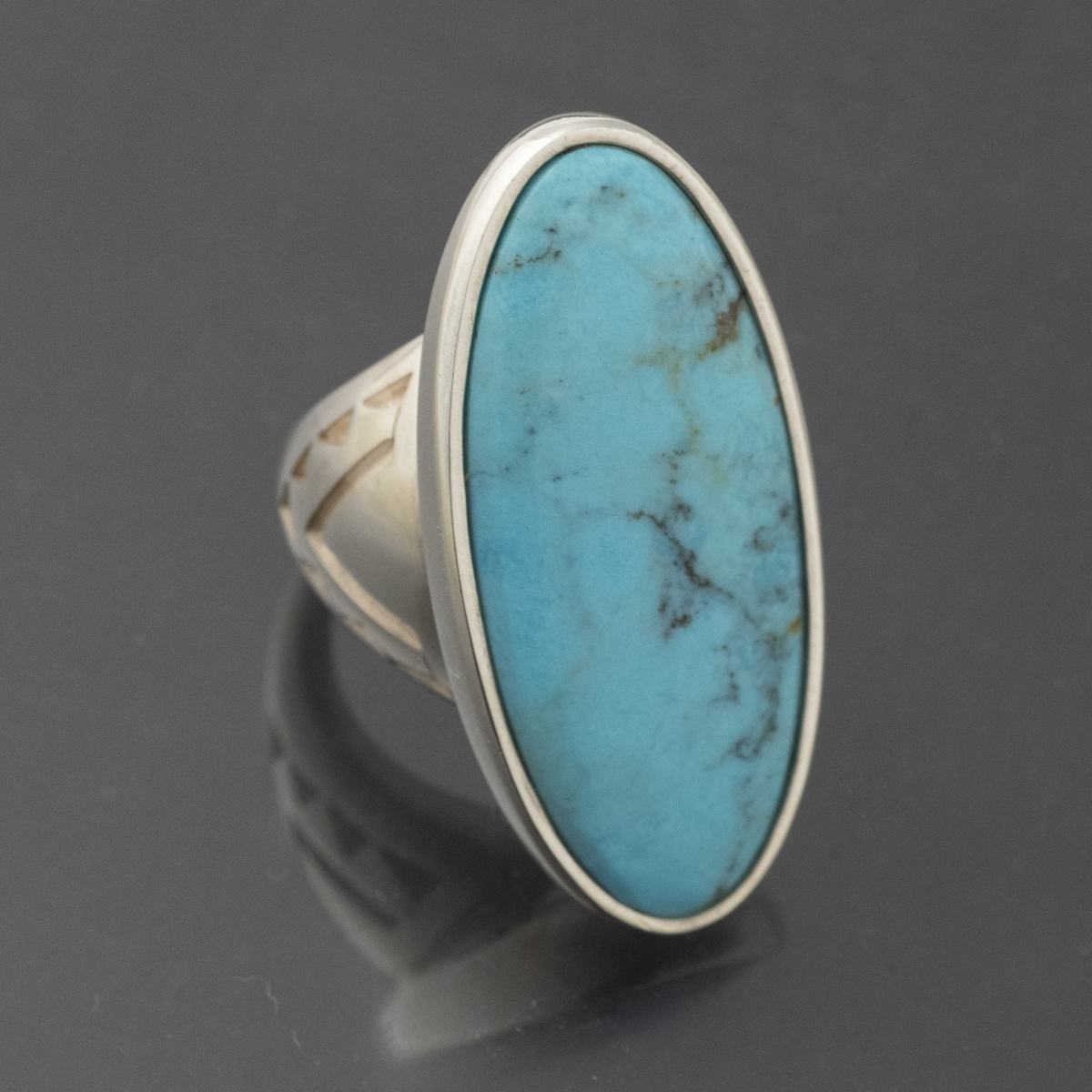 Turquoise RingSterling Silver, Turquoise
Turquoise RingSterling Silver, Turquoise- 1.68"h
- 1"w
SOLD -
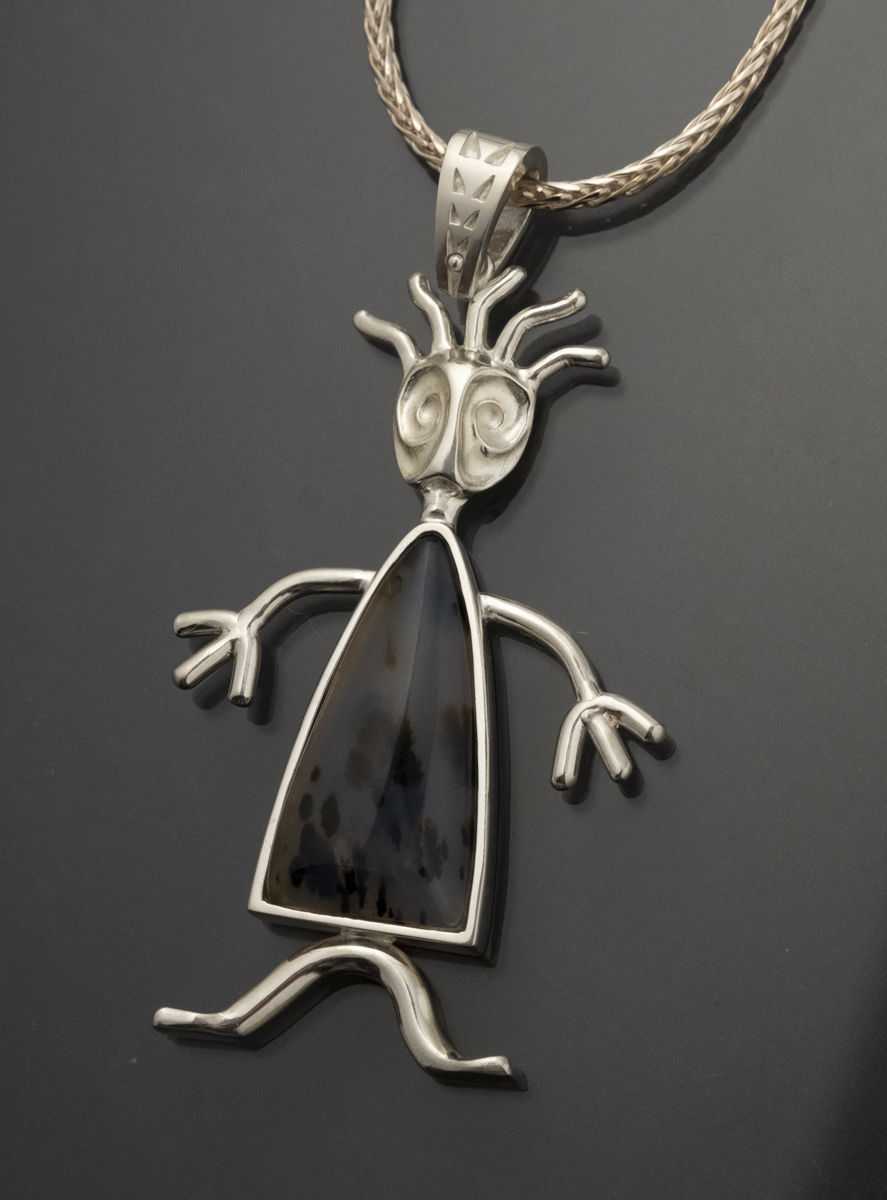 Star Lady with Jasper PendantSterling Silver, Jasper
Star Lady with Jasper PendantSterling Silver, Jasper- 3"h
- 2.5"w
SOLD -
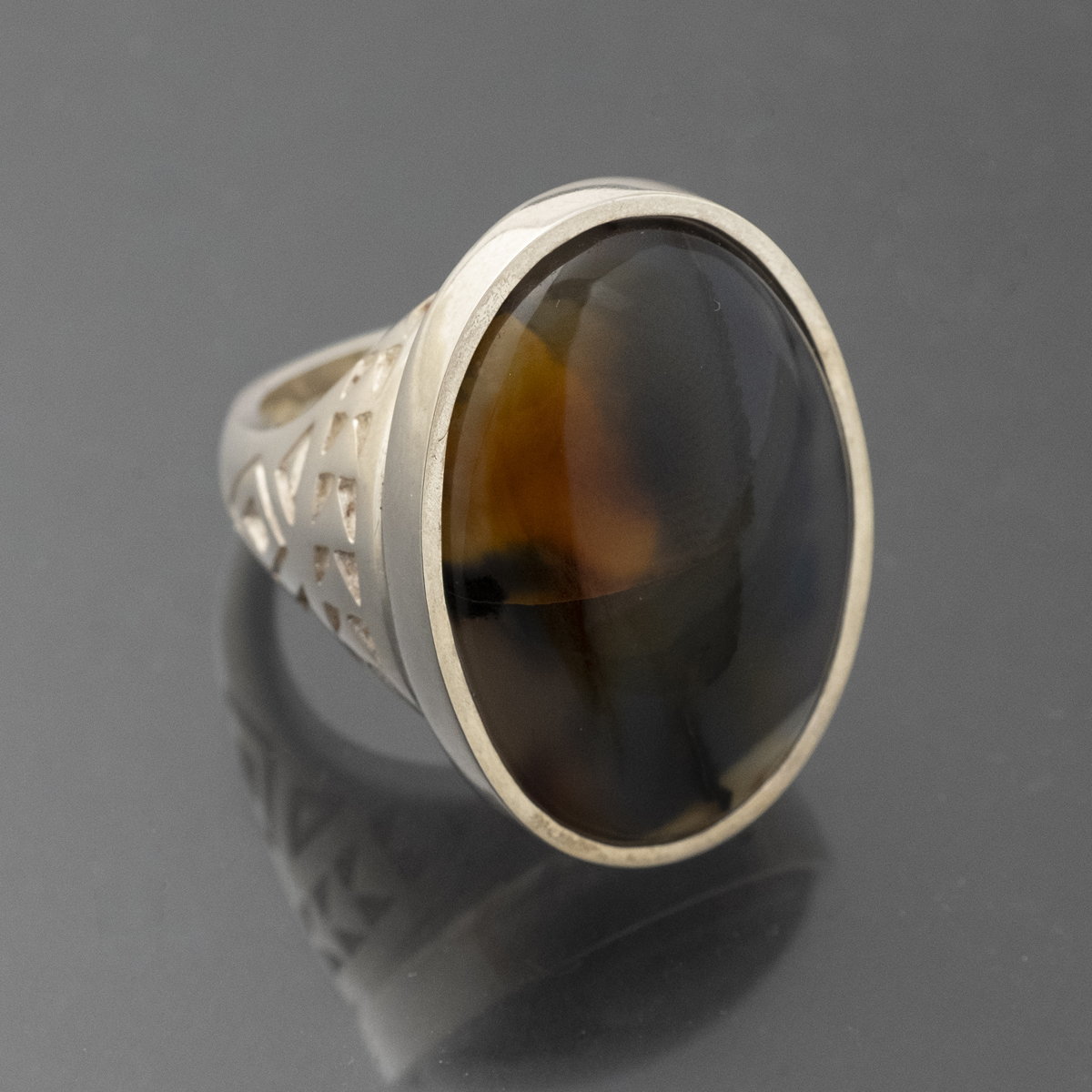 Montana Agate RingAgate, Sterling Silver
Montana Agate RingAgate, Sterling Silver- 1.38"h
- 1"w
SOLD -
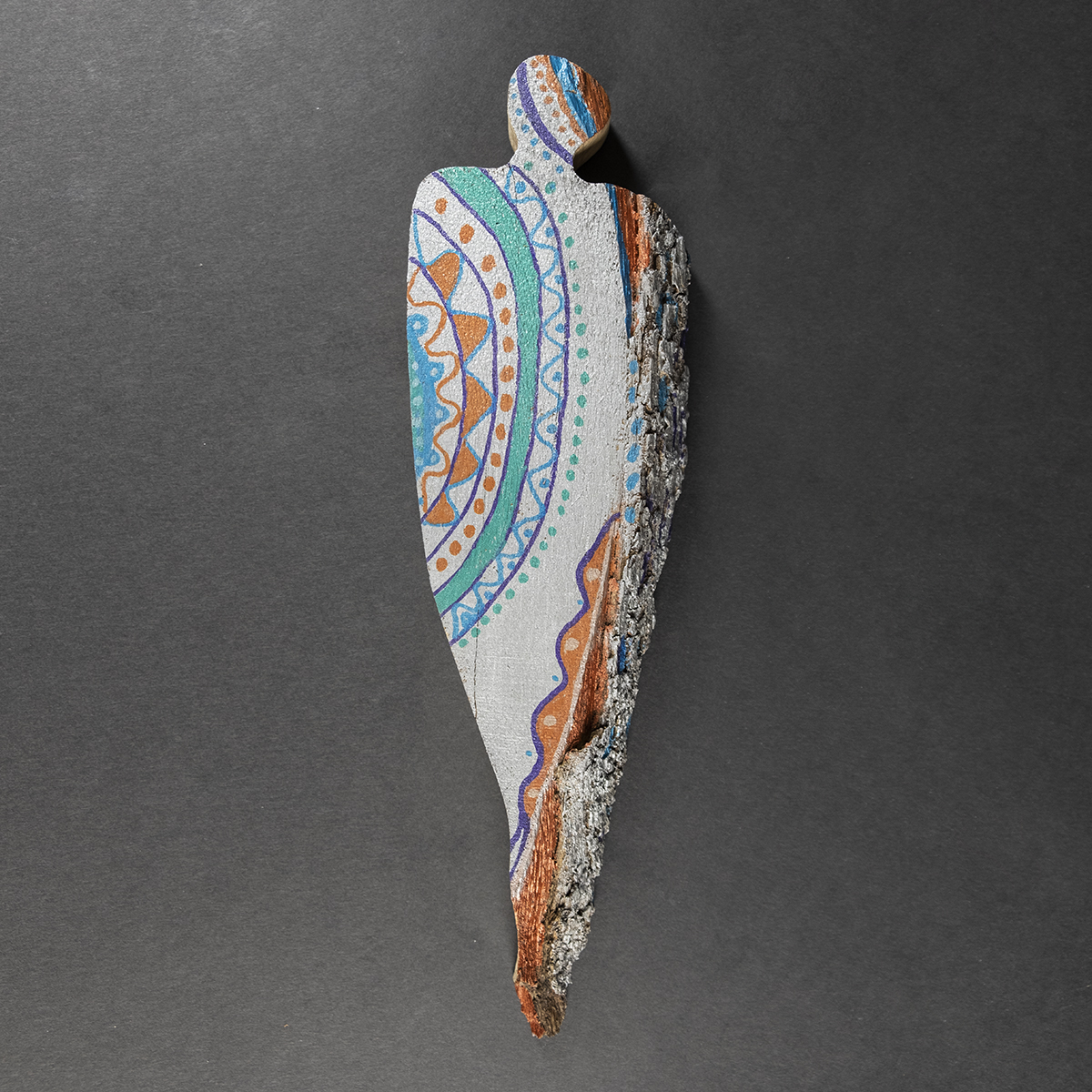 Star Person Finding BeautyWood, Paint
Star Person Finding BeautyWood, Paint- 15.38"h
- 4.5"w
- 1.5"d
SOLD -
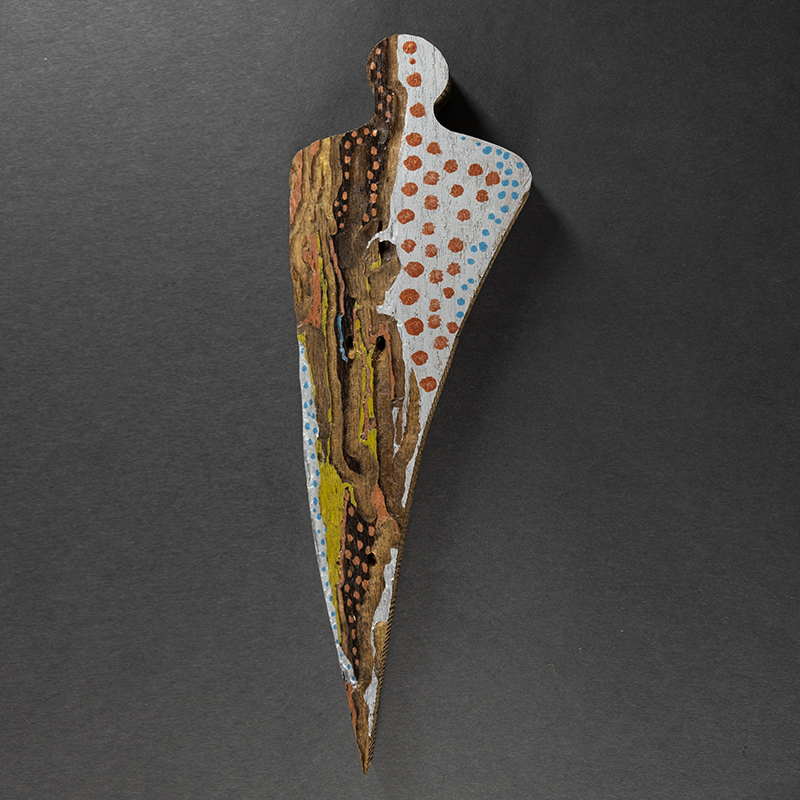 Star Spirit Finding BalanceWood, Paint
Star Spirit Finding BalanceWood, Paint- 18"h
- 5"w
- 1"d
SOLD -
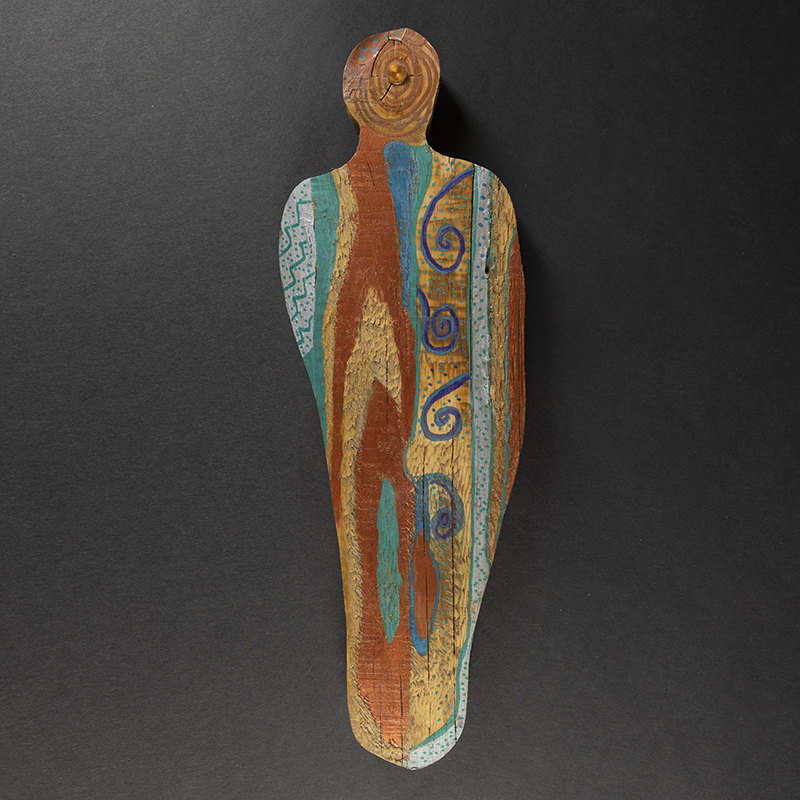 Star Person With Her Gala OutfitWood, Buttons, Paint
Star Person With Her Gala OutfitWood, Buttons, Paint- 17"h
- 5.5"w
- 1"d
SOLD -
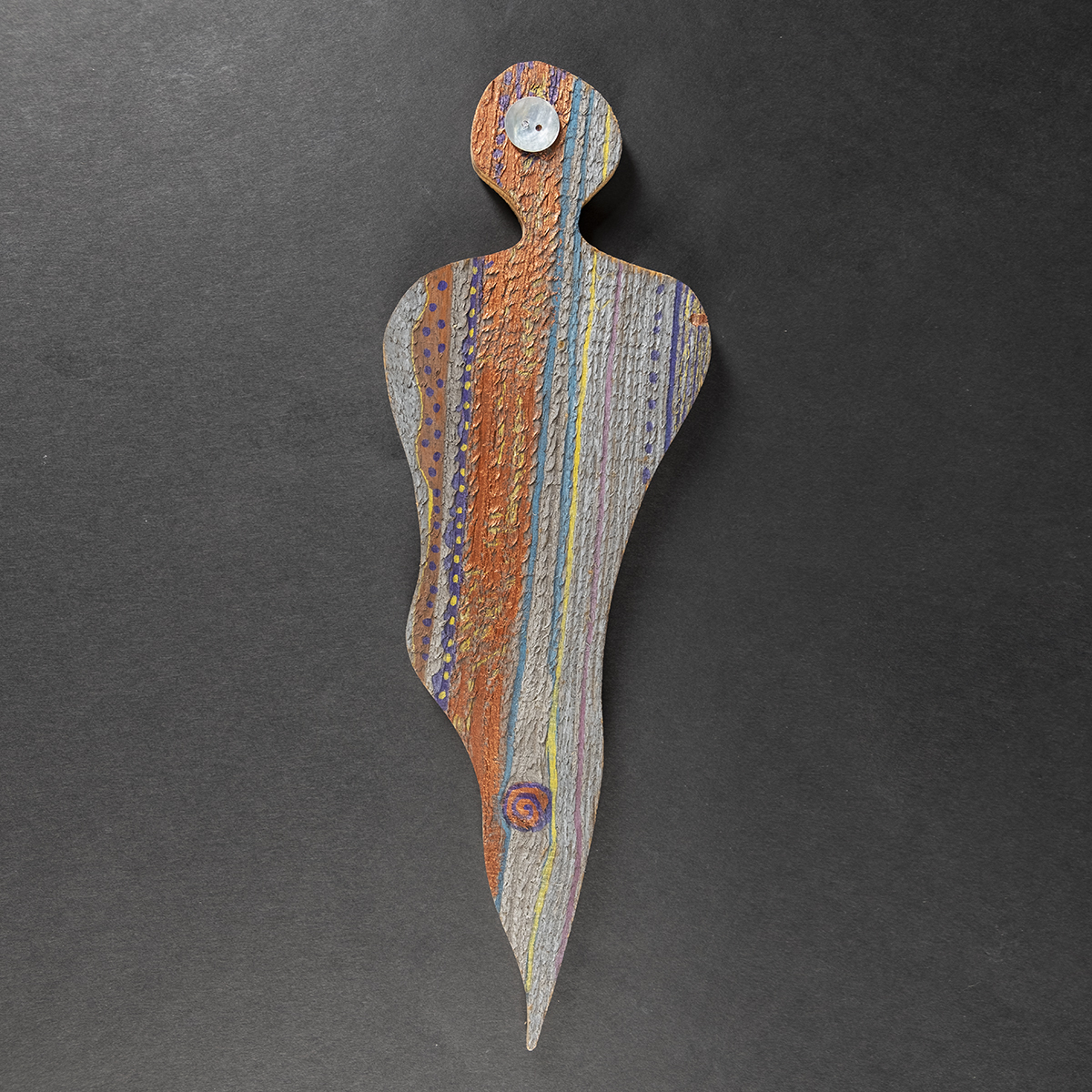 Star Person Loving Her New FormWood, Paint, Abalone Shell Button
Star Person Loving Her New FormWood, Paint, Abalone Shell Button- 14.5"h
- 5"w
- .5"d
SOLD -
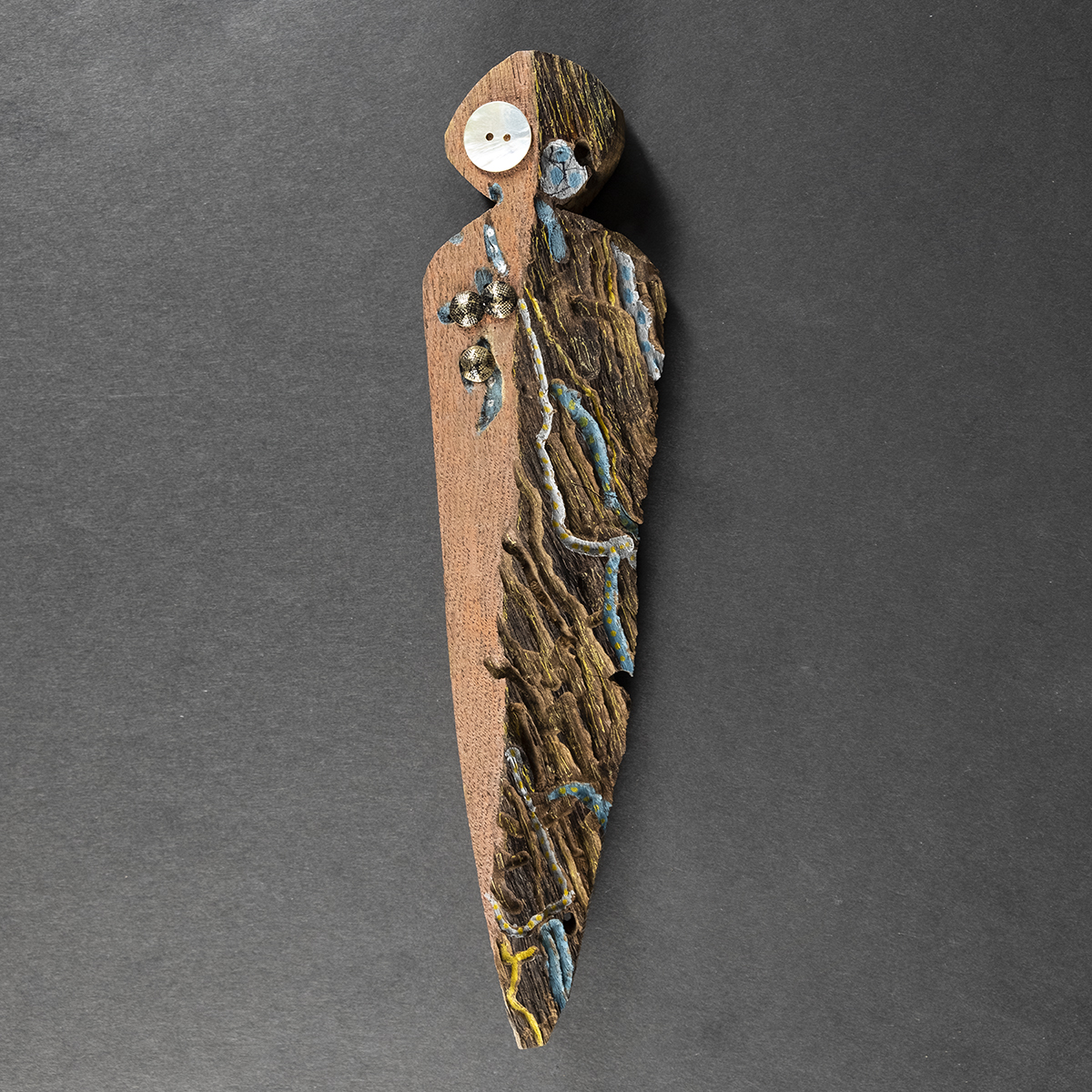 Star Person Absorbing the Lightning StormWood, Abalone Shell, Metal
Star Person Absorbing the Lightning StormWood, Abalone Shell, Metal- 11.5"h
- 2..75"w
- 1.25"d
SOLD -
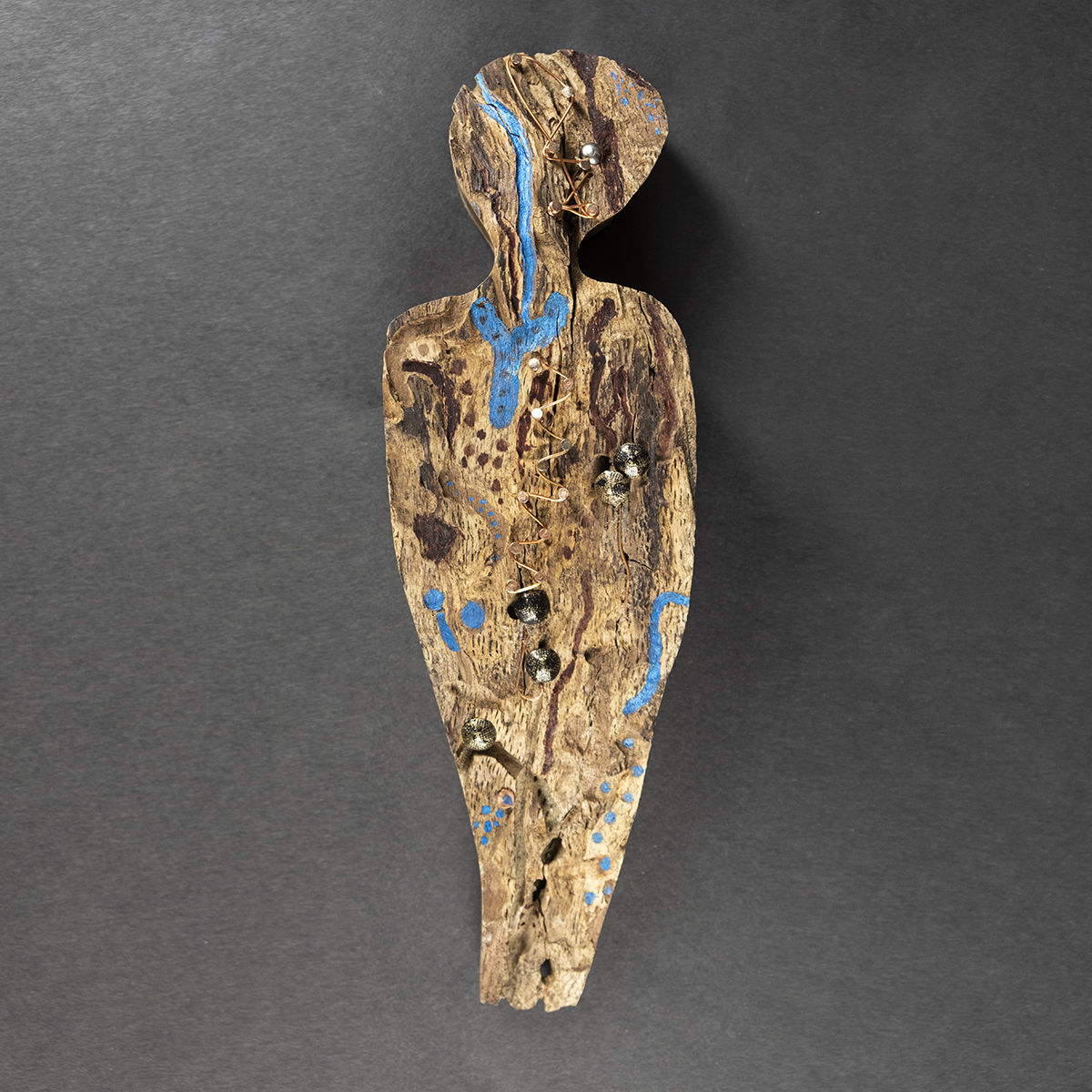 Star Spirit Mending His FlawsWood, Paint, Copper, Metal
Star Spirit Mending His FlawsWood, Paint, Copper, Metal- 12"h
- 2.5"w
- 3.5"d
SOLD -
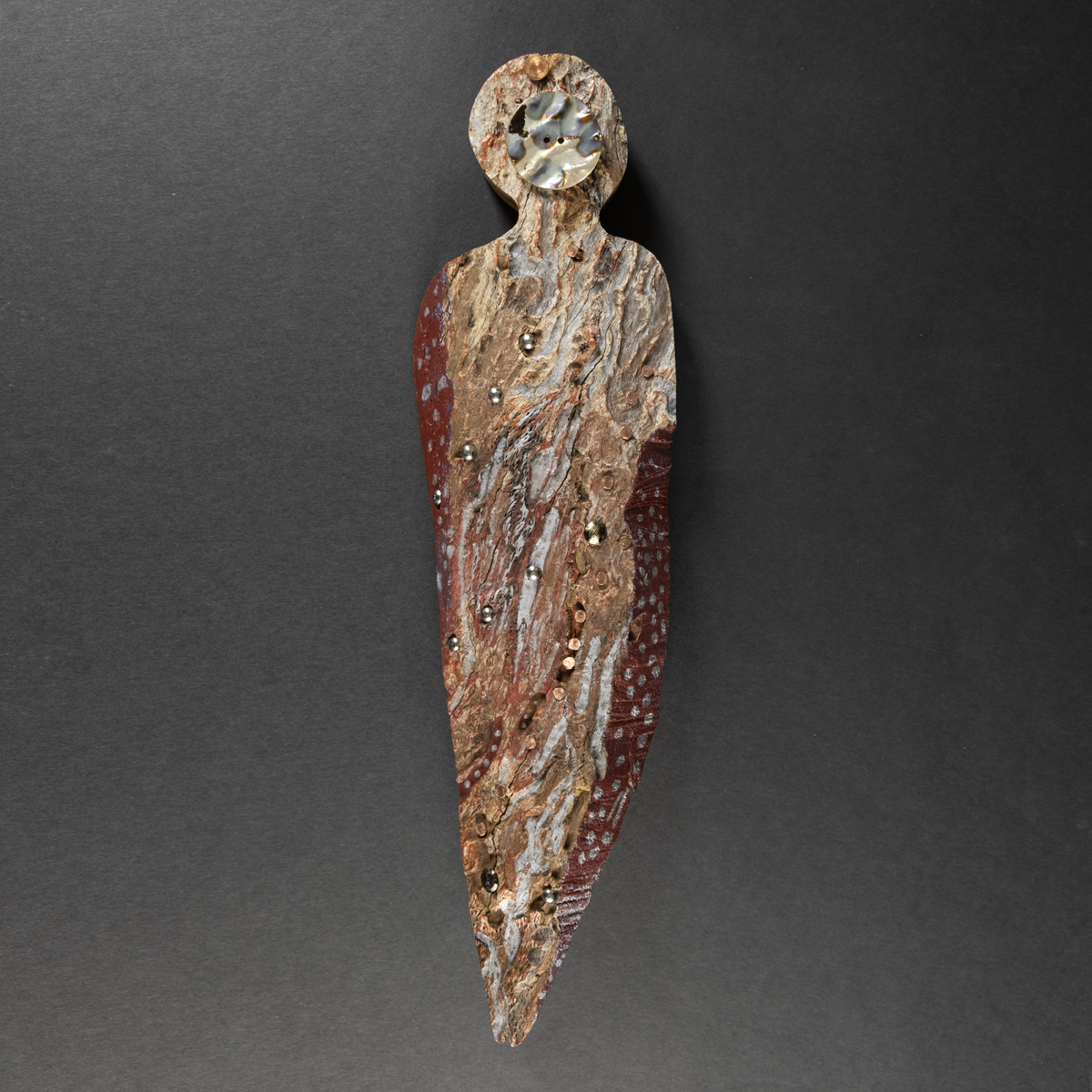 Star Person Adjusting Her OutlookWood, Abalone, Metal, Copper, Paint
Star Person Adjusting Her OutlookWood, Abalone, Metal, Copper, Paint- 18"h
- 5"w
- 2"d
SOLD -
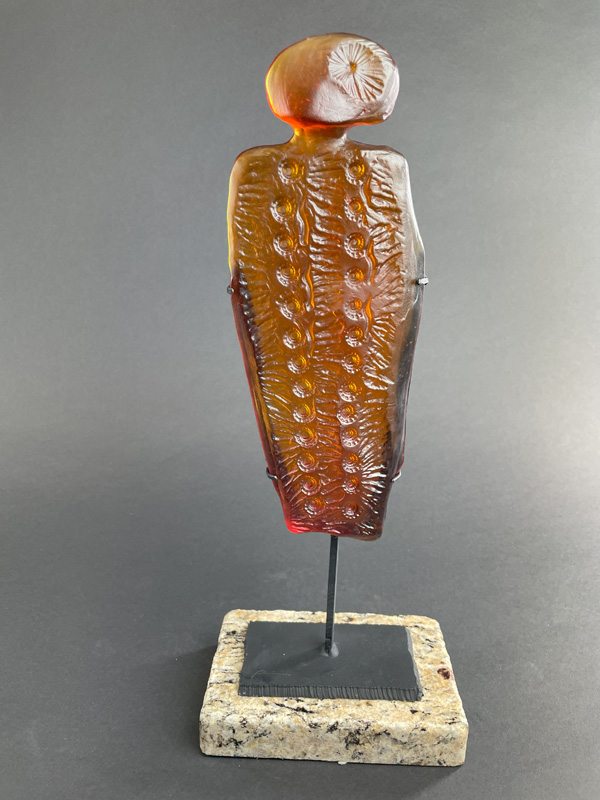 Star Person Enjoying the Rain DropsCast Orange Crystal, Steel and Granite Base
Star Person Enjoying the Rain DropsCast Orange Crystal, Steel and Granite Base- 19"h
- 6"w
- 4"d
SOLD -
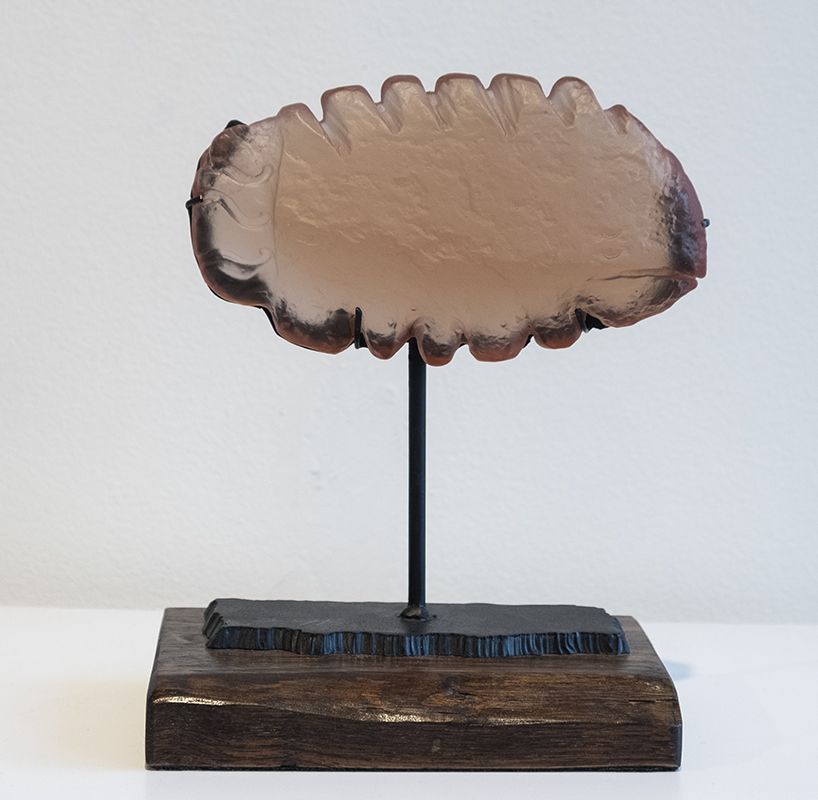 Ancestor’s Fish Net WeightRhubarb Glass Crystal, Steel, Wood Base
Ancestor’s Fish Net WeightRhubarb Glass Crystal, Steel, Wood Base- 8"h
- 6.25"w
- 4"d
SOLD -
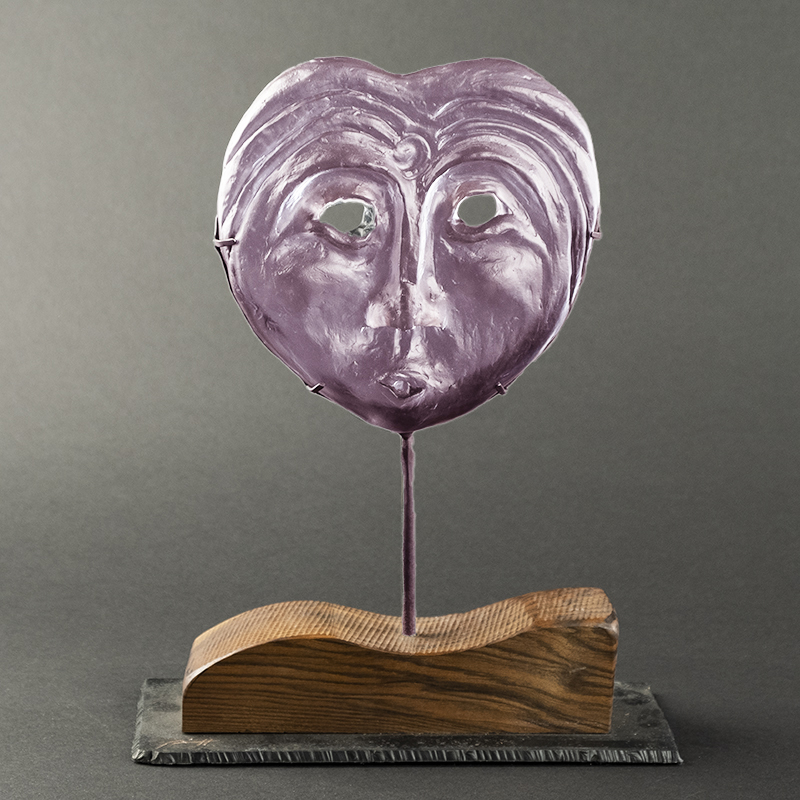 She Stands Tall (Pahtu the Ancient One)Cast Glass, Wood Base, Steel
She Stands Tall (Pahtu the Ancient One)Cast Glass, Wood Base, Steel- 12"h
- 9.5"w
- 4"d
SOLD -
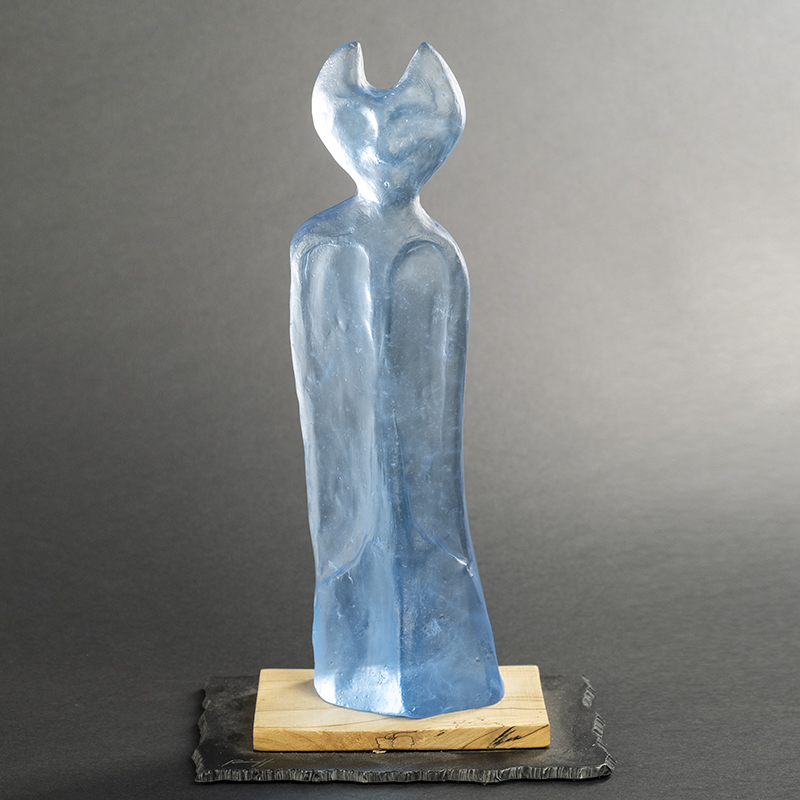 Shadow Spirit Thinking of Changing Her ImageCast Light Blue Crystal, Wood, Steel
Shadow Spirit Thinking of Changing Her ImageCast Light Blue Crystal, Wood, Steel- 13.75"h
- 8"w
- 5.5"d
SOLD -
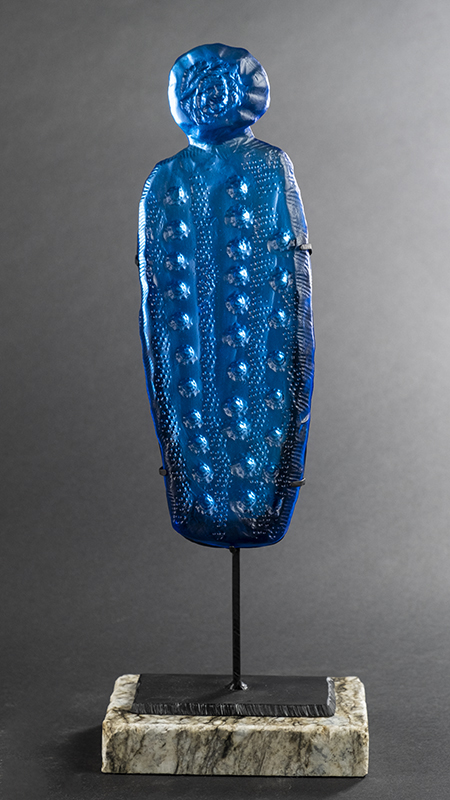 Many RowsCast New Zealand Lead Crystal, Steel, Granite Base
Many RowsCast New Zealand Lead Crystal, Steel, Granite Base- 18.5"h
- 6"w
- 4"d
SOLD -
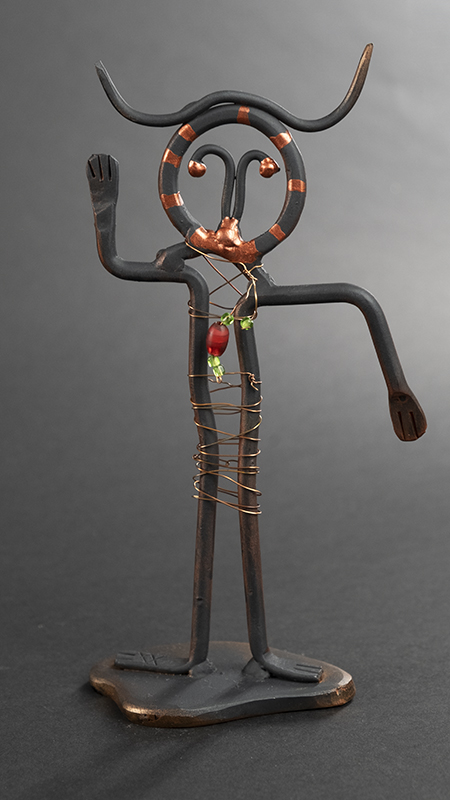 Medicine Woman for the Star SpiritsSteel, Beads, Copper Wire
Medicine Woman for the Star SpiritsSteel, Beads, Copper Wire- 8.5"h
- 5"w
- 2.75"d
SOLD -
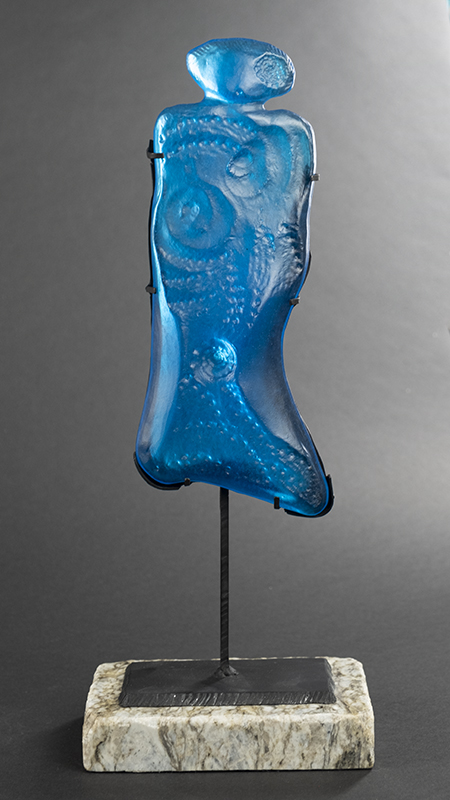 Beginning the JourneyCast Glass, Granite Base, Steel Frame
Beginning the JourneyCast Glass, Granite Base, Steel Frame- 15.75"h
- 6.25"w
- 4.25"d
SOLD -
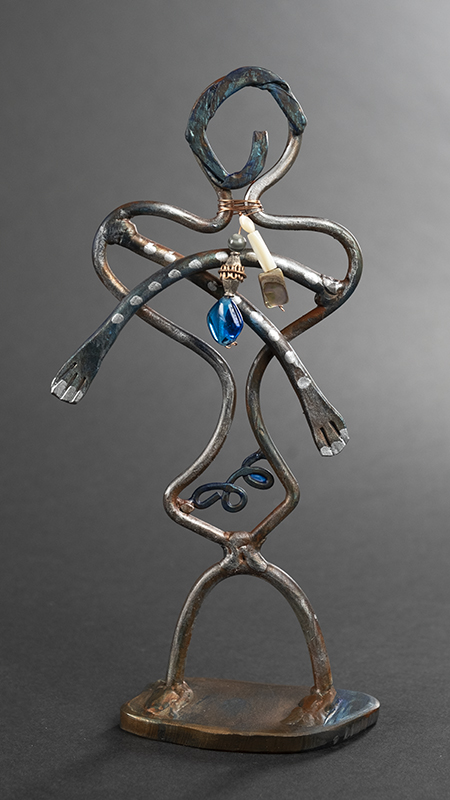 Fiddle Faddle, I Wanted That…Steel, Beads
Fiddle Faddle, I Wanted That…Steel, Beads- 9"h
- 4.5"w
- 2"d
SOLD -
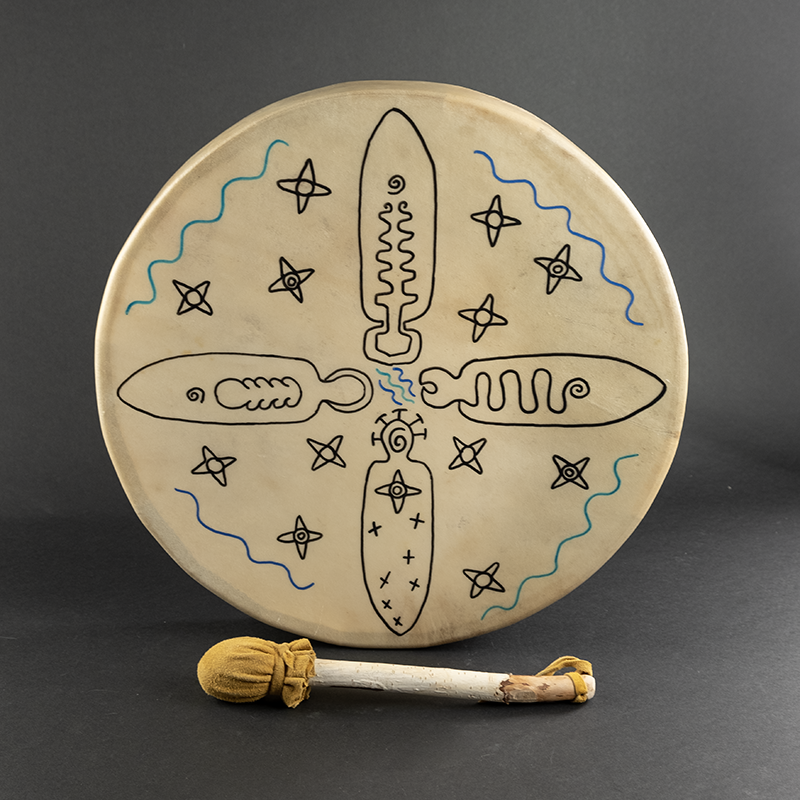 Star People Honoring WaterHide, Birch Bark Beater, Copper Hooks, Acrylic, Tobacco as Blessing
Star People Honoring WaterHide, Birch Bark Beater, Copper Hooks, Acrylic, Tobacco as Blessing- 18"h
- 18"w
- 3"d
SOLD -
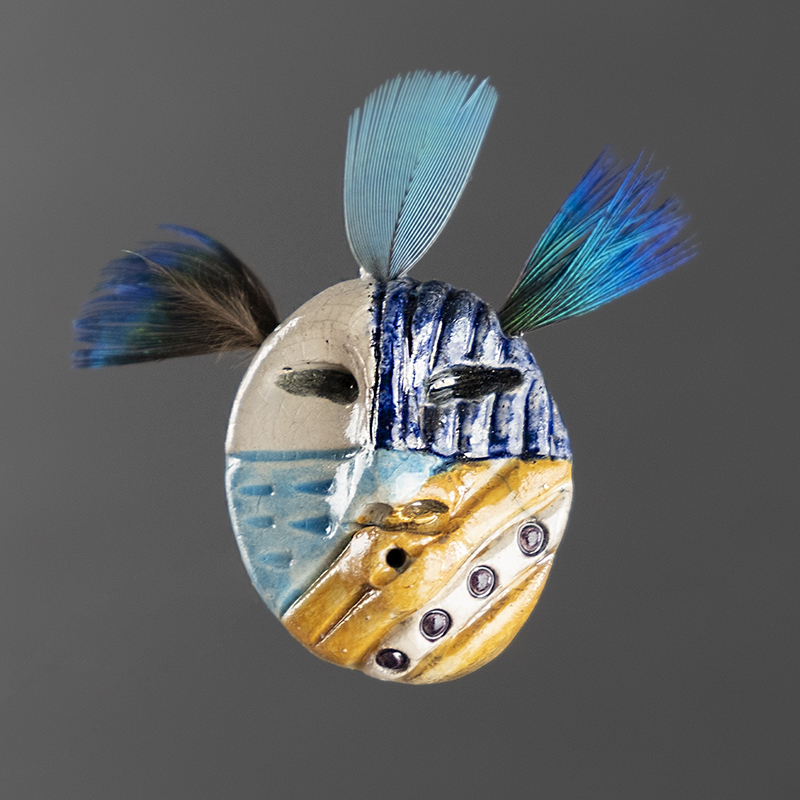 Stick Indian PinCeramic Raku, Store Bought FeathersSOLD
Stick Indian PinCeramic Raku, Store Bought FeathersSOLD -
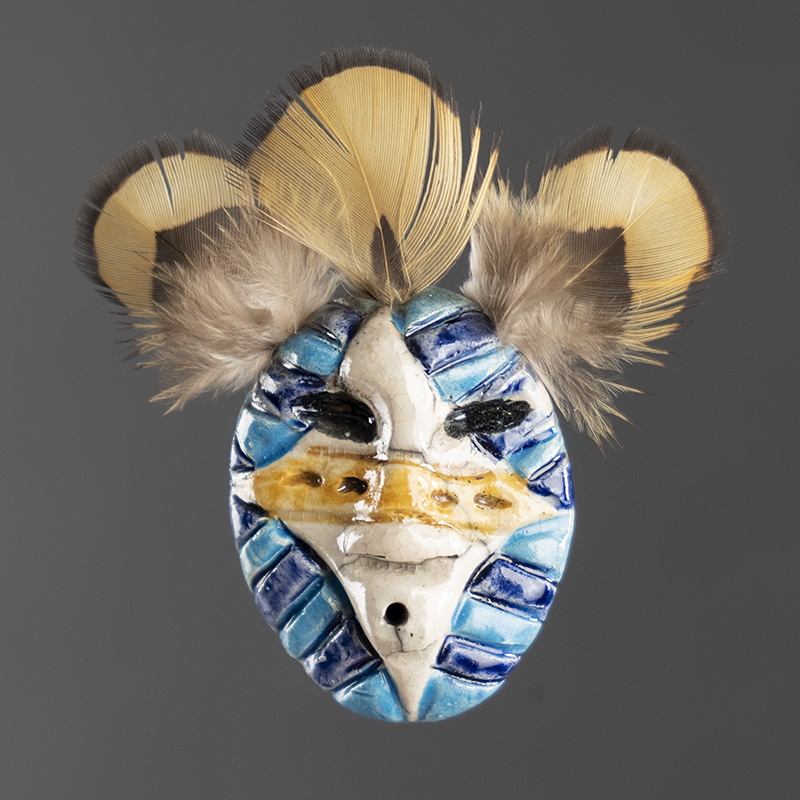 Stick Indian PinCeramic Raku, Store Bought FeathersSOLD
Stick Indian PinCeramic Raku, Store Bought FeathersSOLD -
 Stick Indian PinRaku Fired Ceramic with Store-bought FeatherSOLD
Stick Indian PinRaku Fired Ceramic with Store-bought FeatherSOLD -
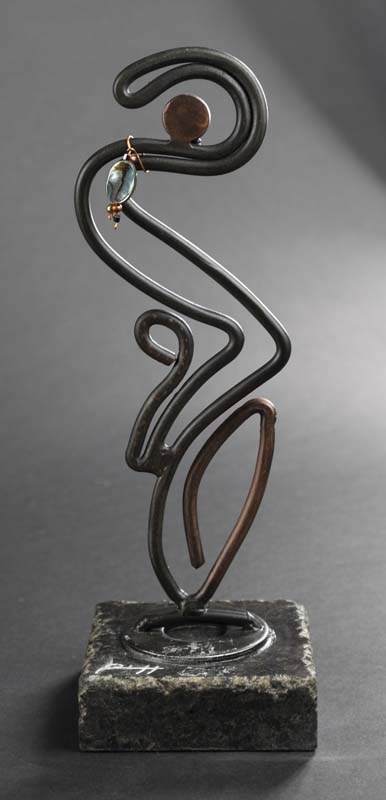 Star Person Truth SeekersSteel, Copper, Abalone, Beads, Granite
Star Person Truth SeekersSteel, Copper, Abalone, Beads, Granite- 11.25"h
- 6"w
- 3.75"d
SOLD -
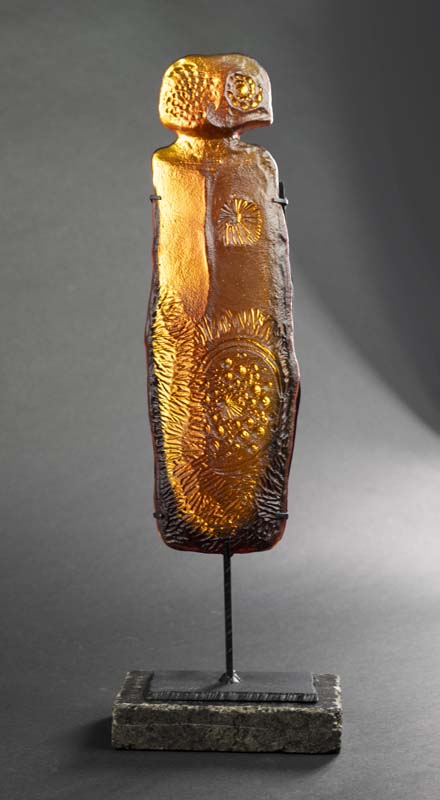 Star Person Bearing GiftsRed/Orange Crystal, Steel, Granite Base
Star Person Bearing GiftsRed/Orange Crystal, Steel, Granite Base- 19"h
- 6"w
- 4"d
SOLD -
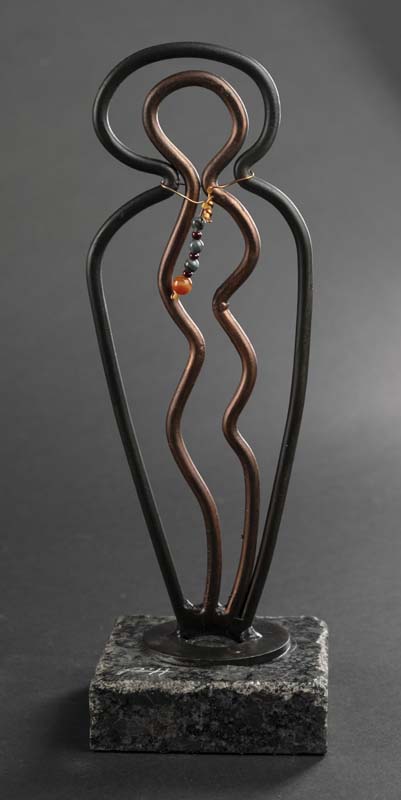 Star People WithinSteel, Copper, Beads, Granite Base
Star People WithinSteel, Copper, Beads, Granite Base- 11.25"h
- 3.75"w
- 3.75"d
SOLD -
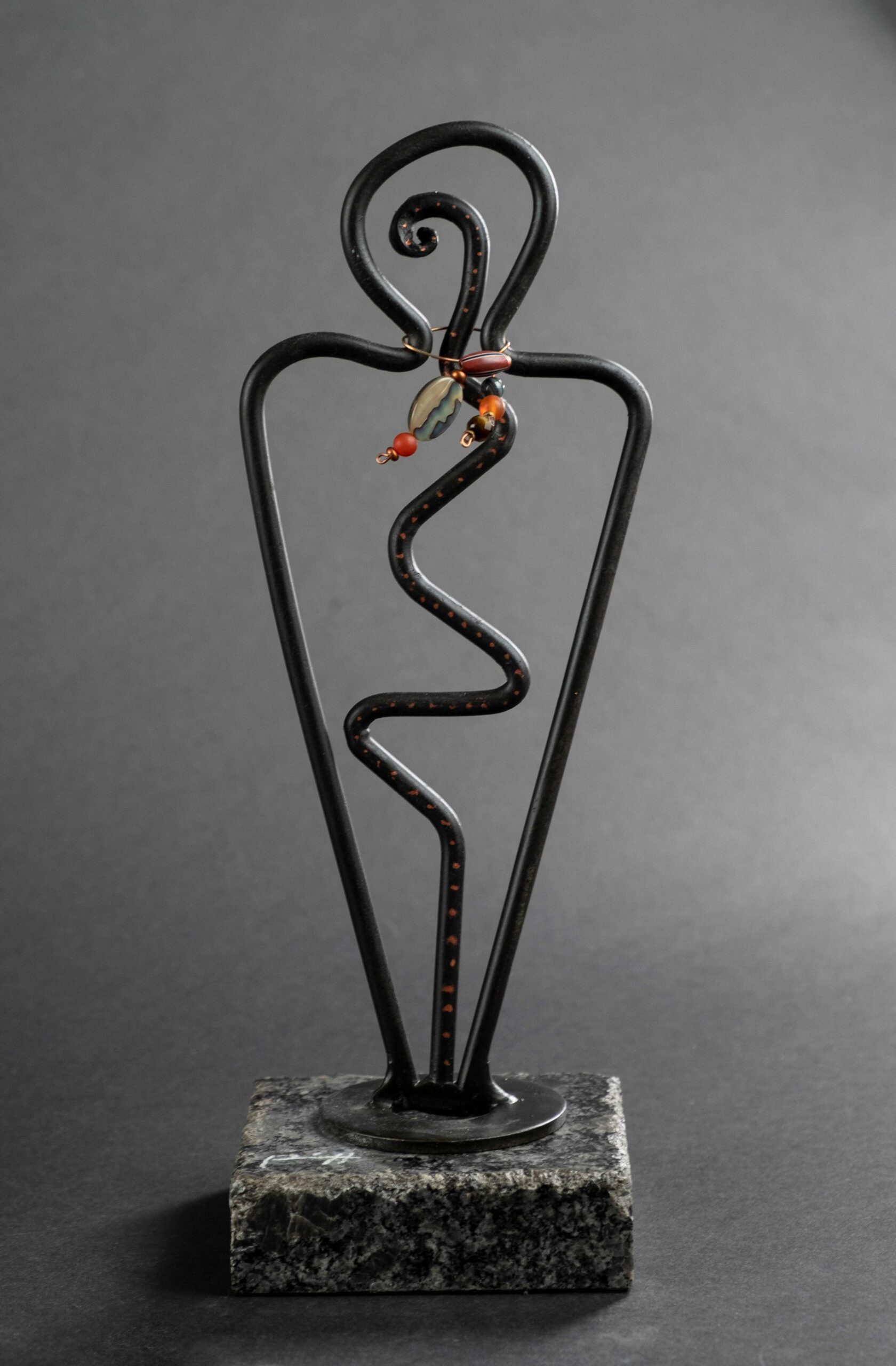 Star People PathfinderSteel, Copper, Abalone Shell, Glass Beads, Granite Base
Star People PathfinderSteel, Copper, Abalone Shell, Glass Beads, Granite Base- 11.25"h
- 3"w
- 3"d
SOLD -
 Star Child WithinSteel, Copper, Glass, Granite Base
Star Child WithinSteel, Copper, Glass, Granite Base- 11.5"h
- 3.75"w
- 3.75"d
SOLD -
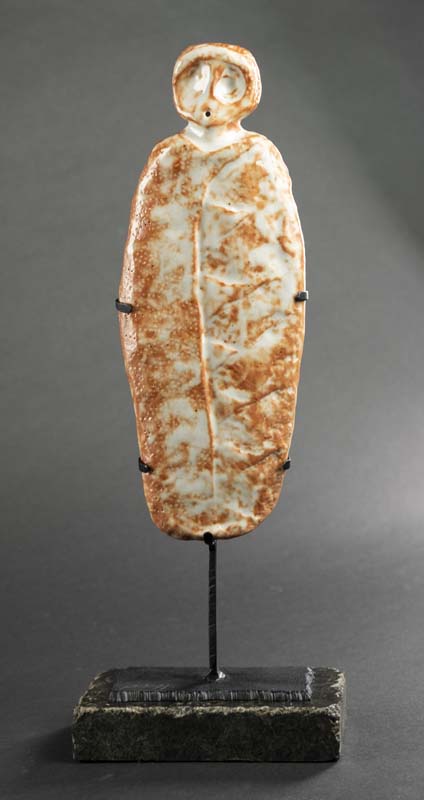 Star Person Wearing Her Star ShawlHigh Fired Clay with Shino Glaze, Granite Base
Star Person Wearing Her Star ShawlHigh Fired Clay with Shino Glaze, Granite Base- 16"h
- 6"w
- 4"d
SOLD -
 Star People Visiting the WatcherBlown Glass with Glass Cutouts
Star People Visiting the WatcherBlown Glass with Glass Cutouts- 9.75"h
- 8"w
- 6"d
SOLD -
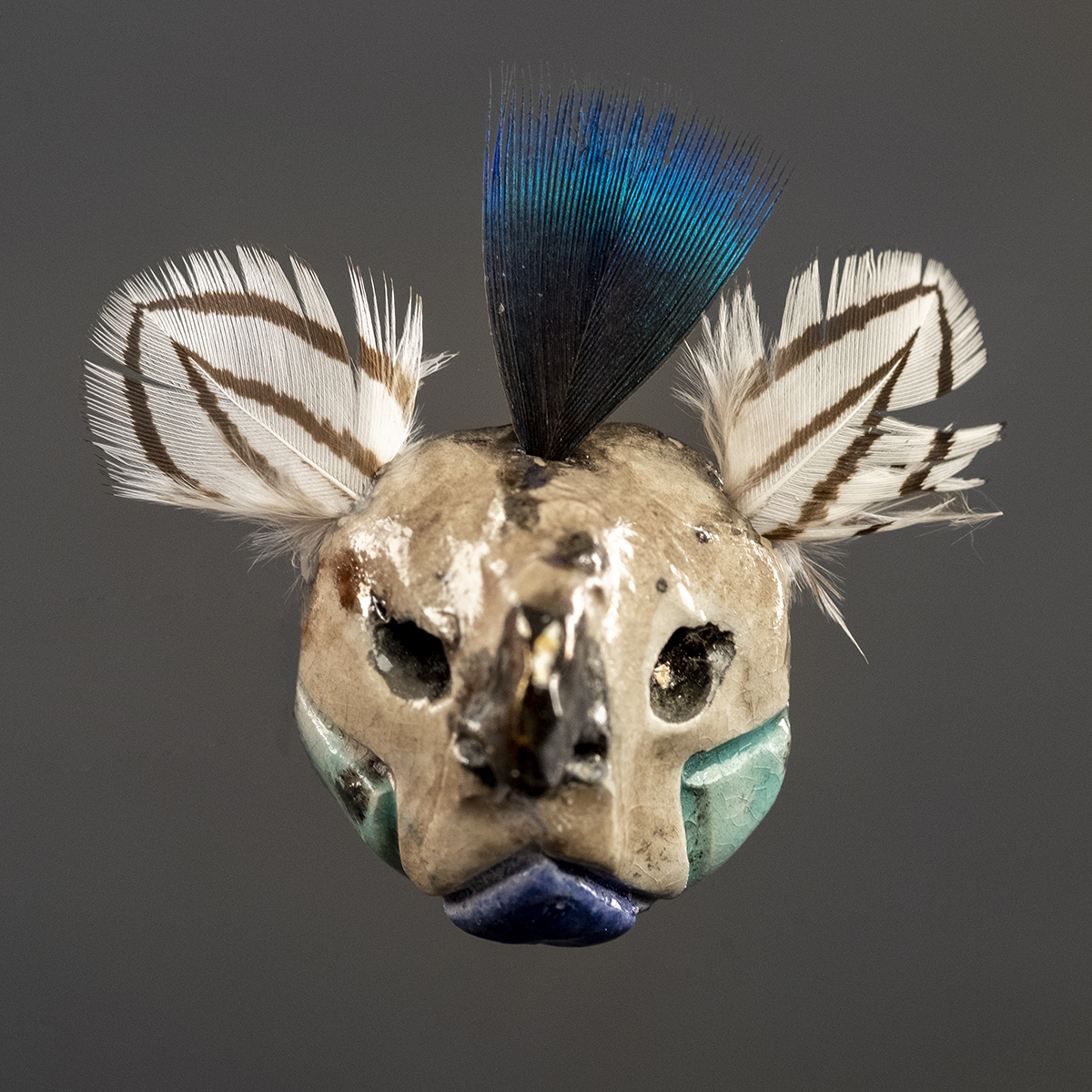 Mask Pin – HawkRaku Fired Ceramic w/ Feather
Mask Pin – HawkRaku Fired Ceramic w/ Feather- 2.13"h
- 1.88"w
SOLD -
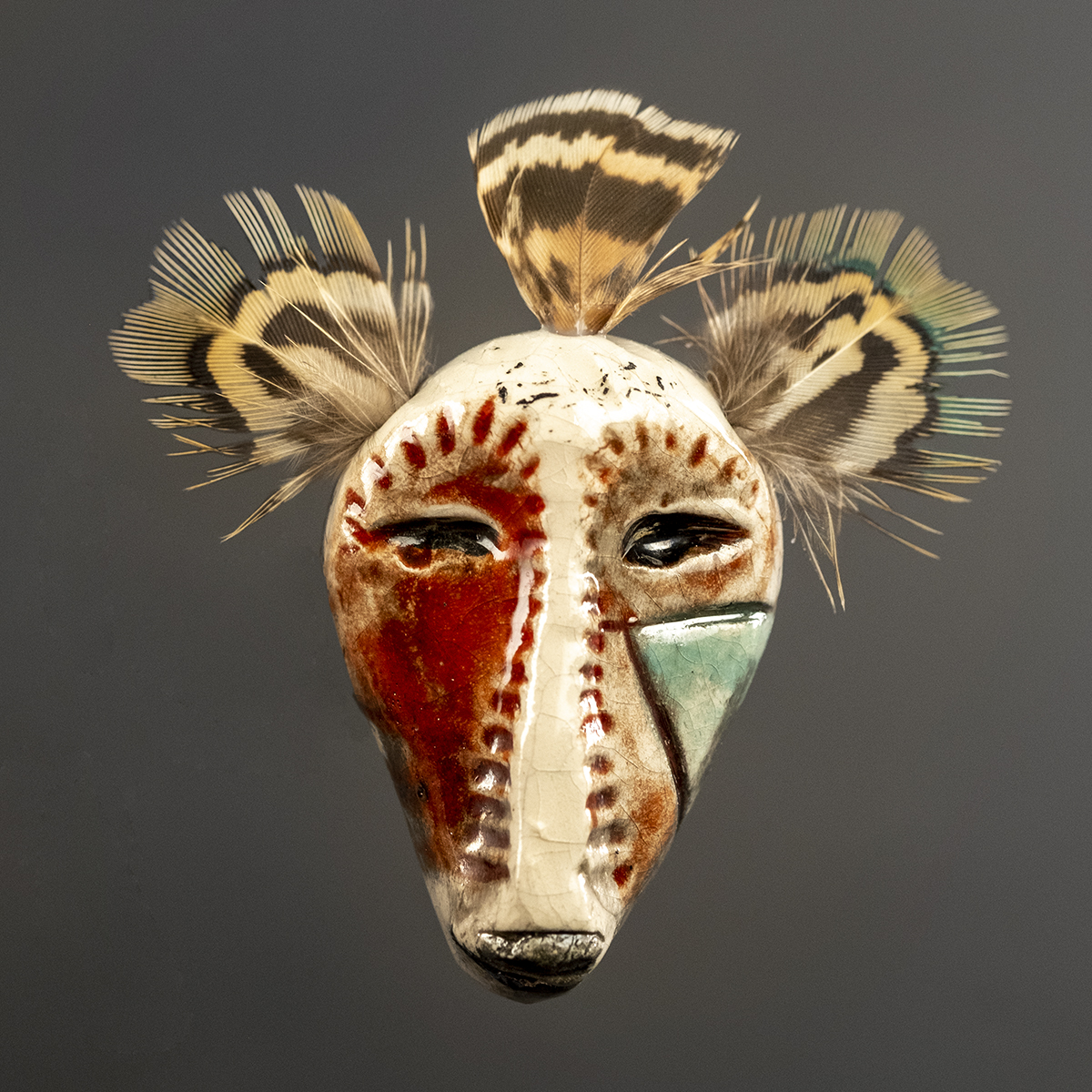 Mask Pin – Red WolfRaku Fired Ceramic w/ Feathers
Mask Pin – Red WolfRaku Fired Ceramic w/ Feathers- 2.38"h
- 2.38"w
SOLD -
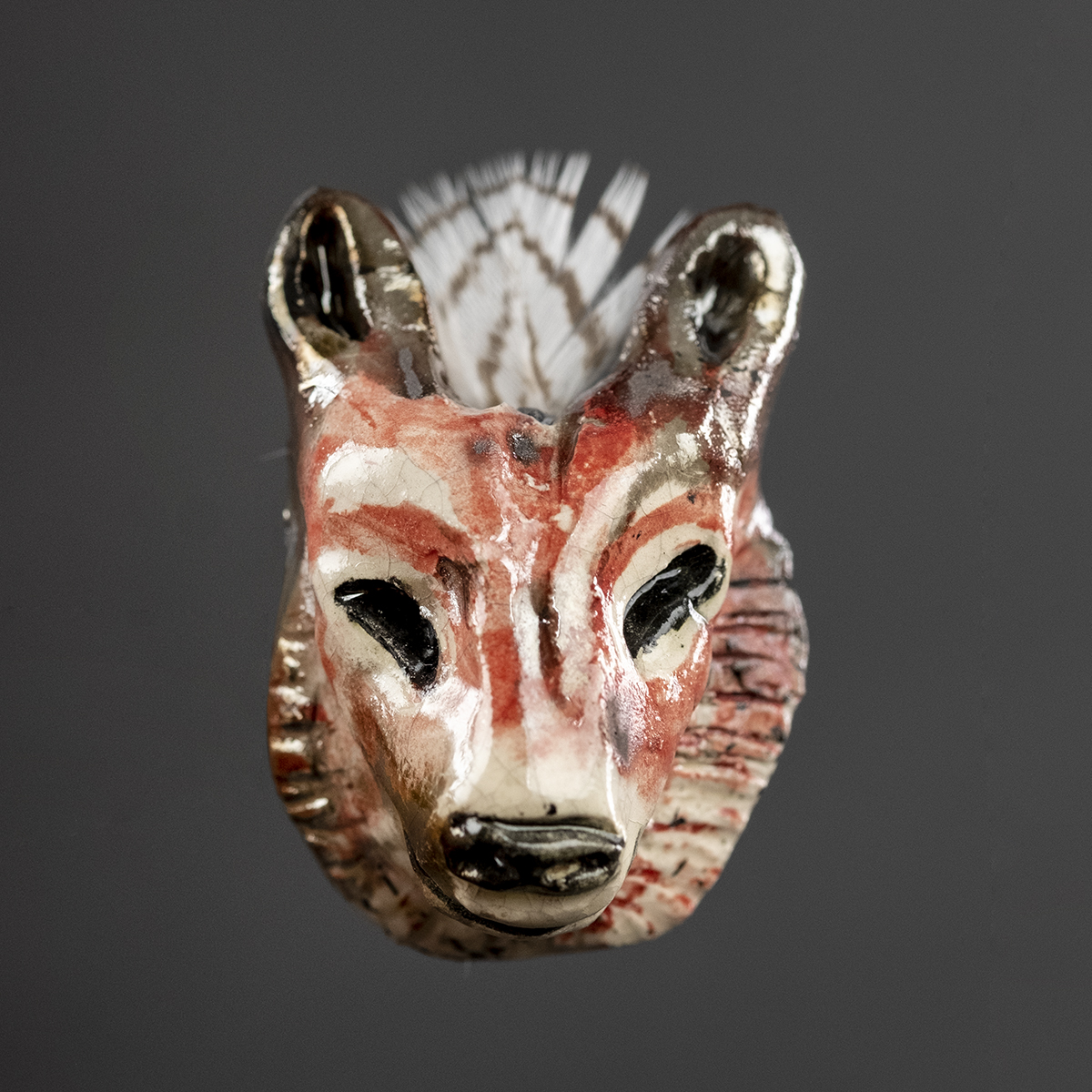 Mask Pin – Red WolfRaku Fired Ceramic w/ Feather
Mask Pin – Red WolfRaku Fired Ceramic w/ Feather- 1.63"h
- 1.13"w
SOLD -
 Mask Pin – Red WolfRaku Fired Ceramic w/ Feather
Mask Pin – Red WolfRaku Fired Ceramic w/ Feather- 1.75"h
- 1.17"w
SOLD -
 Mask Pin – OwlRaku Fired Ceramic
Mask Pin – OwlRaku Fired Ceramic- 1.5"h
- 1.25"w
SOLD -
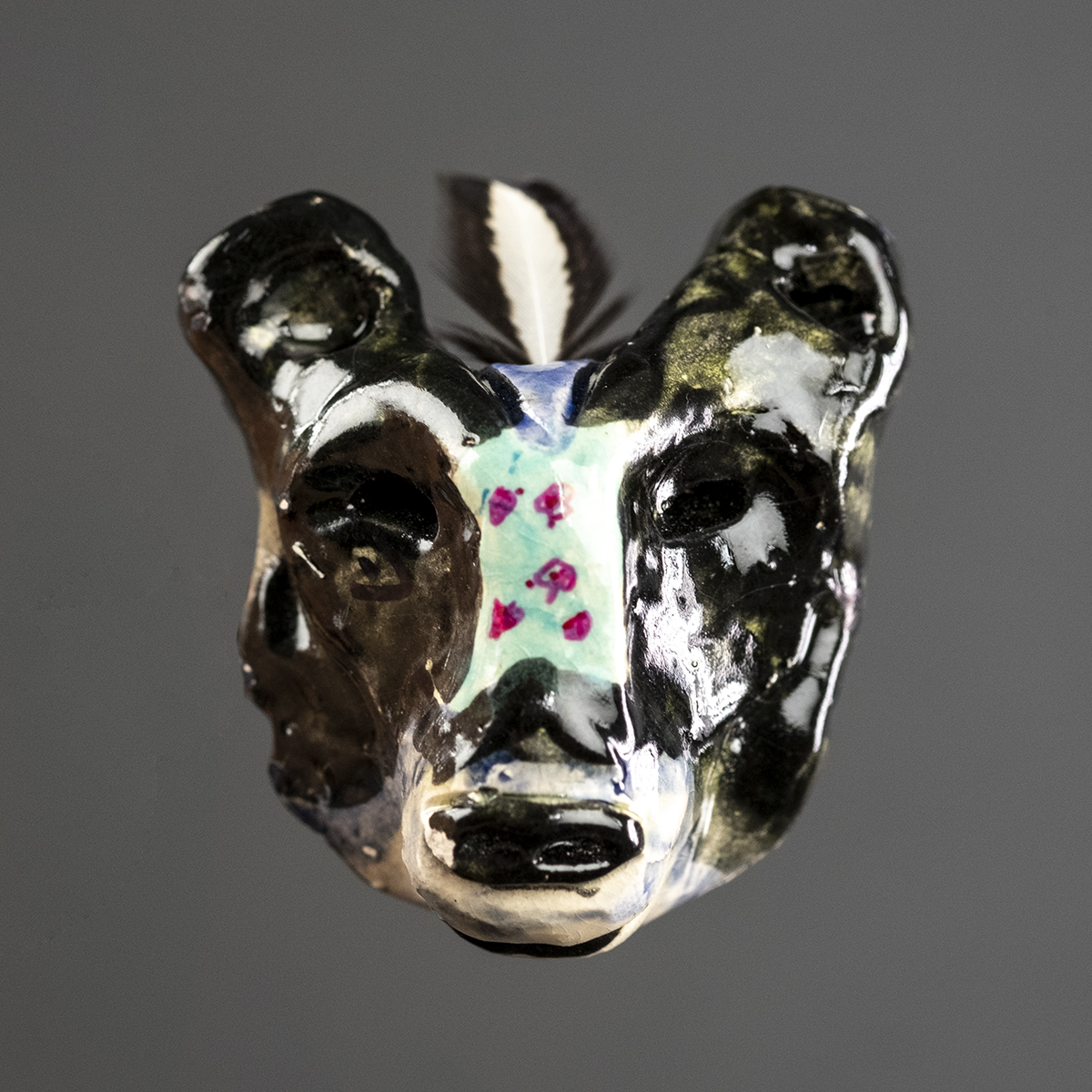 Mask Pin – Black BearRaku Fired Ceramic w/ Feather
Mask Pin – Black BearRaku Fired Ceramic w/ Feather- 1.75"h
- 1.38"w
SOLD -
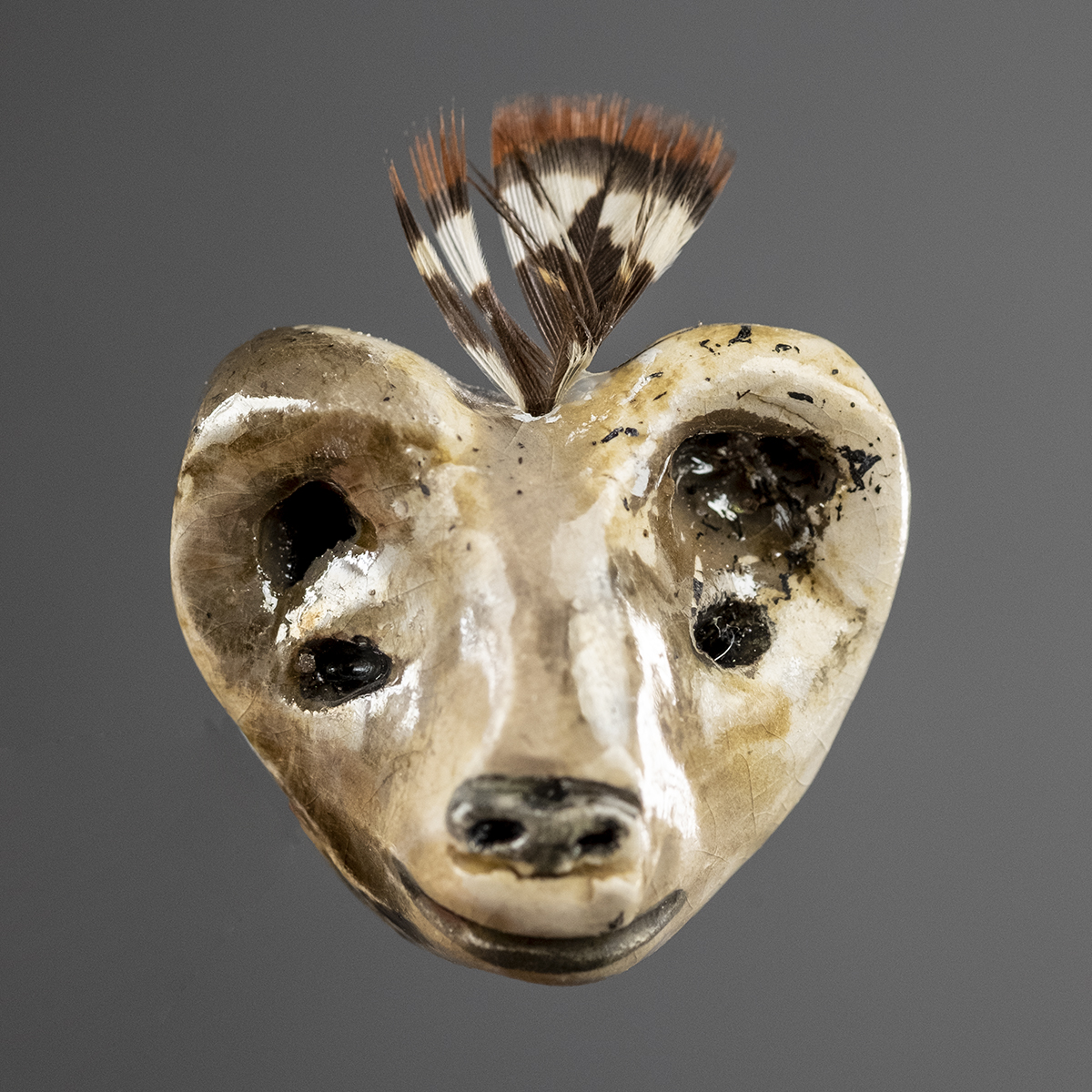 Mask Pin – PikaRaku Fired Ceramic w/ Feather
Mask Pin – PikaRaku Fired Ceramic w/ Feather- 1.63"h
- 1.25"w
SOLD -
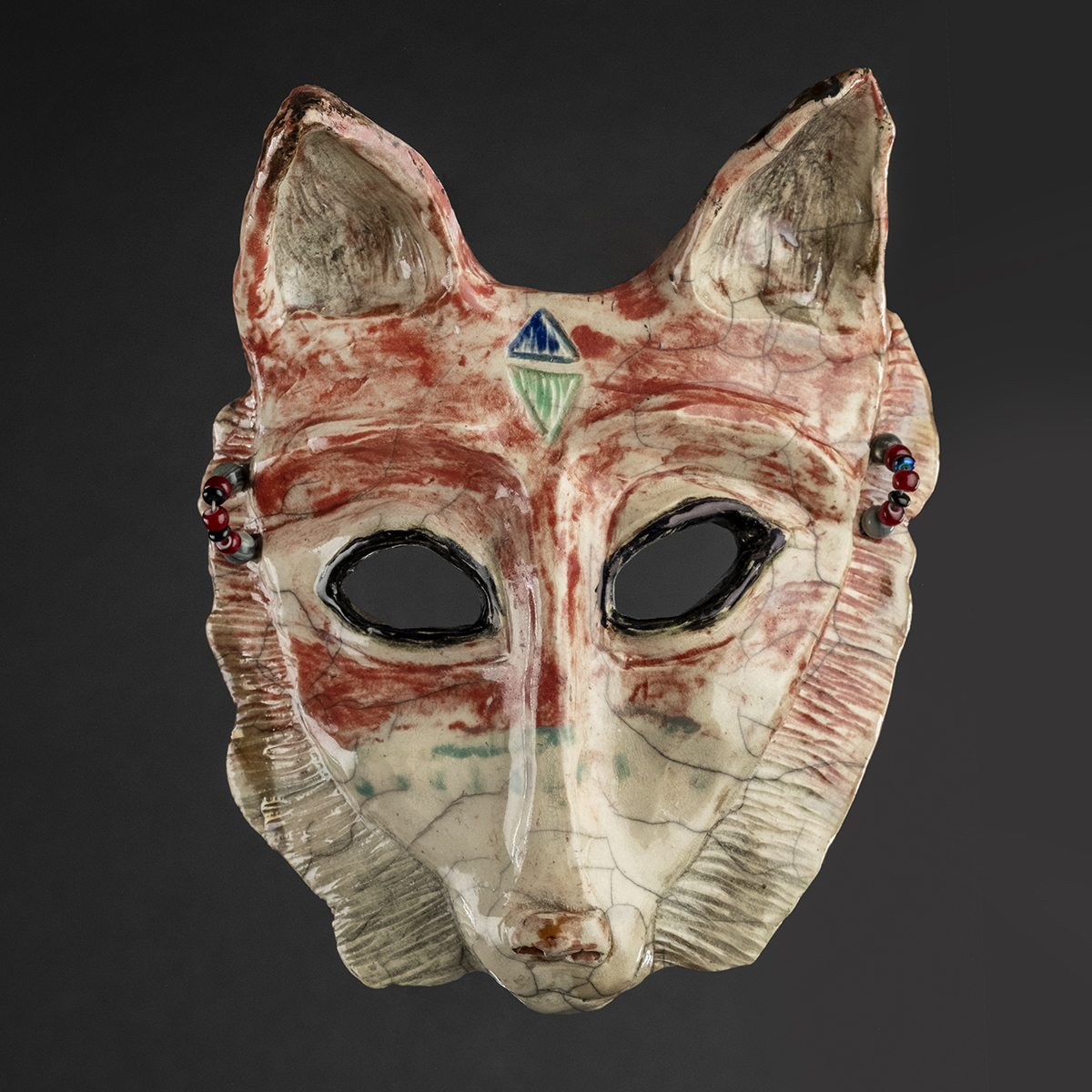 Baby Red Wolf Maskette – Pink NoseRaku Fired Ceramic w/ Beads
Baby Red Wolf Maskette – Pink NoseRaku Fired Ceramic w/ Beads- 6.63"h
- 5.5"w
- 2.25"d
SOLD -
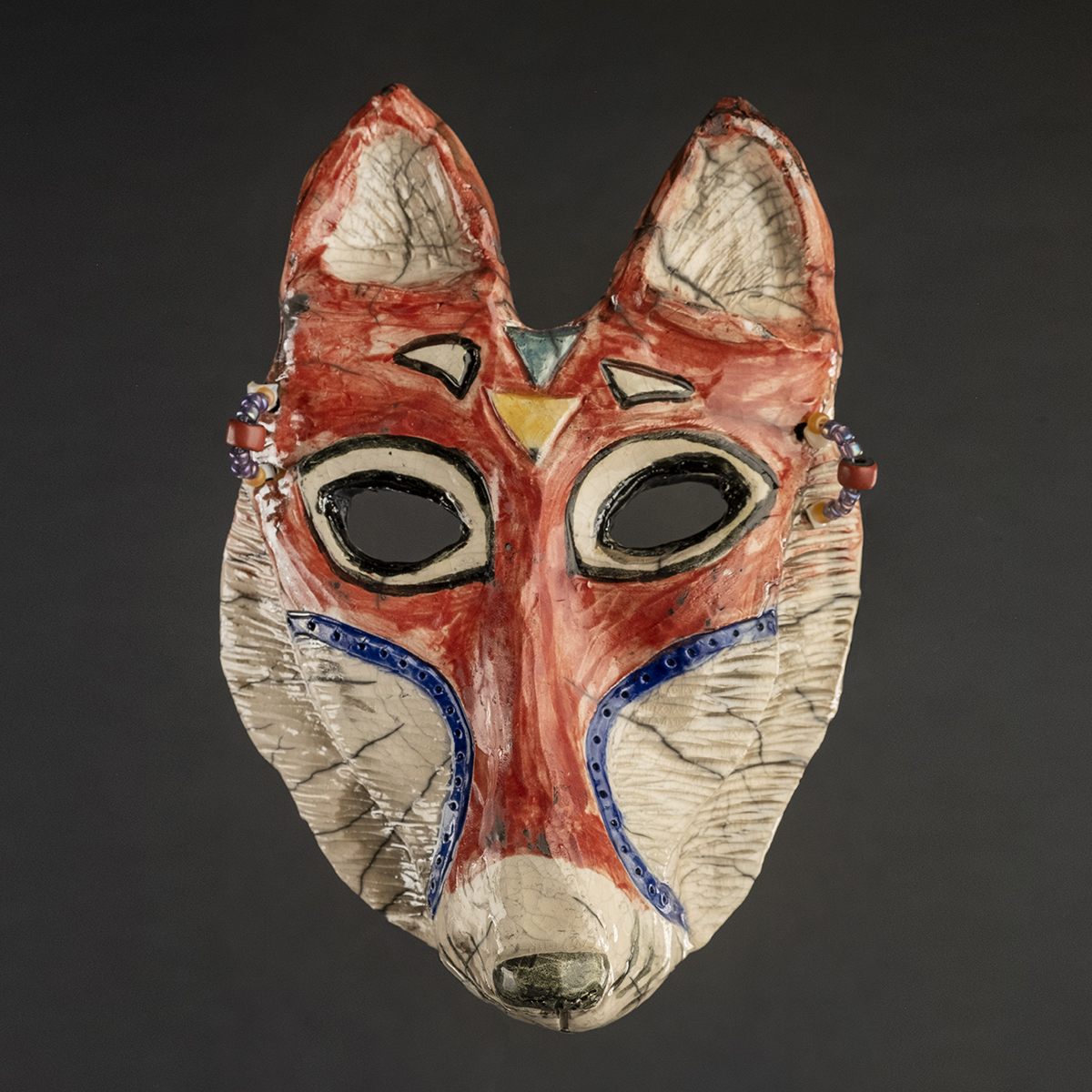 Baby Red Wolf Maskette with Long SnoutRaku Fired Ceramic w/ Beads
Baby Red Wolf Maskette with Long SnoutRaku Fired Ceramic w/ Beads- 7"h
- 4.75"w
- 2"d
SOLD -
 Baby Red Wolf Maskette w/ AbaloneRaku Fired Ceramic w/ Beads, Abalone
Baby Red Wolf Maskette w/ AbaloneRaku Fired Ceramic w/ Beads, Abalone- 5.88"h
- 5"w
- 2"d
SOLD -
 Shadow Spirits Worried About SalmonMixed Media, Reclaimed Wood, Fired Clay
Shadow Spirits Worried About SalmonMixed Media, Reclaimed Wood, Fired Clay- 38"h
- 12"w
- 3.25"d
SOLD -
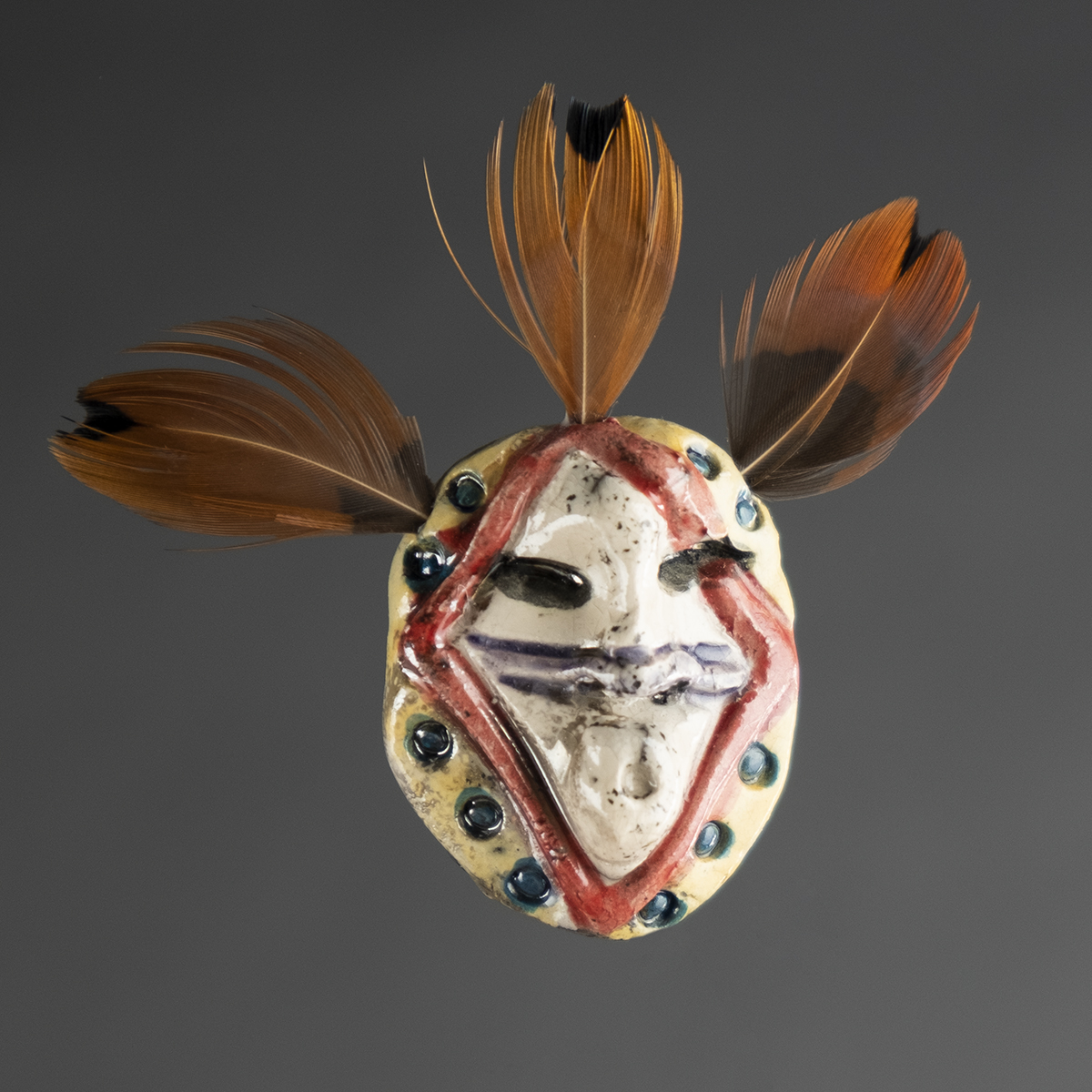 Mask Pin – Stick IndianCeramic Raku, Store Bought Feathers
Mask Pin – Stick IndianCeramic Raku, Store Bought Feathers- 2.63"h
- 3"w
SOLD -
 Mask Pin – Stick IndianCeramic Raku, Store Bought Feathers
Mask Pin – Stick IndianCeramic Raku, Store Bought Feathers- 2.88"h
- 2.75"w
SOLD -
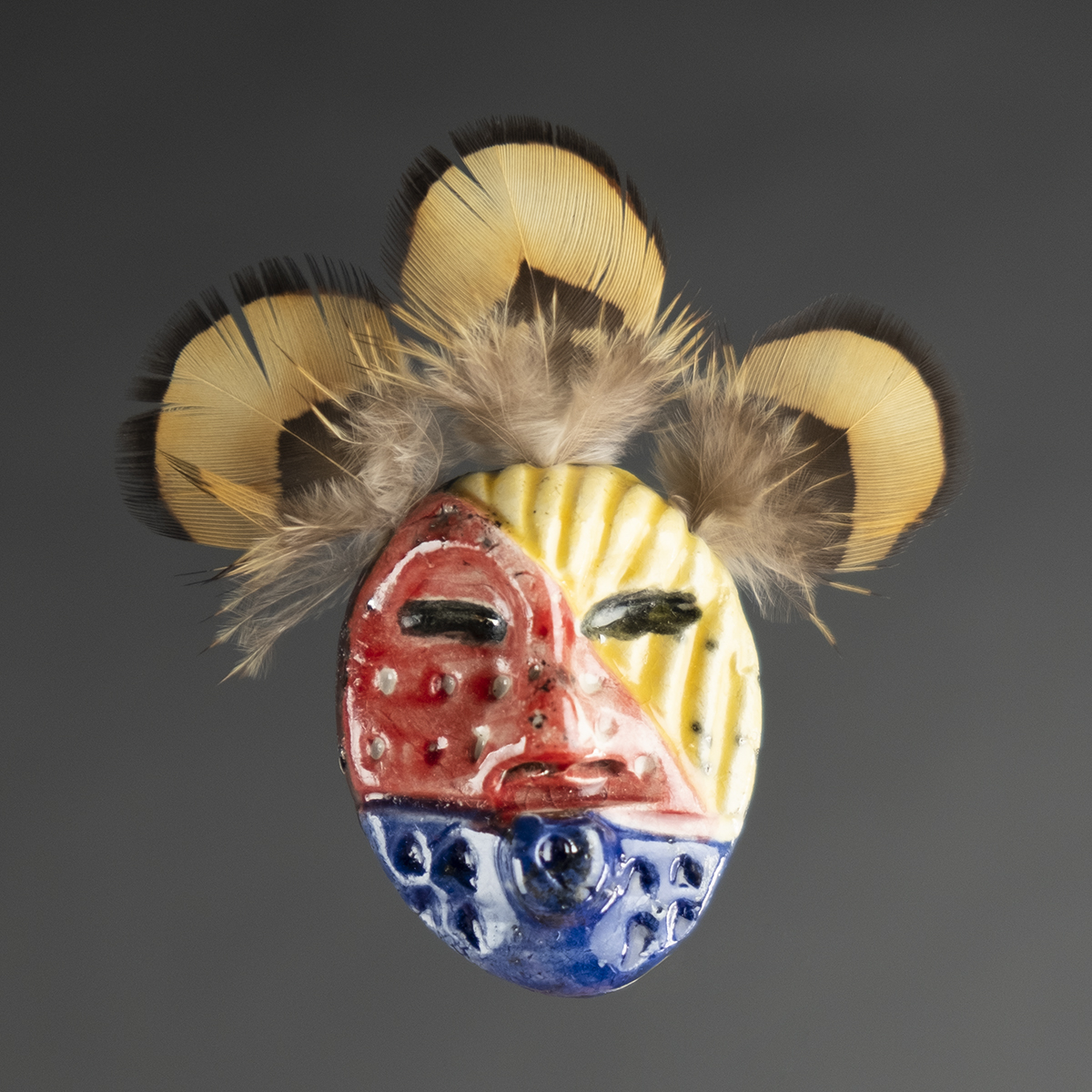 Mask Pin – Stick IndianCeramic Raku, Store Bought Feathers
Mask Pin – Stick IndianCeramic Raku, Store Bought Feathers- 2.63"h
- 2.5"w
SOLD -
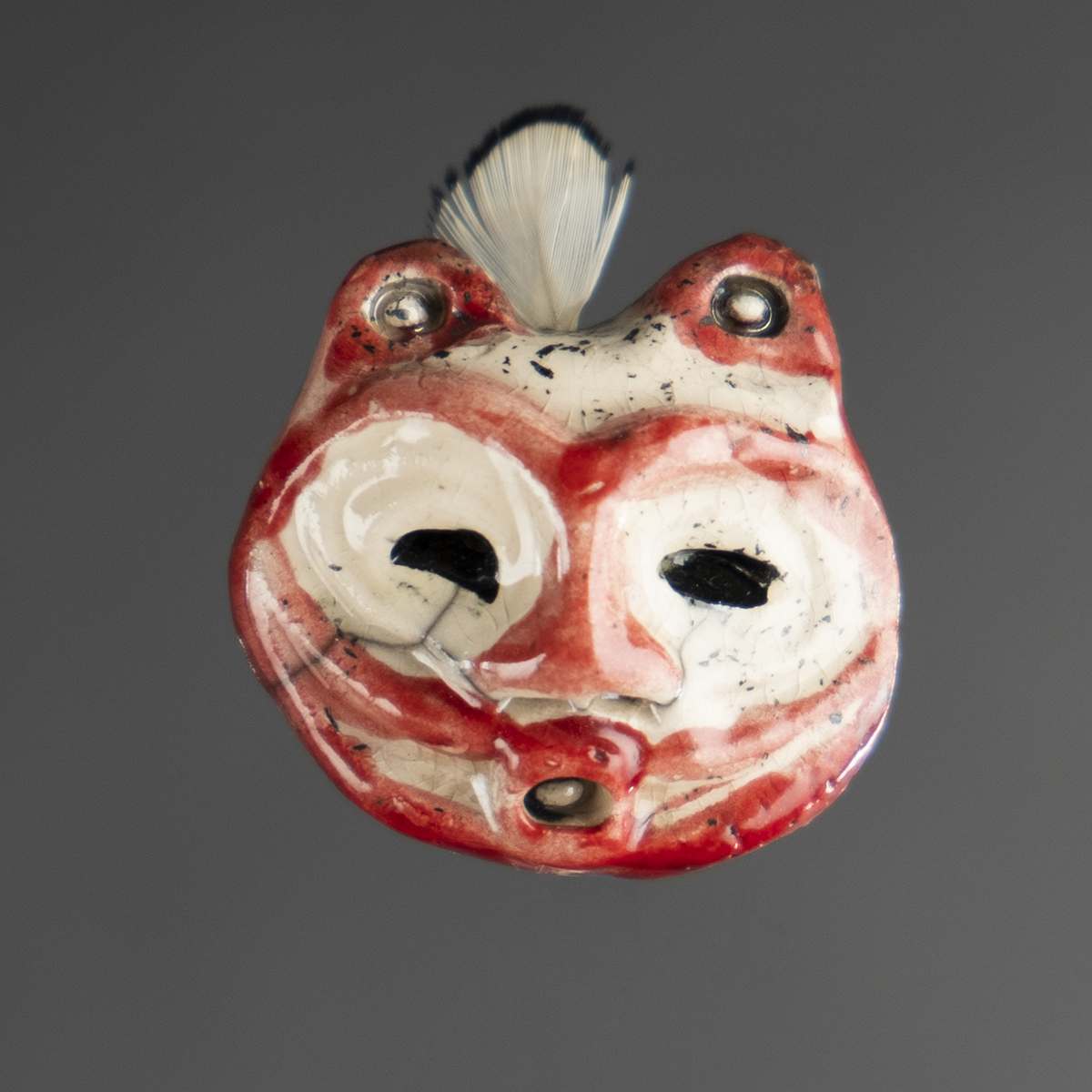 She Who Watches Mask Pin W/ FeatherCeramic Raku, Store Bought Feather
She Who Watches Mask Pin W/ FeatherCeramic Raku, Store Bought Feather- 1.88"h
- 1.36"w
SOLD -
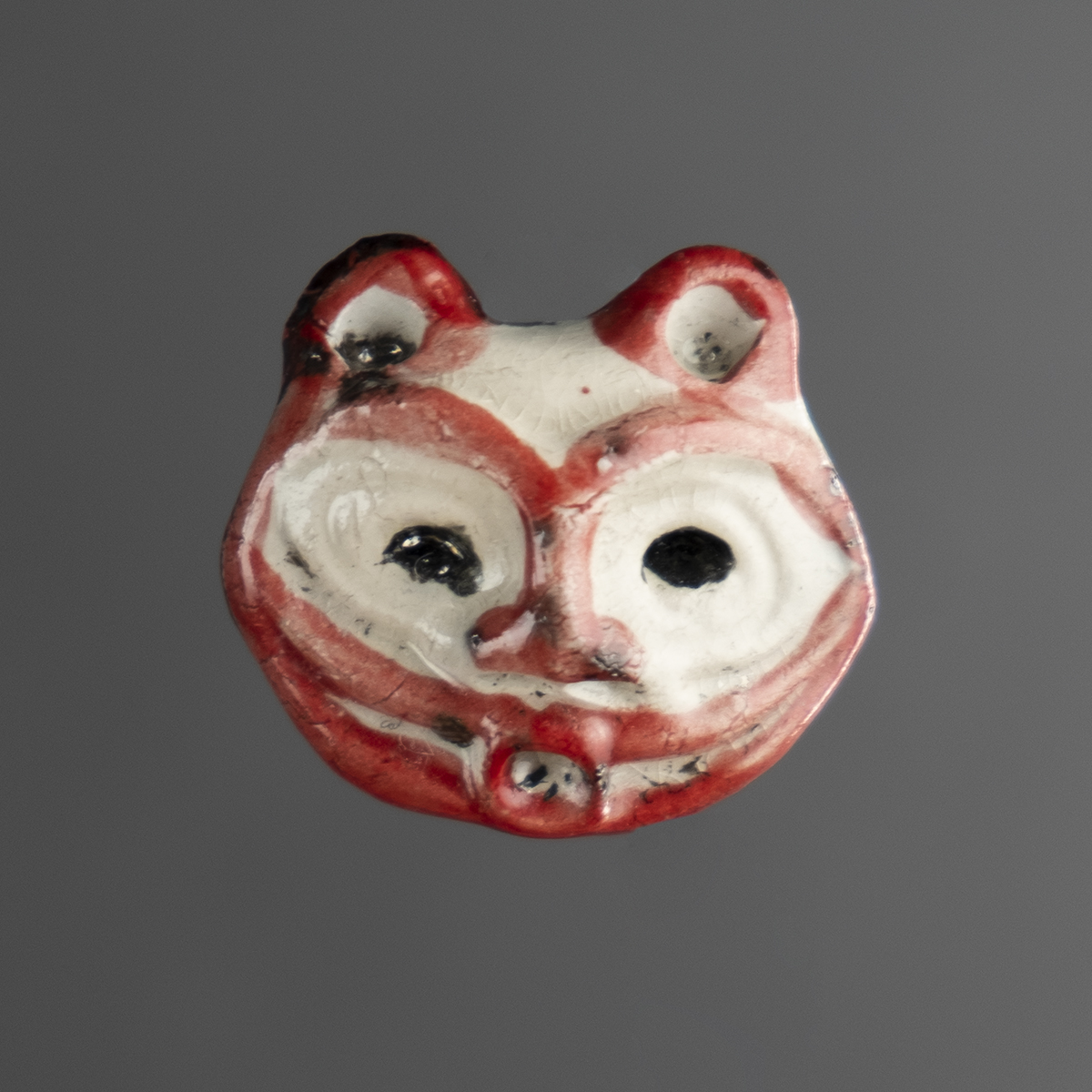 She Who Watches Mask PinCeramic Raku
She Who Watches Mask PinCeramic Raku- 1.25"h
- 1.38"w
SOLD -
 Reversible Agate Pendant with Leather ChainAgate, Sterling Silver, LeatherSOLD
Reversible Agate Pendant with Leather ChainAgate, Sterling Silver, LeatherSOLD -
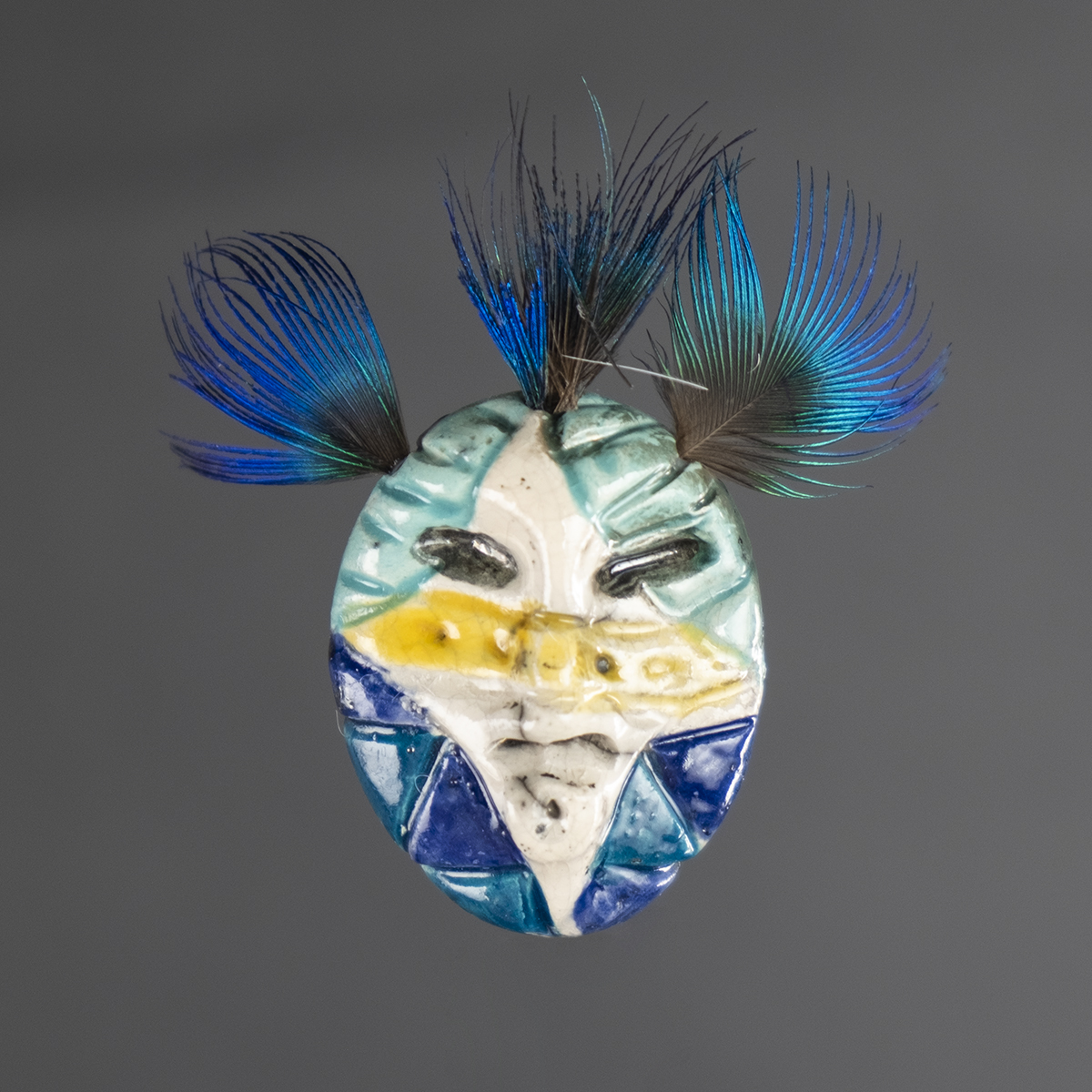 Mask Pin – Stick IndianCeramic Raku, Store Bought Feathers
Mask Pin – Stick IndianCeramic Raku, Store Bought Feathers- 2.5"h
- 1.25"w
SOLD -
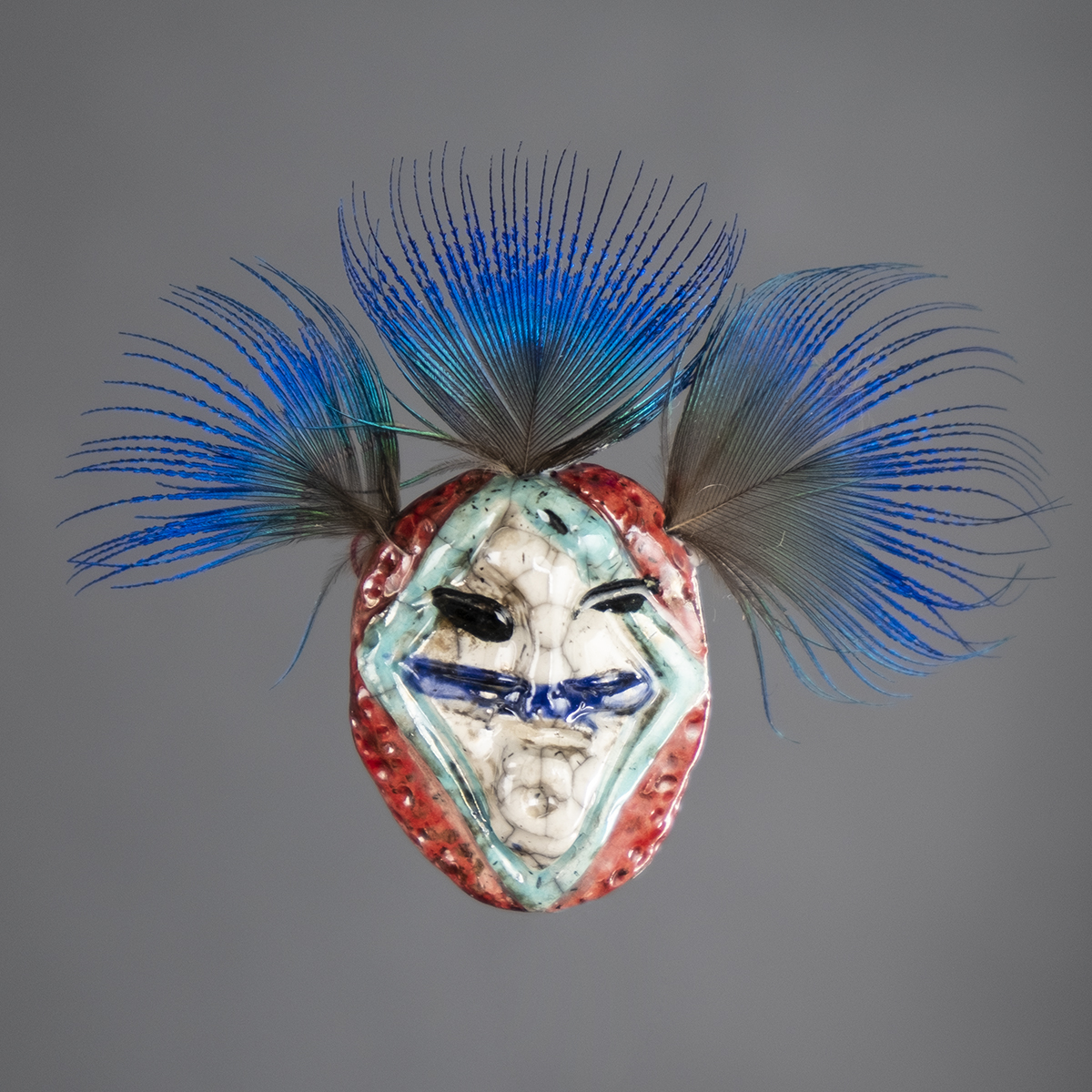 Mask Pin – Stick IndianCeramic Raku, Store Bought Feathers
Mask Pin – Stick IndianCeramic Raku, Store Bought Feathers- 2.75"h
- 1.25"w
SOLD -
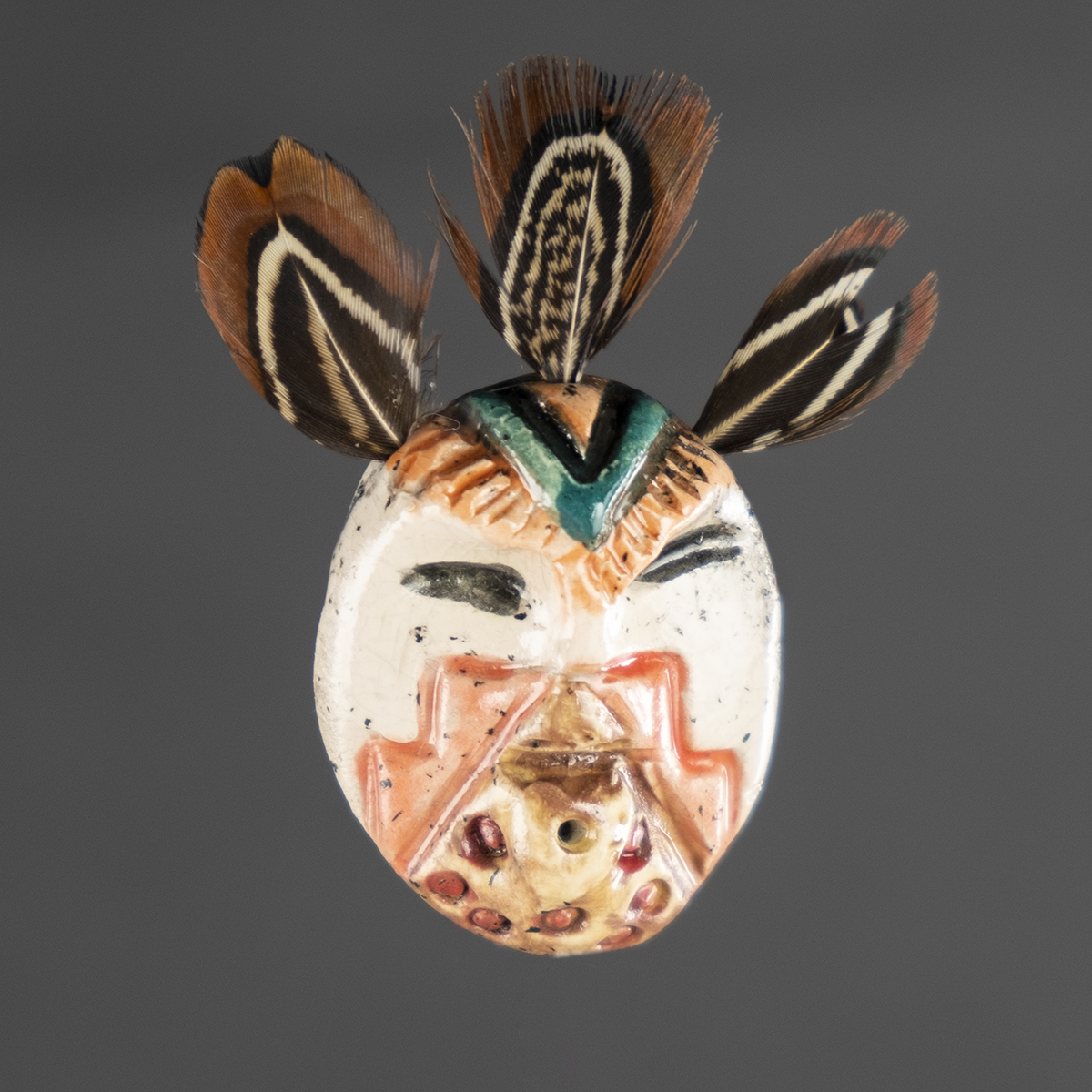 Mask Pin – Stick IndianCeramic Raku, Store Bought Feathers
Mask Pin – Stick IndianCeramic Raku, Store Bought Feathers- 2.38"h
- 1.38"w
SOLD -
 Mask Pin – Stick IndianCeramic Raku, Store Bought Feathers
Mask Pin – Stick IndianCeramic Raku, Store Bought Feathers- 2.75"h
- 1.25"w
SOLD -
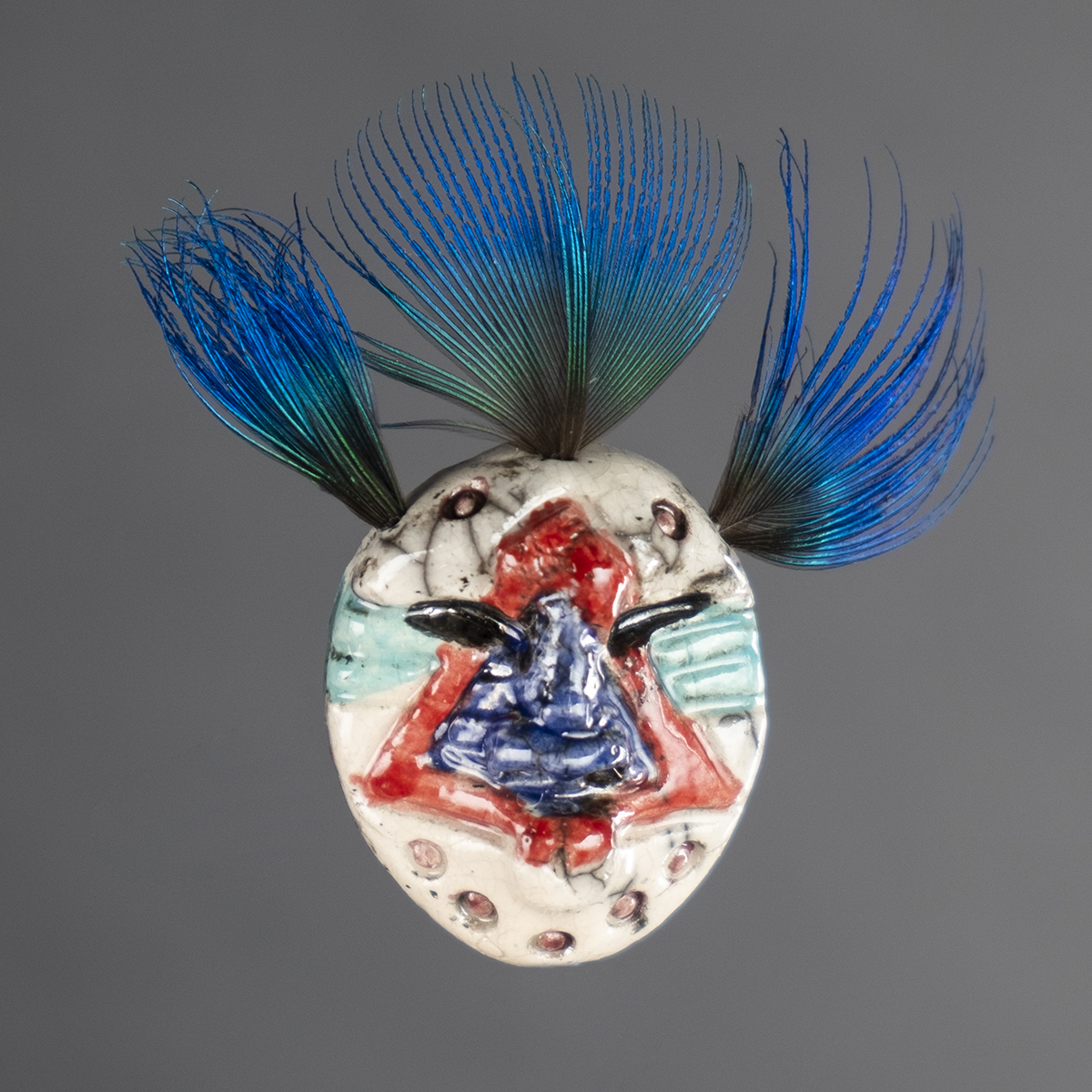 Mask Pin – Stick IndianCeramic Raku, Store Bought Feathers
Mask Pin – Stick IndianCeramic Raku, Store Bought Feathers- 2.63"h
- 1.38"w
SOLD -
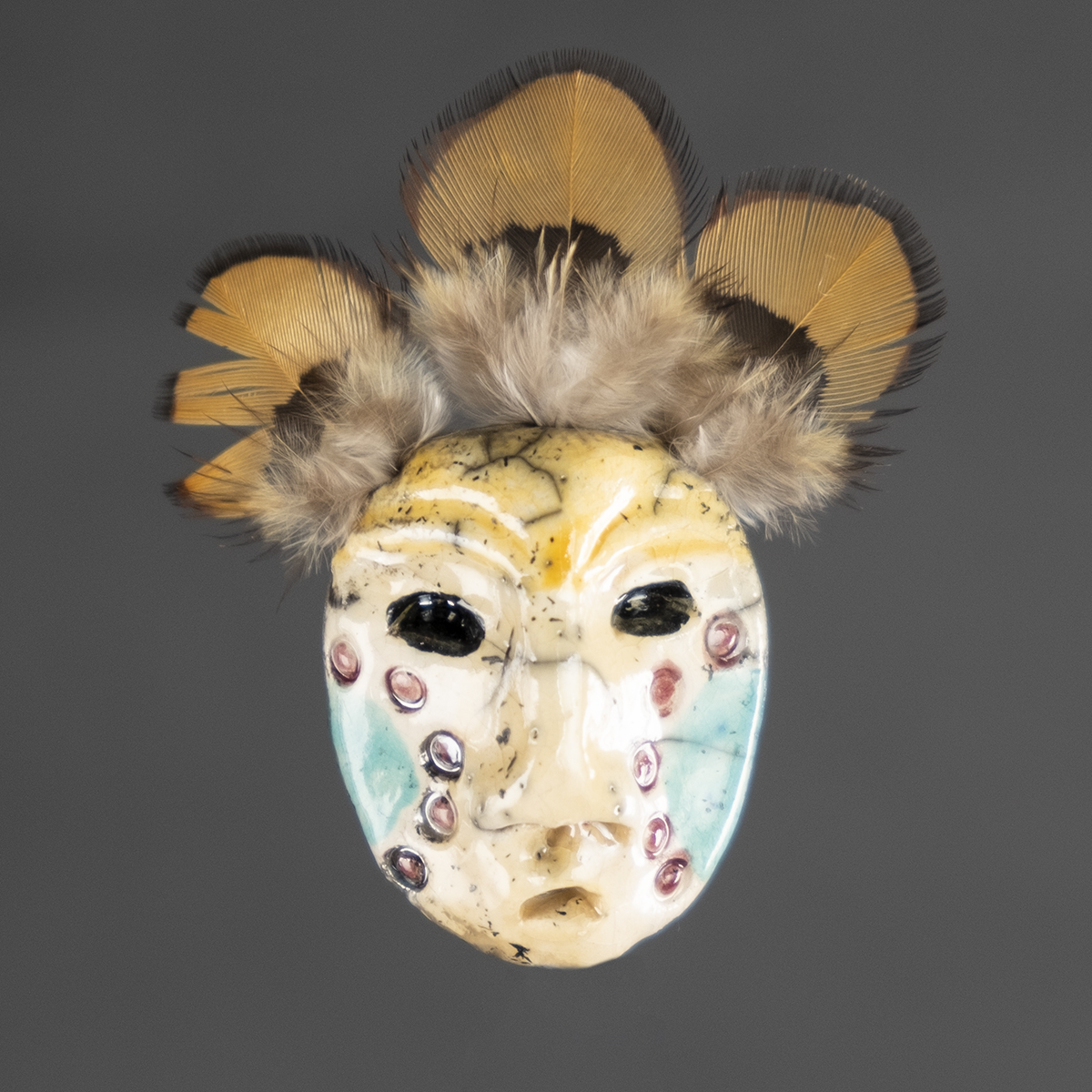 Mask Pin – Stick IndianCeramic Raku, Store Bought Feathers
Mask Pin – Stick IndianCeramic Raku, Store Bought Feathers- 2.38"h
- 1.13"w
SOLD -
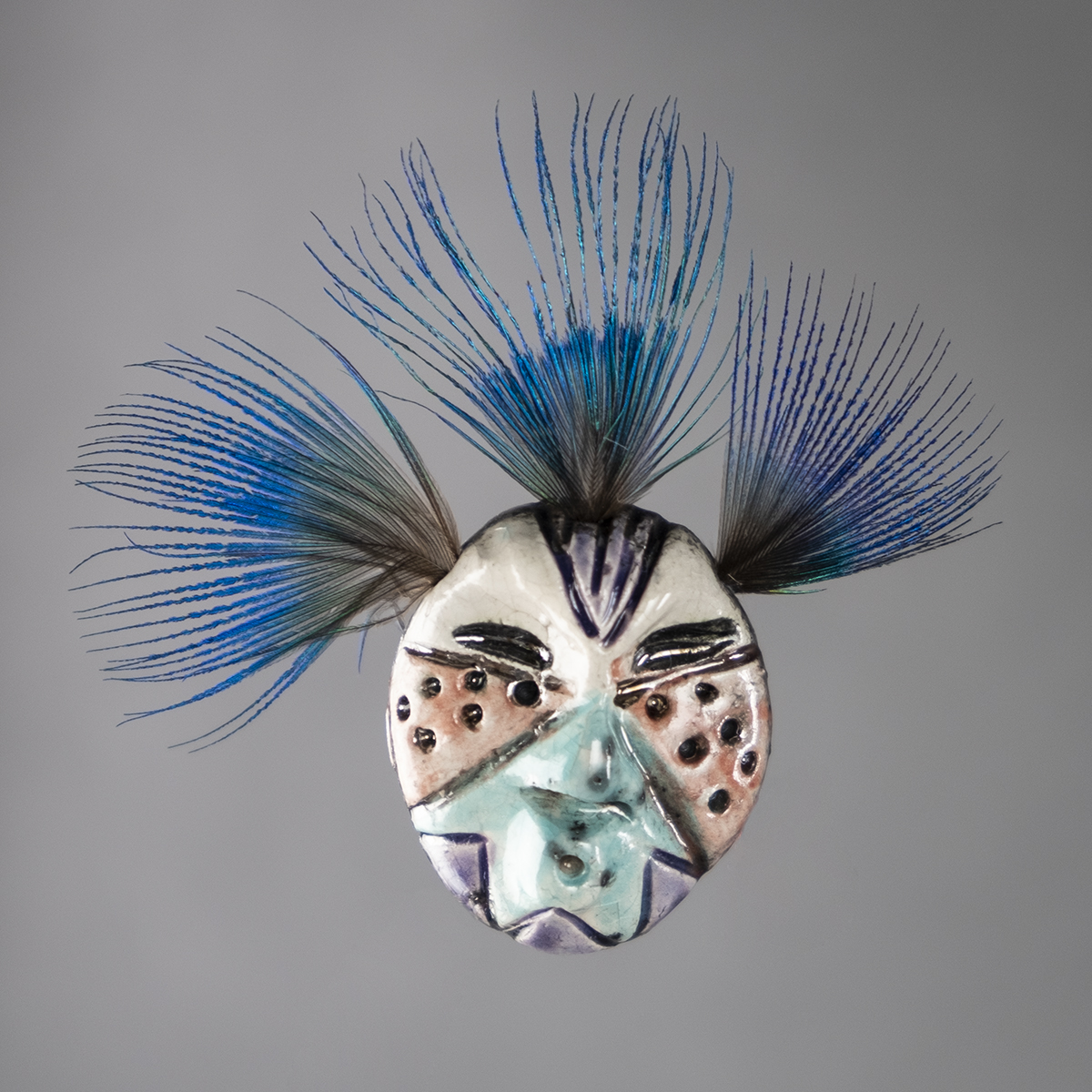 Mask Pin – Stick IndianCeramic Raku, Store Bought Feathers
Mask Pin – Stick IndianCeramic Raku, Store Bought Feathers- 3"h
- 1.38"w
SOLD -
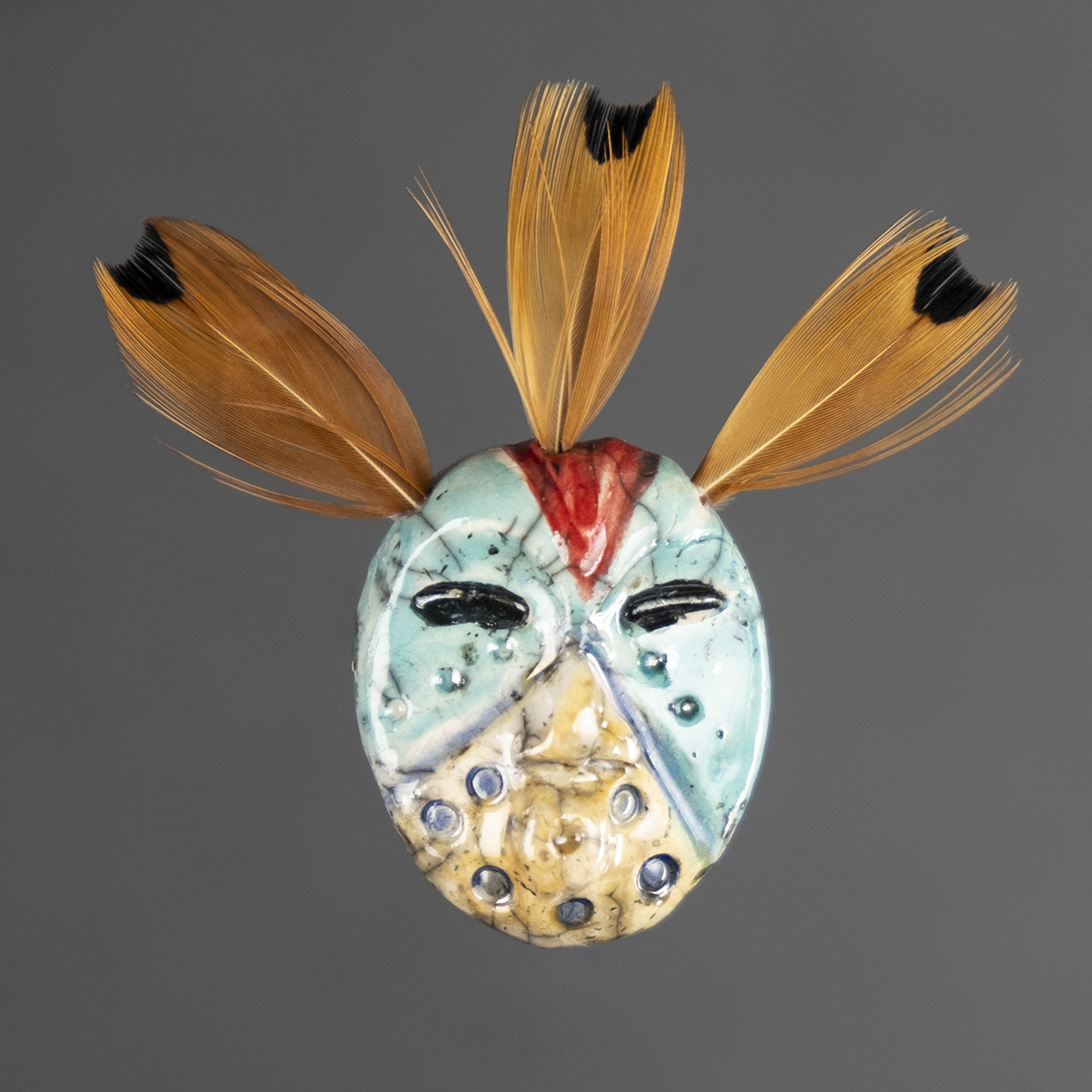 Mask Pin – Stick IndianCeramic Raku, Store Bought Feathers
Mask Pin – Stick IndianCeramic Raku, Store Bought Feathers- 2.75"h
- 1.25"w
SOLD -
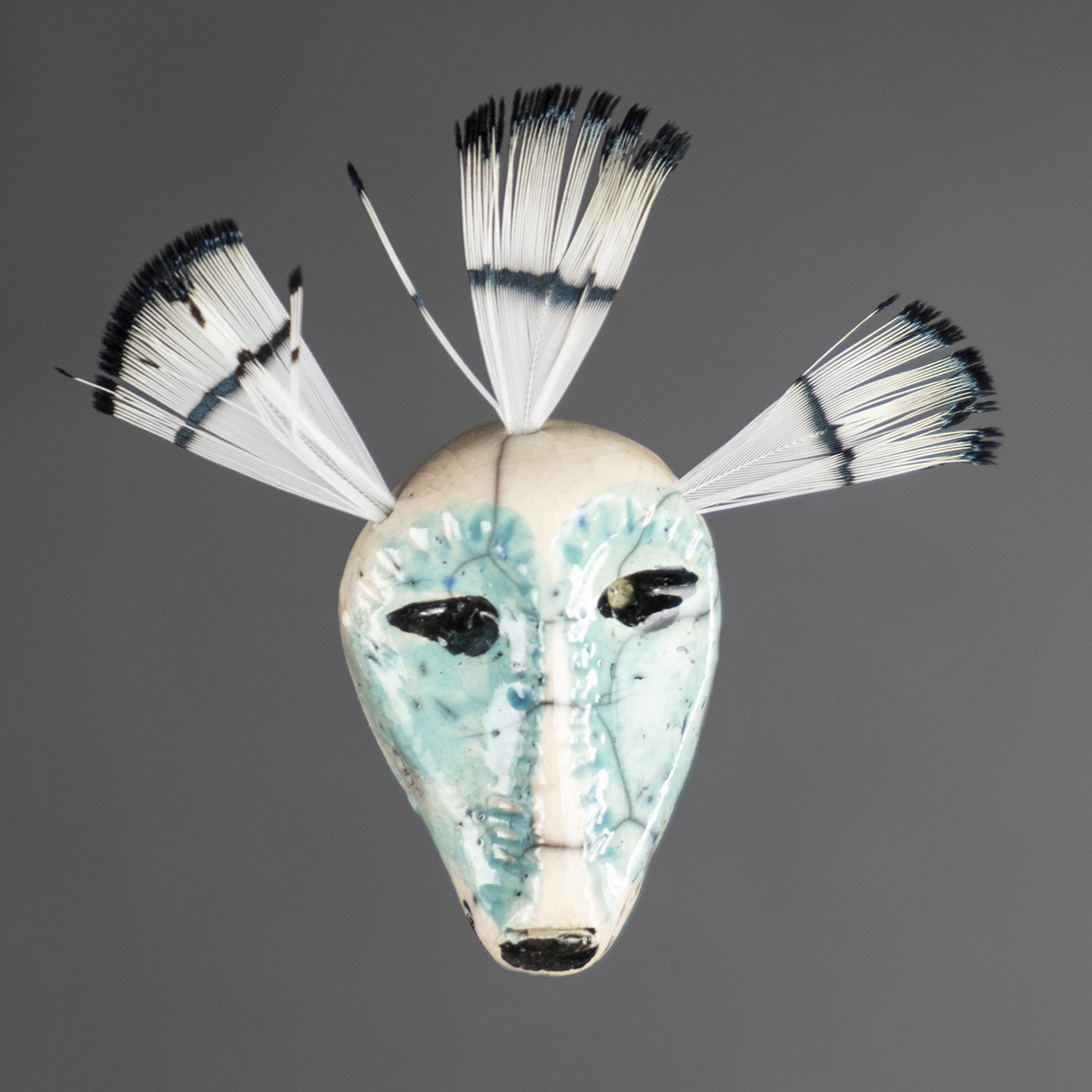 Mask Pin – Baby Red WolfCeramic Raku, Store Bought Feathers
Mask Pin – Baby Red WolfCeramic Raku, Store Bought Feathers- 2.5"h
- 1.13"w
SOLD -
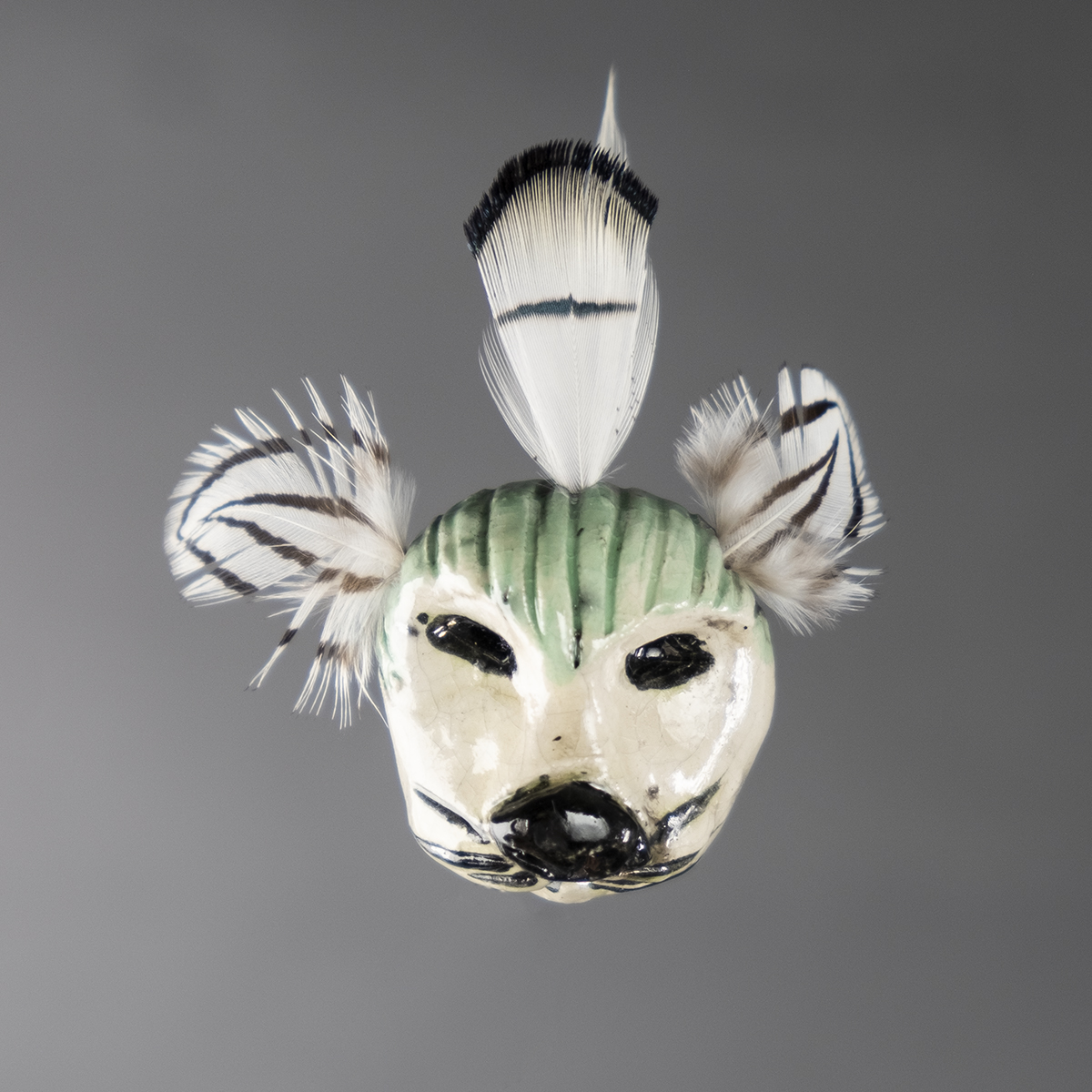 Mask Pin – White Furred Baby SealCeramic Raku, Store Bought Feathers
Mask Pin – White Furred Baby SealCeramic Raku, Store Bought Feathers- 1.5"h
- 1.13"w
SOLD -
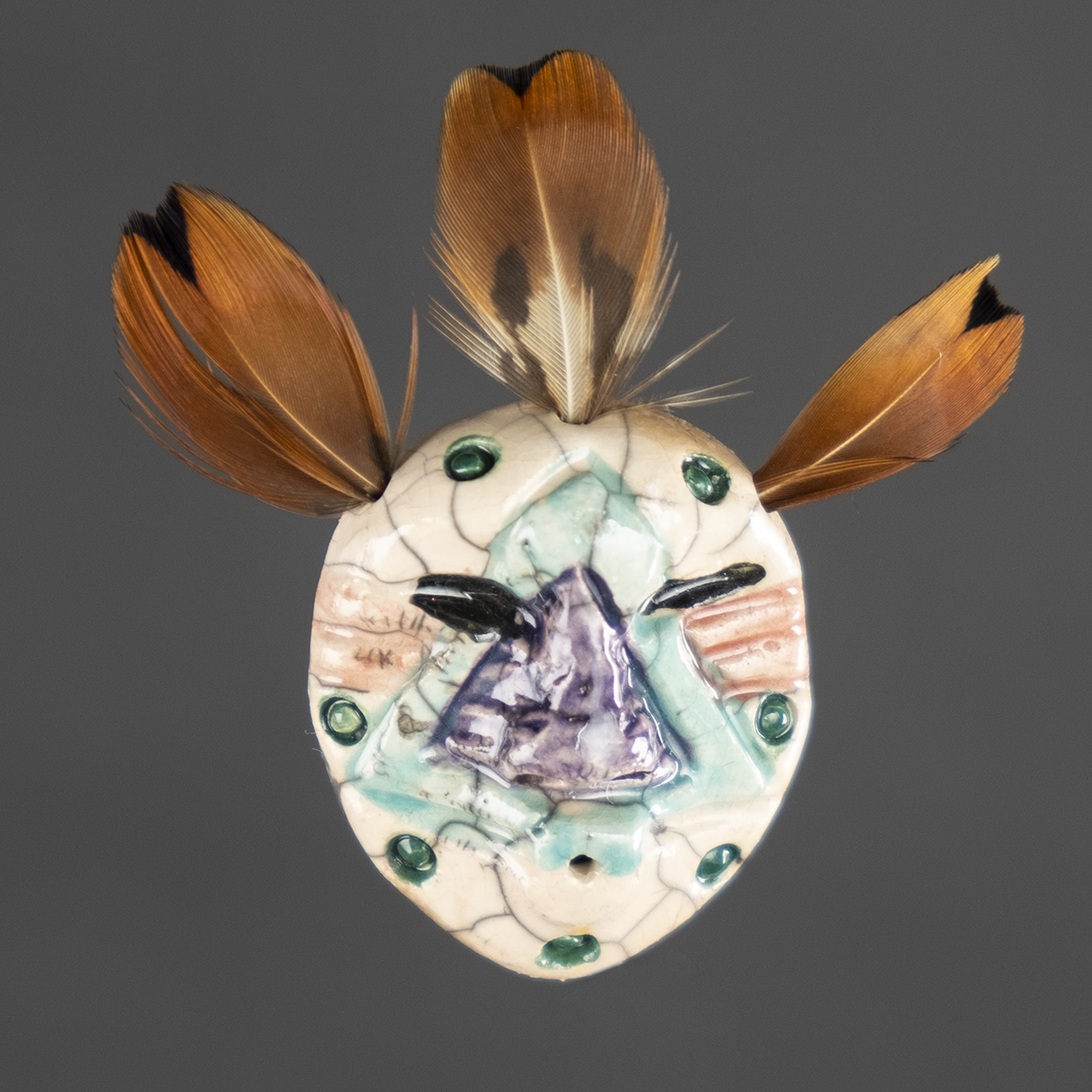 Mask Pin – Stick IndianCeramic Raku, Store Bought Feathers
Mask Pin – Stick IndianCeramic Raku, Store Bought Feathers- 2.38"h
- 1.38"w
SOLD -
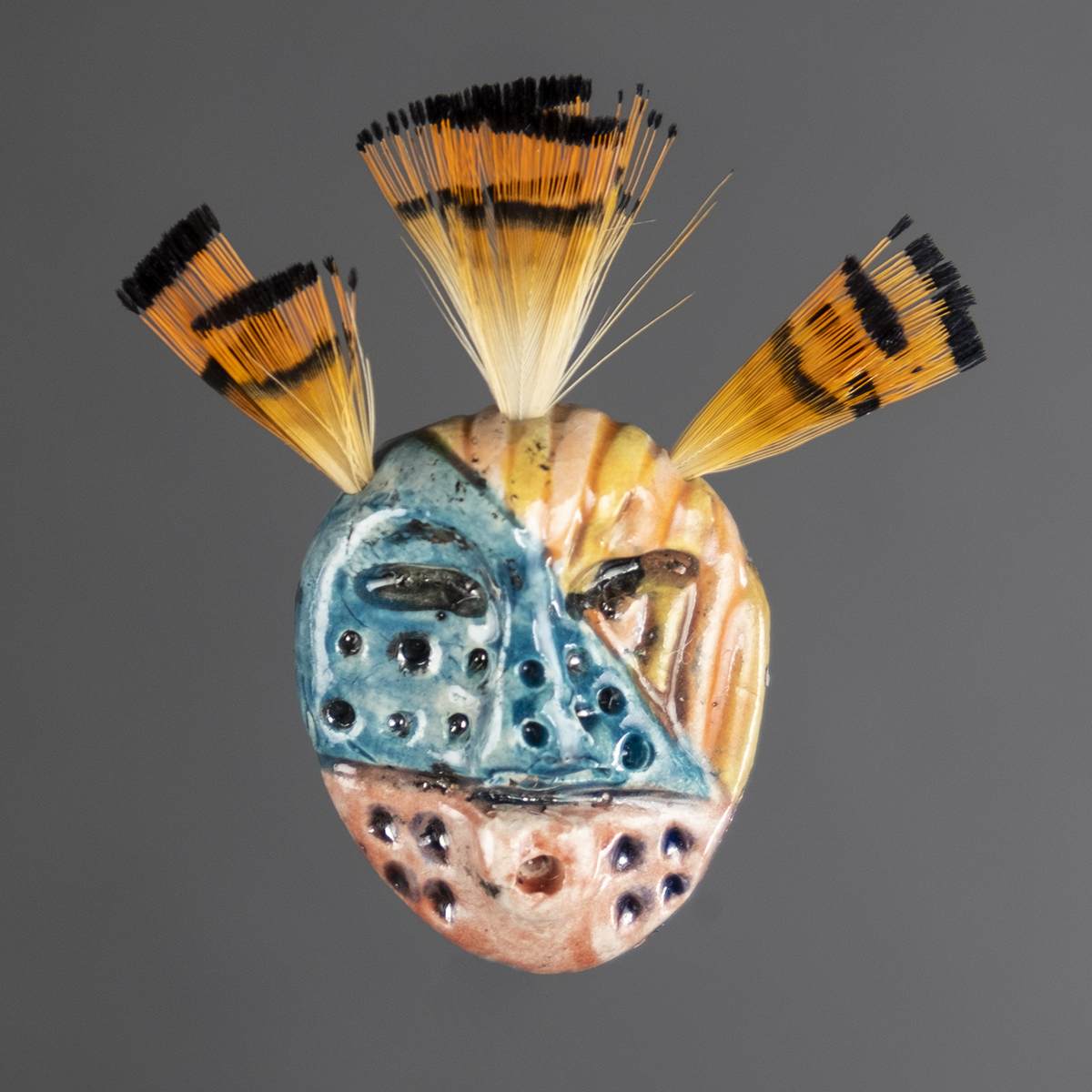 Mask Pin – Stick IndianCeramic Raku, Store Bought Feathers
Mask Pin – Stick IndianCeramic Raku, Store Bought Feathers- 2.63"h
- 1.38"w
SOLD -
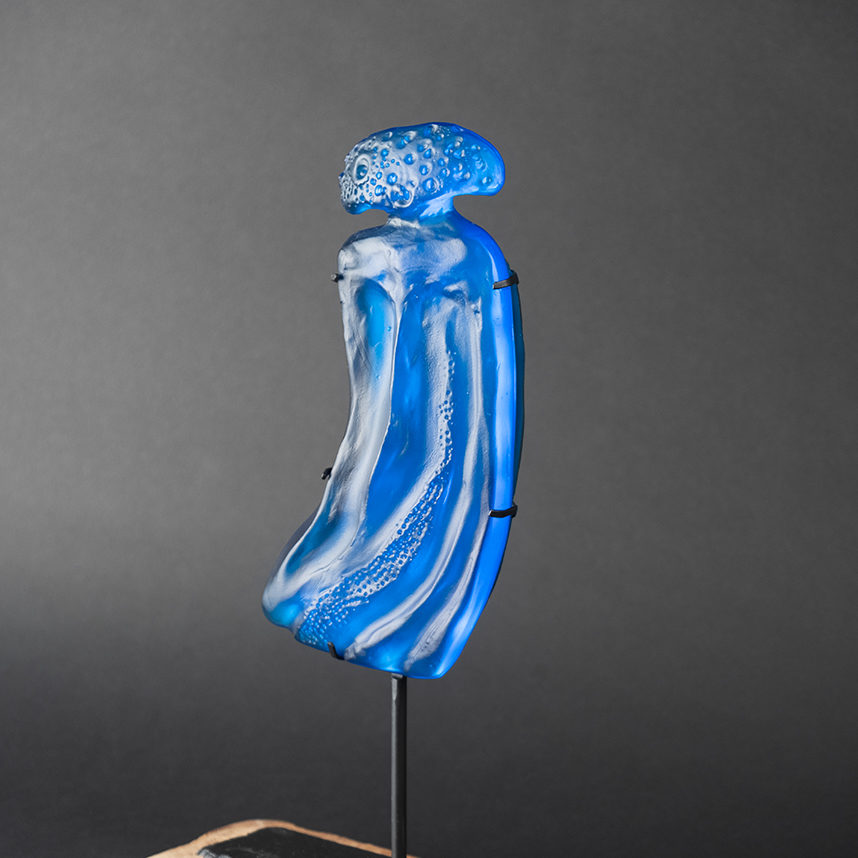 Wind SpiritCast Blue New Zealand Crystal, Metal Stand
Wind SpiritCast Blue New Zealand Crystal, Metal Stand- 14"h
- 9"w
- 7"d
SOLD -
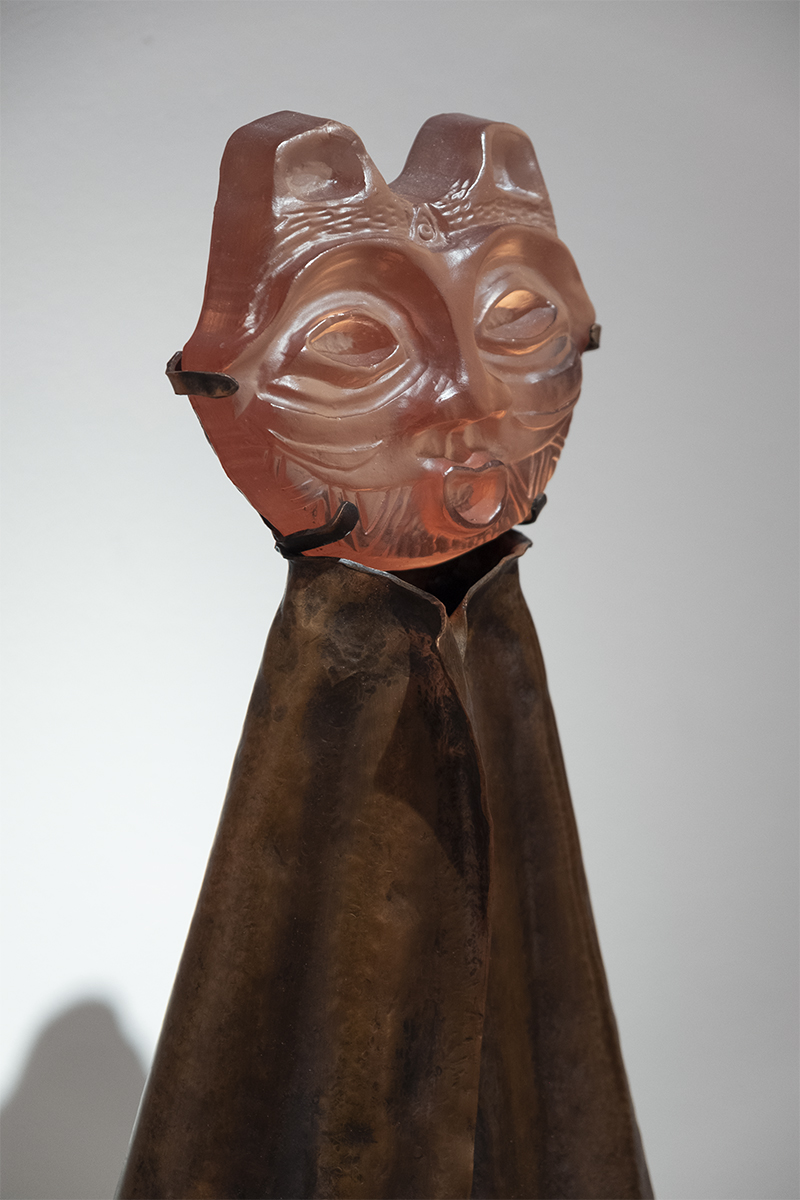 She Is Watching the Salmon RunCast Crystal, Copper, Granite
She Is Watching the Salmon RunCast Crystal, Copper, Granite- 16"h
- 8.5"w
- 7"d
SOLD -
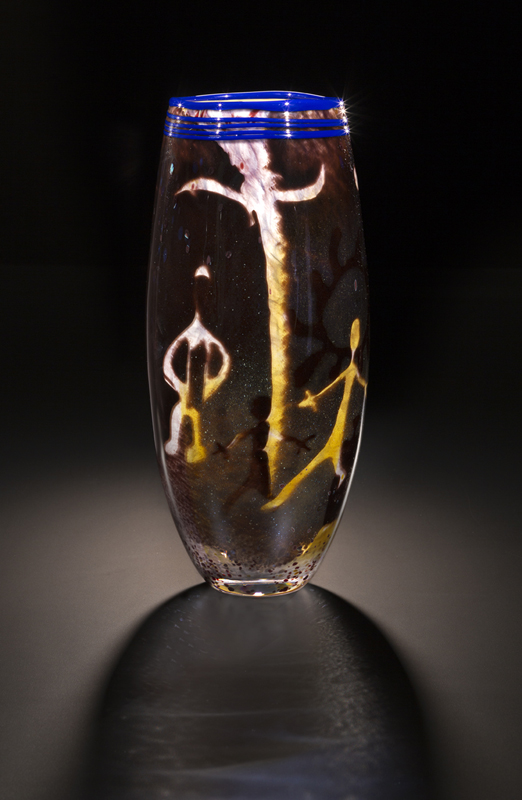 Midnight Dance – Sally Bag #9 – Collaboration with Dan FridayBlown and Fused Glass
Midnight Dance – Sally Bag #9 – Collaboration with Dan FridayBlown and Fused Glass- 16.5"h
- 7.75"w
- 7.75"d
SOLD -
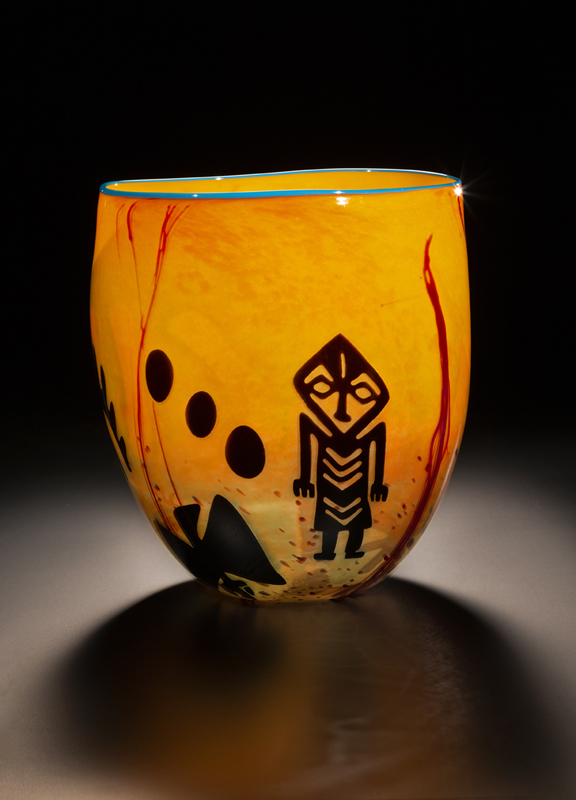 Sagebrush – Sally Bag #2 – Collaboration with Dan FridayBlown and Fused Glass
Sagebrush – Sally Bag #2 – Collaboration with Dan FridayBlown and Fused Glass- 14.75"h
- 13"w
- 13"d
SOLD -
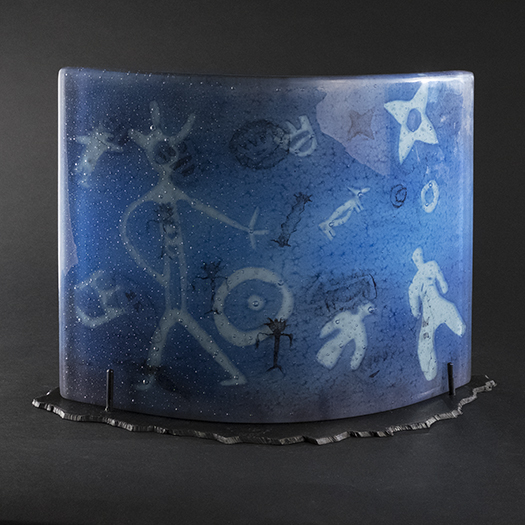 AncestorsFused and Slumped Glass on Metal Base
AncestorsFused and Slumped Glass on Metal Base- 12.5"h
- 17.25"w
- 7.5"d
SOLD -
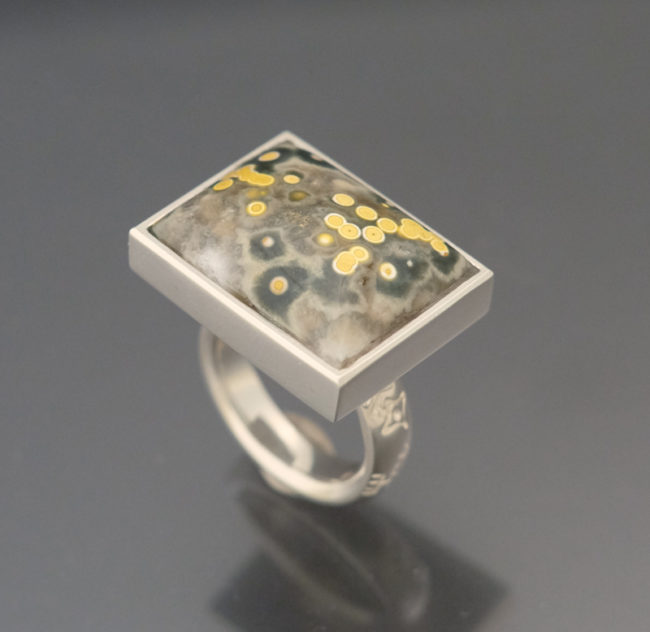 Unique Ring with Ocean JasperSterling Silver, Ocean Jasper - Size 8SOLD
Unique Ring with Ocean JasperSterling Silver, Ocean Jasper - Size 8SOLD -
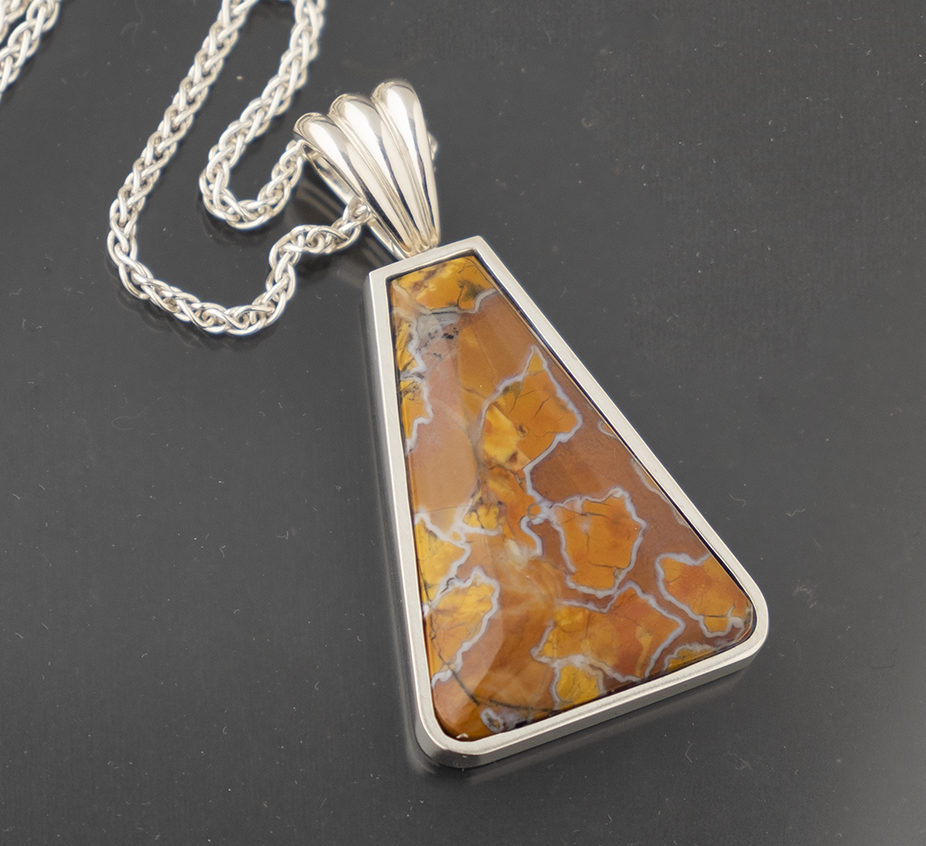 Moonkite Jasper PendantMoonkite Jasper, Chain, Sterling Silver
Moonkite Jasper PendantMoonkite Jasper, Chain, Sterling Silver- 13.5"h
- 1.25"w
SOLD -
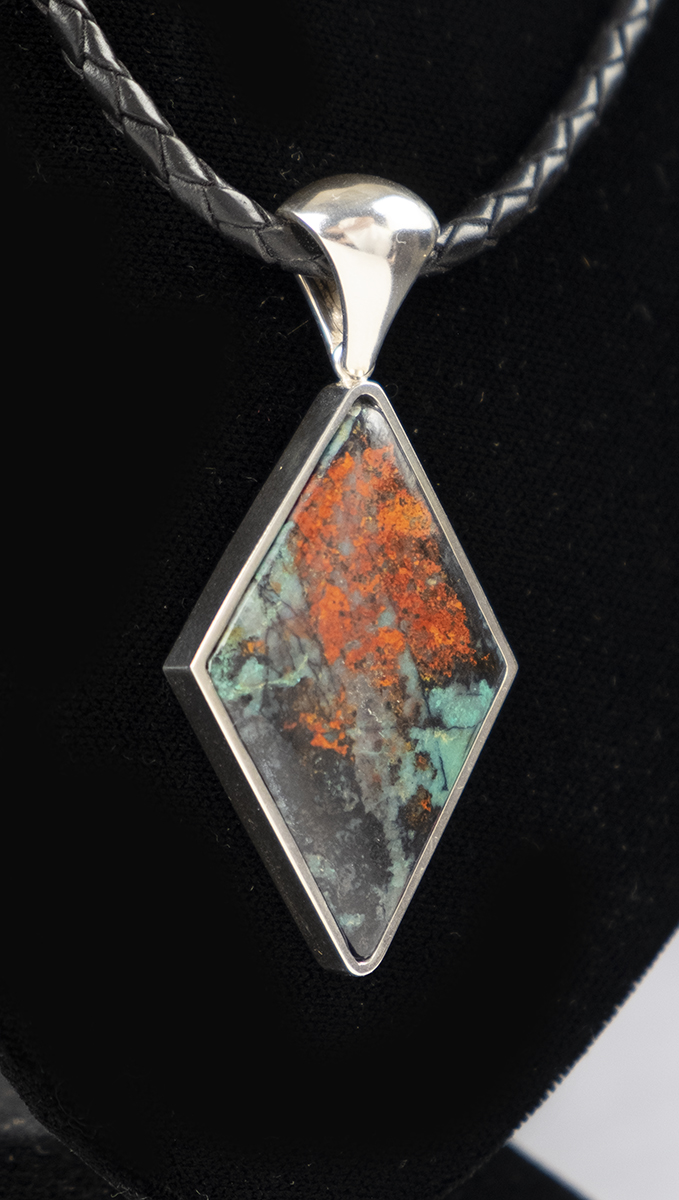 Reversible Sonora Sunset Pendant on ChainJasper, Sterling Silver, Leather Cord
Reversible Sonora Sunset Pendant on ChainJasper, Sterling Silver, Leather Cord- 2.75"h
- 1.25"w
SOLD -
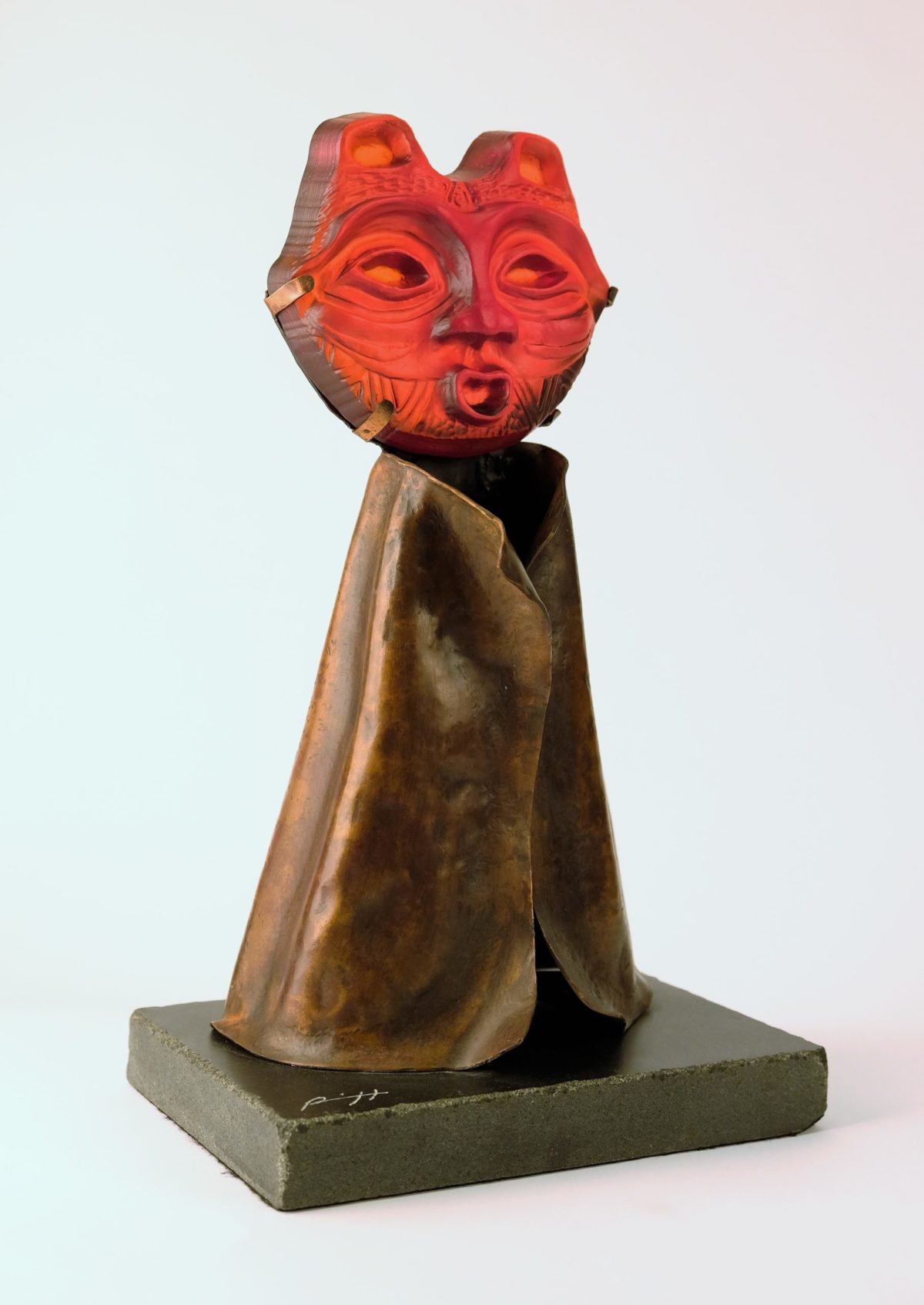 She Who Watches FigureCast Glass, Copper, Granite Base
She Who Watches FigureCast Glass, Copper, Granite Base- 15.5"h
- 9.25"w
- 6.75"d
SOLD -
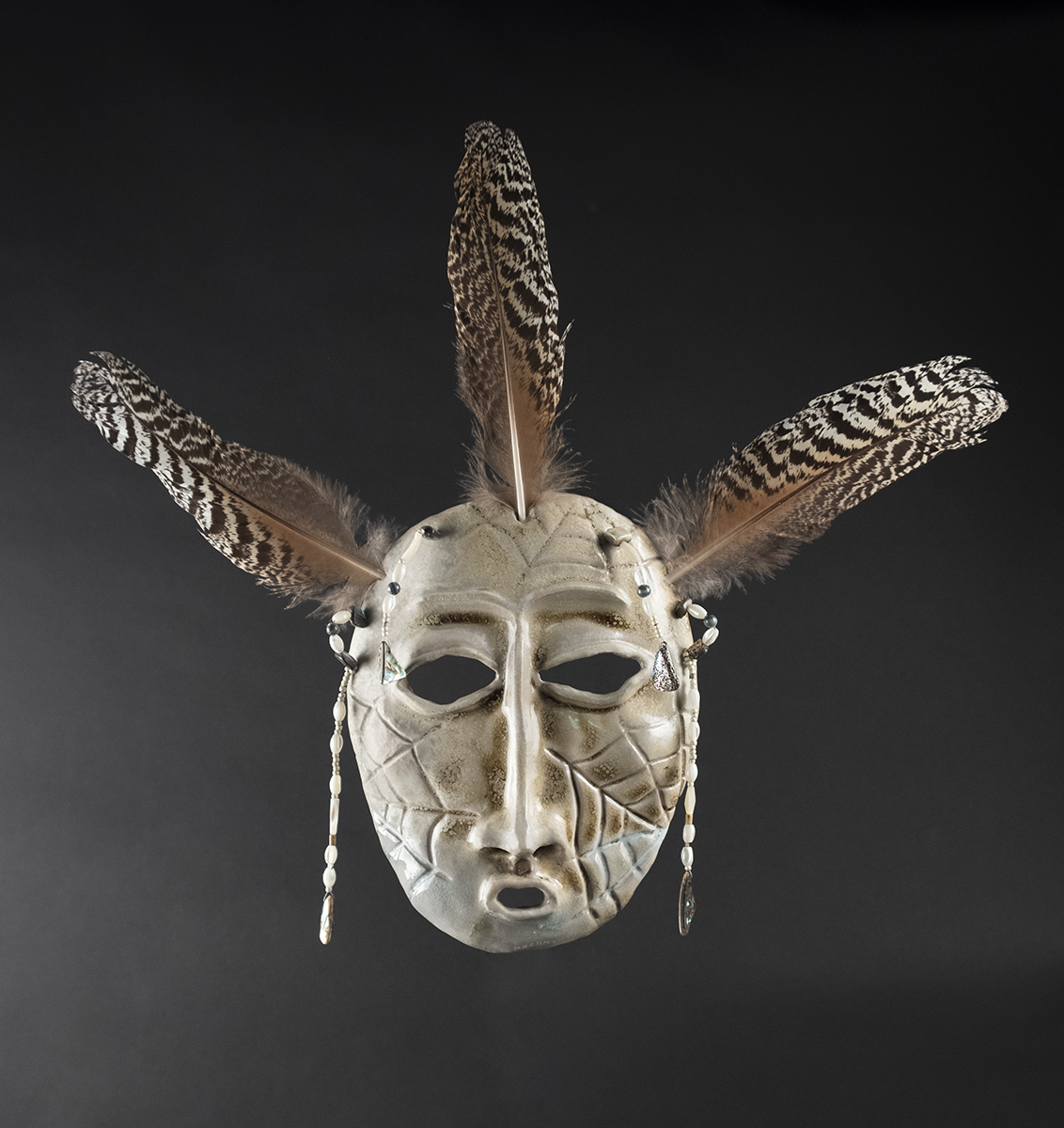 Spider WomanAnagama Fired Clay, Peacock Feathers, Beads, Shells
Spider WomanAnagama Fired Clay, Peacock Feathers, Beads, Shells- 15"h
- 17.25"w
- 2"d
SOLD -
 Blue CoyoteCast Glass, Metal Base
Blue CoyoteCast Glass, Metal Base- 20"h
- 7.5"w
- 4.75"d
SOLD -
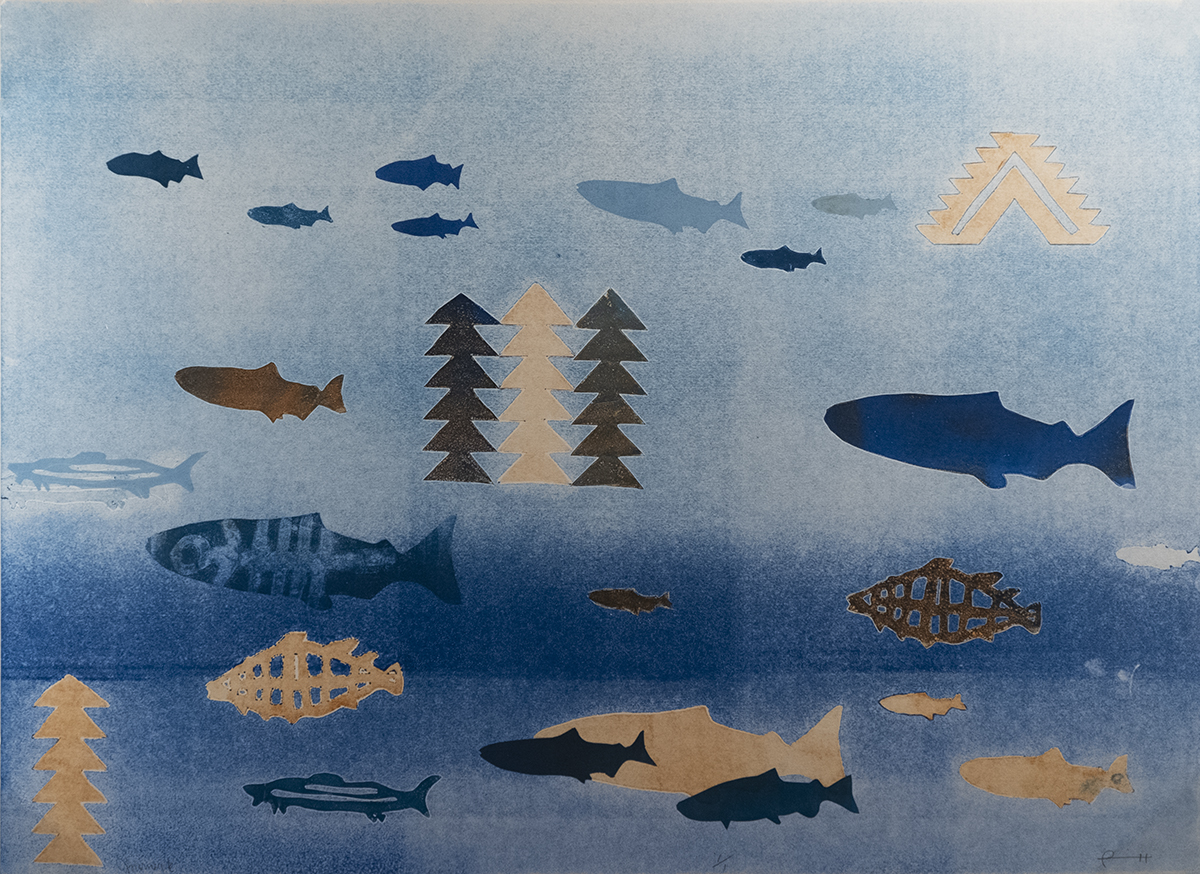 Journey #6Monoprint on Rives Paper
Journey #6Monoprint on Rives Paper- 22.25"h
- 30"w
SOLD -
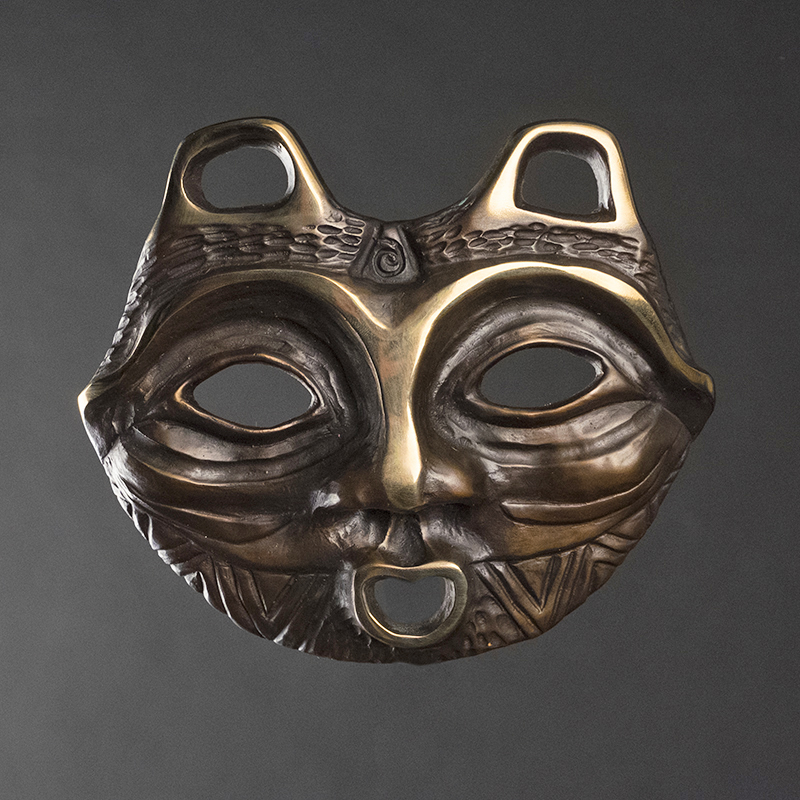 She Who WatchesLimited Edition Bronze
She Who WatchesLimited Edition Bronze- 4.88"h
- 5.63"w
- .75"d
SOLD -
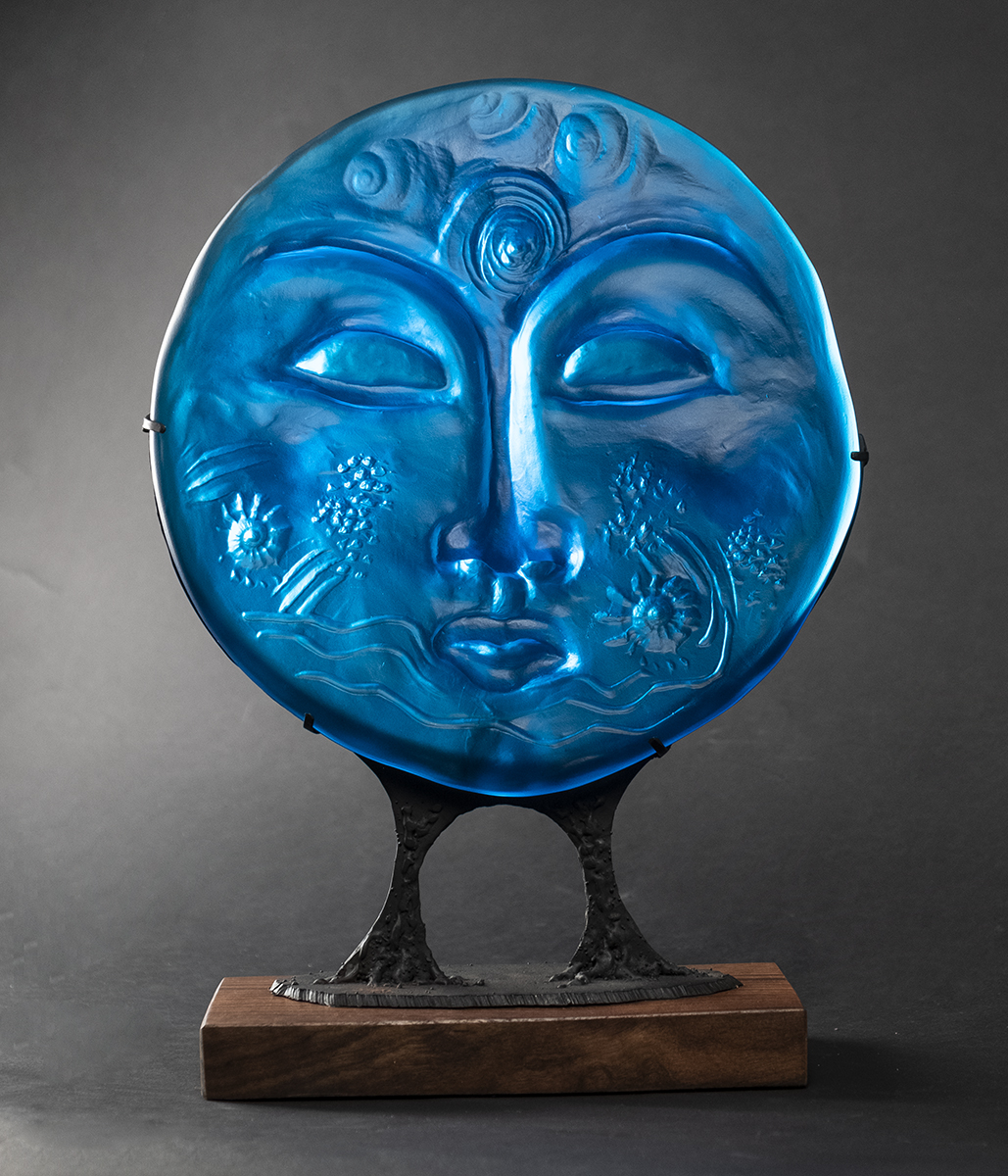 River GuardianCast Glass in Iron and Wood Stand
River GuardianCast Glass in Iron and Wood Stand- 18"h
- 12"w
- 5.13"d
SOLD -
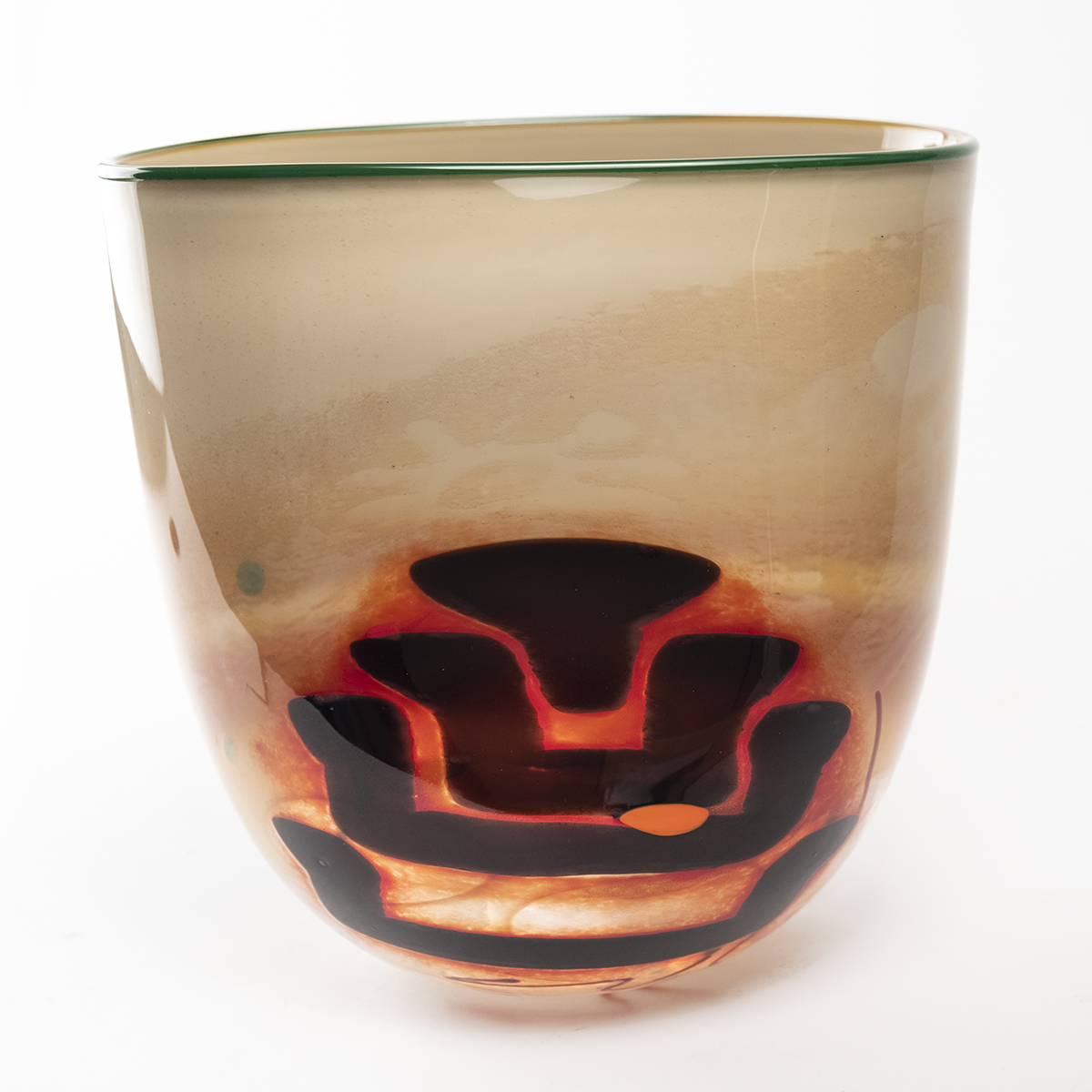 Columbia River Spirits Vessel – Collaboration with Dan FridayBlown and Fused Glass
Columbia River Spirits Vessel – Collaboration with Dan FridayBlown and Fused Glass- 9.75"h
- 10.13"w
- 7.13"d
SOLD -
 She Who Watches Vessel – Collaboration with Dan FridayBlown, Hotsculpted and Fused Glass
She Who Watches Vessel – Collaboration with Dan FridayBlown, Hotsculpted and Fused Glass- 8"h
- 8"w
- 6.5"d
SOLD -
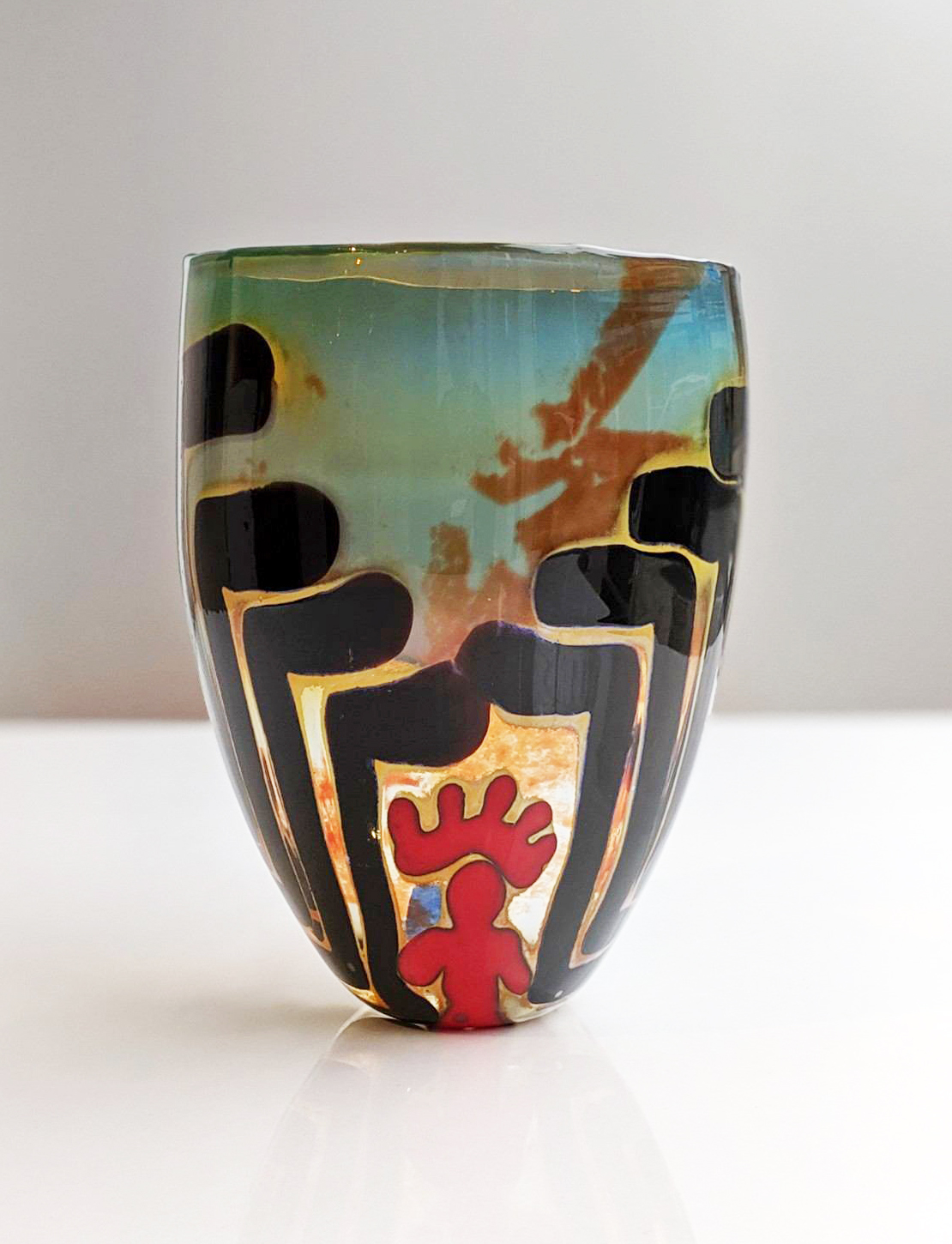 Sunshine & Shadow Spirits Vessel – Collaboration with Dan FridayBlown, Hotsculpted and Fused Glass
Sunshine & Shadow Spirits Vessel – Collaboration with Dan FridayBlown, Hotsculpted and Fused Glass- 8"h
- 6"w
- 6"d
SOLD -
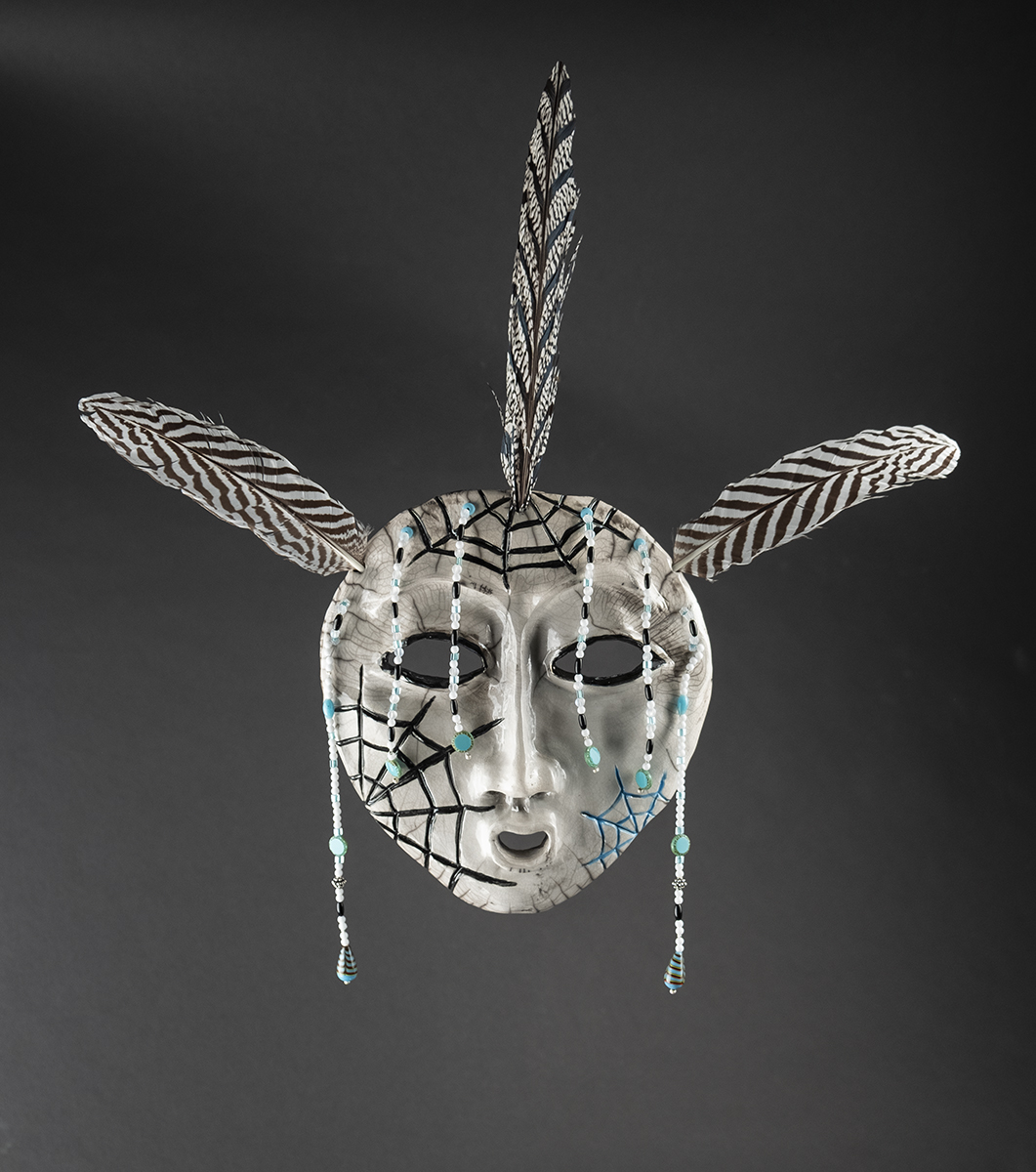 Spider WomanRaku, Beads, Feathers
Spider WomanRaku, Beads, Feathers- 19"h
- 18"w
- 1.5"d
SOLD -
 Wily CoyoteRaku, Beads
Wily CoyoteRaku, Beads- 10.5"h
- 7"w
- 2"d
SOLD -
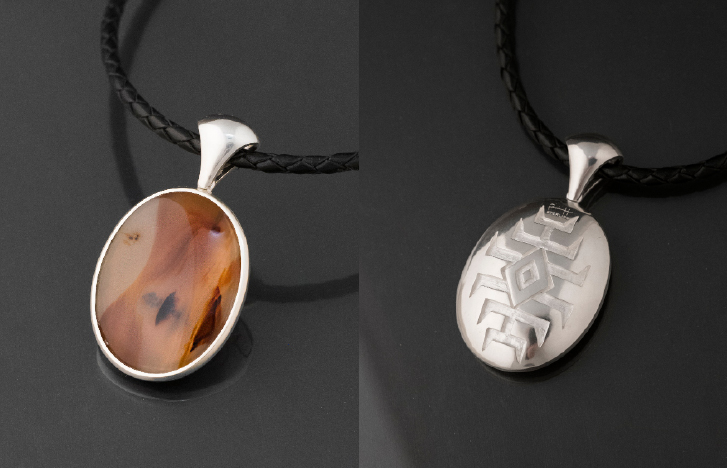 Montana Agate Reversible PendantMontana Agate, Sterling Silver, Woven Leather CordSOLD
Montana Agate Reversible PendantMontana Agate, Sterling Silver, Woven Leather CordSOLD -
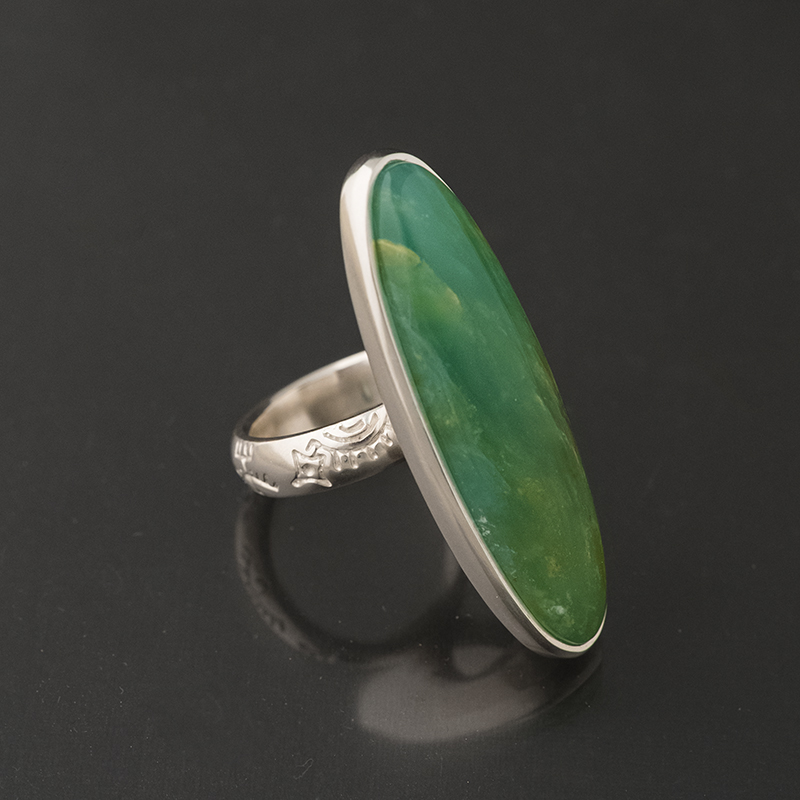 Andean Opal on Eternity RingAndean Opal on Eternity Ring, Sterling Silver -- Size 8SOLD
Andean Opal on Eternity RingAndean Opal on Eternity Ring, Sterling Silver -- Size 8SOLD -
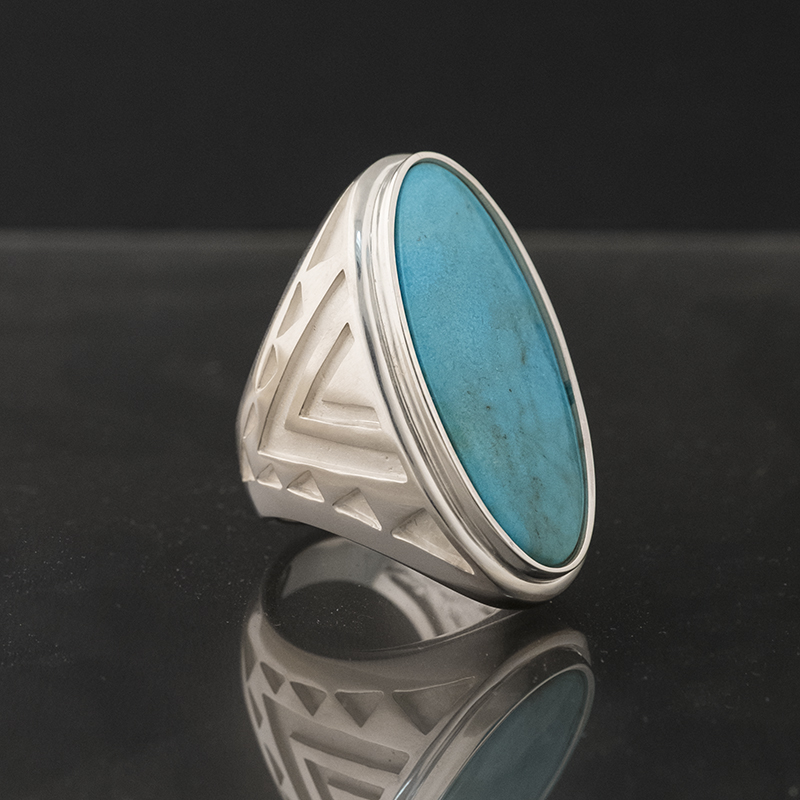 One-of-a-Kind Stone Ring – Arizona TurquoiseArizona Natural Turquoise, Hand-Cast Bezel - Size 9SOLD
One-of-a-Kind Stone Ring – Arizona TurquoiseArizona Natural Turquoise, Hand-Cast Bezel - Size 9SOLD -
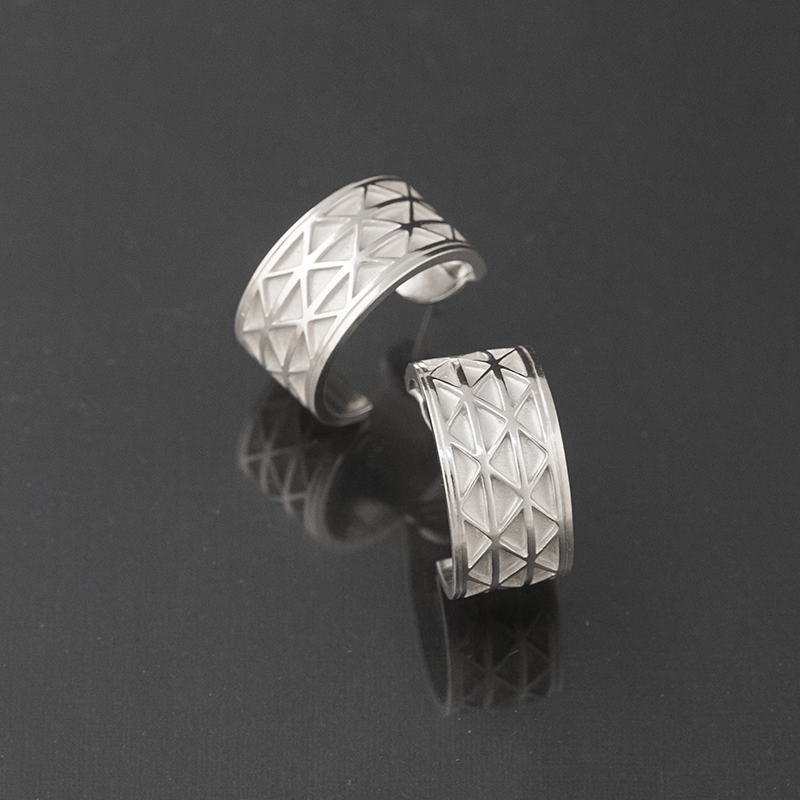 Three Rows of Mountains EarringsSterling SilverSOLD
Three Rows of Mountains EarringsSterling SilverSOLD -
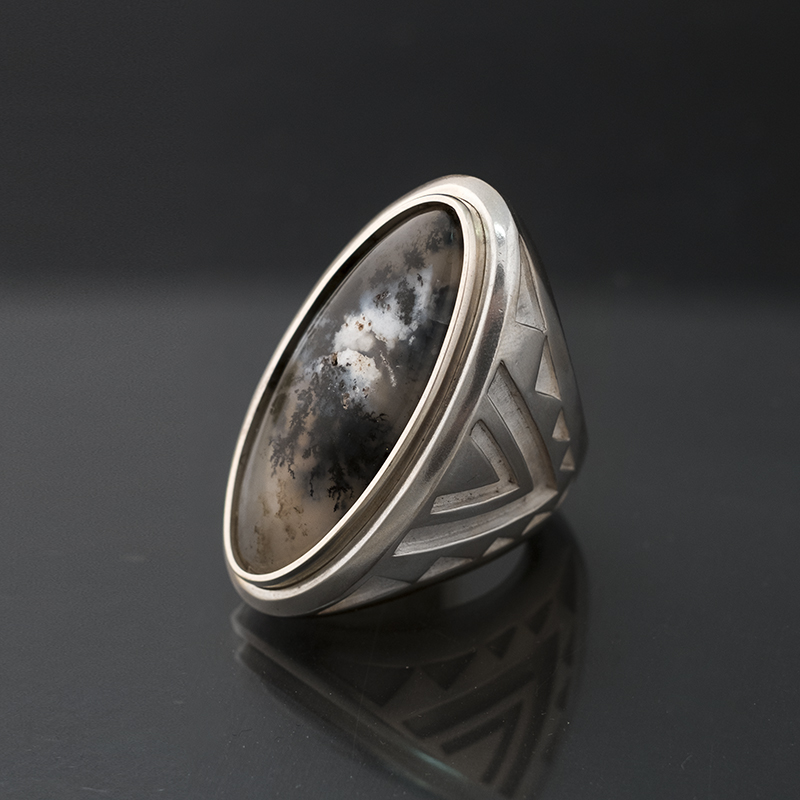 Lacy Agate RingSterling Silver, Lacy Agate - Size 7.75SOLD
Lacy Agate RingSterling Silver, Lacy Agate - Size 7.75SOLD -
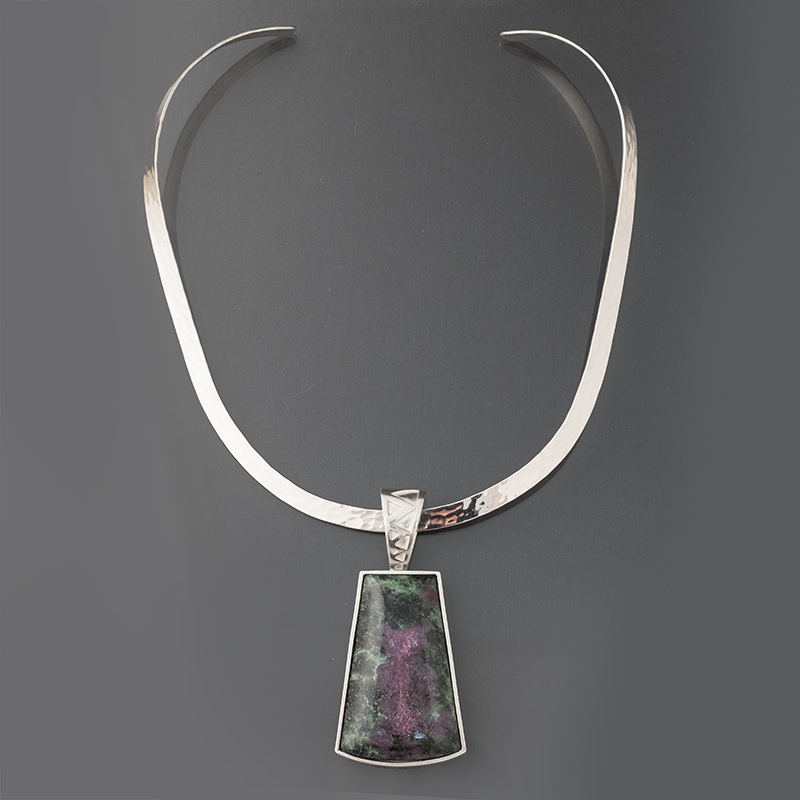 Ruby Zoisite Pendant with Hammered CollarHand-Hammered Sterling Silver, Ruby ZoisiteSOLD
Ruby Zoisite Pendant with Hammered CollarHand-Hammered Sterling Silver, Ruby ZoisiteSOLD -
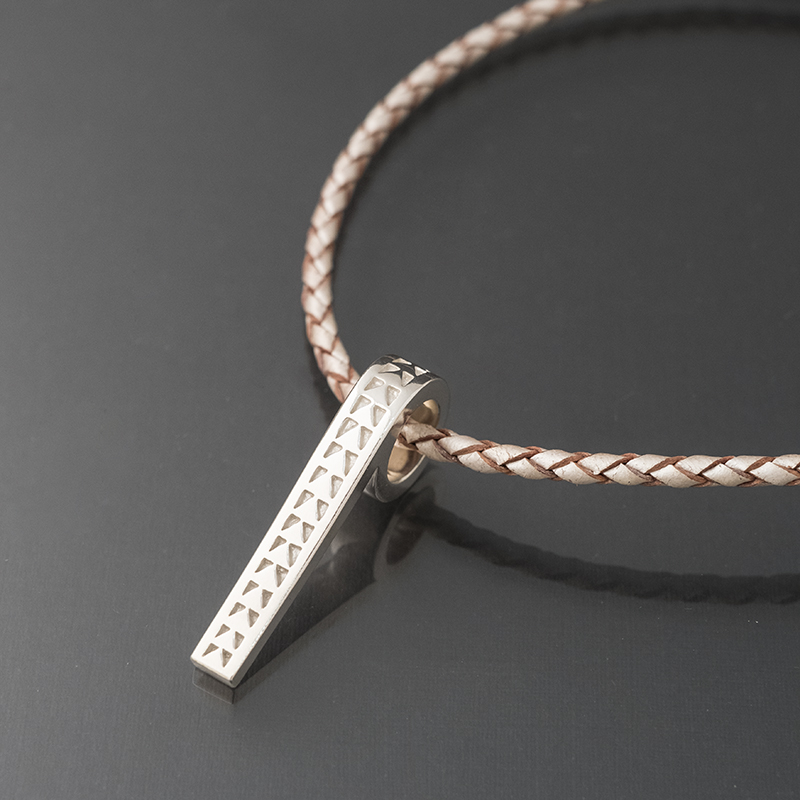 Basket Weave Pendant on Woven ChainSterling Silver, Leather CordSOLD
Basket Weave Pendant on Woven ChainSterling Silver, Leather CordSOLD -
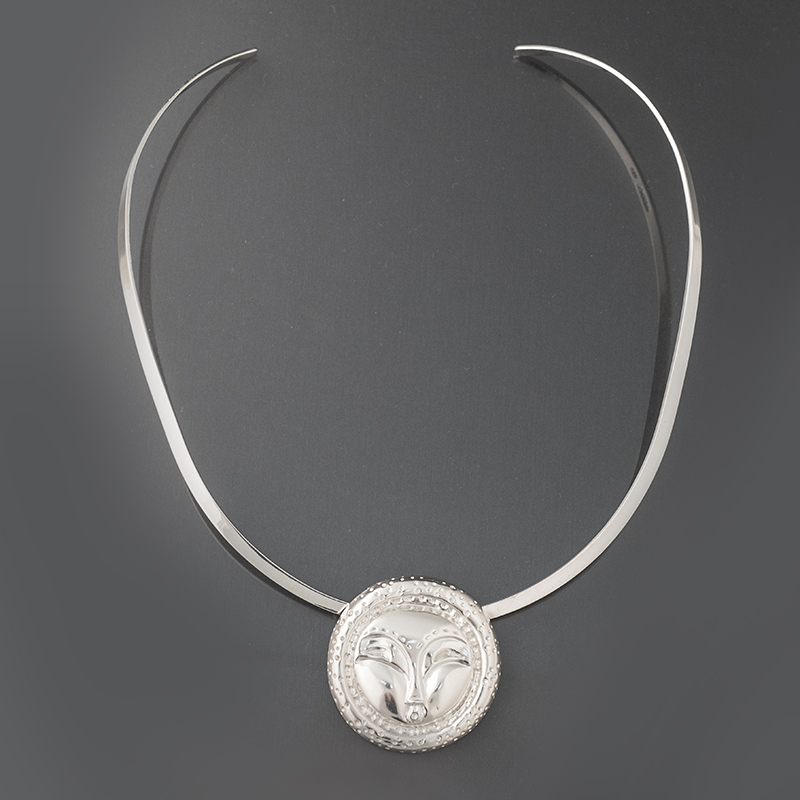 Grandmother Moon Pin/PendantSterling SilverSOLD
Grandmother Moon Pin/PendantSterling SilverSOLD -
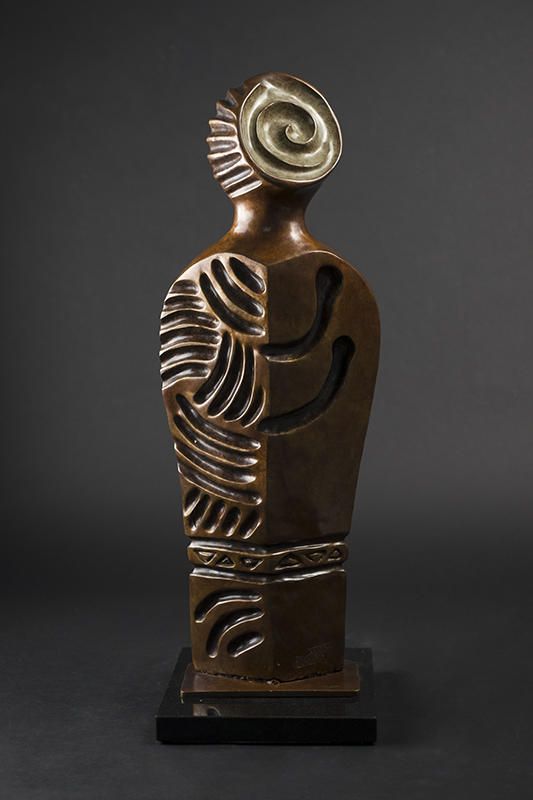 DreamerCast Bronze on Base
DreamerCast Bronze on Base- 23"h
- 7.5"w
- 7.5"d
SOLD -
 Shadow Spirit Visiting Stick IndianAnagama-Fired Clay, Feathers, Beads
Shadow Spirit Visiting Stick IndianAnagama-Fired Clay, Feathers, Beads- 10"h
- 7.75"w
- 2"d
SOLD -
 Jasper Stone Pendant on Leather CordJasper, Sterling Siver, Leather Cord
Jasper Stone Pendant on Leather CordJasper, Sterling Siver, Leather Cord- 2.88"h
- 1.38"w
SOLD -
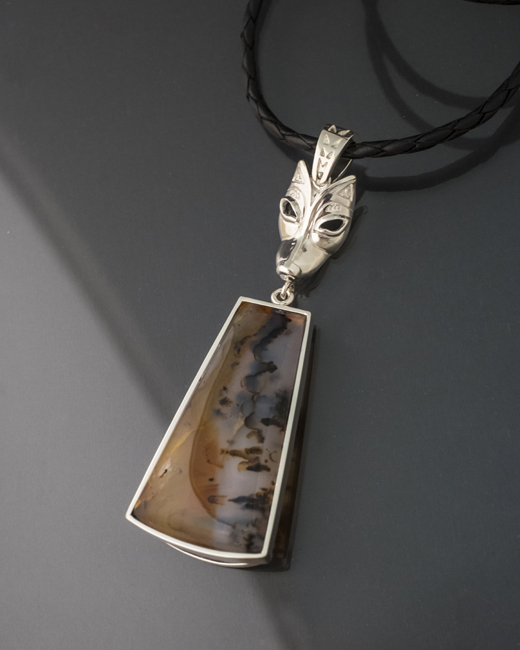 Coyote and Montana Agate Pendant on CordMontana Agate, Sterling Silver, Leather Cord
Coyote and Montana Agate Pendant on CordMontana Agate, Sterling Silver, Leather Cord- 3.25"h
- 1.13"w
SOLD -
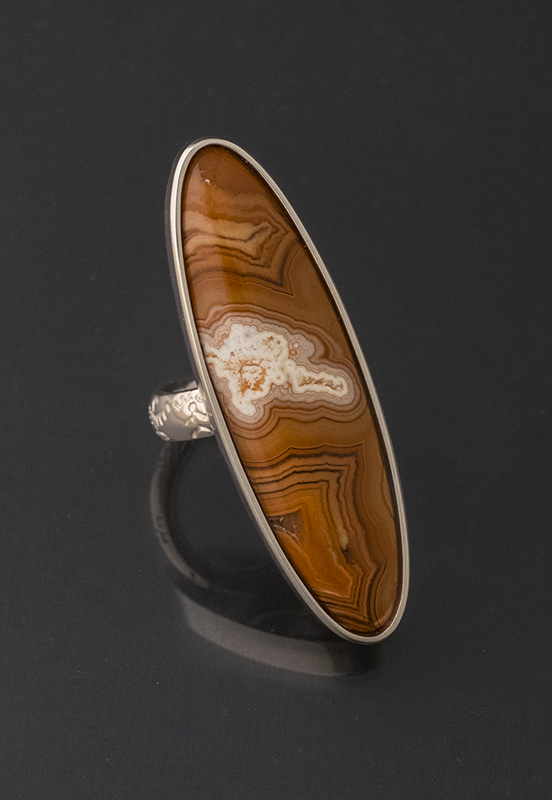 Dry Head Lake Jasper Ring – Size 7.75Dry Head Lake Jasper, Handmade Bezel Sterling Silver
Dry Head Lake Jasper Ring – Size 7.75Dry Head Lake Jasper, Handmade Bezel Sterling Silver- 2.25"h
SOLD -
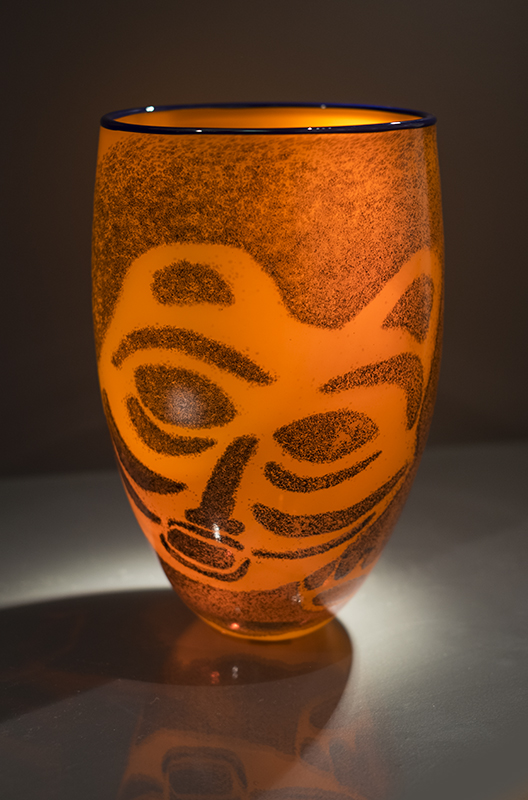 She Who Watches – Collaboration with Dan FridayBlown and Fused Glass
She Who Watches – Collaboration with Dan FridayBlown and Fused Glass- 12"h
- 8"w
- 8"d
SOLD -
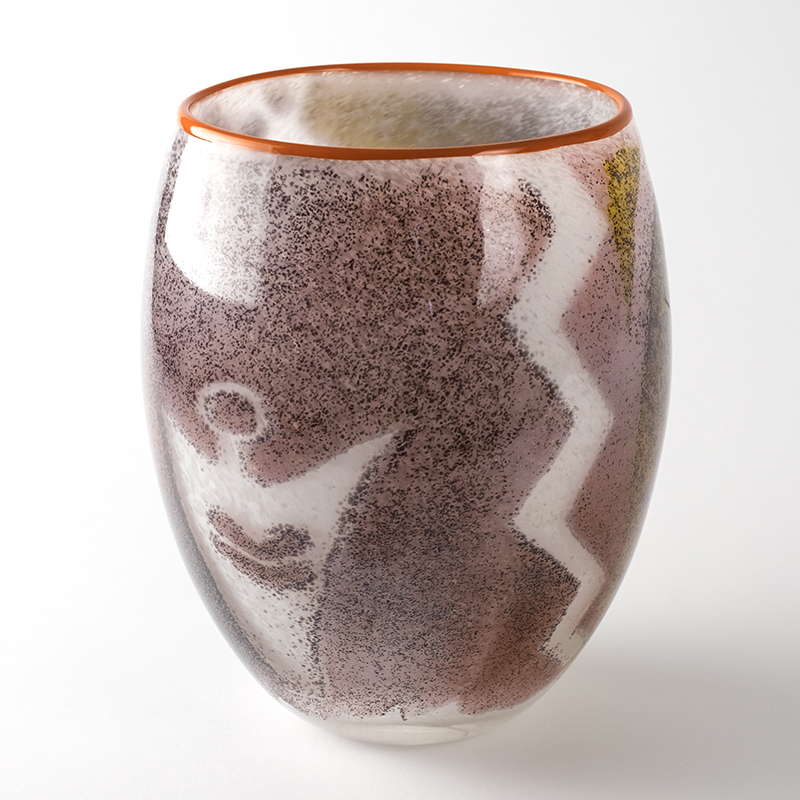 Gorge Spirits – Collaboration with Dan FridayBlown and Fused Glass
Gorge Spirits – Collaboration with Dan FridayBlown and Fused Glass- 9"h
- 7"w
- 7"d
SOLD -
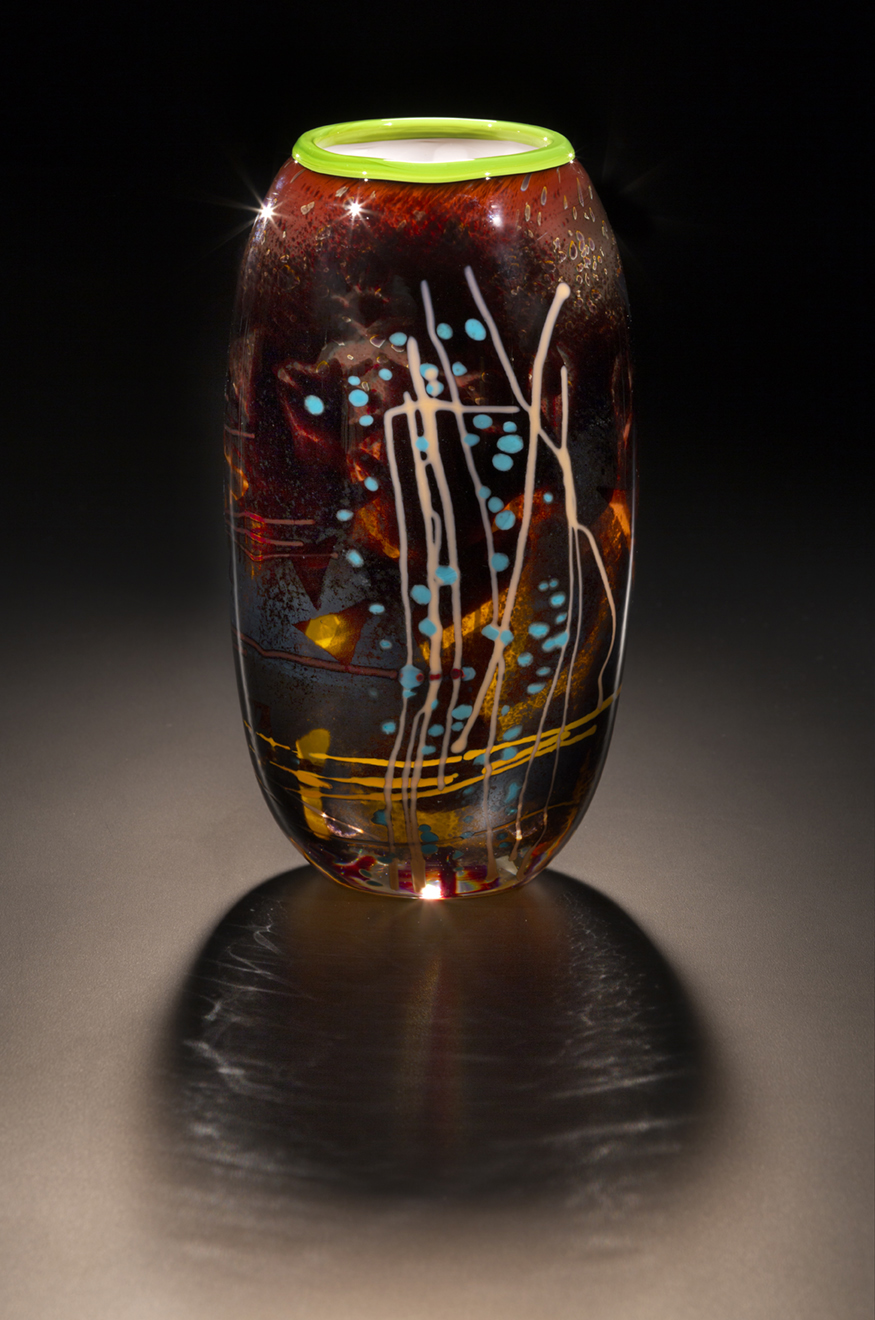 Firelight – Sally Bag #13 – Collaboration with Dan FridayBlown and Fused Glass
Firelight – Sally Bag #13 – Collaboration with Dan FridayBlown and Fused Glass- 11.5"h
- 5"w
- 5"d
SOLD -
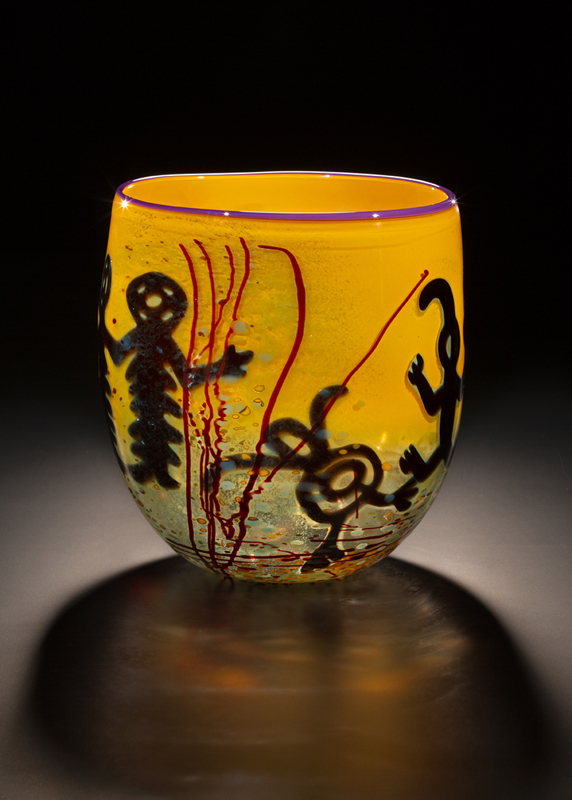 Family Spirits – Collaboration with Dan FridayBlown and Fused Glass
Family Spirits – Collaboration with Dan FridayBlown and Fused Glass- 13.75"h
- 13.5"w
- 11.5"d
SOLD -
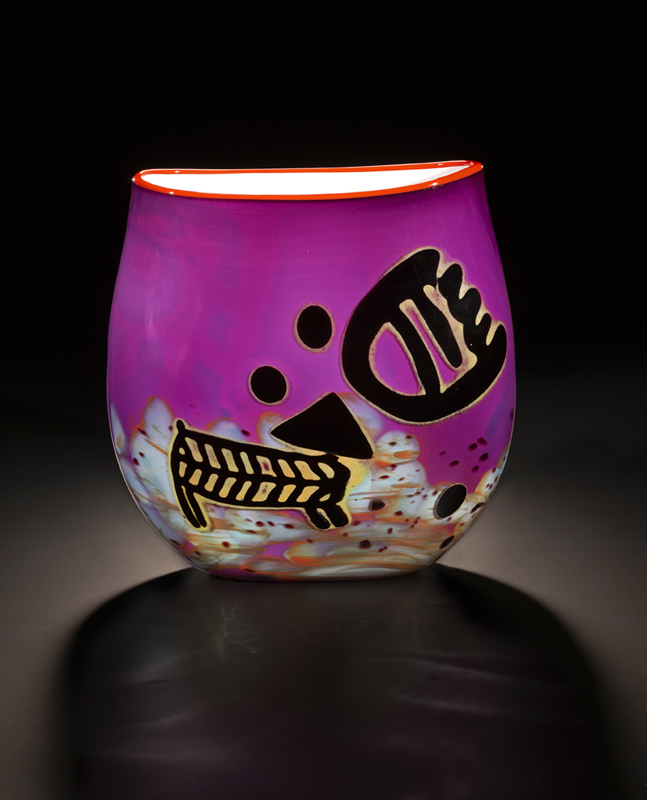 Violet Sky – Collaboration with Dan FridayBlown and Fused Glass
Violet Sky – Collaboration with Dan FridayBlown and Fused Glass- 14.13"h
- 14"w
- 5.5"d
SOLD -
 Brush Fire – Sally Bag #4 – Collaboration with Dan FridayBlown and Fused Glass
Brush Fire – Sally Bag #4 – Collaboration with Dan FridayBlown and Fused Glass- 20.75"h
- 9"w
- 9"d
SOLD -
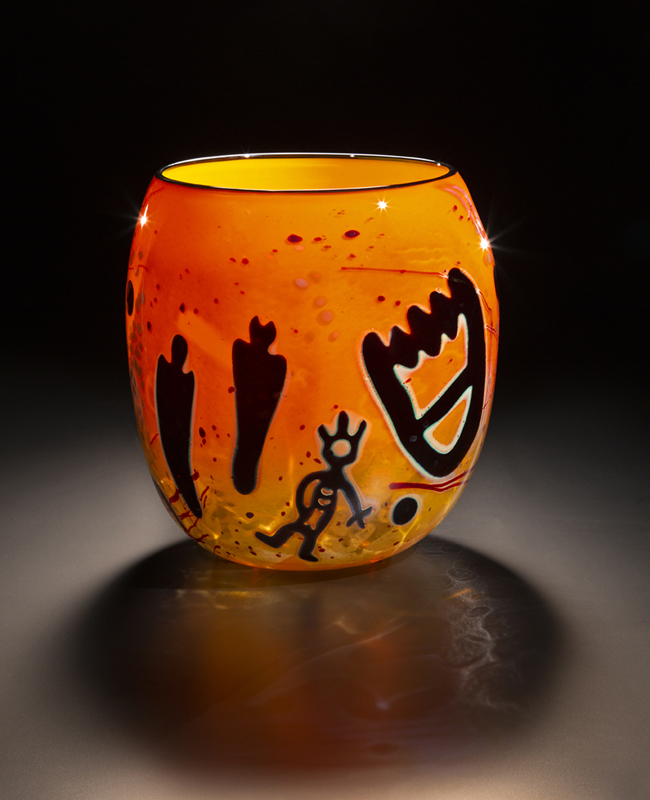 High Summer – Sally Bag #1 – Collaboration with Dan FridayBlown and Fused Glass
High Summer – Sally Bag #1 – Collaboration with Dan FridayBlown and Fused Glass- 15.75"h
- 15.13"w
- 15.13"d
SOLD -
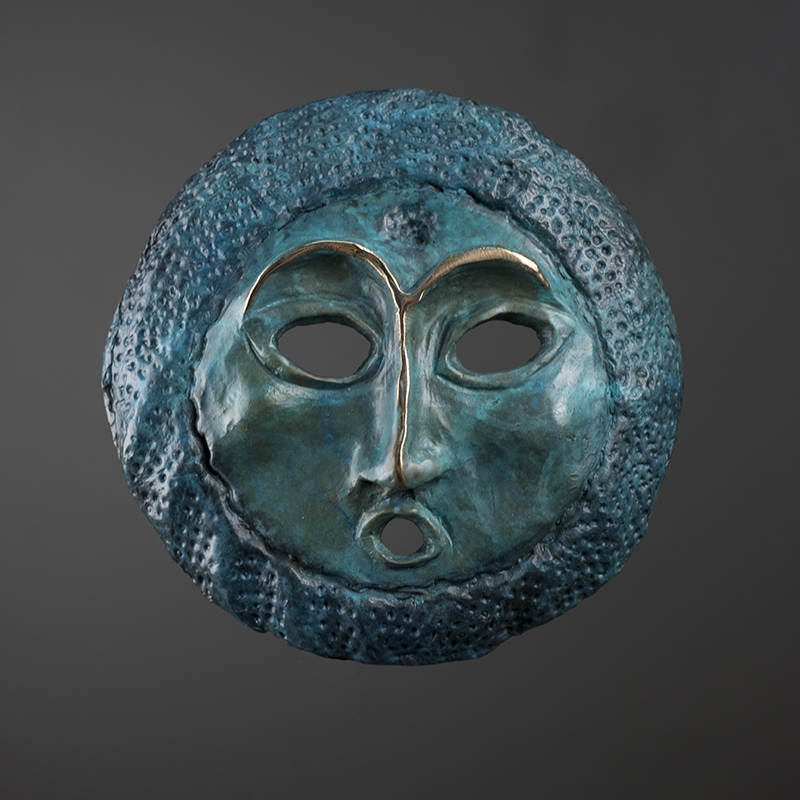 Baby Moon Stick IndianLimited Edition Cast Bronze
Baby Moon Stick IndianLimited Edition Cast Bronze- 4.25"h
- 4.25"w
SOLD -
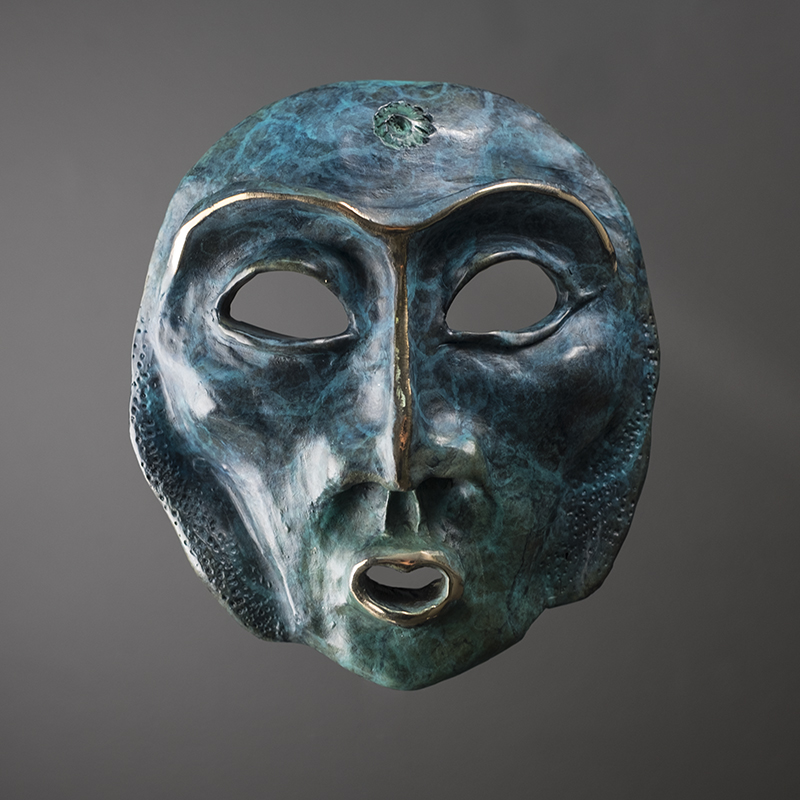 Kimsah Stick IndianLimited Edition Cast Bronze
Kimsah Stick IndianLimited Edition Cast Bronze- 8"h
- 6.5"w
- 2"d
SOLD -
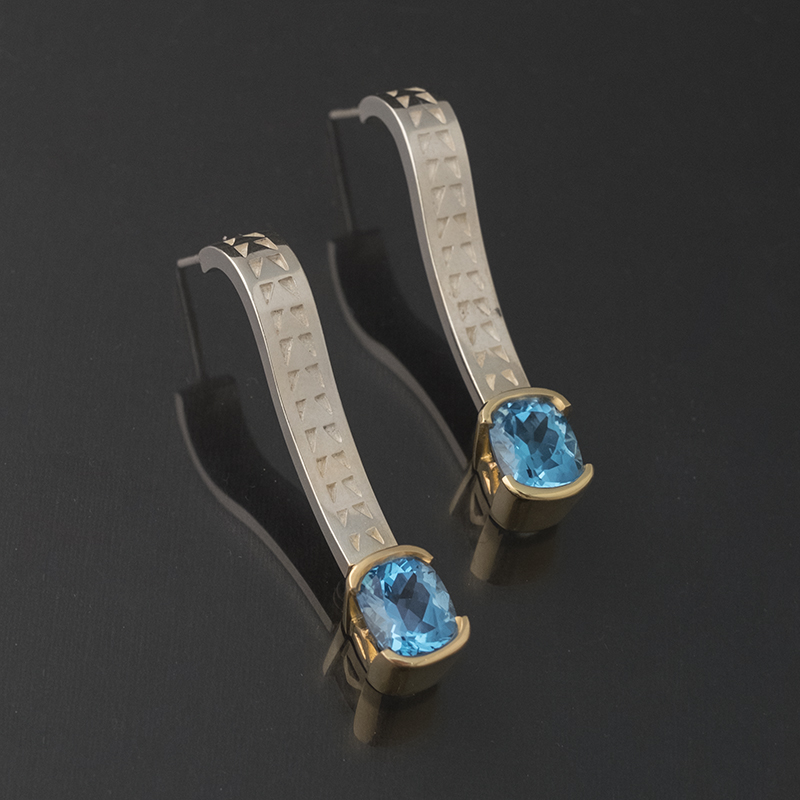 Basket Weave Earrings with TopazSterling Silver, 14k Gold, Topaz
Basket Weave Earrings with TopazSterling Silver, 14k Gold, Topaz- 1.88"h
- .38"w
- .38"d
SOLD -
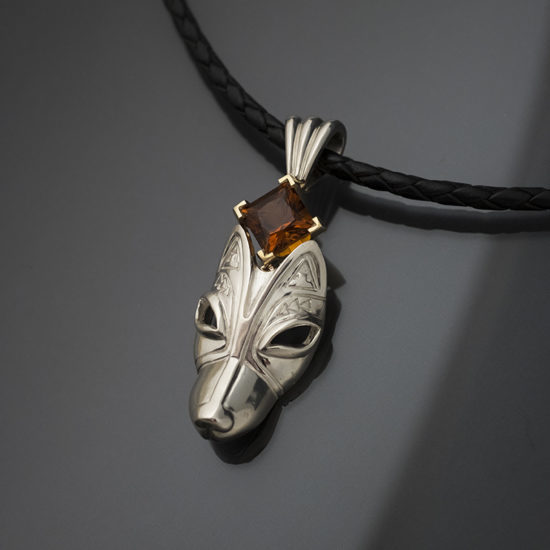 Coyote Pendant with CitrineSterling Silver, Citrine, Leather CordSOLD
Coyote Pendant with CitrineSterling Silver, Citrine, Leather CordSOLD -
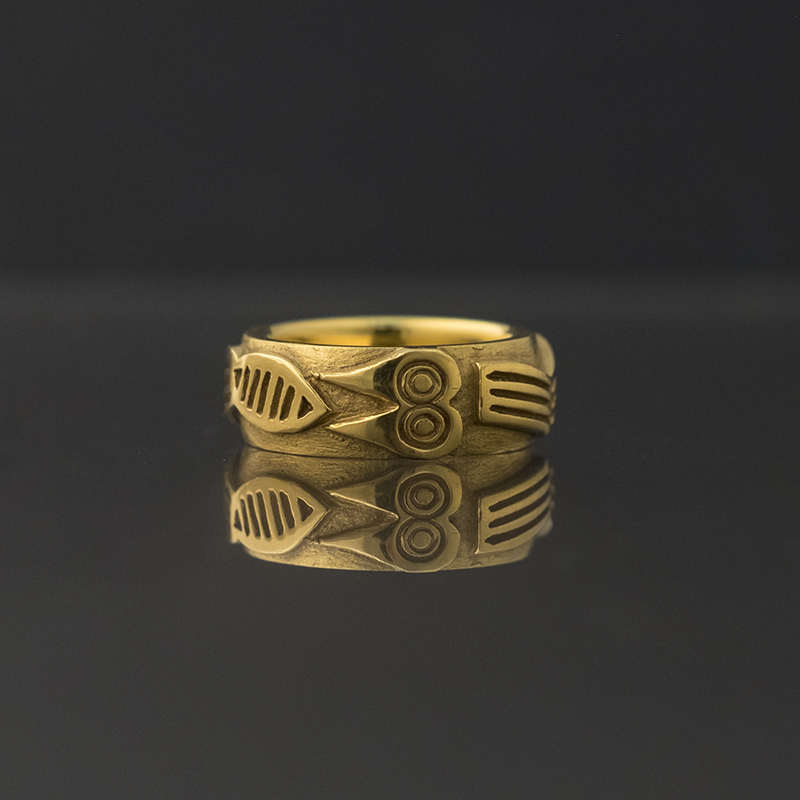 Gold Water Serpent Ring18kt Yellow Gold, Size 6SOLD
Gold Water Serpent Ring18kt Yellow Gold, Size 6SOLD -
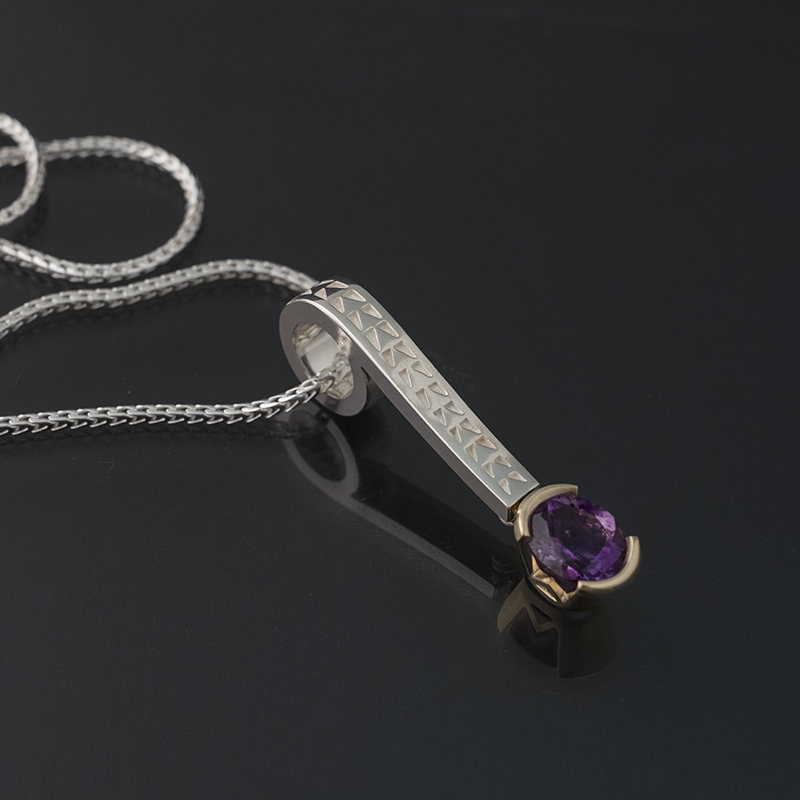 Basket Design Pendant with AmethystSterling Silver, Amethyst, 18kt Bezel on 24" Silver ChainSOLD
Basket Design Pendant with AmethystSterling Silver, Amethyst, 18kt Bezel on 24" Silver ChainSOLD -
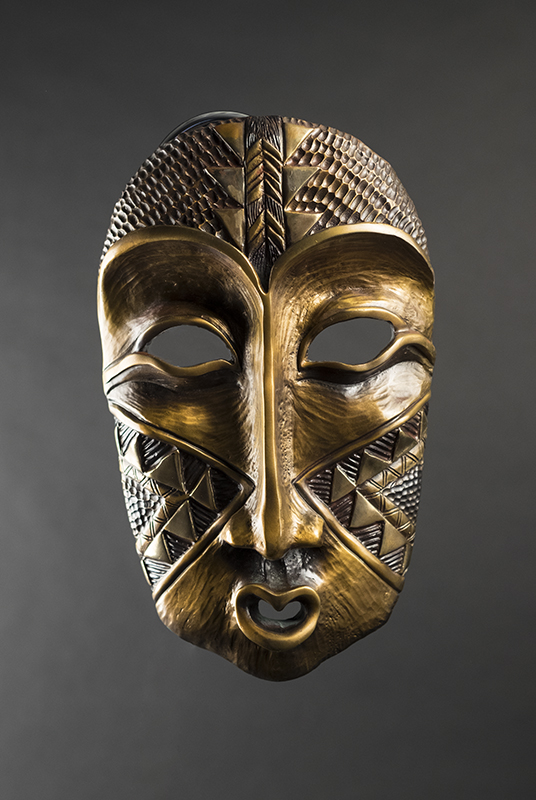 Wasco Stick IndianLimited Edition Cast and Patinated Bronze
Wasco Stick IndianLimited Edition Cast and Patinated Bronze- 11.5"h
- 6.75"w
- 2.75"d
SOLD -
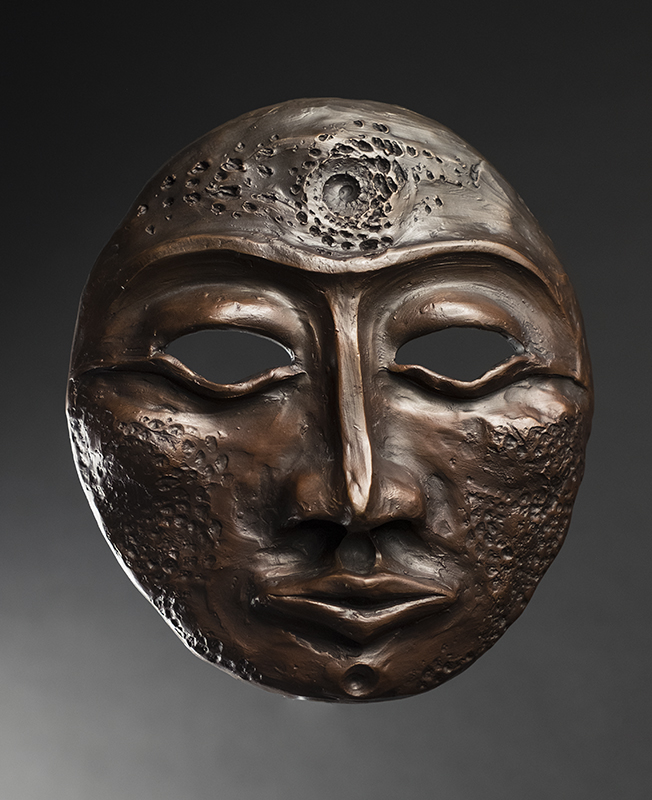 Ancestral SpiritLimited Edition Bronze
Ancestral SpiritLimited Edition Bronze- 10"h
- 8"w
- 3"d
SOLD -
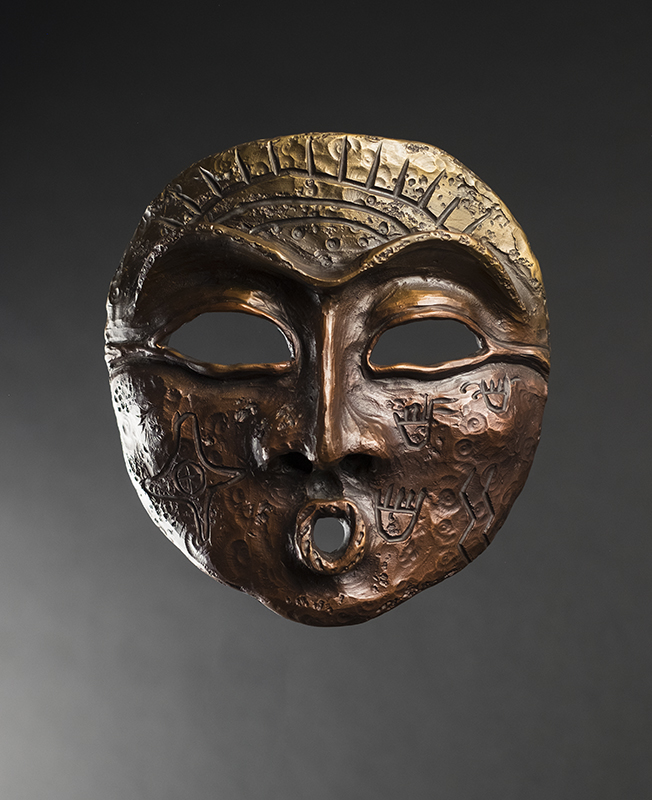 Ancient OneLimited Edition Cast and Patinated Bronze
Ancient OneLimited Edition Cast and Patinated Bronze- 8.25"h
- 7.5"w
- 3"d
SOLD -
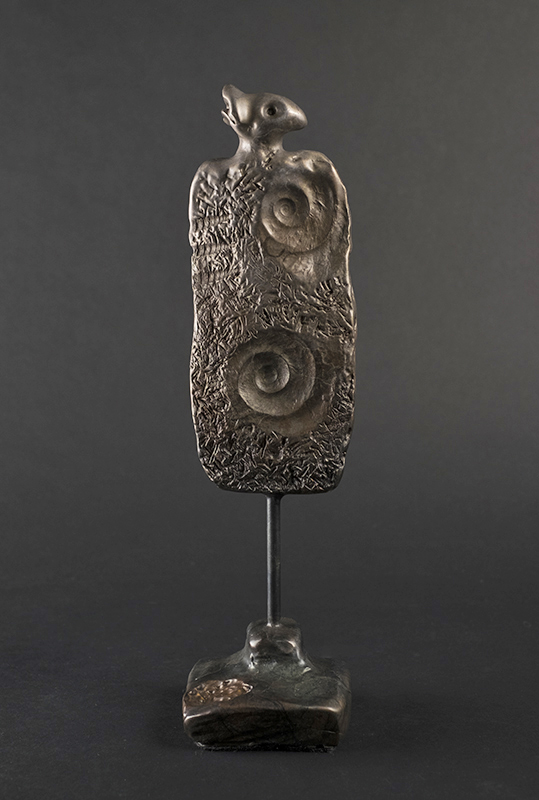 Shadow Spirit Feeling the Impressions of NatureLimited Edition Cast Bronze
Shadow Spirit Feeling the Impressions of NatureLimited Edition Cast Bronze- 12"h
- 3"w
- 3.5"d
SOLD -
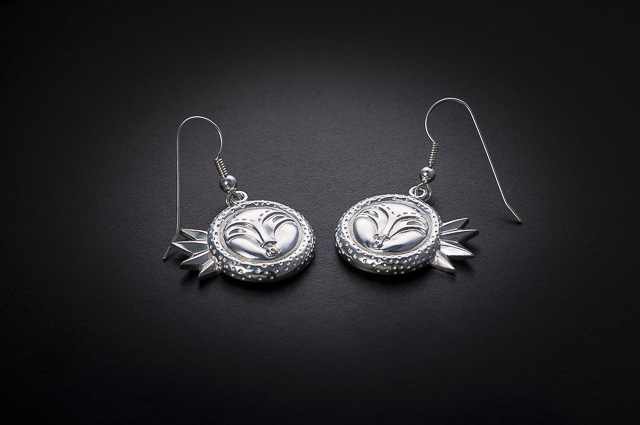 Custom Eclipse EarringsSterling SilverSOLD
Custom Eclipse EarringsSterling SilverSOLD -
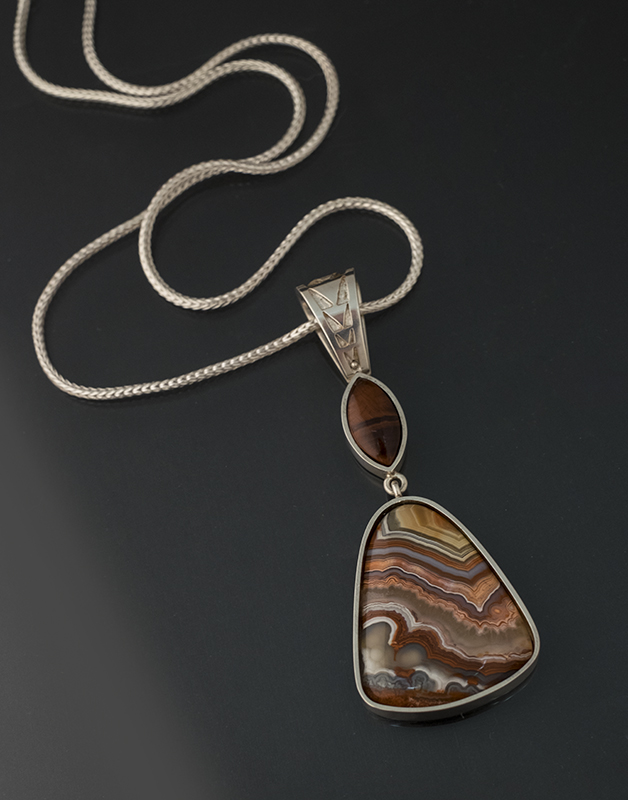 Oregon Coast Jasper and Agate PendantSterling Silver, Agate, Oregon Coast JasperSOLD
Oregon Coast Jasper and Agate PendantSterling Silver, Agate, Oregon Coast JasperSOLD -
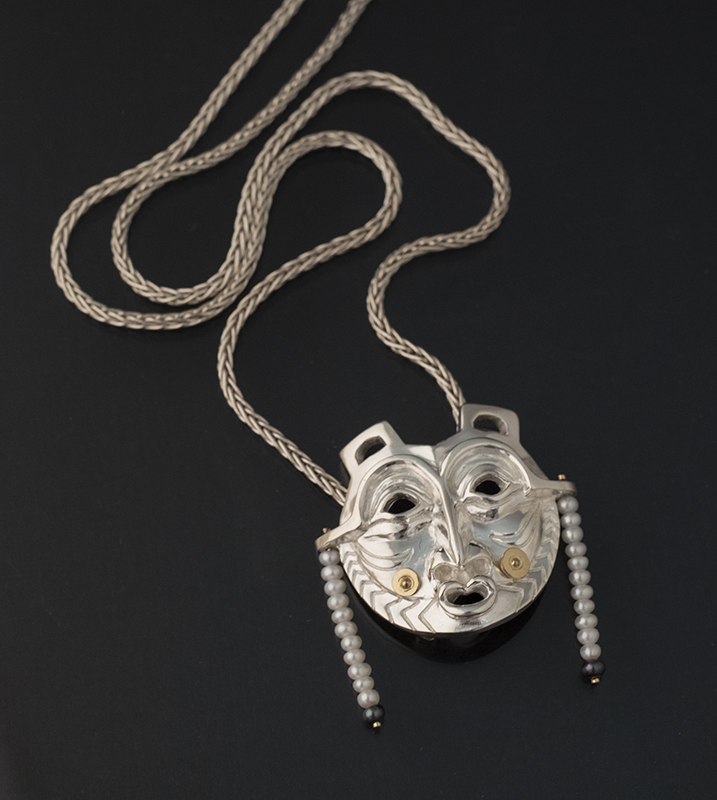 She Who Watches Pendant with Pearls (Chain not included in Price)Sterling Silver, 14k Gold Discs, PearlsSOLD
She Who Watches Pendant with Pearls (Chain not included in Price)Sterling Silver, 14k Gold Discs, PearlsSOLD -
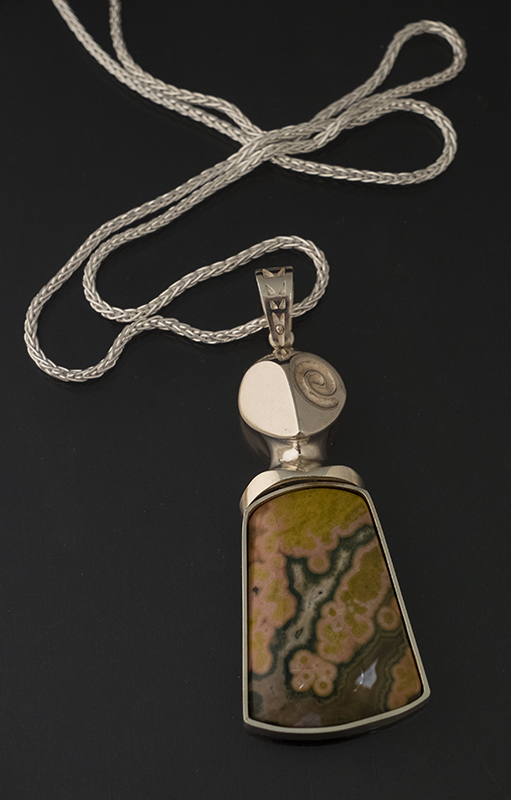 Shadow Spirit Pendant with Oregon Coast JasperSterling Silver, Oregon Coast JasperSOLD
Shadow Spirit Pendant with Oregon Coast JasperSterling Silver, Oregon Coast JasperSOLD -
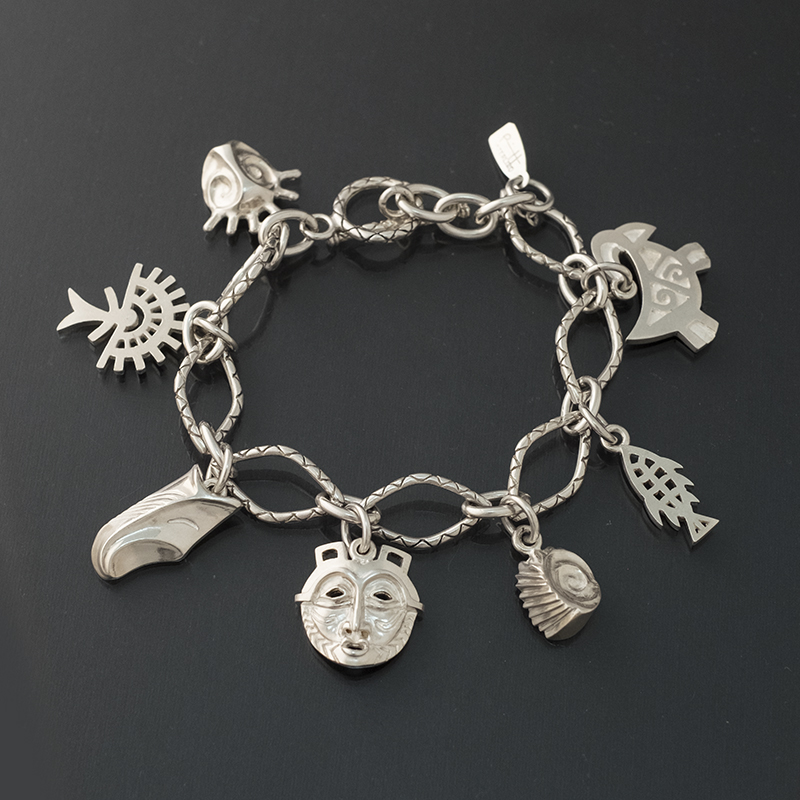 Charm BraceletSterling SilverSOLD
Charm BraceletSterling SilverSOLD -
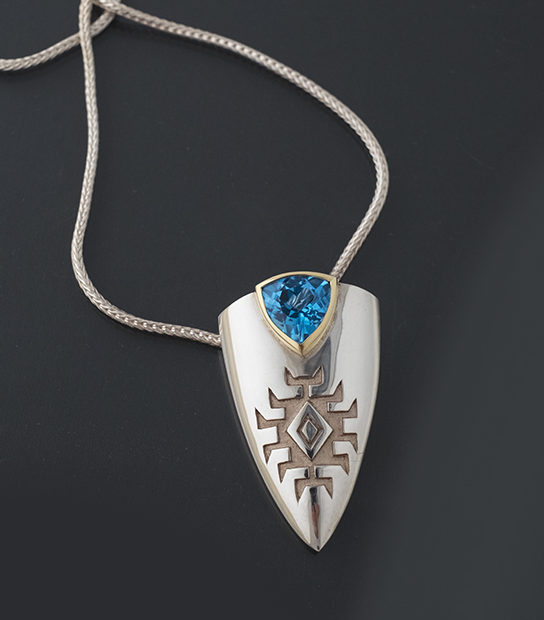 Shield Pendant with Basket Pattern – One-of-a-KindSterling Silver, 18k Gold Bezel, Topaz
Shield Pendant with Basket Pattern – One-of-a-KindSterling Silver, 18k Gold Bezel, Topaz- 2"h
- 1.13"w
SOLD -
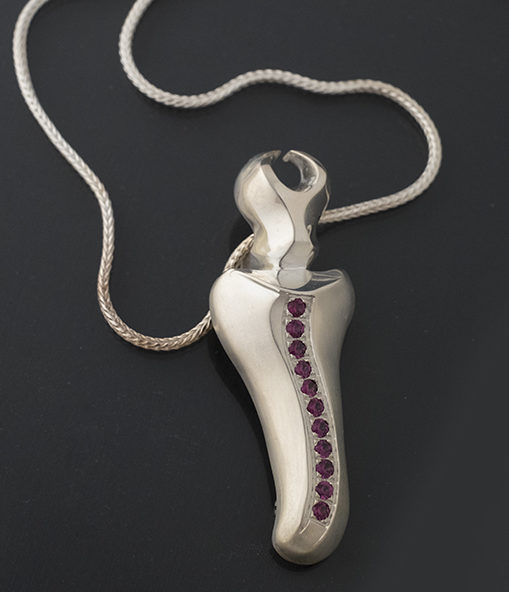 New Shadow Spirit Pendant/Pin with Grape Garnets – One-of-a-KindSterling Silver, Grape Garnets
New Shadow Spirit Pendant/Pin with Grape Garnets – One-of-a-KindSterling Silver, Grape Garnets- 3"h
- 1"w
SOLD -
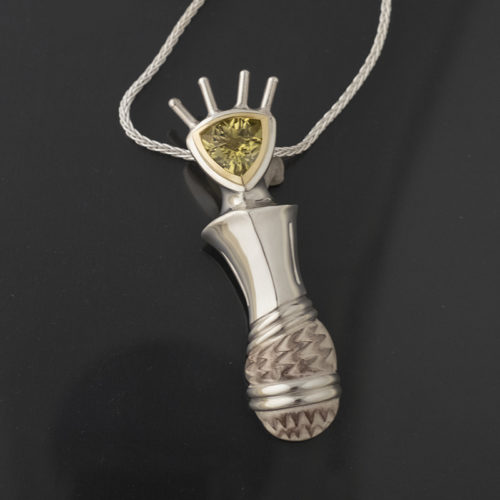 Shadow Spirit Pendant with Citrine – One-of-a-KindSterling Silver, 18k Gold Bezel, Citrine
Shadow Spirit Pendant with Citrine – One-of-a-KindSterling Silver, 18k Gold Bezel, Citrine- 3"h
SOLD -
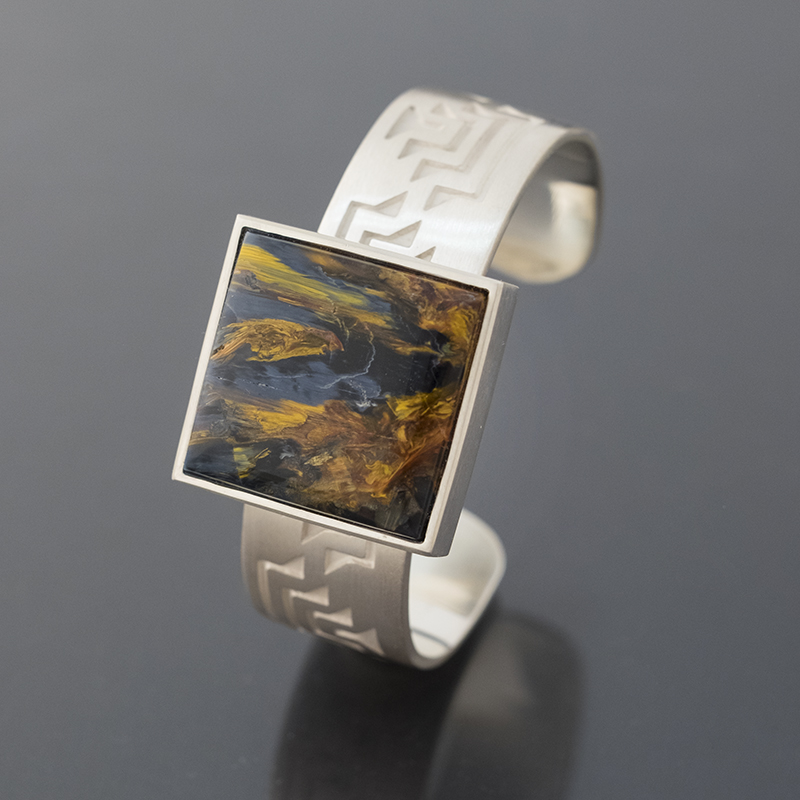 Salmon Gill Cuff with Jasper – One-of-a-KindSterling Silver, Jasper
Salmon Gill Cuff with Jasper – One-of-a-KindSterling Silver, Jasper- Click for dimensions"h
SOLD -
 Spirit Bird Ring with Garnets – One-of-a-KindSterling Silver, 14k Gold, Grape GarnetsSOLD
Spirit Bird Ring with Garnets – One-of-a-KindSterling Silver, 14k Gold, Grape GarnetsSOLD -
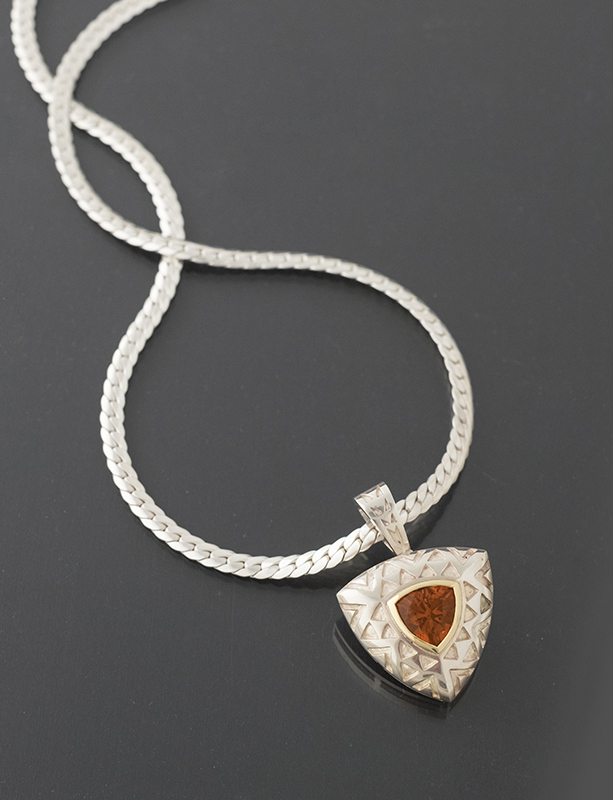 Pendant with Mexican Opal – One-of-a-KindSterling Silver, Mexican Opal
Pendant with Mexican Opal – One-of-a-KindSterling Silver, Mexican Opal- 1.13"h
SOLD -
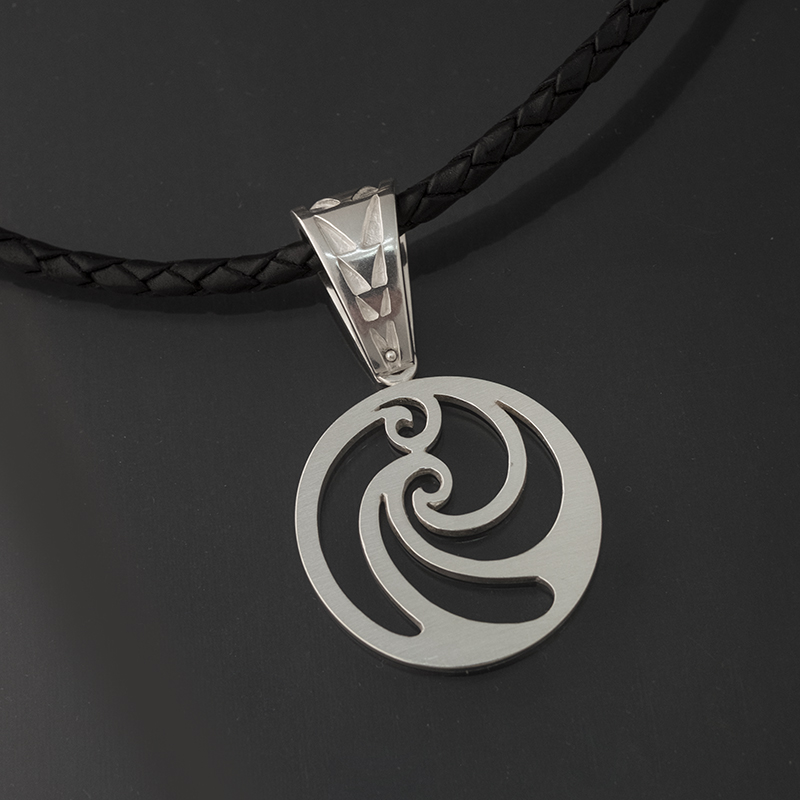 Koru (In Honor of the Māori) Pendant with Large BailSterling Silver, Braided Leather CordSOLD
Koru (In Honor of the Māori) Pendant with Large BailSterling Silver, Braided Leather CordSOLD -
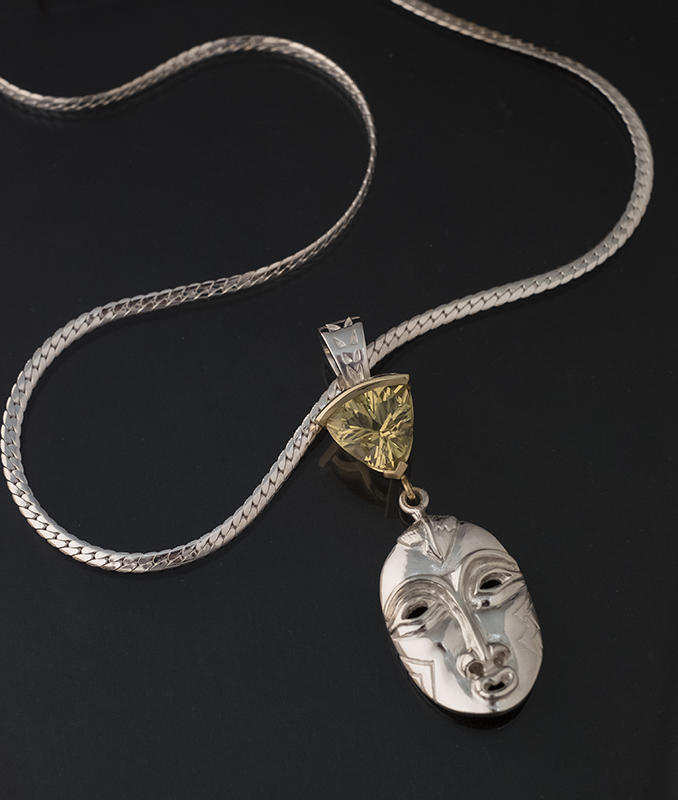 Feather Woman Pendant with Oro Verde CitrineSterling Silver, Oro Verde Citrine, 14k Gold SettingSOLD
Feather Woman Pendant with Oro Verde CitrineSterling Silver, Oro Verde Citrine, 14k Gold SettingSOLD -
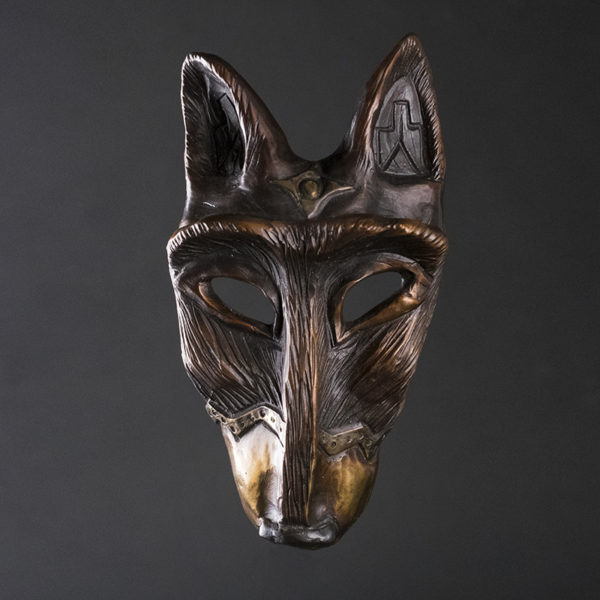 Wasco CoyoteLimited Edition Bronze
Wasco CoyoteLimited Edition Bronze- 6.63"h
- 3.75"w
- 1.63"d
SOLD -
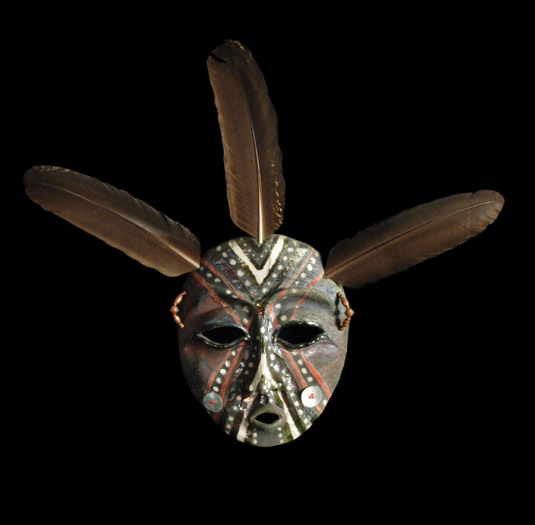 Stick Indian Healing WomanRaku, Feathers
Stick Indian Healing WomanRaku, Feathers- 18"h
- 22"w
- 1"d
SOLD -
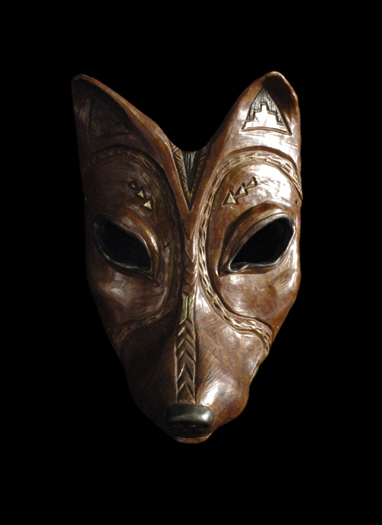 Coyote Bronze APBronze
Coyote Bronze APBronze- 12"h
- 7"w
- 4"d
SOLD -
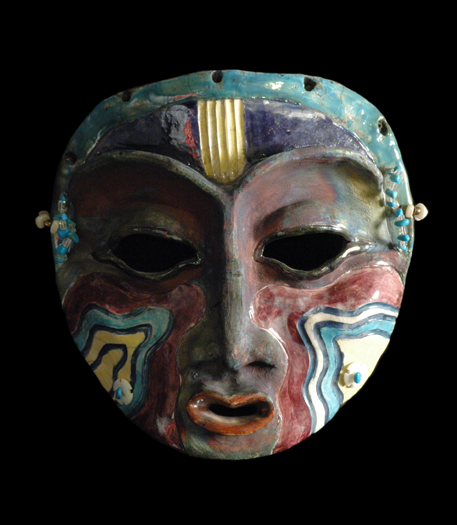 Santiam Woman MaskCeramic
Santiam Woman MaskCeramic- 9.75"h
- 10.25"w
- 3.75"d
SOLD
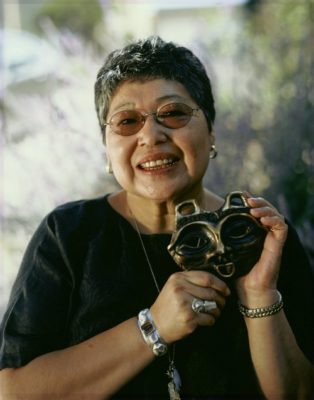
Artist Statement
“I was born of the Warm Springs Reservation in Oregon over eighty years ago. My ancestors lived in the Columbia River Gorge area for over 10,000 years. My father’s people lived on the Oregon side near the great Celilo Falls. In the mid-1800’s the government moved the Washington Wasco, Wishxam, Wanapum Indians to Yakima, then switched their names to “Yakima.” The Oregon side Wasco, Wyam, Tenino, Tygh, Watlalas, were moved to Warm Springs, Oregon, then were called the “Warm Springs” Tribe. I lived in Warm Springs with my parents for twelve years before moving fifteen miles away to Madras. The day after high school graduation I moved to Portland to attend a hair styling college. After years of hairstyling, I became an instructor but had to retire because of a bad back, resulting in four back surgeries. I received my Associates of Arts degree in Mental Health/Human Services in 1981. It was during this time that I took a ceramics class. It was love at first touch! I knew then that I wanted to work in clay forever, but did not feel I was talented enough. So I made plans to continue my education in the undergraduate program in social work.
That same summer, I made seven raku-fired masks, just for the fun of it! When I heard the famous Navajo artist, R.C. Gorman, was having an opening at a local gallery, I gathered my poor quality photographs to show him, if I could muster up the courage to talk to him. I went, we talked, he asked, “What do you do?” I answered, “I make masks.” He bought two, and then convinced the gallery owner to carry the rest of my work. His generous support started me on my way in the art field. I had planned to give myself a year to give art a try; if I failed, I would go back to college.
Well, that was many years ago. I have been fortunate enough to make a living with my masks, mask pins, and multi media works ever since. My motto is the three “P’s”: patience, persistence, and perseverance. When hand-building my masks, I think of the rich history of the Columbia River Gorge, the people, the legends and stories, the animals, salmon, and all its life-giving properties. It inspires me to pay homage to it all throughout the clay process.
I was in my 30’s, and already an artist before I knew that my ancestors lived in the Columbia River Gorge for more than 10,000 years. I had no idea. That’s 8,000 years before the time of Christ, and 6,000 years before the time of the Great Pyramids at Giza! My family never spoke about it, because when I was growing up, it was better for our survival to try and cover up the fact that we were Indian. But today I can tell you that I’m proud of who I am and who my people are. We are Warm Springs, Wasco (Watalas) and Yakama (Wishxam) people — Indian people of the Pacific Northwest. We call ourselves the River People.
My early years as an artist involved learning about my heritage. We didn’t talk much about my ancestors when I was growing up, because my father thought I could have a better life if I wasn’t so Indian. So in my early years as an artist, I didn’t really know all that much about the traditional arts of my people. I wasn’t even all that sure as to whether or not I wanted to be an “Indian” artist or just an artist. But then an elder took me to see the rock carvings and paintings created thousands of years ago by my ancestors, and I was hooked. I couldn’t get over how interesting these rock images were.
So since those early years as an artist, I’ve spent a lot of time learning about my ancestors and studying the designs that they created. I learned everything I could about their rock carvings, their baskets, beaded bags, dresses, the tools they used. You name it, I’ve tried to learn about it all. But there’s so much. I don’t think I could ever learn about 10,000 years of history in just one lifetime. My art is a reflection of the Native American culture of the Columbia River Gorge. According to archeological records, the history of that region dates back at least 10,000 years.
Still, my goal is to incorporate as best I can, the traditional Native American arts of my ancestors into the contemporary art that I create. Regardless of the medium, and ever since my early years as an artist, my work directly relates to and honors my ancestors, the environment, and the animals.”
Much of Lillian Pitt’s work focuses on the ancient petroglyphs and pictographs that were carved and drawn by her ancestors in the Columbia River Gorge.
Petroglyphs are rock art engravings, and pictographs are rock art paintings. Petroglyphs and pictographs are both important parts of the rich cultural heritage of the Columbia River people. Archeologists estimate that the oldest of them in the Columbia River region could be between 6,000 and 7,000 years old. Rock art along the Columbia River include both petroglyphs and pictographs. Though no one can say for certain, official estimates are that there were roughly 90 rock art sites along the Columbia River, in the stretch of land between Pasco, Washington to the east, and The Dalles, Oregon, to the west. Unfortunately, many of these sites were either inundated or destroyed when The Dalles and the John Day dams were put into service, and are now lost to the world forever.
She Who Watches, whose Native name is Tsagaglal. Unlike most of the rock images found in the region, which are either rock etchings (petroglyphs) or rock paintings (pictographs), She Who Watches is both. Many of Lillian’s works reference the staring eyes and enigmatic expression of Tsagaglal. She sits high up on a bluff, overlooking the village of Wishxam, the village where Lillian’s great grandmother used to live. She Who Watches was the first rock image that Lillian ever saw or knew anything about, and it was only because an elder took her to see it. The elder thought it would be good for Lillian to learn something of her heritage and of her grandmother’s village.
“There was this village on the Washington side of the Columbia Gorge. And this was long ago when people were not yet real people, and that is when we could talk to the animals. And so Coyote — the Trickster — came down the river to the village and asked the people if they were living well. And they said “Yes, we are, but you need to talk to our chief, Tsagaglal. She lives up in the hill.”
So Coyote pranced up the hill and asked Tsagaglal if she was a good chief or one of those evildoers. She said, “No, my people live well. We have lots of salmon, venison, berries, roots, good houses. Why do you ask?” And Coyote said, “Changes are going to happen. How will you watch over your people?” And so she didn’t know.
And it was at that time that Coyote changed her into a rock to watch her people forever.”
-Information, writing and direct quotes copyright and courtesy of Lillian Pitt
Learn more about Lillian’s work and history in this excellent TED Talk from 2013:
